

11 AMAZING Things to Do in La Paz, Bolivia (2024 Edition)
- Last Updated: February 5, 2024
From riding a cable car to the top of the city to mountain biking down the deadliest road in the world, here is our list of things to do in La Paz, Bolivia!
Situated at over 3,600 meters above sea level, La Paz is the highest elevated capital city in the world.
However, the city sits within a bowl of the Cordillera Real mountains creating a spectacular panoramic view from most places throughout its limits.
As the seat of the Bolivian government, La Paz boasts unique architecture throughout the city. Like many South American cities, La Paz was founded in the 1500s during the Spanish conquest of the New World.
As such there is a terrific blend of colonial and modern architecture, both built upon the ruins of indigenous people who inhabited the region prior to the Spanish.
It doesn’t take long to figure out what to do in La Paz Bolivia. The city is full of museums and cathedrals that attract visitors from all over the world.
Day trips from the city will take you to places like Lake Titicaca and the Death Road. And you can catch any number of various festivals and citywide celebrations throughout the year.
Whether you are interested in touring a vast number of museums or are intrigued by the famous Witches Market, here are our favourite things to do in La Paz, Bolivia!
READ MORE: Don’t miss our complete guide with everything you need to know about travel to Bolivia !
Table of Contents
1) Window Shop at El Mercado de las Brujas (Witches Market)
2) hike through the valley of the moon, 3) take a walk down calle jaen, 4) enjoy spectacular views from the mi teleferico (cable cars), 5) visit the mysterious ruins at tiwanaku, 6) explore the views from the illimani or huayna potosi, 7) tour the iglesia de san francisco, 8) mountain bike the famous ‘death road’, 9) join a guided walking tour of the city, 10) check out the views of the city from parque mirador laikakota, 11) wander out to lake titicaca, the best hostel in la paz, bolivia – wild rover hostel, best budget accommodation for couples – colibri camping and eco lodge, best mid-range hotel in la paz, bolivia – hotel rosario, best luxury hotel in la paz, bolivia – casa grande suites, awesome things to do in la paz, bolivia.
If you are looking for the best things to do in La Paz you will find plenty upon your arrival. Whether you are seeking adventure, culture or cuisine, La Paz has it all.
You could spend days visiting the many La Paz attractions such as its hundreds of museums and a handful of cathedrals.
Or you could seek an adrenaline rush by riding a cable car to the top of the city or racing down the Death Road, the world’s most dangerous road.
Regardless of your interests, here is our list of awesome things to do in La Paz, Bolivia.
READ MORE: Planning on backpacking in Bolivia ? Our guide has all the tips and info you need!
The Witches Market is one of the top La Paz attractions. Located one block from the San Francisco Church in the centre of La Paz, the Mercado del las Brujas is a colourful display of tents and shops specializing in the sale of various medicines.
Whether the medicines work or not is another story!
But if you are suffering from the common affliction of altitude sickness, or are looking to cast a spell over a nemesis you can find all sorts of remedies among the vendors in the Witches Market.
The local witchdoctors, known as Yatiri, will offer you everything from dried frogs and armadillos to llama fetuses that are supposed to bring good fortune.
Be of good spirits and be sure not to offend as you peruse the local medicine market!
The Valle de la Luna , or Valley Of the Moon, is a unique outcropping of rocks approximately 10 km from the centre of La Paz.
Allegedly named after US Astronaut Neil Armstrong visited and claimed the area resembled the moon, the Valley of the Moon was formed through the erosion of nearby mountains.
This erosion formed tall spires made of mostly clay and sandstone, which are still eroding to this day.
In surreal fashion, the Valley of the Moon is being encroached upon by neighbourhoods.
But you can still feel like you are out in the middle of nowhere by hiking one of two trails that will take you throughout the site in around an hour each.
When you see how strange these rocks are inside the city you will understand why it is a main point of interest in La Paz.
There are limited amenities at the park, so plan ahead. Bring plenty of water and snacks and be sure to wear proper footwear for several hours of hiking.
- Cost : USD$2
- Hours : Mon – Fri 9 AM – 4 PM
- Directions : Take a taxi or collectivo from the San Francisco Church for around USD$0.50-$4
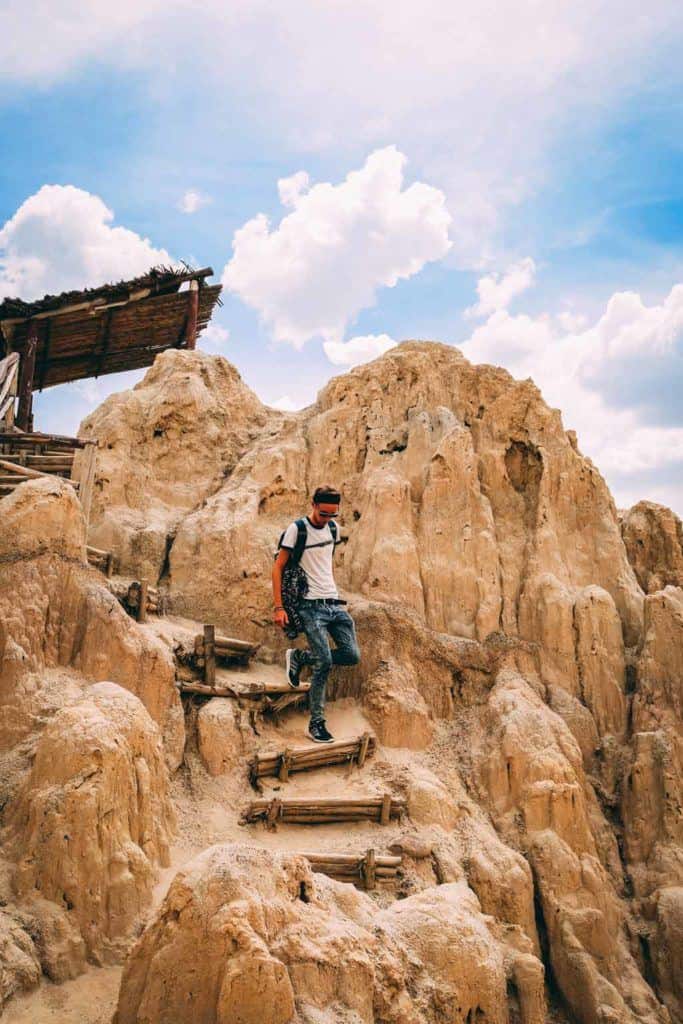
Known as the most colonial street in the city, taking a walk down Calle Jaen should definitely make your list of things to see in La Paz.
As La Paz was established during the Spanish conquest of the South American continent, it’s history is most clearly preserved in places like Calle Jaen.
The ancient cobblestone streets of Calle Jaen lead up through the city past colourful houses, restaurants, and bars.
Stop in any for a delicious bite to eat or cold drink and take in the sights as you watch people enjoy the neighbourhood.
Five famous museums can be found along Calle Jaen, making the street a destination in itself capable of entertaining all day.
Definitely one of the top La Paz activities for tourists!
For some of the most spectacular views of La Paz and the surrounding Cordillera Real mountains, take a ride on the Mi Teleferico cable cars to the top of the city!
The cable car system has 25 stations, making it not only great La Paz sightseeing, but also a practical way to navigate throughout the city.
Mi Teleferico is a practical way to get between La Paz and its neighbouring city of El Alto since the roads between the two are difficult to traverse.
Fares are incredibly reasonable, at approximately USD$0.50 per transit.
So whether you want to get around La Paz or simply enjoy the views, the Mi Teleferico is a great way to do some La Paz sightseeing!
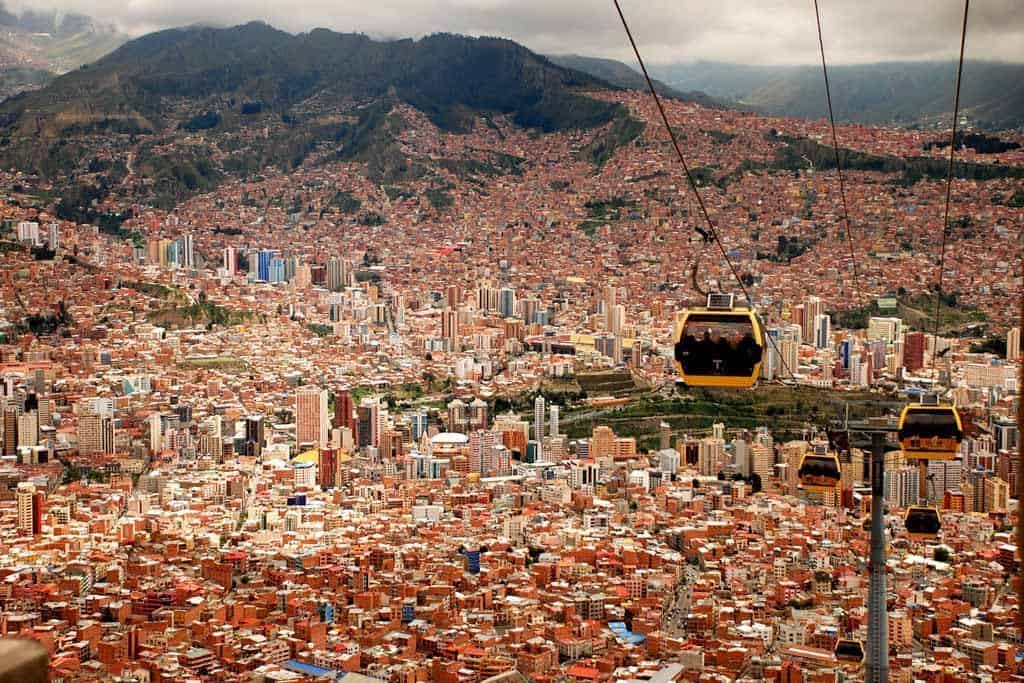
Tiwanaku is a pre-Colombian archeological area located near the famous Lake Titicaca.
Dated to be over 10,000 years old, Tiwanaku provides some insight into some of the oldest civilisations on the South American continent.
Just a two-hour drive from the centre of La Paz, Tiwanaku makes for an excellent day trip and possible stop on your way to see Lake Titicaca.
The ruins themselves are a UNESCO World Heritage Site, marking one of the larger archaeological sites of its kind in the world.
While very little of the original artifacts are completely intact, the Bolivian government has attempted to restore and recreate some of the highlights of the site.
Whether you dig archeological ruins or now, visiting Tiwanaku is among the top things to do in La Paz!
Tour guides will pick you up at most hostels/hotels in La Paz city centre and will give you a full day experience before returning you to the city.
If you are looking for an adventure activity in La Paz, consider the mountains of Illimani or Huayna to satisfy that desire.
Whether you are seeking mountains to climb or simply view from a distance, the Illimani mountain in the Cordillera Real offers the best of both worlds.
Approximately 3 hours south of La Paz, the drive/ride to Illimani in itself is quite incredible. Most hostels and hotels in La Paz will help book tours as it is not advisable to go by yourself.
If you are not prepared to hike and/or climb the rugged mountains you will want to make sure you are part of a group that is only travelling as spectators.
If you are into technical mountain climbing and trekking then sign on with a reputable guide and make sure you have the right equipment.
Likewise, the Huayani Potosi mountain, an hour and a half to the north of the city, is a great summit for those with beginners to intermediate climbing experience.
Proper equipment provided by skilled guides will make this summit worth the trip in itself.
But if you just want to get out of the city on a day trip and simply enjoy the mountain views it won’t get much better than these two mountains!
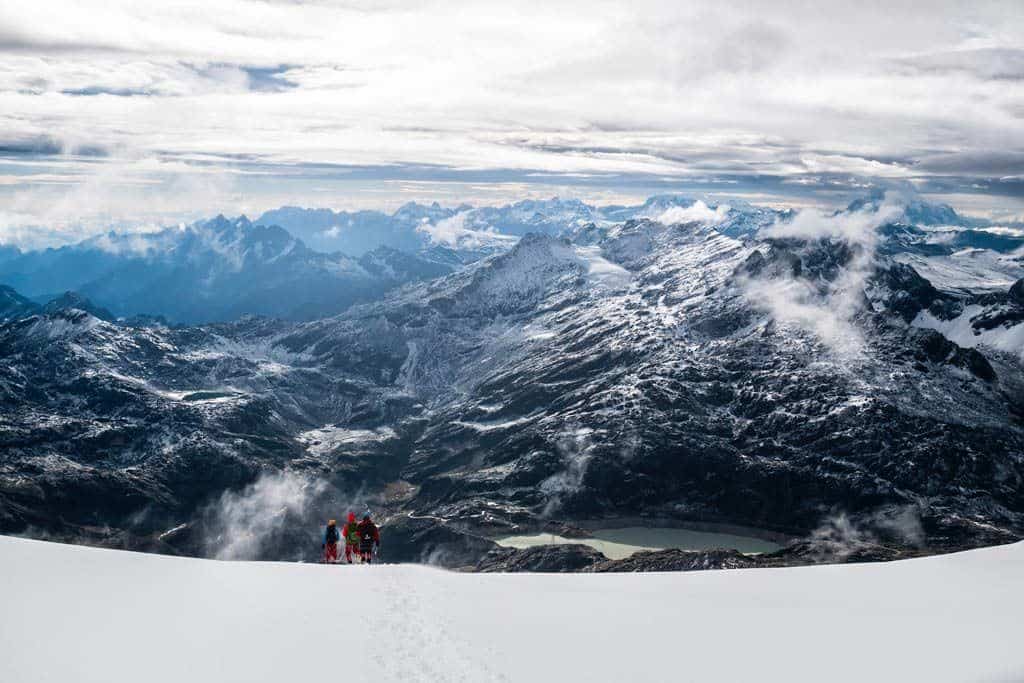
The Basilica of San Francisco, or the Church of San Francisco, is one of the top things to see in La Paz, Bolivia.
Named after its founder, it is located at the centre of the city on the edge of the Plaza San Francisco.
One of the more recognisable architectural features of La Paz, the Church of San Francisco was first built during the latter part of the 1500s.
Along with much of the colonial city, parts of the church have dilapidated and restored various times throughout history.
Parts of the church are available and free to the public. However, because the church continues to fulfill its spiritual purpose, much of its grounds are off-limits to the general public.
But tours of the church are available on a limited basis and will take you through the monastery, crypts and even provide you with a rooftop view of the city.
- Cost : USD$3
- Hours : Mon-Sat 4 PM – 6 PM
Known as the ‘Death Road,’ for obvious reasons, the Yungas Road is one of the most dangerous roads to traverse in the world.
The road connects La Paz to Coroico along a 69 km stretch of highway that climbs to nearly 5,000 meters through the mountains and winds its way back into the rainforest jungles.
While the road gained its reputation many years ago from its rustic and rudimentary conditions, today the road takes far fewer lives since portions are now paved and better-prepared for drivers.
You can bicycle the world-class route on your own or join up with a tour which will provide a little more safety in numbers and experience.
Depending on the time of year and road conditions, you can expect to face more or less danger as you bike along cliffs with nearly 1km drop off!
Whether you bike part or all of the Death Road, know that you are taking part in one of the top adventure activities in La Paz Bolivia and are part of only a handful of people who participate in the experience!
Oftentimes guided walking tours of major cities are not necessary. But because La Paz has so much to offer by way of culture, history and architecture you might want to sign on for a guided walking tour of La Paz so you don’t miss out!
When you join a walking tour hosted by a local guide you will gain an understanding of the city from a local perspective.
While they might be skewed toward the preferences of the guide, you are sure to gain valuable insight into the various aspects of the city.
These tours are a great way to orient yourself to the city on your first day of exploring.
Learn about the places you may want to return later on your own or see the key highlights of the city if you have a limited amount of time in La Paz.
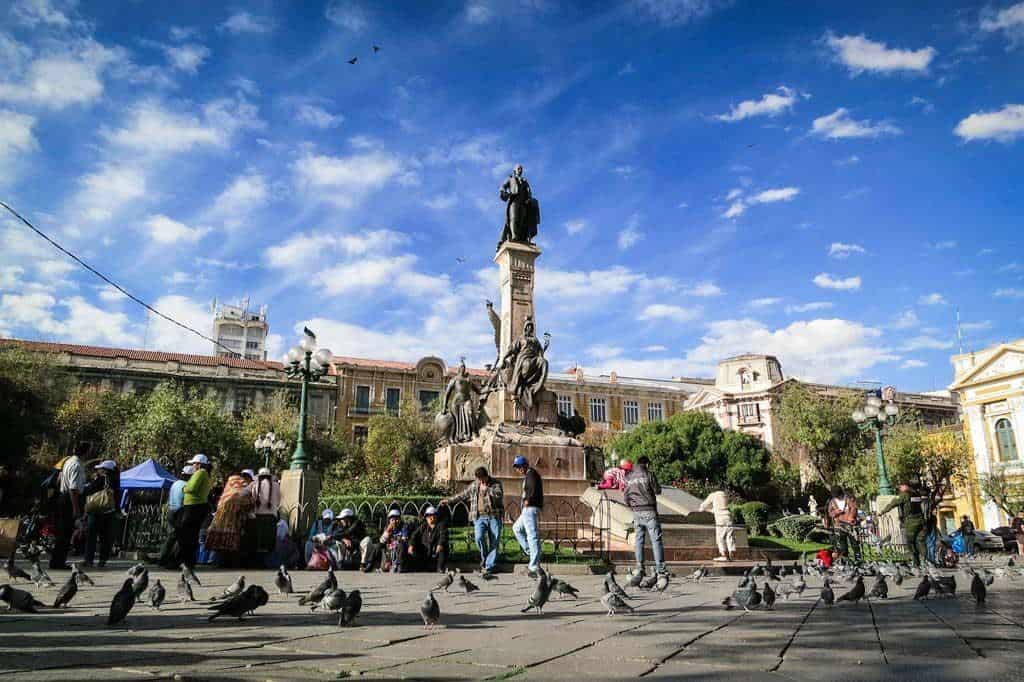
In case you haven’t figured out by now, La Paz is a beautiful city with some remarkable views both of the city and of it’s surrounding mountains.
One of the better places to see both the city and the snow-capped Illimani mountains is from Parque Mirador Laikakota.
To reach this park, you will have the opportunity to experience a cable car ride from the city centre to the top of the hill.
Alternatively, you can walk through scenic neighbourhoods to reach the same summit.
However, if you are not acclimated to higher elevations then you might have difficulty with this walk.
At Parque Mirador Laikakota you can enjoy the views while also having access to delightful snacks and ice cream from one of the local vendors.
If you are travelling with children this is a great spot to let the kids play on the playground and in the children’s museum.
But beware, if you do not like children then this might not be the place for you! Check out the views from Mirador Killi Killi instead!
- Cost : USD$0.50
Although Lake Titicaca is only a few hours from La Paz , most travellers will want to spend more than one day exploring the famous lake.
Located nearly 4,000 meters in elevation, Lake Titicaca is known to be the world’s largest lake at high elevations.
It is the South American continent’s largest lake by volume and total area and plays host to rich history over time.
While you can explore the lake from any number of towns in either the Bolivian or Peruvian side of the border, a more popular place to start your adventure is Copacabana.
The lake is known for more than just its size and status. Among the ancient history and cultural sites in the area, there are also two main islands that attract many visitors each year.
The first is Isla del Sol, or Island of the Sun. A rugged and steep island, Isla del Sol boasts dozens of ancient ruins and is said to be at the epicentre of the Inca civilization.
The Isla del Sol is best visited from Copacabana.
The second set of islands are the Uru Islands or “floating islands,” which are man-made islands composed of a buoyant reed.
The Uro people fled the Amazonian region of the country and settled on Lake Titicaca on these floating islands because they were unable to secure land of their own without violent conflict with other tribes.
To this day Uro people still live on approximately 60 floating islands, which are mostly open to tourists throughout the year. To reach these islands you will likely have to enter into Peru and visit by way of Puno.
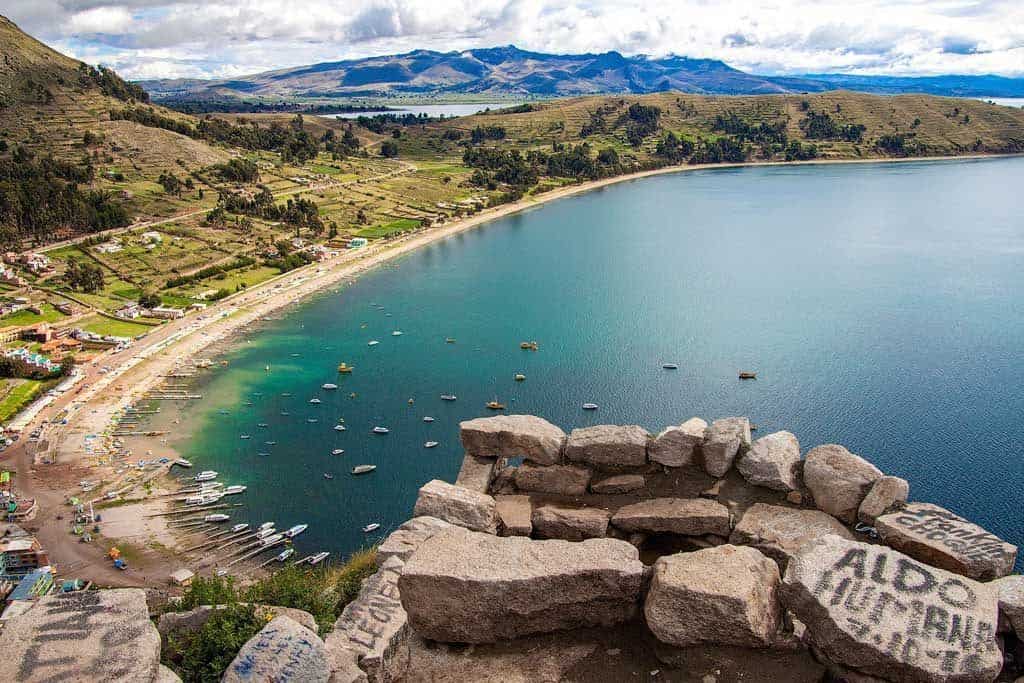
La Paz Travel Guide
To help you make the most of your trip, here’s our La Paz travel guide with all the best places to stay and eat in the city.
Best Accommodation – Where to Stay in La Paz, Bolivia
While Bolivia in itself is known for being quite a low cost, you can find a variety of accommodations within your budget. As one of the continents larger cities, La Paz is a mixture of budget and luxury accommodations.
If you’re looking for a friendly hostel in the city centre, you can’t go wrong with the Wild Rover Hostel.
Irish-owned, the English-speaking local staff will make you feel at home in La Paz as they share their Irish Hospitality.
The hostel offers a full breakfast, lunch and dinner menu with an authentic Irish bar.
Plan to be social and enjoy making friends as the hostel also offers regular events and comfortable common areas.
With shared rooms starting around USD$9, you will get a lot of value out of your time at Wild Rover Hostel.
Enjoy on-demand hot showers (typically a luxury in Bolivia!), complimentary WiFi, lockers in each room and plenty of people to offer advice on what to do in La Paz.
Colibri Camping and Eco Lodge is located a short distance from La Paz city center but it is well worth your time if you are looking for a nice place to relax as a couple.
A highlight of the lodge includes views of the river, garden and mountains – all of which can be viewed from a relaxing hammock or hot tub.
If you need to remain connected, WiFi is accessible throughout the property.
Bed linens and towels are provided for your use and you can opt for continental breakfast or prepare your own meals in the fully-equipped kitchen.
Relax during the evenings and plan excursions to the nearby attractions, such as hiking, horseback riding and mountain biking. Or use the Lodge as a jumping-off point to visit the Valley of the Moon, just 15 minutes away.
The Hotel Rosario, located in central La Paz, provides quick access to all of the attractions that the city has to offer.
As a former Colonial home, the hotel boasts architecture and decorations that make you feel like you are uniquely in the heart of Bolivia.
All rooms come with a private bathroom, television and a safe. You can also access WiFi throughout the hotel.
Enjoy snacks and meals throughout the day or settle down for dinner and drinks at the Tambo Restaurant inside the hotel.
Known for its kind and helpful staff, you will be pleased you booked your stay at the Hotel Rosario as you can arrange to do pretty much any activity from the hotel.
The Casa Grande Suites offers an exceptional accommodation experience when staying near La Paz’s city centre.
Each room has a private bathroom, flatscreen television, complimentary coffee and tea and WiFi. As a guest, you also have access to a steam room, sauna, massages and fitness centre to help you relax.
Ask for rooms with either the mountain view or city view to enhance your stay at the hotel. Enjoy complimentary breakfast and even prepare food yourself with a kitchenette available in most rooms.
Concierge service and 24-hour security will make you feel safe and comfortable during your stay at the Casa Grande Suites.
Book travel and tourist attractions from the front desk, exchange currencies or deposit valuables while you enjoy the many activities in La Paz.
Best Restaurants in La Paz, Bolivia
As a major South American city, La Paz is full of restaurants specializing in all sorts of international delicacies.
But as the heart of Bolivia, the city also boasts several great restaurants that highlight the traditional Bolivian meal.
These are a few of our favourites!
Centrally located in La Paz, Popular Cocina Boliviana offers a wide range of modern Bolivian cuisine that won’t break the bank.
A great value for a lunchtime meal, be sure to arrive as close to noon as possible as the restaurant is very popular!
El Vagon del Sur specializes in delicious traditional Bolivian meals while offering the best of local South American cuisines as well.
Expect a full course of food to fill you up for lunch or dinner!
Celebrating local Bolivian ingredients, Ali Pacha is among the best experience in fine dining La Paz has to offer.
With a reputation for its wine to accompany both vegetarian and non-vegetarian meals, you can’t go wrong in reserving a table here!
Chris Harvey
Hi, We’re Alesha and Jarryd!

We’ve been traveling the world together since 2008, searching for the planet’s best destinations and adventures.
Love Travel?
Sign up for our free weekly newsletter for the best travel tips, ideas and deals!
We respect your privacy. Unsubscribe at any time.
READ MORE...
The Ultimate Backpacking in Bolivia Guide
Related posts, leave a comment cancel reply.
Save my name, email, and website in this browser for the next time I comment.

La Paz, Bolivia: Ultimate Traveler’s Guide [2024]
Thoroughly off the beaten path and still overlooked by many travelers headed to South America, the world’s highest capital city of La Paz, Bolivia, is a delightful mix of cultures, history, gastronomy, and landscapes . After visiting almost all the major cities in Latin America , I have to say that La Paz is one that was a pleasant surprise.
Grab your hiking boots: in this ultimate traveler’s guide to La Paz, Bolivia, we share the very best this city has to offer, including recommendations for where to stay, things to do in La Paz , and travel tips to help make your trip unforgettable, whether you’re sticking around or headed on to the Salar de Uyuni Salt Flats .
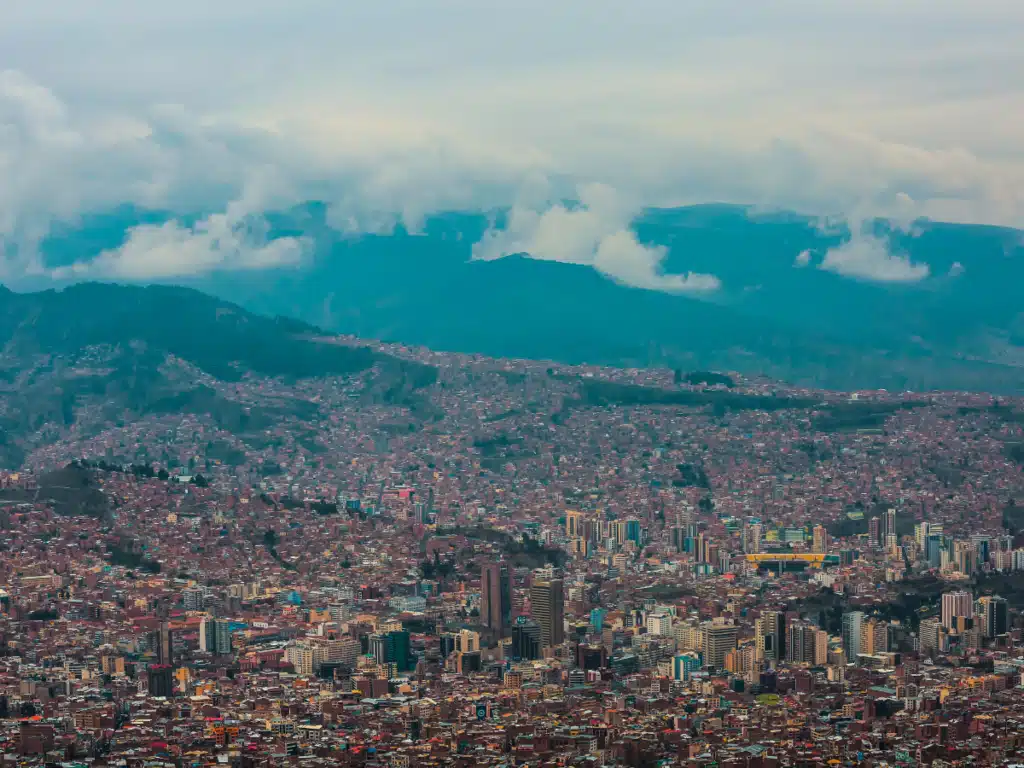
This post contains affiliate links that may reward me monetarily or otherwise when you use them to make qualifying purchases – at no cost to you. As an Amazon Associate, I earn from qualifying purchases. For more information, please read our disclosure policy .
La Paz Bolivia
Perched high in the Andes Mountains, La Paz is perhaps best known as the world’s highest capital city at 11,975 ft (3,650 m). Thoroughly off the beaten path and under the radar, La Paz isn’t widely known for much else, though this isn’t for lack of unique things to do in La Paz and destinations to visit around the city.
La Paz is a sprawling city in a stunning valley with a historic center at its heart. Crawling up the sides of the mountain are the city’s ever-expanding neighborhoods, which you can glimpse from above by riding the cable car system, an absolute must for travelers.
You’ll also spot the breathtaking snow-capped Illimani mountain towering over the city , a cherry on top of the already impressive topography of the city. If you’ve had some mountaineering experience before, you can attempt the challenging climb to the summit or head to nearby Huayna Potosi, an even more popular climb.
While tourism in Bolivia is growing, it isn’t on par with the visitor numbers that its Andean neighbors like Peru or Ecuador enjoy just yet. We think this is all the more reason to visit La Paz sooner rather than later. You’ll enjoy stunning landscapes, unique cultural experiences, and bucket list destinations, all with minimal other travelers there to alter the experience.
Backpacking in La Paz
La Paz is quite popular on backpacking routes in South America , as many backpackers appreciate how incredibly affordable the city can be and how much it has to offer. You’ll find countless hostels and affordable hotels in La Paz perfect for backpackers, and be surprised by how far your travel dollar will get you here.
Stick to neighborhoods like Sopocachi or el Centro if you’re traveling as a backpacker – you’ll find affordable backpacker accommodations here, great food, and plenty of things to do.
Luxury Travel in La Paz
If you’re looking for luxury, consider staying in Zona Sur where you’ll find beautiful design hotels like MET Hotel (our recommendation for the best hotel in the city). Though about 30 minutes by taxi from the bustling historic center , this area has posh restaurants and hotels and is much quieter than the northern part of the city.
Even luxury travel is relatively affordable in La Paz, with the nicest hotels in the city rarely costing more than $200 a night. If you’re looking for a place to travel in a bit more luxury than you might normally consider, La Paz might be the perfect place.
Plan a Trip to Bolivia
- 24+ Best Things To Do in La Paz, Bolivia
- Ultimate Travel Guide: Salar de Uyuni Salt Flats
- Best Tours of the Salar de Uyuni Salt Flats
Is La Paz Bolivia Worth Visiting?
La Paz, Bolivia, is certainly well worth visiting! While it isn’t a major tourist destination, the city has a lot to offer and is among the best cities in Latin America for travelers . From charming historic architecture and beautiful mountain views to inspiring ways for cultural connection and countless opportunities for great day trips , La Paz is well worth an addition to your itinerary.
How Many Days Do You Need in La Paz?
Travelers generally need at least two days to enjoy La Paz and see the city’s major attractions. If you’re looking to include a day trip outside of La Paz on your itinerary, choose to spend three days in La Paz!
With this in mind, it’s important to factor in how altitude might affect you during the days you’ve set aside for La Paz in your itinerary. If you’re arriving in La Paz from much lower altitudes, I’d recommend giving yourself an additional day to adjust.
While most travelers will feel slightly more out of breath when walking or hiking, if you don’t know how you’ll react to the altitude, it may be best to budget an extra day.
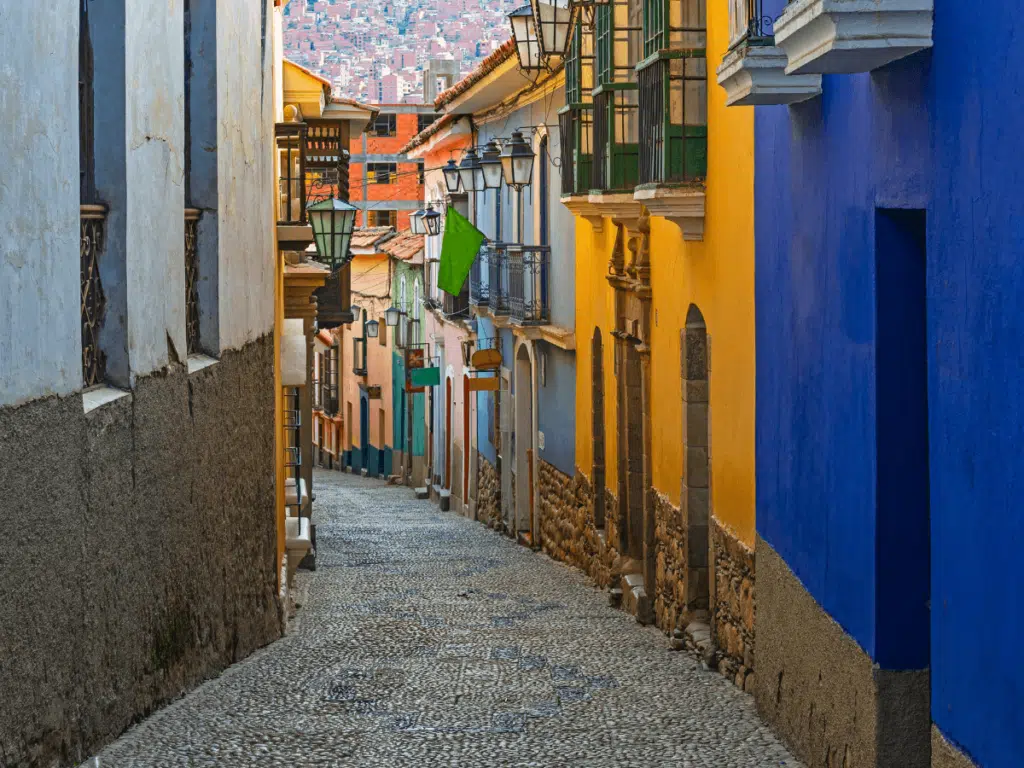
Things To Do in La Paz, Bolivia
From cultural events and festivals to historic streets, churches, and palaces, there is plenty to see and do in La Paz. We were so impressed to find such a variety of activities and attractions here, especially for a city that is still such a hidden gem.
These are the best things to do in La Paz, including the very best that you can’t miss. Make sure you check out our ultimate guide to the best things to do in La Paz before planning your entire trip – there’s so much more than we can include here!
1. Visit the Witches Market
One of the most unique destinations in La Paz is certainly the Witches Market, El Mercado de las Brujas y La Hechiceria . This market in central La Paz is run by traditional healers and sells everything from statues and medicinal herbs to desiccated frogs and llama fetuses, thought to bring good luck if buried in the foundation of a building.
It’s certainly a unique destination, best visited with a local guide to help you make sense of what you see. Red Cap offers extremely affordable (just 3 USD!) walking tours of the market and the historic center of the city, which are a great choice for travelers on any budget.
Read More: 7 Unmissable Markets in Latin America
2. Take in a Cholita Wrestling Match
You may have heard of Lucha Libre, but what about Cholita wrestling ? This incredibly unique and unforgettable wrestling match is a favorite for visitors to La Paz, featuring indigenous women wrestling in a ring all while wearing their colorful traditional skirts.
Tickets are affordable , and you’re bound to have a great time watching these ladies battle it out in the ring. Events can garner hundreds or even thousands of spectators and help support the wrestlers and their families economically in the process.

3. Ride the Cable Car
La Paz is a city with spectacular views from every corner, but none can beat the views from the city’s famous cable car, known as the world’s highest and longest cable car system. You can ride the cable cars on your own or book a cable car “tour” with a guide who will help you navigate the city’s most popular lines and learn about the neighborhoods and destinations along the way.
4. Explore the Historic Center
A visit to La Paz wouldn’t be complete without checking out the city’s historic center, including Plaza Murillo at the center with its lovely Baroque architecture. The central historic heart of La Paz isn’t too huge, so it can easily be explored in just a few hours of wandering.
Make sure to visit Iglesia San Francisco , open in the afternoon on weekdays and in the morning on the weekends. Don’t miss the opportunity to visit the rooftop of the church for some stunning views!
Read More: 24+ Best Things To Do in La Paz, Bolivia
5. Take in the View at Killi Killi
Situated just above central La Paz, the viewpoint at Killi Killi is one of the best spots to take in a view of La Paz. From the towering buildings of the financial sector to historic plazas and the surrounding mountains, you’ll really be able to see everything from this scenic hilltop.
You can walk to the viewpoint, though with La Paz’s elevation, taking an inexpensive taxi from the historic center might be your best bet.
- Death Road, Bolivia Guide: Biking Excursion from La Paz
- Salar de Uyuni: Ultimate Salt Flats Travel Guide
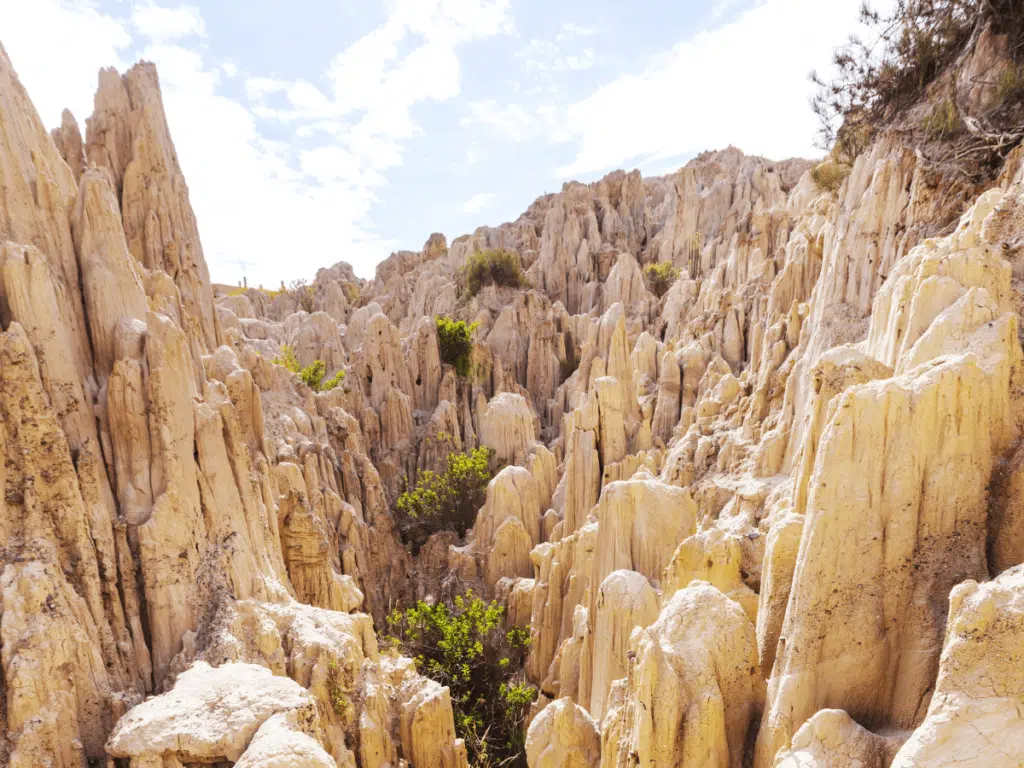
Day Trips From La Paz Bolivia
Valle de la luna (valley of the moon).
Located just a few kilometers outside of La Paz, the unique scenery and easy drive to the Valley of the Moon make it one of the most popular day trips from La Paz. With its impressive white limestone chimney formations created by centuries of erosion, the landscape is so other-worldly that it is said that Neil Armstrong himself drew the comparison to the moon.
The Valley of the Moon had a few hiking trails to choose from , all relatively easy and leading to distinct viewpoints over the unique rock formations. The best is to the Devil’s Point viewpoint, though fitting in several is easy even within a short visit.
The Valley of the Moon is so close to La Paz that you can easily travel here by booking an affordable group trip or by organizing your own transportation.
The Death Road
If you’re feeling adventurous, consider choosing to bike down the Death Road on your day trip from La Paz! Small group excursions from La Paz to the world-famous Death Road are actually extremely popular, and guided tours are very well done.
Death Road biking excursions include a practice session before actually getting on the Death Road and stops for photos, water, and snacks, as well as a van following along in case you’re winded or would prefer to ride along. It’s an unexpectedly fun excursion and not as terrifying as you might think.
Read More: Death Road, Bolivia: Ultimate Travel Guide From La Paz
Best Death Road Bike Tours
- From La Paz: Mountain Biking Experience on Bolivia’s Death Road
- From La Paz: Death Road Biking: Small Group or Private Excursion
Lake Titicaca
Just about three hours northwest of La Paz is the world-famous Lake Titicaca, known as the world’s highest navigable lake and the birthplace of the Incan Empire. Home to the unique “floating islands” called uros made of reeds, Lake Titicaca is both visually stunning and a fascinating place to learn about Bolivia’s history and heritage.
While a visit to Lake Titicaca can be completed in just a day, you’ll enjoy the area much more if you can spend at least a night here. You’ll be able to see much more of the lake and surrounding ancient ruins, learn more about the lake’s unique floating islands, and not have to do so much traveling in one day.
Read More: Lake Titicaca: Ultimate Travelers Guide From Bolivia and Peru
Salar de Uyuni Salt Flats
Hoping for a day trip from La Paz to the world-famous Bolivia Salt Flats ? Sorry – the Salar de Uyuni Salt Flats are just too far for a day trip. Traveling from La Paz to the small town of Uyuni on the edge of the Salt Flats takes about 11-12 hours on an overnight bus or a 2.5-hour flight.
You’ll have to spend at least one night in Uyuni, though the longer you have to explore this incredible area of Bolivia, the better. Check out our extensive guides to visiting the Salar de Uyuni Salt Flats:
- Ultimate Guide to Bolivia’s Salar de Uyuni Salt Flats
- The Best Salar de Uyuni Salt Flats Tours
- How to Visit Laguna Colorada, Bolivia

Where To Stay in La Paz Bolivia
- Wild Rover ($)
Wild Rover is located in the heart of La Paz’s historic center, steps away from everything you would want to do in the city. Choose from dorm rooms or privates, and look forward to enjoying the on-site restaurant and bar, plus terraces and a game room. Keep in mind that is known as a party hostel , so if you’re not into this type of stay, you might consider looking elsewhere, though rooms are removed from noisier areas.
Reviews and Bookings: Wild Rover
- Selina La Paz ($ – $$)
Selina La Paz might be known as a hostel, but don’t let that fool you! With an array of beautiful and affordable private rooms as well as comfortable dorm rooms , Selina has something for budget travelers of all kinds. A coworking space, movie room, wellness area, and countless activities to help travelers connect with each other and the city make it a favorite place to stay in La Paz.
Reviews and Bookings: Selina La Paz
- Hotel Rosario ($ – $$)
Hotel Rosario has long been a favorite place to stay in the historic center of La Paz. Set in a traditional colonial-style building, the hotel has charm, and rooms are comfortable if a bit basic. Service is excellent, and the hotel offers many great amenities and a delicious included breakfast.
While the area surrounding the hotel is a bit chaotic, you’ll find the hotel a relaxing respite from the city and appreciate just how close you are to all the attractions .
Reviews and Bookings: Hotel Rosario

- MET Hotel ($$)
There are very few true luxury hotels anywhere in the country. However, a few beautiful examples of places to stay in La Paz have cropped up recently – with MET Hotel being the most impressive of them all.
This gorgeous boutique hotel has it all – stunning views from its expansive rooftop, a beautiful, light-filled spa and pool, and gorgeous, comfortable rooms. The best part? A stay at MET Hotel costs just a fraction of what a similarly luxurious stay would cost anywhere else. Rooms usually cost less than $150 a night, even during the peak high season of travel.
Reviews and Bookings: MET Hotel
Stannum Boutique Hotel and Spa ($$)
The modern, streamlined Stannum Boutique Hotel and Spa is located in the heart of the desirable Sopocachi neighborhood and is an excellent choice for a comfortable stay in La Paz. Large rooms have stunning city views, and the hotel has plenty of amenities, including a fitness center, full spa, and excellent on-site dining with friendly service.
Reviews and Bookings: Stannum Boutique Hotel and Spa
- ATIX Hotel ($$)
Located in the heart of La Paz’s upscale Zona Sur, ATIX Hotel is one of the nicest hotels in La Paz, featured in Travel + Leisure’s “It List” of the best new hotels in the world when it opened in 2017. This lovely design hotel has a delicious on-site restaurant, a gorgeous atrium with mountain and city views from the pool, and comfortable rooms.
Reviews and Bookings: ATIX Hotel
- Laguna Colorada: Traveler’s Guide to Bolivia’s Red Lake
- What to Pack for the Salar de Uyuni Salt Flats
- Lake Titicaca: Ultimate Traveler’s Guide from Bolivia and Peru
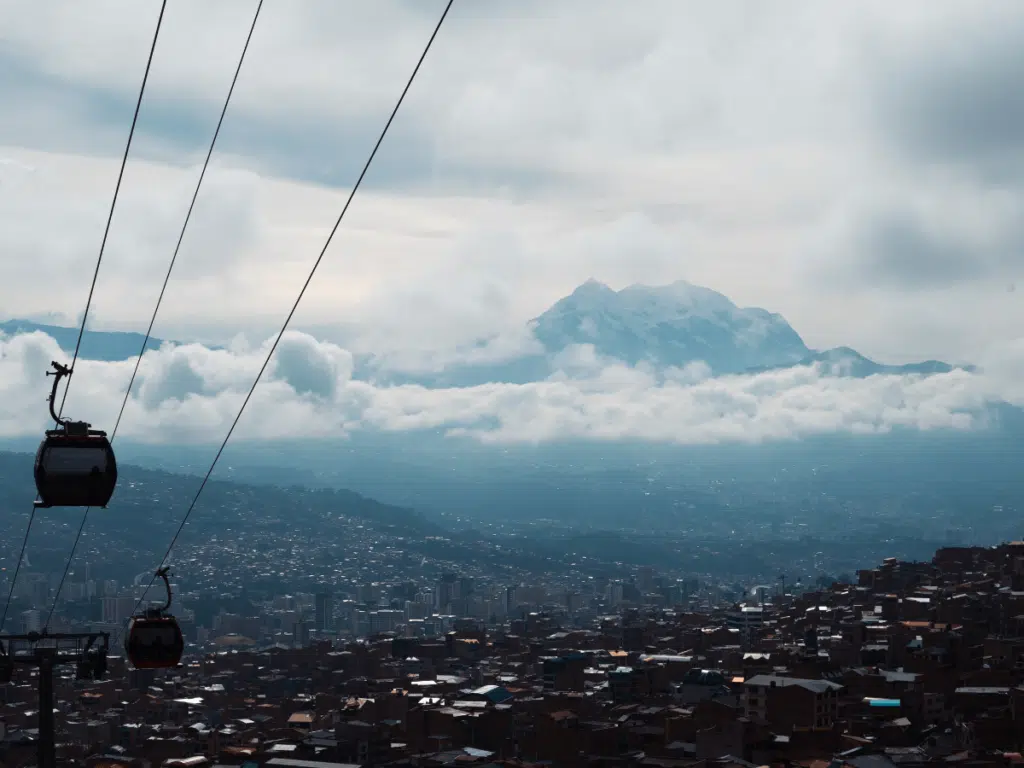
Where To Eat in La Paz, Bolivia
Widely considered one of the best restaurants in South America, the award-winning Gustu is a must for fine dining in La Paz. Head chef Marsia Taha has a policy of only using the freshest local ingredients, making her menu a love story to Bolivian cuisine and ingredients you’ll find nowhere else.
Located in the heart of the Sopocachi neighborhood, Mi Chola is contemporary Bolivian cuisine at its best. The shockingly affordable tasting menu (less than $15 for four courses !) is a treat and a great way to learn more about Bolivia’s unique flavors and culinary traditions.
Cafe Vida is a vegetarian paradise that even carnivores will love. With giant portions of healthy favorites like salads with every topping under the sun, smoothie bowls, homemade sweets, burritos, and more , this cozy cafe is an easy favorite.
Mercado Lanza
For inexpensive, plentiful servings of truly local Bolivian classics, you can’t go wrong with eating at the food stalls at Mercado Lanza in the heart of La Paz’s historic center. This giant covered market has three stories filled with vendors selling fresh and prepared foods (and just about everything else you can think of).
Best Places To Stay in La Paz, Bolivia
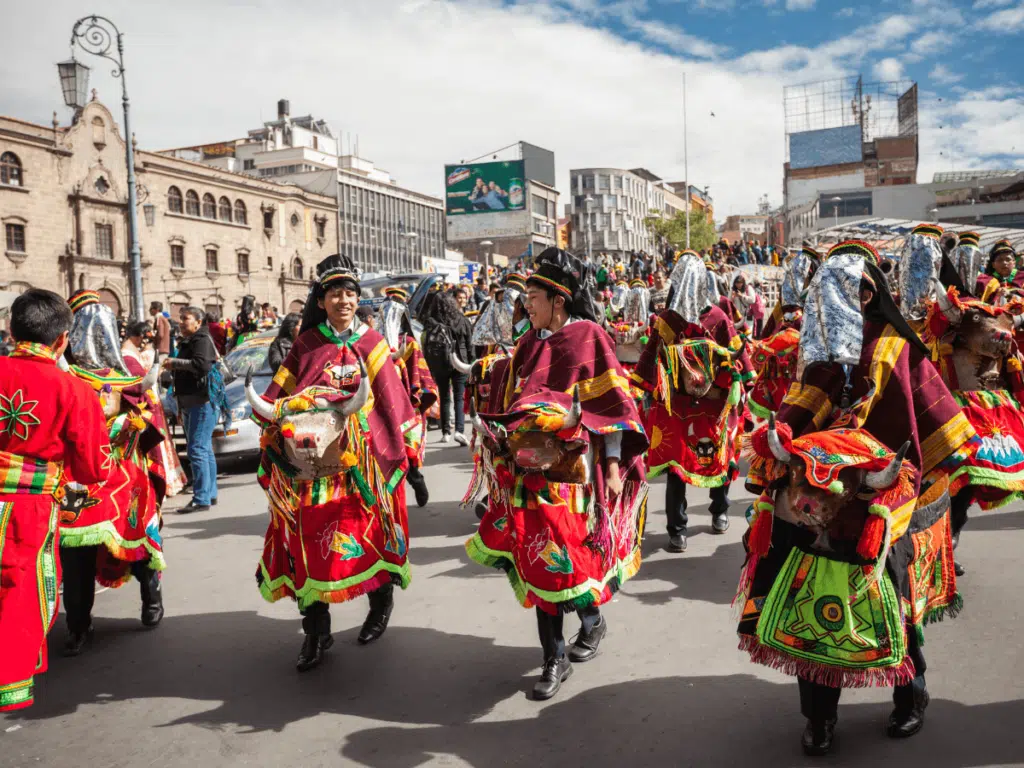
La Paz Travel Tips
1. take altitude seriously.
Even if you’re young and fit, the altitude in La Paz is likely some of the highest you will have ever experienced, which can affect you in surprising ways. It’s quite common to feel lightheaded, tired, and a bit out of breath when walking or exerting yourself for the first few days when you arrive.
Plan your itinerary accordingly : don’t plan a major hike right after you step off the plane, for example. Give yourself at least a day or two!
You’ll also want to make sure to drink plenty of water, avoid coffee and alcohol, and get lots of sleep to help you get adjusted. Make sure to drink tea made from coca leaves, an ancient Bolivian remedy for altitude sickness, or bring along some supplements designed to help altitude acclimatization .
2. Learn About Bolivia’s Indigenous Populations
Home to 36 unique people groups, Bolivia is defined by its indigenous populations and their languages, cultures, and histories. Taking some time to learn about Bolivia’s indigenous peoples isn’t just a unique thing to do – it’s crucial to understanding Bolivia.
Almost half of Bolivia’s population ( 41% as of the 2012 census ) identifies as indigenous, and you’re certain to hear indigenous languages like Quechua and Aymara no matter where you travel in Bolivia. You’ll also want to visit La Paz’s Mercado de las Brujas and La Hechiceria (Witches Market) to learn about indigenous traditions or consider a food tour with a local guide .
- 17 Most Famous Landmarks in South America
- 16 Best Cities in South America for Travelers
- 5 Best Countries in South America to Visit (On a Budget!)
3. A Little Spanish Goes a Long Way
Don’t underestimate how far just a little Spanish will get you! English is not commonly spoken in La Paz and is even spoken less than you might expect in the tourism sector , so learning just a few key phrases will be a lifesaver. Check out our beginner’s guide to Spanish for travelers for a few pointers!
4. Practice Travel Safety
La Paz can get a bad rap for being unsafe, but the city actually has lower crime rates than many others that are probably already on your South American travel itinerary . However, wherever you travel, it’s important to practice travel safety to keep yourself and your belongings safe.
For example, carry your backpack or purse in front of you while using public transport or in crowded areas like markets. Use an s-biner micro lock to clip your backpack or purse zippers closed. Keep your cell phone or camera secured in your bag, and only take it out when you’re using it. These are just a few easy ways to stay safe while traveling.
Read More: Ranked: 10 Safest Countries in South America

Carley Rojas Avila
Carley Rojas Avila is a bilingual New York-based travel writer, editor, content marketer, and the founder of the digital travel publications Explorers Away and Home to Havana. Carley is an expert on all things Latin America, the Caribbean, and Cuba, having lived and worked in four different countries in the region. Her writing has appeared on the Associated Press wires and in Travel + Leisure, Yahoo, MSN, Euronews, The Weather Channel, and more. When she's not writing about her travels, find her front row at a Bad Bunny concert, befriending street cats, and taste-testing every pizza in Havana.

- Work With Me
- SEO Services
- All Destinations
- Philippines
- Timor-Leste
- United Arab Emirates
- Czech Republic
- Netherlands
- Switzerland
- ALL Oceania
- New Zealand
- ALL North America
- United States of America
- ALL South America
- South Africa
- Adventure Travel
- Budget Travel
- Nature Travel
- Digital Nomad Life
- Australia – Sydney
- Colombia – San Andres
- Costa Rica – Tamarindo
- Czech Republic – Prague
- England – London
- Guatemala – Antigua
- Labuan Bajo
- Nusa Penida
- Japan – Tokyo
- Puerto Escondido
- New Zealand – Queenstown
- Netherlands – Amsterdam
- Spain – Barcelona
- Thailand – Bangkok
- UAE – Dubai
- Atlanta, Georgia
- Los Angeles, California
- Miami, Florida
- Orlando, Florida
- Vietnam – Ho Chi Minh
- Plan Your Trip
- Blogging Tips
- Boost Your Traffic For Free!
27 Jaw Dropping Things To Do In La Paz, Bolivia: The All-In-One Guide
You may be wondering what to do in La Paz, Bolivia. You want to experience the country’s rich culture and natural beauty but you’re not sure where to go in La Paz or how much it’ll cost.
Well, after living in La Paz for 3 months, we’ve got a bunch of things to recommend in La Paz.
Don’t worry! I’m about to give you a quick introduction to La Paz, a city that has it all: great food and drink, the best museums in South America , beautiful scenery from the towering mountains to the vast valleys, and plenty of outdoor activities.
La Paz is a city in Bolivia, but not the capital (the capital is actually Sucre), but since La Paz houses the country’s political centre – it has administrative bodies for both executive and legislative powers, as well as the presidential residence where presidents reside to govern their land from time-to-time – it’s thus considered as Bolivia’s central hub.
“La Paz” means “Peace” in Spanish. It was founded on November 16, 1548 by Pedro de la Goleta, as Santiago de la Paz (Saint James of Peace).

The city is located in the central highlands of Bolivia , at an altitude of 3600 metres (11,800 feet) above sea level. This makes it one of the highest major cities in the world. This also means people who have trouble breathing at sea level may not be able to enjoy themselves here because they could experience altitude sickness or even altitude pulmonary edema (HAPE).
That being said, if your body adjusts well then don’t let the altitude scare you away because La Paz is an amazing city to explore.
In this blog post, we’ll tell you what you can do when visiting La Paz.
At A Glance
Be Prepared For High Altitudes
Bring moisturiser, slap on plenty of sunscreen, be prepared for a culture shock, adjust the time of your watch, watch out for the weather, learn some spanish before you go, watch out for scam artists, 1. go rock climbing, 2. explore the mercado 16 de julio, 3. valley of the moon, 4. take a free walking tour, 5. go hiking, 6. the witches’ market, 7. check out the views from el alto, 8. bus to chacaltaya mountain, 9. go to cholitas wrestling in la paz, 10. take a cooking class, 11. hop on one of the cable cars, 1. visit lake titicaca and copabana, 2. take a trip to chacaltaya, 3. go to beni province in the amazon, 4. visit the salt flats of uyuni, 5. hike and climb to the top of huayna potosi, 6. visit tiwanaku.
- Ritz Apart Hotel
Pan American Hotel
Hotel sagarnaga, the adventure brew hostel, hotel presidente, selina la paz, best food in la paz, bolivia, 1. doña remedios, 2. paladar-cozinha brasileira, 4. vagón del sur, 5. vinapho san miguel, 6. açaí shop express , 7. chez tim bakery, 1. alive rockers music bar, 2. the irishman pub, 3. diesel nacional, 4. gold classics, 5. malegria bar & discoteca, 6. the english pub, rainy season, by cable car, things to know before visiting la paz, bolivia.

La Paz is a beautiful city, and it’s no wonder that it’s becoming a popular tourist destination. If you’re planning on visiting soon, here are some tips to know before you go!
La Paz is located at 3600 metres (11,800 feet) above sea level. Many visitors experience altitude sickness in the city, so be sure to take it easy and drink plenty of water. Altitude sickness pills are a great alternative and are sold in many places, so if you can’t find them in your town, you can get them when you get to La Paz.
We recommend acclimatising first before going hiking or any tour. Also, always check the altitude of the place you’re going; you could end up easily being more than 5000 metres up!
The negative effects of altitude can include acute mountain sickness (AMS), which typically occurs above 2,400 meters, but may affect people unaccustomed to even moderate altitudes at much lower elevations.
The symptoms of mild AMS include breathlessness and a fast heart rate, with or without headaches and nausea.
Here it gets very dry, especially at night, so make sure to pack some moisturiser.
If not, you’ll be able to pick some up when you arrive, since there are many pharmacies where you can buy moisturisers in Bolivia.
Due to how close we are to the atmosphere, the sun is intense in La Paz. You’ll want to protect your skin conservatively. Make sure to do all the sun protection necessary, like a hat, sunscreen and sunglasses.
Wear sunscreen that’s SPF 50 or higher and sunglasses. The sun here is incredibly strong, and you’ll want to protect your skin from the harsh rays whenever you can.
Bolivia is a very different place than many other countries in South America, so be prepared for a culture shock. Things that you might take for granted at home may not be as common here.
La Paz is a little more expensive than the rest of Bolivia. If you’re on a budget, try doing some research and find out how much things cost before coming.
Bolivian Time may be a little different from the time back home, so make sure to adjust your watch and phone before travelling over here. Don’t forget that it’s an hour more than back home during the summertime.
If you come in winter, it’s two hours less! Great for when all the clocks go back and you can have an extra hour in bed.
La Paz’s climate is quite temperate, but it can get chilly at night. Make sure to pack both warm clothes and light outfits so you’re prepared no matter what time of day.
Also, be prepared for rain in the rainy season , which happens mostly between December and February, during summertime. La Paz is known to experience heavy rainfall, so make sure you pack a waterproof jacket and boots if you’re travelling during the rainy season.
La Paz (or the whole of Bolivia rather) is a predominantly Spanish-speaking city, so it’s a good idea to learn a few key phrases before you go. You can find dictionaries and phrasebooks at most bookstores if you’re old-school, or you can download language learning apps on the phone to learn on the go.
The locals love speaking Spanish with a rather strong accent! Be prepared to repeat yourself many times until you can make yourself understood.
Just like many other cities around the world, La Paz has its fair share of scam artists who prey on tourists.
It’s always important to be careful when walking through busy areas by yourself at night, but some thieves are savvier than others! We’ve heard cases of phones being stolen by passing motorcycles while passengers are using their phones in a cab with the window down.
Particularly, stay safe and keep your belongings close especially if you head to El Alto.
Things To Do in La Paz, Bolivia
So now that we have covered some important information about this amazing city, let’s discuss some things you can do while in La Paz.
La Paz is known as one of the best places to stay for backpackers and those on a budget because it’s not only very affordable, it also has plenty of hostels, guesthouses, and hotels that can fit your travel needs.
For solo travellers, I highly recommend staying in the Sopocachi or San Francisco neighbourhoods as they’re filled with restaurants, cafes, and bars – perfect for meeting people.
You’ll never be bored in La Paz because there are always new things to do! Here are some of the most popular activities in La Paz:

The city of La Paz has hundreds of outdoor sports and traditional climbing routes right in the heart of downtown.
In neighbourhoods like Aranjuez on either side of Avenida Hernan Siles Zuazo, there are tons of walking trails with rock climbing routes, as well as easy access to some great mountaineering views.
You can talk to Dennise, local mountaineering and rock climbing guide, at El Muro Climbing Gym or contact her on this number: +591 7729 4590
Dennise is a great rock climber that has her own bouldering gym. She can guide you, give you recommendations and even sell you rock climbing equipment for a good price in case you fall in love with this great sport.
Mercado 16 de Julio is the largest and most famous market in the city. It’s also the most visited tourist attraction in La Paz, with over 50 years of history. If you love thrift shopping, you’d be remiss to miss this one out.
At first glance, it can seem overwhelming with the many streets that they occupy, but it’s definitely worth exploring every nook and cranny.
You can find anything here, from fresh fruits and vegetables to souvenirs and traditional Bolivian crafts. The items sold here are super cheap and there are plenty of backpacker staples to choose from.
Take a few hours of on a trip to the Valley of the Moon (Valle de la Luna) and wander around the eerie rock formations that have been carved out by wind and water over time. It’s pretty spectacular seeing the formations that were formed solely by nature.
Entrance is Bs 30/ USD 4.35.
It’s a 30-minute bus ride from the centre, once you get to Parque La Florida you can grab a collectivo or minibuses that pass by that road, it’s only one road down so you won’t get lost, everyone knows about “Valle De La Luna”
There are a few companies that offer free walking tours in La Paz, with tours in both English and Spanish. Here you’ll learn as a group about the history, culture and politics of La Paz from a local who’s passionate about their city.
They usually take about 2 hours and then you can visit some of the famous sites afterwards on your own, like Plaza Murillo, Government Palace (Casa de Gobierno), San Francisco Church, and the Witches Market.
In the end, you can give a voluntary tip depending on how much you liked it.
If you prefer a more private tour, you can book a private City Tour of La Paz so you can have your tour customized to your liking.

If you’re up for a more challenging hike, head over to the Cordillera Real and get ready for some of the most stunning views in the world.
There are a lot of hiking trails all around the city. The most popular is called Choro Trail which starts in Parque Urbano and takes you to the top of a hill with amazing views.
You can also check out Cerro Calvario which is in Sopocachi, or take a hike up Chacaltaya which is in the south of El Alto.
For a REAL adventure, do what we did – a 3-day ice climbing trek up Huayna Potosí Mountain . More on that below under Day Trips From La Paz!
Visit the infamous Witches’ Market (Mercado de Brujas) where you can buy all sorts of potions (real ones!), herbs and dried llama fetuses (to ward off bad luck – yes it’s a thing!).
It’s a colourful neighbourhood to explore even if you’re not shopping for wizardry. There are also numerous restaurants and cafes in this area.

The cable car runs from the city centre to El Alto, where you can enjoy amazing views of La Paz and snow-covered peaks.
The most popular spot is El Alto, an indigenous town with a bustling market and hilltop views of La Paz. There’s also a viewpoint in the south of El Alto called vista which is a great place to hang out and eat some street food.
For a bird’s-eye view of La Paz and the surrounding area, take a bus to Chacaltaya Mountain. The ride is about 1.5 hours long, after which you can hike up to the observatory, where there are telescopes for checking out the view.
If you want to get closer still while enjoying a good workout, you can also hike to the summit of Chacaltaya (which used to be the world’s highest ski resort).

You need to head to El Alto, better ask around what day of the week they have the show, but the last time I went was on Sunday, so hop on that cable car, the show usually starts at 5 pm and ends at 7 pm, they offer transport back to Centro La Paz, and better grab it because it’s a little dangerous to walk at night here.
La Paz is a gastronomic city with delicious fresh food from all over the world. You can find European- and Asian-influenced dishes as well as traditional Bolivian food. The city is filled with tons of great restaurants, cafes and nightlife that you’ll never get tired of.
To get a bird’s eye view of the food cuisine in La Paz, consider taking a food tour .
If you want to learn how to make some of the delicious dishes that are popular in La Paz, take a cooking class! You can also take a cooking class to learn more about the local food. There are a lot of schools that offer classes, and it’s a great way to learn about the culture and meet new people.
There’s always something happening in the city, so you’ll never be bored!

This is the best free way to see La Paz from the top without paying tourist prices; all it costs is a local bus ticket (in this case, a cable car ticket)!
Day Trips From La Paz, Bolivia
La Paz is a beautiful and bustling city in the Andes Mountains of Bolivia. The Andes Mountains is a place in the world where adventure and relaxation collide. It’s the world’s longest mountain range running for over 7,000km and covering 6 countries.
With its winding roads and towering buildings, it’s an ideal place to explore on foot or by bicycle for those looking for adventure.
That said, there are also plenty of ways to get out of town without ever having to fly! Day trips from La Paz can be as easy as picking up some snacks and heading into the wilds with a guide, or you can take advantage of organized tours that’ll take care of every detail for you.
There are also a few trips where you’ll have to take everything with you as you’ll need more days to complete. Or, you may want to spend more time in neighbouring towns because it’s beautiful and worth soaking more time in.

Did you know that Lake Titicaca is the highest navigable lake in the world AND also the largest freshwater lake in South America? Besides being a beautiful site, it’s also home to several indigenous communities like the Aymara.
Lake Titicaca is located on the border of Peru and Bolivia.
Take a leisurely boat ride on the tranquil waters and take in the sights and sounds of this natural wonder. Stay overnight on Lake Titicaca and enjoy the tranquillity. The area is starting to boom with resorts that are great for those who want a little more comfort in their trip.
Explore one of the many islands that make up Titicaca, such as Isla del Sol, where we stayed for a night. Here you can also visit some of the ancient ruins that are scattered around the lake!
At over 5181 metres (17,000 feet), it’s the world’s highest ski resort (if you’re feeling brave enough to try it out!). You can still see remnants of the ski lift by taking a cable car to its peak.
While you’re up there, take in some spectacular views of La Paz and try out a traditional chorizo alpino before descending. If you don’t have your own transport, there are plenty of tour operators who can take you to Chacaltaya and back in a day.
With so many mountains and valleys, the possibilities for hiking are great and is just about an hour and a half by taxi from La Paz.
There are more than 20 different indigenous groups living in the Amazon and many of the communities are open to visitors. You can choose to stay with a family or in a communal lodge.
The location is in the province of Beni, about a five-hour bus ride from La Paz. This is one of the few opportunities to see how these ancient cultures still survive in the 21st century.

This is one of the most popular attractions in Bolivia, but it’s still off the beaten track and you’re likely to have the place to yourself.
There are several tour agencies who can take you there ranging from luxury to budget (by going on a sleeper bus), but it’s well worth hiring a driver to ensure that you get the most out of the trip. We went with Hola Bolivia Travel , which is a group tour that arranges everything from your sleeper bus to the hotel and food during the tour.
There are various ways to visit the salt flats near the village of Uyuni, including a hike through amazing landscapes and staying overnight in a Salt Hotel . If you’re short on time, there are also day trips available.

Hike the mountains and see what’s on offer for you. You’ll be blown away by how many beautiful viewpoints there are in this city, so take your time exploring!
If you’re feeling adventurous, climb to the top of Huayna Potosi. At 6,088 metres (20,000 feet), it’s one of the most popular climbs in South America.
We decided to embark on this challenge on my 28th birthday. Our 3D2N trek included ice climbing and the final ascent which was snow-covered so it was pretty technical snow trekking.
I can straight up say it’s not for the faint-hearted. Not only do you have to cover a lot of ground, the altitude also plays a major part. Being stripped bare in the vastness of nature definitely is one of the most humbling experiences. Big kudos to our trek guide who’s almost 60 yet is fit as a fiddle and took really good care of us!
This is an ancient archaeological site located just a few kilometres from La Paz.
You can explore the ancient ruins and see the impressive carved stone monoliths that scientists say are the work of a lost civilization.
There are also some excellent museums in the area that will give you more insight into the Tiwanaku people.
There are plenty of great day trips from La Paz, so whether you’re looking for an adventure or a more relaxing experience, there’s something for everyone. Don’t miss out on these amazing opportunities to see some of the most beautiful parts of Bolivia!
It’s a great idea to hire a driver, so you can focus on enjoying your trip and not worrying about getting lost. There are many tour agencies that offer plenty of options for visiting the salt flats near Uyuníi village or taking a day trip to Chacaltaya mountain.
Where To Stay In La Paz Bolivia
If you’re looking for a hotel in La Paz, Bolivia and want to know what the best hotels are at different price ranges, then this article is perfect for you.
We’ve collected some highly recommended hotels available that will suit your needs whether it’s solo travel or travelling with family members or friends. We’ve classified them in 6 different price ranges – budget, mid-range, and luxury – for solo travellers, families, and couples.
Do note that prices may vary with the time and the season of the year.
Best Luxury Hotel in La Paz, Bolivia
Ritz apart hotel .
The Ritz Apart Hotel is a luxurious option, perfect for those looking to pamper themselves while in La Paz. The hotel offers a range of apartments, from 1-bedroom to 3-bedroom options. All apartments come with a kitchenette and living area, as well as luxury amenities such as a Jacuzzi.
Price starts at USD 120 per night for 2 people in a 2-bedroom apartment. There are many different options and prices to choose from.
Best Mid-Range Hotel in La Paz, Bolivia
The Pan American Hotel is a great option for those looking for something a little more luxurious than the budget hotels in La Paz. It’s located in a quiet area of the city, but close to all major attractions. The hotel has a range of rooms available, from singles and doubles to family rooms and suites.
Price starts at USD 60 per night for 2 people in a double room.
Best Budget Hotel in La Paz, Bolivia
The Hotel Sagarnaga Street offers a central location at an affordable price. It’s located right on the main street in La Paz, making it easy to get around. The hotel has a range of room types available, from singles to family rooms, so you can find the right option for you.
The price is only USD 15 per night for two people.
Best Family Hotel in La Paz, Bolivia
If you’re looking for an affordable option that can accommodate the whole family, The Adventure Brew Hostel is a great choice. It offers dorm-style accommodation as well as private rooms and has a range of activities on offer to keep the kids entertained.
Price starts at USD 20 per night for a family room with 4 beds. The price varies on time of the year and room.
Best Hotel in La Paz, Bolivia For Couples
The Hotel Presidente is an excellent option for couples, with sleek modern rooms and stylish decor. The hotel has a central location in the city centre, and the staff are extremely helpful. All rooms come with a private bath, WIFI, and breakfast is included in the price.
Price starts at USD 99 per night for 2 people.
Best Hotel in La Paz, Bolivia For Solo Travellers
If you’re looking for a hostel in La Paz, Selina is rated as one of the best. It’s located on Plaza del Sol, making it a great place to stay if you want to be in the heart of the action. Selina has both dorms and private rooms, as well as a bar and restaurant on site.
The price starts at USD 11 per night for 2 people.
The one thing that unites all these hotels is their great location. Whether you’re looking for a luxurious hotel, an affordable hostel, or something in between – there’s bound to be the perfect place for you right here.
We hope this article has helped narrow down your search and given some insight into what different price ranges entail!
There are plenty of restaurants to choose from in La Paz. The food is a mix of indigenous and Spanish cuisine, so you can expect to find dishes with ingredients like llama meat, potatoes, and chilli peppers.
Some local specialities include ch’arki (a type of dried and cured beef), silpancho (a dish made with chicken or beef, served with a fried egg on top), and picante de cuy (a dish made with roasted guinea pig).
What locals really like to eat, though, is caldo de quinua (a soup made with quinoa and vegetables). Other soups they enjoy are llapia (a soup made with sheep tripe) and chochoca (a thick corn soup).
If you’re looking for something sweet, try a torta (a type of cake made with flour, sugar, and eggs) or a piece of pan de yuca (a type of bread made with cassava flour and cheese).
No matter what you choose to eat in La Paz, you’re sure to enjoy the unique flavours of Bolivian cuisine. Be sure to come hungry and ready to explore!
Best Places to Eat In La Paz, Bolivia

Acai Food In La Paz, Bolivia
The best places to eat in La Paz are found all around the city. Bolivia also has great gastronomy that you have to try. From traditional food to international cuisine and everything in between, there’s something for everyone.
Remember that exploring places is a great idea too, so just go with some spare time and wander around!
For those looking for a taste of home, try these restaurants:
La Paz is home to some of Bolivia’s most famous dishes, and Doña Remedios serves up a well-known Laaspiz dish – chicharrón . The pork cubed with spices like pepper, cumin salt garlic braised in beer before being crisped on top at high heat so that it can be both juicy and dry inside when cooked just right!
It tastes good regardless if you’re feeling hungover or not after having several glasses during your bender last night because this comfort food will do wonders for alleviating those symptoms too.
I’m personally hooked after trying fricassé made from meats such as beef short rib tips served over potato puree topped off by burned red chilli.
When you and your friends want to have a night out, why not try something different? Head on down the street at Paladar Cozinha Brasileira for some Brazilian food.
The portions are huge so it’s easy enough that everyone can sample all of your favourite dishes! If there are any leftovers (which will probably happen), just take them home with you.
The last time a Scandinavian chef opened an unexpected restaurant in La Paz, it was Claus Meyer. He and his team from Noma were determined to create something special for this new venture but they didn’t know what exactly, until locals told them about their love of local cuisine!
The result? A stunningly beautiful space with locally-inspired dishes like trout prepared using spices grown right here, and meats sourced exclusively from the Lambari Indigenous Community members who’ve been raising cattle since before the Spanish came.
With its attention to ingredients and desire for spice, El Vagon del Sur cooks up traditional hearty Bolivian fare that will keep you coming back again!
From beef dishes coupled with fresh vegetables all cooked in abundance spices like a chilli pepper or garlic to locally sourced seafood; they offer everything your appetite desires.
If you’re looking for some delicious southeast Asian cuisine, head on over to Sopocachi. The Vinapho crew has been bringing fresh and flavourful dishes from Vietnam or Thailand since they opened their doors!
The rich Thai green curries in colours so vivid it might make your mouth water just seeing them; enjoy them with an attentive wait staff serving all things tasty.
However, if you’re a native Asian (like me) and have tasted real Vietnamese pho, keep your expectations low. The taste isn’t an exact replica, but this is as close as it gets in La Paz!
After looking and looking for Acai, I found this wonderful place which is the one in the picture above #BestAcaiInTown, they import the Acai directly from Brazil, and it tastes incredible, you pay a fair price by weight.
They have a banquet of fruits, chocolates, seeds, sauces, brownies, cookies and anything you might want to add to your Acai, remember you pay by weight so go crazy about it.
In case you wanted a good French bakery, I think from my 3 months being in La Paz, their Almond Croissant was the best one.
Definitely worth it if you pass by Achumani.
So there you have it – some of the best places to eat in La Paz! Whether you’re looking for traditional Bolivian cuisine or something a little more international, there’s sure to be something to suit your taste. Bon appetit!
Top Nightlife Spots In La Paz, Bolivia
The capital of Bolivia, La Paz is a beautiful city that has an amazing nightlife.
Everybody loves dancing and there’s no better place than in South America! The drinks are cheap, the people are friendly, and the music’s always pumping.
Whether you’re looking for a place to salsa dance until the sun comes up or party all night long at some of La Paz’s best clubs, we’ve got you covered.
Here’s the lowdown on some cool spots to check out when you want to get your dance on!
Are you a Metalhead bored of the same old pubs and clubs? La Paz has a new hotspot for live music lovers, the Alive Rockers Music Bar! This trendy spot features an impressive lineup of local and international rock bands, so you can enjoy a night out with some real tunes.
With its cool atmosphere and great drinks deals, the Alive Rockers Music Bar is the perfect place to let your hair down. Come check it out, you won’t be disappointed!
Looking for a taste of the old country? Look no further than The Irishman Pub in La Paz, Bolivia. This authentic Irish pub is the perfect place to enjoy a pint of Guinness and some hearty Irish cuisine. The atmosphere is warm and inviting, and the staff are friendly and knowledgeable about all things Irish.
Whether you’re looking for a place to watch the game or just want to relax with friends, The Irishman Pub is sure to please. So come on in and enjoy a pint (or two) of the best that Ireland has to offer!
Diesel is a must-see for any bar enthusiast. With its creative, Steampunk interior and whimsical decor that has largely been recycled from old trains or planes, this venue will charm you with every step inside.
The candlelit atmosphere makes it even more enjoyable as guests enjoy their cocktails by the quirky candle lights while eyeing up all of Diesel’s beautiful collection on offer.
Opens early and closes early, they also close on weekends close so check their opening hours before you visit.
As the name suggests, this club only plays the classics. The nights start out with 60s classic rock and then it progresses on to the 80s dance hits, just as the alcohol really starts to kick in.
If you’re looking for something more vintage, then you have to come here.
Come to La Paz and enjoy the best of both worlds – a taste from traditional Bolivia met with modern trends.
Saya Afroboliviana is live every Thursday at Malegria Bar-Disco where you can dance all night long under bright lights or relax on comfortable sofas while listening some great beats!
The best thing about this place is how friendly and relaxed everything feels. You’ll never know who you’re going to end up sitting next to, but everyone has a great time talking to each other while they enjoy their drinks or some delicious food.
The live sports specials make it an even better venue for anyone who loves watching football (or another sport) together as well – there’s nothing like cheering on your team from the comfort of this great Pub.
So, there you have it! Some great places to check out when you’re in La Paz and want to get your dance on. We hope you enjoy these spots and have a blast dancing the night away.
So, what’re you waiting for? Get out there and explore La Paz’s nightlife! You won’t regret it. Just be prepared to party all night long!
Weather in La Paz, Bolivia

The weather in La Paz is paradise. It’s never very cold or too hot and the rain falls softly most of the time, except for the rainy season. The temperature can vary from a low of 11°C to a high of 22°C in the day, but beware of the night as it can be as low as -0°C throughout the year.
The only thing you need to worry about is what to wear when it rains; because if it’s sunny, people will be walking around with t-shirts on. As soon as it starts raining, everyone has some kind of plastic coat or rain jacket they put on.
So, if you’re looking for a place to escape the cold winters or hot summers, La Paz is the perfect place for you.
The rainy season is from the month of October to the month of May. During this time it rains for days at a time. The temperature is usually around 14°C and the night gets very cold.
It rains for around 4 months out of the year, but it’s not constant rain and there are periods of time where it does not rain at all, like when we were there in September/ October.
The dry season is from the month of June until September. During this time the temperature is usually around 20°C.
The humidity is not too high; in fact, your skin gets pretty dry, which makes it pleasant to be outside, but remember to moisturise.
The best time to travel to La Paz is considered to be during the dry season. The temperature is nice, but it’s sunny and you have less chance of rain.
But really, any time of the year is a good time to go, it just depends on what you’re looking for.
How To Get To La Paz, Bolivia
The El Alto International Airport (LPB) is where all international flights arrive and depart from so if you’re arriving from outside Bolivia , this is where you’ll land.
The airport is around a 40-minute drive from the centre of La Paz. To get there, you can either take a taxi, bus or rent a car.
The best way to get to La Paz from the airport is by taking a shared mini-bus (called an AMPLIACION) because it stops right outside of all the main hotels in El Prado, which is centrally located and makes everything easy to access. The cost for this is Bs. 12-20 / USD 2-2.90 and the journey usually takes around 30-45 minutes depending on the traffic.
If you prefer to take a taxi, which is the fastest way, they’re always available outside of the airport and the cost should be around Bs. 60-70 / USD 8.5-10.
They’ll usually try to charge a bit more especially if you don’t speak Spanish. It depends on how far you are going but it shouldn’t be more than Bs. 70-100 / USD 10-15 to your place.
Renting a car is also an option and there are many companies at the airport that offer this service. The cost is around Bs. 350-400 / USD 50-58 and it will take about 30 minutes to get to La Paz. Just be sure to drive with caution as the roads in Bolivia can be quite dangerous.
Getting Around La Paz, Bolivia

Trying to get around La Paz can be a bit of a nightmare. While the city is developing, it still has some work to do. The roads are bad, the drivers are terrible and there’s a lot of traffic! But there are many ways, so choose that you can choose the most adequate for your case.
Also called “micros”, they’re small, colourful vans that can seat up to 12 people.
They can be quite crowded but they do go all over the city and are also cheap. They cost around Bs. 2/ USD 0.30.
Depending on what part you’re staying in, there are different bus companies like Pumakatari which only charges Bs. 2/USD 0.30 per ride.
There’s the main bus terminal close to the centre of La Paz, from where you can take any of the buses going to different parts of Bolivia. If you’re planning day trips or going to any city from La Paz, this is the place. Of course, the prices vary from Bs. 5 to 150/ USD 1 to 20 depending on the length of your ride.
The easiest way to get around is by taxi but it’s also the most expensive.
Be careful when getting into a taxi as there are quite a few scams going on. Taxi drivers in La Paz are notorious for trying to overcharge tourists, so it’s always best to agree on a price before getting in or make sure the driver turns the meter on. The good thing is they’re not expensive (except from the Airport), and they’re readily available all over the city.
Cable cars are a form of public transport in La Paz, and my favourite one, as a way of connecting towns in higher ground. As a city built on hills, if it isn’t for these cable cars, transportation would be so complicated! Going rounds and waiting in the traffic.
This is the best free way to see La Paz from the top without paying tourist prices; all it costs is a local bus ticket (in this case, a cable car ticket)! You can get your card for little money and if you hop on consecutive cable cars you get a discount!
La Paz is a great place to visit if you’re looking for an adventure. The city has many winding and steep roads that can be difficult to navigate, but the fun of getting lost makes it worth it. Hope this helps and enjoy your time in La Paz and Bolivia!
Pin this for later:

La Paz is an amazing city with so much to offer. As the most populous city in Bolivia, it’s no wonder La Paz is becoming a popular tourist destination.
This may be your first time visiting this spectacular country or you may be an old pro who has visited before and are looking for new ideas to keep things fresh with all of your friends. Whether you want a great meal, some nighttime entertainment or one of the many day trips from La Paz Bolivia, this post has it all! We hope our list will help make your visit as seamless and enjoyable as possible.
Either way, La Paz is a fascinating and rewarding city to visit, and with these tips in mind, you’re sure to have an amazing time! If you have any questions about things to do in La Paz or how best to enjoy its beautiful surroundings, let us know !
Hi! I'm Isabel, a full-time traveller and digital nomad from Singapore. In the past 10 years, I've lived in New Zealand , Japan , Kauai Hawaii , Mexico , Costa Rica and Bali . Pulling from my own world travel adventures and blogging lessons, I share my tried and tested tips, so that I can get YOU to work LESS and play MORE!

Previous Post Visiting Lake Titicaca In Bolivia: All You Need To Know
Next post climbing kilimanjaro in tanzania; all you need to know.
Comments are closed.
- Destinations
- Privacy Policy
- Skyrocket Your Site Traffic!
Join the newsletter and get exclusive travel tips, giveaways and more!
There are times to stay put, and what you want will come to you. And there are times to go out into the world and find such a thing for yourself. – Lemony Snicket
© 2024 Bel Around The World. All Rights Reserved. Website design by Hello Pomelo .

25 Unusual & Unmissable Things To Do In La Paz, Bolivia
By Author Sarah Ketchum
Posted on Last updated: 6th October 2023
La Paz, the Bolivian de-facto capital, is both chaotic, high-altitude city and a hot-bed of fascinating new tourist activities – all of which reflect the face of modern Bolivia.
The uniqueness, beauty, and energy of La Paz is evident from the city as your plane descends into El Alto International airport: an urban sprawl wedged between the snow-capped peaks of the Andes.
While many travelers view this city simply as a transit point, there are plenty of things to see and do in La Paz.
Consider adding several days into your Bolivia itinerary to spend in this exceptional place – and use this jam-packed list of the 25 finest tourist attractions to get you started!
Click to navigate this article:
1. Play a round at the highest golf course in the world
Bolivia is home to the La Paz Golf Club which, at 3,342 m (almost 11,000 ft.) above sea level is the highest grassy golf course in the world! If you’re an avid golfer, you won’t want to miss out on the opportunity to play 18 holes at this one-of-a-kind course.
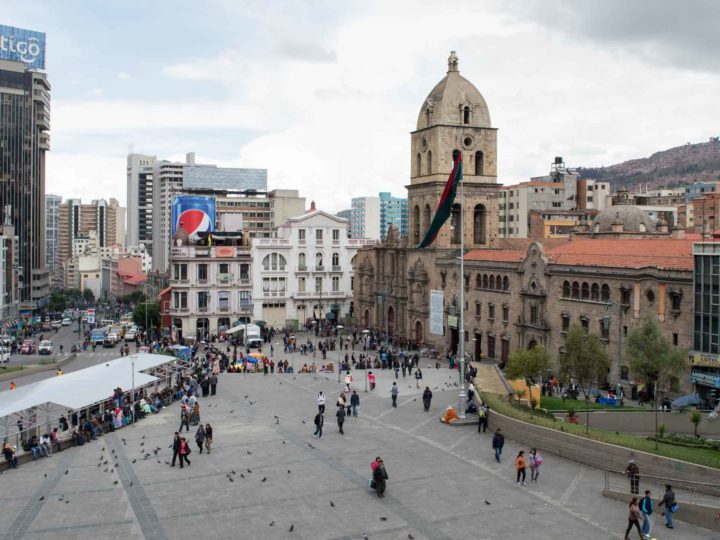
Weekday rates for tourists are 400 BOB (almost $60 USD) while weekend and holiday rates go up to 560 BOB (about $83 USD) and you will need to book your tee time in advance.
2. Go Shopping in Calle Sagarnaga
Sagarnaga is the main tourist heart of the La Paz, and this street is home to hundreds of shops, restaurants, hostels, and tour agencies.
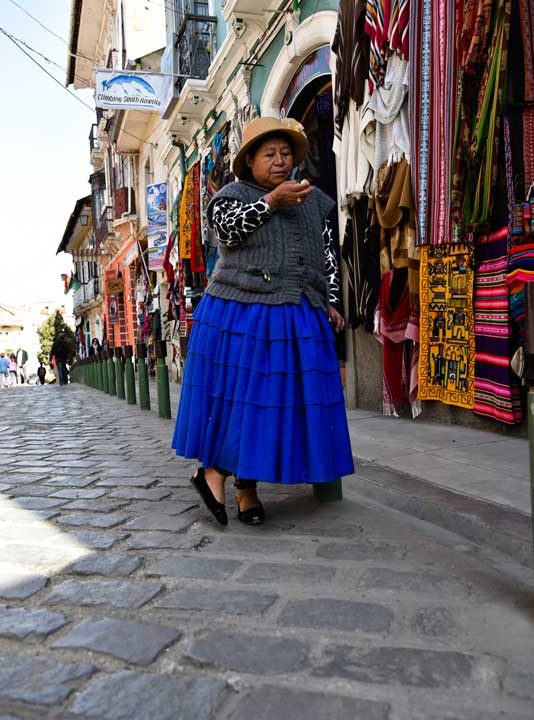
While I wouldn’t recommend spending all of your time here, it’s definitely a good, safe area for accommodations, restaurants, and most importantly, souvenir shopping.
If you’ve been searching for a warm alpaca sweater or anything made of the colorful aguayo fabric (the bright, patterned material used by many in Bolivia to carry belongings and babies) this is your place to find it!
Take a break from a tough afternoon’s shopping and stop by Café del Mundo for a coffee or meal. This cozy café is bright and cheery, and the food is delicious!
3. Ride the teleféricos
La Paz’s location, in a valley surrounded by towering mountains, led to it having one of the world’s coolest public transportation systems: the teleférico !
These colorful cable cars span the city, providing efficient, traffic-free transportation to residents – and a unique tourist attraction for visitors.
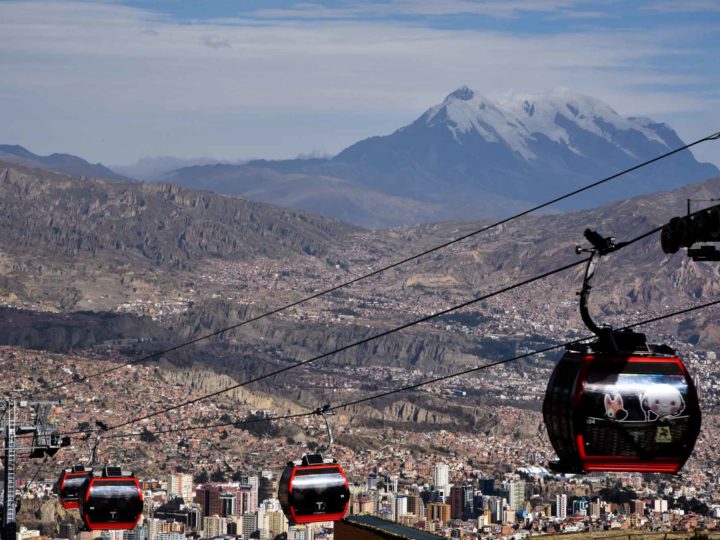
To ride and appreciate the whole city from a bird’s eye view, visit a teleférico station and purchase either a re-chargeable card or a single-use ticket.
Each ride costs 3 BOB (about $0.43 USD), and you have to pay every time you change lines. With a wide range of routes – and new routes being constructed all the time – you can now see the entire city in a couple hours.
For the best views of the surrounding mountains, take the red line all the way to the top and check out the view of Illimani (the largest, double-peaked mountain to the right), Huayna Potosi (the triangular shaped mountain to the left), and the rest of the Cordillera Real.
4. Go rock climbing
If you enjoy rock climbing, La Paz has hundreds of outdoor sport and traditional climbing routes right in the city.
Near the Amor de Dios and Aranjuez neighborhoods in the Zona Sur, on either side of the Avenida Hernan Siles Zuazo, there are tons of walking trails and climbing routes.
To get there, head to the Iglesia Amor de Dios (across the river from the Parque Bartolina Sisa).

The La Paz rock climbing clubs meet at the park next to this church and there are several easy-to-access sport climbing routes right there. If you don’t mind a bit of a trek, take the path up the mountain to find hundreds more routes off the Sendero de los Aguilas trail.
*Note: This is for experienced rock climbers only as you will need to bring your own gear and climb on your own – there are no guides or tours here! The local climbers, however, are very friendly and always happy to see other enthusiasts out on the rocks.
5. Enjoy tea time at Los Qñapes
Bolivians eat very late dinners (most restaurants will not open until 7 pm, and won’t be full until 8 or 9pm), so taking afternoon tea is a very common practice and a quintessential Bolivian experience.
Many cafés open around 3 pm, and are full of people enjoying a light snack and conversation around 4 or 5. In my opinion, the best place in the city to enjoy tea time is Los Qñapes .
This café, located in the Montenegro area of the Zona Sur, specializes in creating Bolivian favorites using Bolivian ingredients. If you want to try sonzo (a sweet yucca and cheese pastry), masaco (mashed plantains mixed with charque , or jerky), empanadas (meat pastry), or humintas (corn cakes) this is definitely the place to do so!
But their speciality, as the name suggests, is cuñapes, a cheesy pastry made of gluten-free yucca dough.
The owner is a warm host who speaks four languages, so you can fully enjoy the experience even if you don’t speak Spanish. Get the 4Q combo paired with a rich hot chocolate. – it’s delicious!
6. Glamp at Colibri Camping
On the outskirts of the metropolitan area in a neighborhood called Jupapina is an awesome ecolodge called Colibri Camping . This family-run business offers a warm welcome, clean facilities, gorgeous views, and safe, peaceful accommodations.
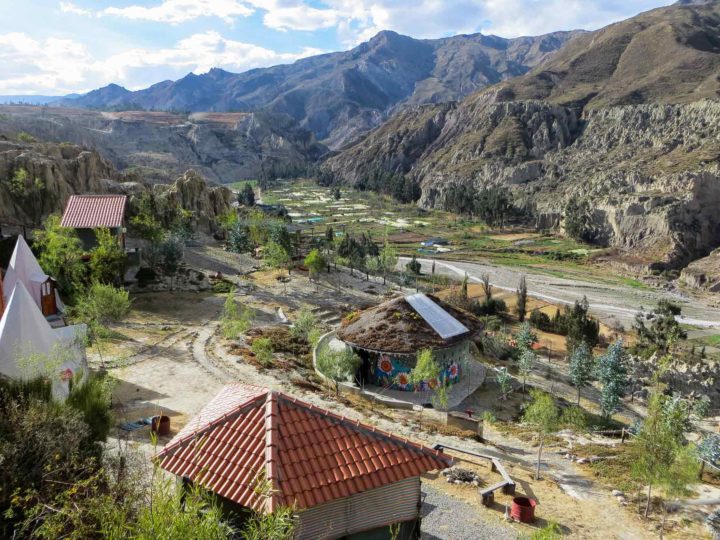
There are camp sites if you want to pitch your own tent, or adorable tipis and lodges for those who want give glamping a try.
The owners are a bilingual couple from the UK and Bolivia, so if you’re looking for suggestions for sightseeing or volunteering in the area, they are a great source of local information.
7. Hike to the Muela del Diablo
One of the most iconic rock formations in La Paz is the Muela del Diablo, or “Devil’s Tooth.” If you’re looking for an energetic La Paz day trip, hiking up to the Muela is a great option.
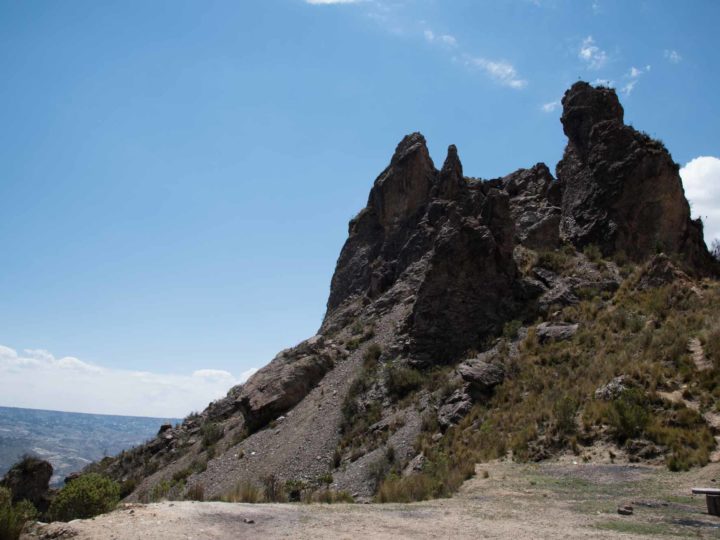
This hike is not very long (about 2 hours up), but it is quite strenuous as you trek uphill to an ending altitude of 3,825 m (or 12,549 ft.). Pack a picnic (and plenty of water!) to enjoy at the top. Once you arrive, the views of the city and valley are amazing!
To get there ask a taxi to drop you off at the Cementerio El Pedregal, from where you need to start hiking, and head up the mountain road. If you want to see the Muela and the views, but aren’t so keen on hiking, you can always ask a taxi to drive you all or part of the way up the mountain to cut down your walking time.
If it is rainy season, many taxis will not want to drive all the way up the mountain, as the roads become treacherous, but during the dry season, for a price, many taxi drivers will take you to the top.
8. Enjoy a glass of wine and tapas at Hallwright’s
Bolivia might not exactly be known for its vino, but Hallwright’s bucks that trend. This great little wine bar in the Sopocachi neighborhood has a selection of wine from Bolivia, but also many bottles to try from all over South America.
Their charcuterie boards and small plates are also very tasty and it’s a very relaxing evening activity in La Paz.
9. Catch a futbol match
The Hernando Siles stadium in La Paz is a great place to watch a soccer game. The two most popular local teams, The Strongest and Bolivar, have quite a rivalry, and if you happen to be in town when they play against one another in an “ El Clasico” match, don’t miss out on getting tickets.
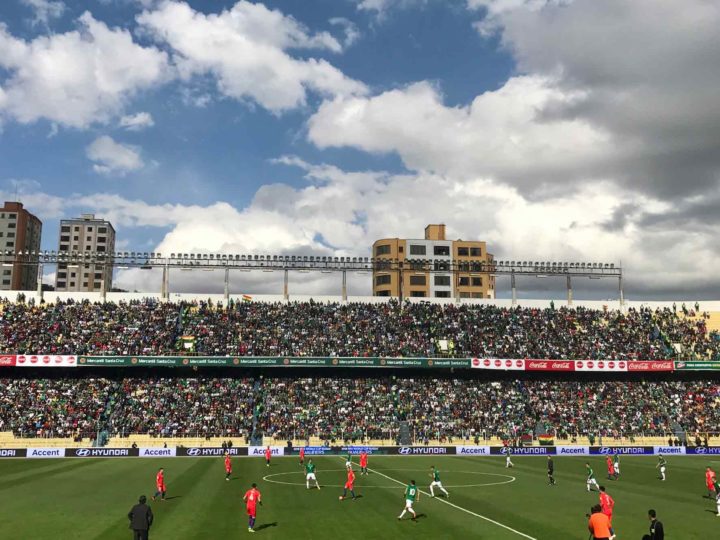
The loud cheers and energy in the stadium are contagious and tickets are very fairly priced (usually between 50-150 BOB, or less than $25 USD, depending on your section).
The Bolivian national team also plays in La Paz, so you might be lucky and catch an international game with some big names. We were able to see the Brazil and Argentina play in La Paz before the Word Cup!
10. Wander down Calle Jaén
Calle Jaén is the most well-preserved colonial street in the city, dating back to the 1700s, and it makes for a lovely place to stroll and take photos of its cobblestones and colorful buildings.
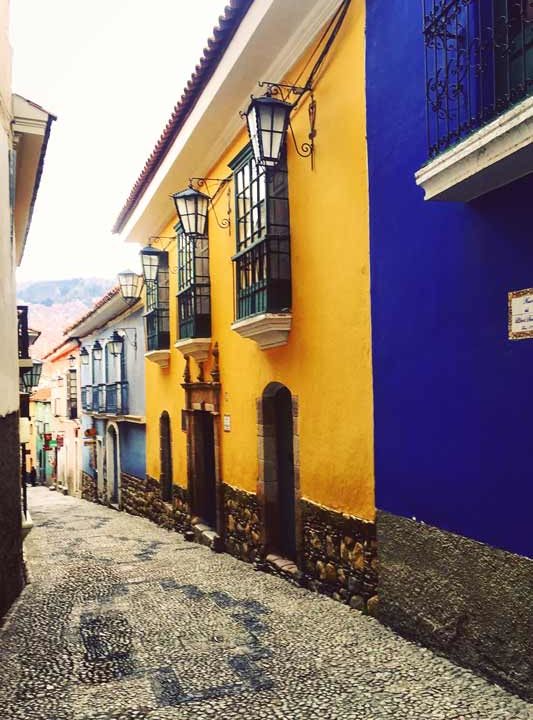
It’s also home to many of La Paz’s museums, including the Museo de Metales Preciosos , where you can see pre-Columbian silver and gold artwork, and the Casa de Murillo , which is where the revolutionary leader Pedro Domingo Murillo lived, making it one of La Paz’s most historically-significant tourist attractions.
11. Shop the city’s many markets
If you’re a bargain hunter, there are numerous opportunities to indulge in La Paz. The most famous market is the 16 de Julio market in El Alto which takes place every Thursday and Sunday.
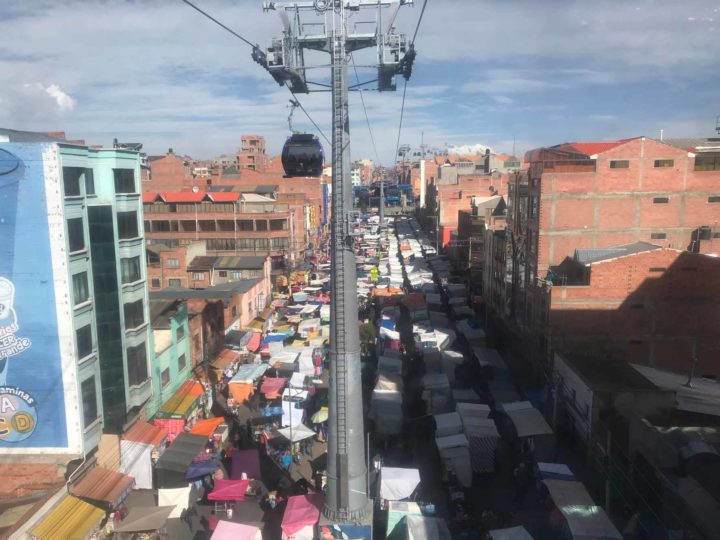
The market extends for miles throughout the El Alto neighborhoods and you can find almost anything your heart desires from outdoor gear to electronics to clothes and shoes!
The prices are so low that it’s easy to walk away after several hours shopping with an armful of bags but having only spent a couple hundred BOBs.
In the city-center, the Uyustus, Max Paredes, and Rodriguez markets are also great places to find lots of products for cheap prices.
Uyustus and Max Paredes are excellent for household goods, clothes, and shoes while Rodriguez is the perfect place to find fresh fruits and vegetables.
Some fun Bolivian fruits to try are grenadias and chirimoyas . Grenadias have hard orange shells and look a bit like gray pomegranates on the inside. To enjoy one, crack the shell and suck out the seeds and fruit from the inside.
Chirimoyas are green and appear to almost have scales. Cut one open and eat the milky white insides with a spoon. I always think they sort of taste like fruit loops!
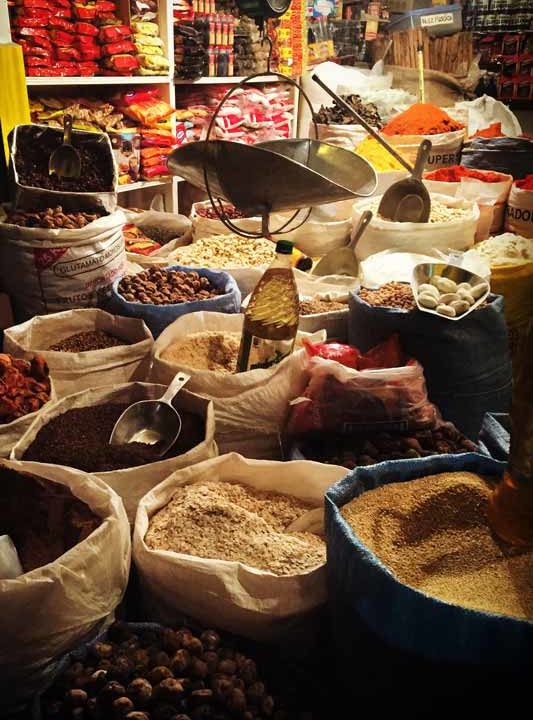
*Note: It can be very easy to get lost in the 16 de Julio market. If possible, go with a friend who is familiar with the area. If you’re on your own, a good rule of thumb is to stay in sight of the blue teleférico line.
Pick pockets are also known to frequent the 16 de Julio market. Use a cross-body bag rather than a backpack, and don’t obviously carry expensive belongings such as jewelry, a nice camera, or smart phone. The least ostentatious you appear, the better!
A top travel tip for La Paz is that one of the most common tactics of pickpockets in Bolivia is to spray water or blow baby powder at you to distract you while you are robbed.
If anyone does this your best option is to not pay them attention and continue walking with your belongings.
If you’d rather observe the market than shop, a great option is to take the blue teleférico over the market on a Thursday or Sunday morning. You’ll be able to see the real expanse of all the shops.
All that said, I shopped in El Alto many times and never once had a problem, so be aware, but don’t be afraid to have a great shopping experience at 16 de Julio!
12. Visit the government buildings in Plaza Murillo
Located in the city-center, the Plaza Murillo is home to several of Bolivia’s government branches (and about a million pigeons – ha!).
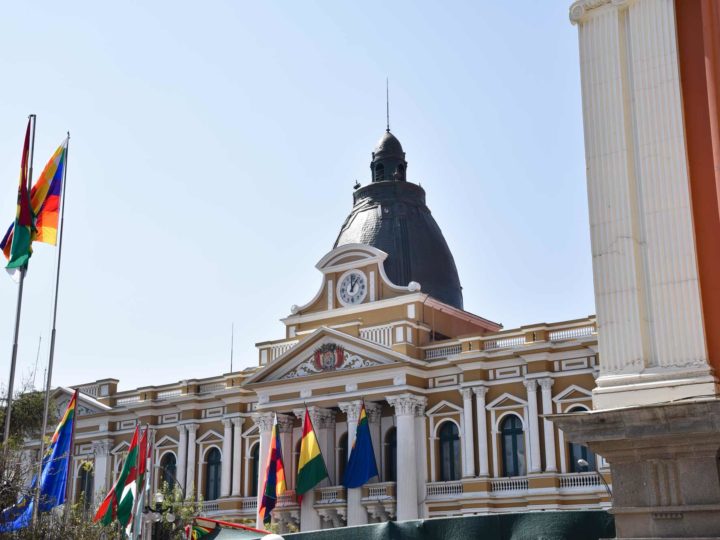
The presidential palace (known as the “Palacio Quemado” due to the many attempts to burn it down throughout Bolivia’s history) is located there, as well as the legislative building.
A closer look at the legislative building’s clock will reveal that it ticks backwards! Called the “Clock of the South,” this backwards clock is intended to represent the nation’s indigenous roots and it is an important point of interest in La Paz and Bolivia.
13. Explore the Valle de Las Animas with a stay at the Allkamari Eco Resort
On the outskirts of La Paz, lies the unique landscape of the Valle de las Animas. The rugged, spiky rock formations of the valley were thought to represent souls, giving it its name, “animas”, means souls in Spanish.
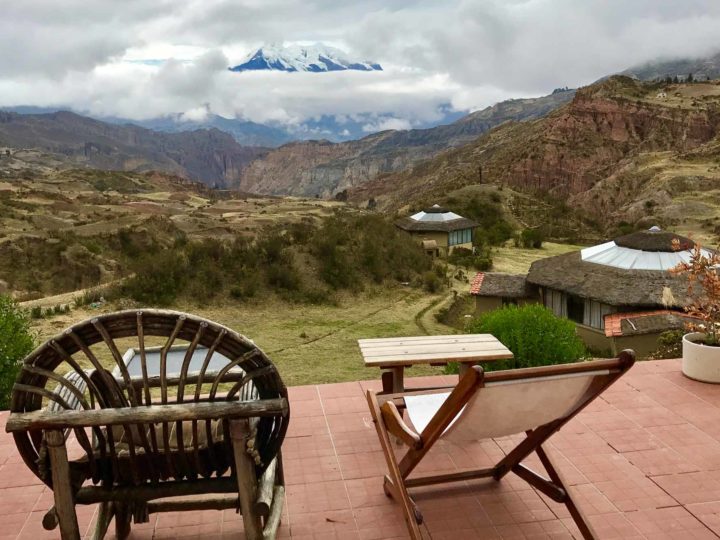
Nearby, you will find the Allkamari Eco Resort and Spa , a great place to spend the night or enjoy a meal if you want a day trip from La Paz.
The resort offers guided walking tours of the valley, massages, yoga and Pilates classes, and even the opportunity to observe or participate in native rituals. On a clear day, the view from the resort of Mt. Illimani from the resort can’t be beaten!
14. Taste gourmet, Bolivian-inspired dishes at Gustu
For the past three years, Gustu has earned a spot on Latin America’s 50 Best Restaurants list. If you want a truly gourmet experience, an evening at Gustu will not disappoint.
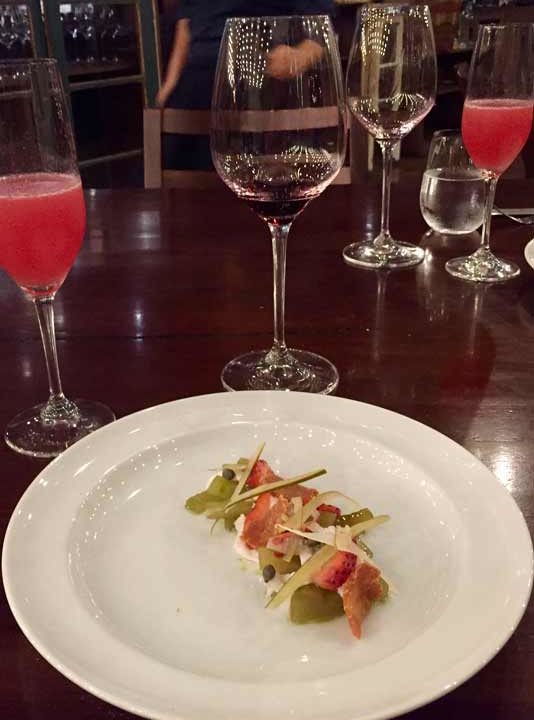
I recommend opting for one of the tasting menus to get the full experience. Each plate is small, but there are plenty of plates (and drinks) included to leave you feeling satisfied after the meal.
The dishes and drink pairings are unique and delicious. I tried many things I had never even heard of before – like pickled caiman!
15. Wander the Valle de la Luna
The Valle de la Luna, or “Valley of the Moon,” park is one of the unusual tourist attractions accessible from La Paz and makes for an interesting afternoon’s excursion.
Hiking through this strange landscape, you’ll never believe you are just moments away from the main city.
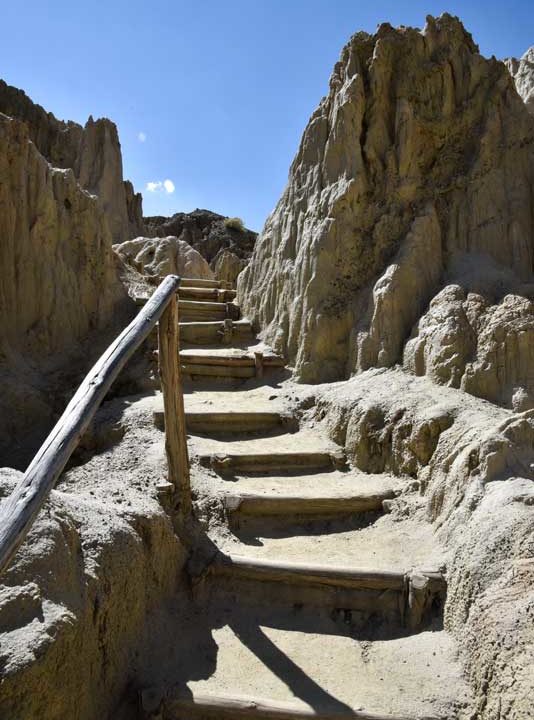
The hikes in the park are short and easy, and you might be lucky enough to see a viscacha (something like a large squirrel or rabbit) running among the spires!
To get to the Valle de la Luna, take a mini bus marked Mallasa (you can usually find these at Plaza Humboldt in the Zona Sur) and ask to get down (“Voy a bajar!”) when you see the sign for the Valle.
16. Take a four-wheeler tour
A fun way to explore the outskirts of La Paz is by taking a four-wheeler or dirt bike tour. In the Mallasa neighborhood near the Valle de la Luna, you will find several shops offering ATV tours. All you need is a driver’s license and you’re all set.
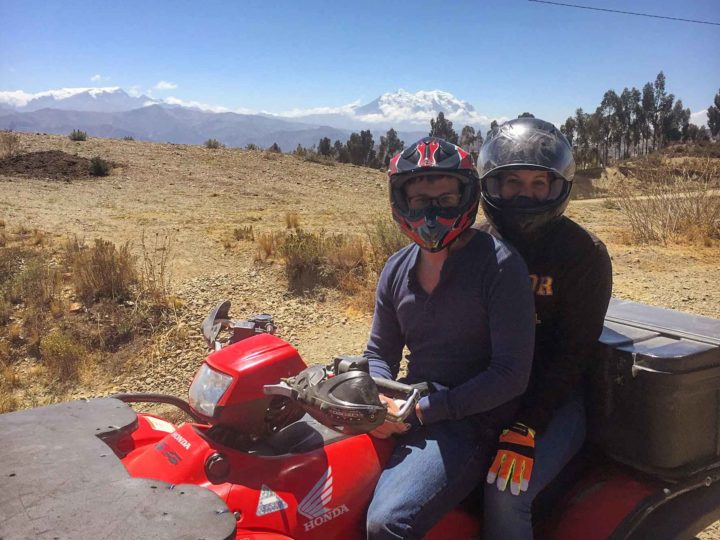
The guides will take you past the Valle de la Luna toward Lake Achocalla and all the way up to El Alto. The views of Illimani and the valley are spectacular, and the ride is tons of fun.
17. Taste food from all around the world
It may surprise you to learn that La Paz is home to many amazing restaurants offering cuisine from tons of different countries and if you know where to look, you can definitely enjoy some fantastic meals in La Paz.
In the Zona Sur area, check out Taj Mahal for Indian food, La Bastille for French, Reineke Fuchs for German, New Tokyo for sushi, or Chalet La Suisse for some delicious fondue.
In the Sopcachi neighborhood, near Plaza Avaroa, a visit to Vinapho for Vietnamese food is a must, as is Café Beirut for some Lebanese fare.
My personal favorite for Thai food, Maphrao On , is also a few blocks away from Plaza Avaroa.
In the city center, the Marrakech restaurant has awesome Moroccan food and Sabor Cubano is an excellent place for sandwiches and mojitos. There are plenty of options for a delicious meal in La Paz!
If you are lucky enough for your visit to overlap with the biannual restaurant week in the city, you’ll be able to try some dishes at these restaurants and many more for only 110 BOB (about $16 USD). Many restaurants participate and create special menus for the week-long event. The restaurant week selections include an appetizer, main dish, dessert, and beverage.
Another fun food event and unmissable thing to do in La Paz is the Eat Out La Paz Food Fest , which takes place a couple times per year and combines tons of tasty local food trucks and restaurant tents with music and events.
18. Visit the beautiful San Francisco Basilica
The San Francisco Plaza and its eponymous church are a must-see when visiting La Paz.
The church dates back to the colonial era in Bolivia and the architecture shows a unique blend of the European and indigenous cultures that are defining parts of Bolivian history; its façade combines Catholic elements with indigenous symbols and flora and fauna native to Bolivia.
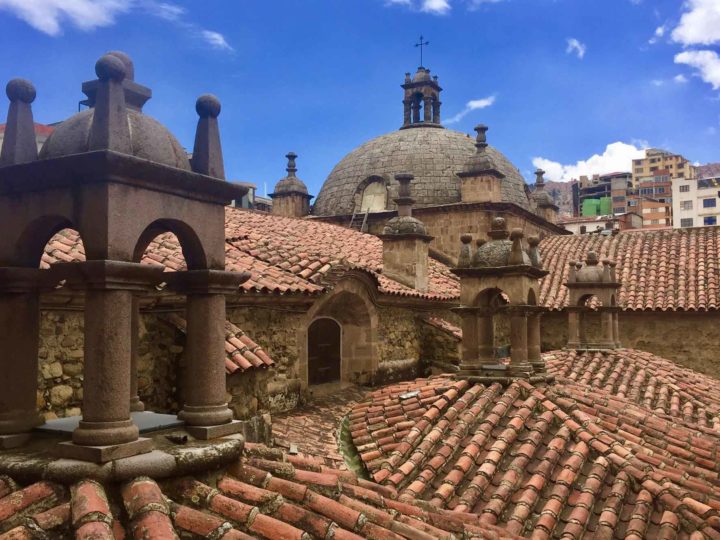
To learn more about the church, monastery, and some history of La Paz, take a tour for a cost of only 20 BOB, or $3 USD.
My favorite part of the tour was checking out the roof of the basilica and panoramic views of the city-center from there!
19. Brunch at Paceña La Salteña
You can’t leave Bolivia without sampling a salteña (or two, or three!). These yummy snacks are a Bolivian favorite for brunch time.
The best way to describe a salteña is like a juicy, semi-sweet empanada, or like an on-the-go chicken pot pie.
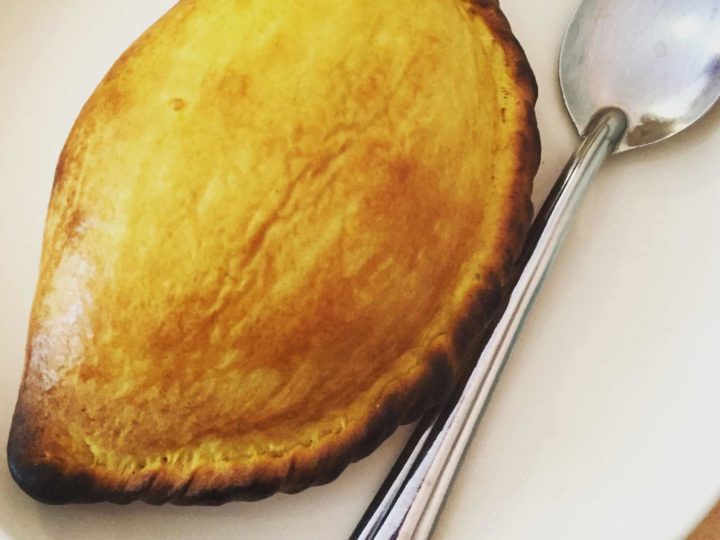
The best place to grab a salteña in La Paz is one of the many Paceña La Salteña locations around the city. Don’t forget to grab plenty of napkins as they can be very juicy. (They say that only a true Bolivian can eat a salteña without spilling!)
The pollo (chicken) option is a bit sweeter while the carne (beef) flavor has more of a kick to it. There are also vegetarian options. All are a warm, delightful way to fuel up for your day of exploring!
20. Take in the views at Mirador Killi Killi
In the city-center, one of the best places appreciate, and snap some photos of Illimani towering over La Paz is the mirador , or lookout point, of Killi Killi.
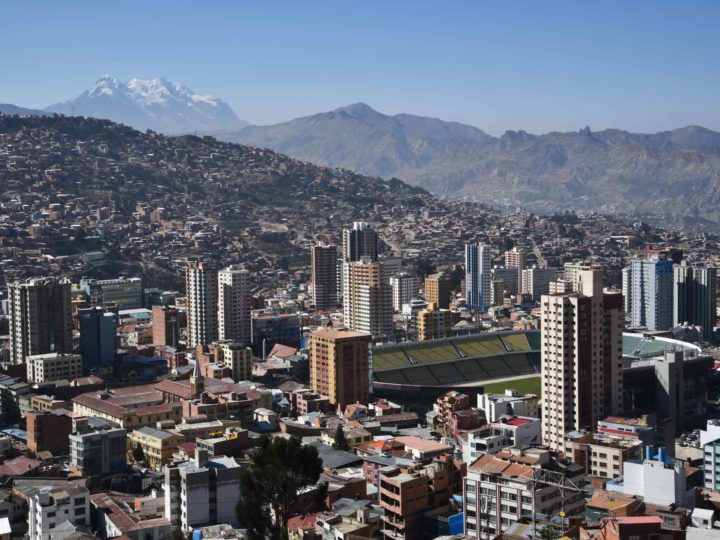
A 30 minute-uphill walk from Plaza Murillo, it’s a great place to stop and soak in the city as you wander the downtown area.
21. Grab breakfast or a drink at Casa Grande
The large Casa Grande Hotel in the Zona Sur area of La Paz is a great (but rather pricey) place to stay, but even if you choose not to book a room there, you should still check it out for a meal to start your day or a drink to end it.
The restaurant on the main floor has a weekend breakfast buffet that is to die for, especially if you are missing a big American breakfast!
They have French toast, an omelette bar, fresh fruit and juices, assorted pastries, coffee, crispy bacon, and bottomless mimosas are on the itinerary, with the breakfast buffet running for 70 BOB (or about $10 USD). Trust me: you won’t need to eat lunch afterward.
In the same hotel, on the top floor, you will find the CasaBar, a trendy bar with great drinks and a nice view, making it the perfect place to go for an evening out.
22. Watch Cholita wrestling
One of the most unusual tourist attractions in La Paz is the cholita wrestling matches. Set up like a WWE match, these shows may seem silly, but they actually started as a women’s empowerment movement and a way to take a stand against domestic abuse.
Every Sunday evening you can catch one of these entertaining shows. Buy tickets to the shows at many tour company locations in the city.
Almost all of the tour companies in Calle Jaén and Calle Sagarnaga sell tickets, and many of these ticket packages include dinner and transportation to and from the wrestling show.
23. Sip some coffee at Café Typica or Roasters
Two of the best coffee shops in La Paz to grab a drink, have some lunch, or work or relax in are Typica and Roasters . Both are located in the Montenegro area of the Zona Sur, and Typica has a second location in the Sopocachi neighborhood.
These two coffee shops offer a great atmosphere, excellent service, and (comparably) quick WIFI as well as yummy drinks and food.
At Typica, the iced coffee is incredible, as is the empanada combo. At Roasters, try the teas as well as the coffee selections, and enjoy a soup, salad, or sandwich.
24. Observe the Alasitas Festival
If you happen to be in La Paz on January 24 th , you will be able to see the Feria de las Alasitas. During this celebration, hundreds of markets will pop up around the city offering miniature versions of everything you can think of – houses, cars, food, money, plane tickets… anything!
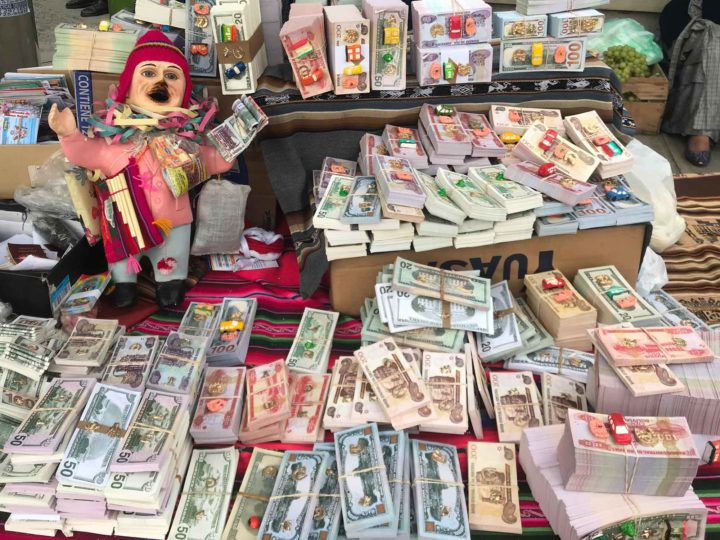
Paceños buy these tiny models to give to their Ekeko dolls (the God of god of abundance and prosperity in Tiwanakan culture) in the hopes that they will be blessed with the real-life version of these items in the coming year.
Be sure to check out one of the Alasitas markets and play some foosball if you are in La Paz during the festival. These markets are set up all throughout the city, and can be recognized by the many foosball tables set up between the vendors’ tents.
25. Take a Photo with a dancing zebra
La Paz has some of the most unusual crossing guards in the world – dancing zebras! These friendly striped folks protect pedestrians in busy intersections from the aggressive traffic in the city.
They’re always up for a photo op or a high five, so if you see a zebra, say hello!

La Paz can be a great jumping off point for Bolivia’s many attractions, such as the Death Road to Coroico, Tiwanaku, Lake Titicaca, the salt flats, and some of South America’s best mountain treks like Huayna Potosí , but the city itself should not be overlooked. La Paz is truly a place unlike any other!
Pin this article to your favourite Pinterest board!
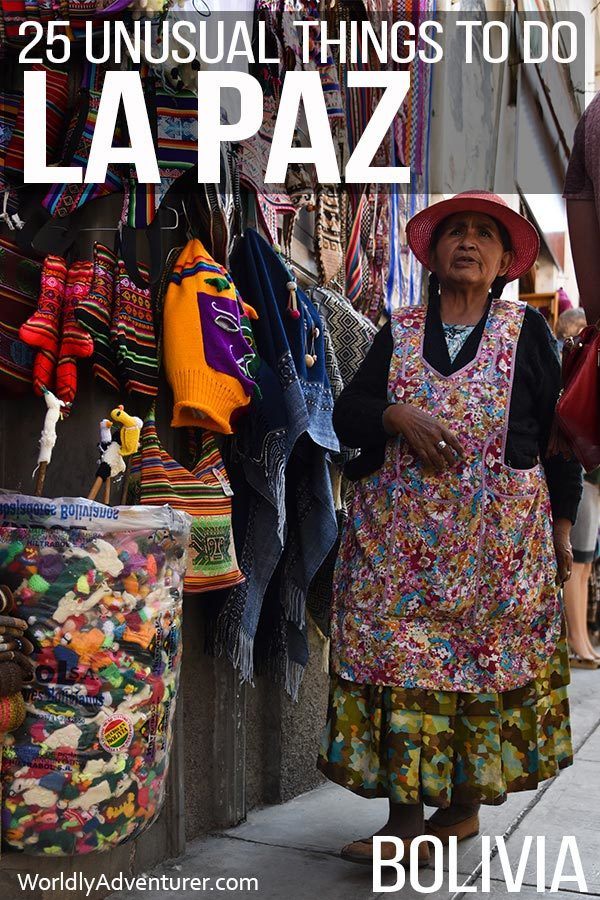
Thursday 27th of February 2020
Still making up my mind whether to stop in La Paz on my way through Bolivia or not, this blog has definitely given me more to think about, thank you!
Steph Dyson
Sunday 22nd of March 2020
No problem Gus! I hope you have a great time when you do! Steph
Tuesday 17th of September 2019
Hi I'm about to embark on my first and probably only trip to South America. It is extensive and I've fitted as much as possible in just over 4 weeks. I have a 'free day' in La Paz and am considering the the quad bike to Moray, salt flats etc. I have only been on a quad bike once and not sure what the terrain is like. Travelling, I don't want to temp fate with anything risky. I am a licenced driver of many years. I am a 73 year old adventurous female. Any thoughts? Thank you
Thursday 26th of September 2019
Hi Bev, I'm not sure which quad tour you're talking about here? The one from La Paz goes to Valle de la Luna and up to El Alto. This was written by my writer Sarah and she wouldn't have recommended it if it were that dangerous. Sorry I can't be more helpful with this!
Juan Cortez
Friday 19th of July 2019
Hi, maybe you're not aware of it, but Bolivia has not -and never had- a de-facto Capital city. Instead of that, Bolivia has a constitutional Capital city, that is Sucre. La Paz I the Seat of the government, and that's it. Jallalla Bolivia!!
Sunday 4th of August 2019
Hi Juan, de facto refers to the fact that La Paz acts a lot more like the country's capital city than Sucre and is very unusual as a city in that it's home to both the executive and legislative branches of the government are based there. This is not the norm for most countries around the world, hence the use of de facto by a lot of writers when they discuss La Paz! Steph
Franklin Santander
Tuesday 5th of March 2019
You forgot Las Velas, Alasitas, Teleferico, etc
Friday 1st of March 2019
Loved it! Tha k you for coming! That and much more! We would've loved to host you a unique tour in La paz with @notsotouristy_lapaz if you have friends coming let them know about us!
Thursday 13th of June 2019
Very interesting article. This will be my first trip back to Bolivia since 1992. (July coming). I will be with a local, but they may not know about all this because they recently moved from Trinidad.
Thanks Cesia! I'll likely be back in La Paz at some point this year so I'll definitely reach out to you about a visit then!

12 Things To Do In La Paz, Bolivia: A Local’s Guide to La Paz
Author: Caroline
Multicolored cable cars with panoramic views, fragrant street food wafting from every corner and the omnipresence of vibrant murals. There are plenty of undeniably cool things to do in La Paz Bolivia, especially if your guide happens to be a local! Time to delve into the various attractions in La Paz.
On a recent trip to Bolivia , I spent a whirlwind 24 hours in the country’s de-facto capital. The frantic energy, kaleidoscopic architecture, and neverending stream of bowler-hatted Cholitas pushing past me left a lasting impression.
One day in city is nowhere near enough to create a proper La Paz Bolivia city guide. Therefore I enlisted the help of a local Paceña (local from La Paz) to help you find the very best things to do in La Paz Bolivia including the various La Paz activities, best street food to try, the hippest neighborhoods, and provide answers to the more practical questions like “how in the world do I get on the bus?”.
Please note: This post contains affiliate links, meaning I may earn a commission if you make a purchase by clicking a link (at no extra cost to you). Learn more .
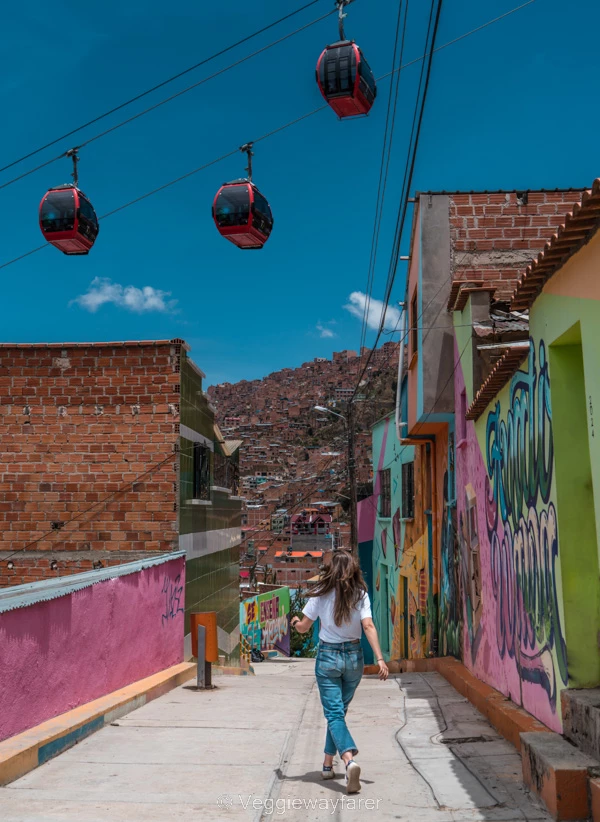
Prepare your visit to La Paz Bolivia
TOP PICKS FOR ACCOMMODATIONS
- Luxury pick: Atix Hotel
- Midrange (where we stayed): Hotel Calacoto
- Most Sustainable: Hotel Rosario
- Budget Pick: Las Brisas Hotel
HIGHLY RATED TOURS
- Best Value/Money: Private La Paz tour
- Fun Tour: La Paz Cable Car Tour
- Foodie Tour: Evening Street Food Tour
- El Alto: El Alto Architectural Tour
USEFUL READING: Browse through all my Bolivia guides
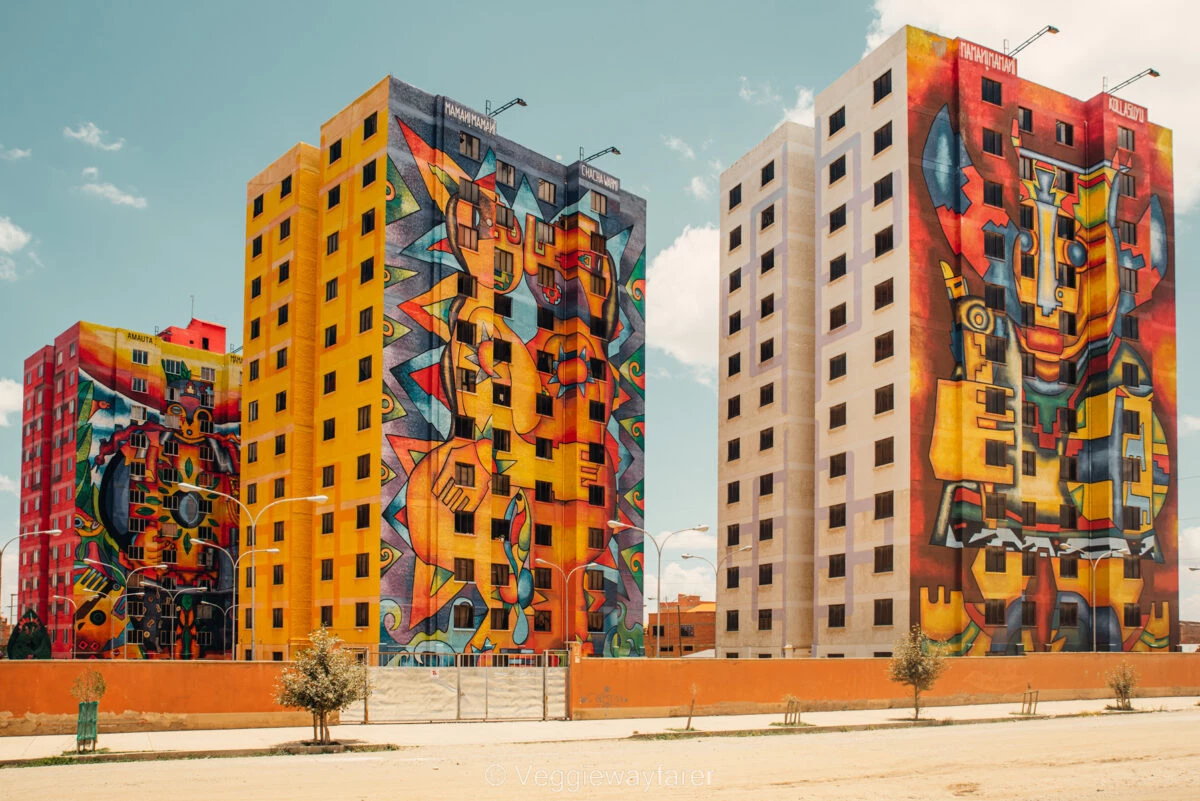
Is La Paz worth visiting?
The highest capital in the world at 3600 meters (11.811,02 feet) is surrounded by the glacier-topped Cordillera Real. Nestled deep within a bowl-shaped river canyon, the ever-expanding urban sprawl has slowly inched its way over the rolling hills spilling over into El Alto.
The amalgam of architectural styles, cultures and peoples that populate Bolivia’s capital are what make the city well worth spending a few days. From top-notch Michelin-starred restaurants to bolthole street food stalls, drab clustered of red-brick buildings standing next to three-story homes built in the shape of a transformer, La Paz has it all.
A word of caution before delving head first into the various places to see in La Paz. Certain neighborhoods (or barrios ) are known to be less safe, especially at night. Scroll down to the section on safety for more information.
12 Things to do in La Paz Bolivia
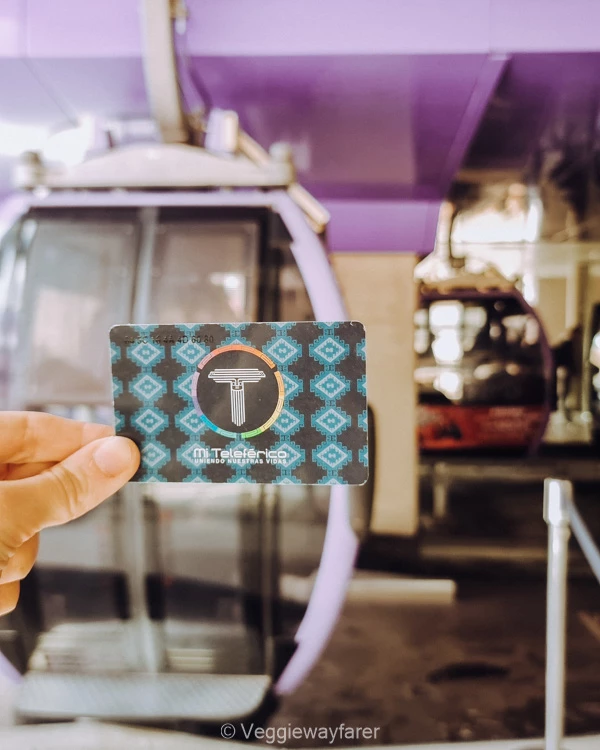
1. Whizz around on the La Paz cable cars
One of the first things I noticed when walking around La Paz was the colorful cable cars flying over my head. Mi Teleférico consists of 10 cable car lines stopping at 31 stations and covering over 30 kilometers (18.6) miles.
Opened in 2014 in an attempt to curb the horrendous congestion in downtown La Paz. This very cool “subway in the sky” has continued to grow in importance and is now a crucial part of the city’s public transportation network, ensuring people of all economic classes are connected to the heart of the city, regardless of where they live.
The system is super efficient, clean and easy to use. Riding around the various cable cars is one of the most fun things to do in La Paz, not to mention the very best way to get unparalleled views over the sprawling city. TIP: The red cable cars travelers from the northern part of La Paz all the way up to El Alto (located at 4,000 meters (13,000 feet). It is the most scenic line to travel. FARES: From Bs 1.50 to 3.00 (Transfer Bs 2.00) TICKETS: Rechargeable smart card (pictures) or single ticket METRO MAP: https://www.miteleferico.bo/nuestras-lineas
TAKE A TOUR: Spend 4-hours flying over the city while hopping on and off the various cable cars.
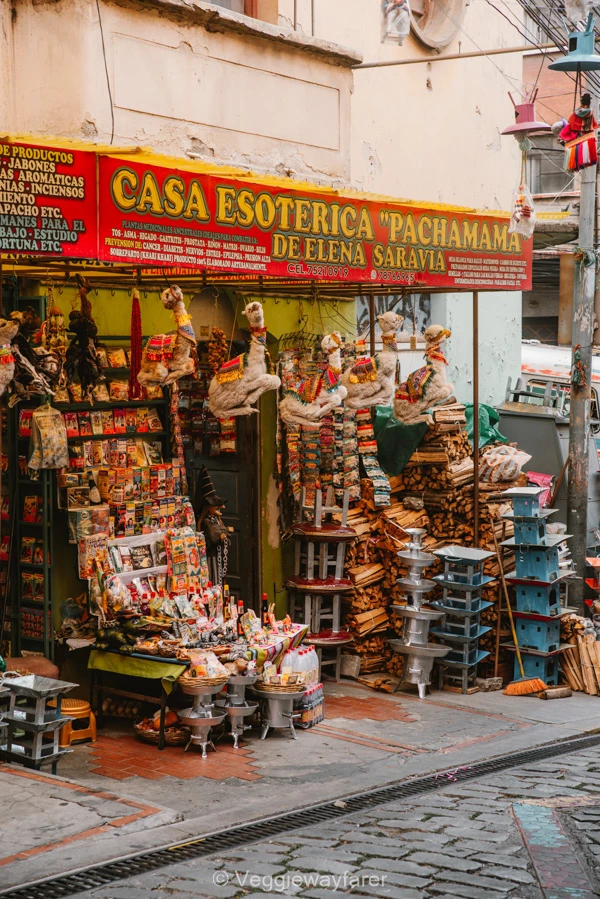
2. Visit one of the local markets in La Paz
There is nothing like a visit to the local market to soak up some culture. Markets in La Paz are jam-packed with colorful clothing, ramshackle stalls, wafts of delectable food and Paceñas haggling over prices – a latter an absolute must before purchasing anything. Practical tip: Either explore with a local or learn a few basic Spanish phrases, English is not widely spoken on the markets (if at all).
La Paz Witches Market (Mercado de las Brujas)
LOCATION: Downtown La Paz || WHAT TO PURCHASE: Handicrafts, Coca leaves, souvenirs || Daily
In recent years it has become one of the most famous La Paz attractions due to the folkloric content of some of its stalls, most notably the preserved Llama fetuses, traditionally used in the foundations of new houses and businesses as an offering to Pachamama (still in use to this day).
Mercado Camacho
LOCATION: San Pedro Neighborhood || WHAT TO PURCHASE: Fruits, vegetables, handicrafts || Daily 07.30 am- 10.00 pm
Mercado Camacho is one of the most important markets in the area. It has remained wonderfully authentic and attracts hordes of locals thanks to its competitive pricing.
LOCATION: El Alto || WHAT TO PURCHASE: Anything and everything || Thursday & Sunday
Feria 16 is one of the largest markets in the world with over 200 stalls lining the zona 16 de julio . The market square itself is surrounded by wildly eccentric buildings designed by the famous indigenous Aymara architect Freddy Mamani Silvestre.
Lanza Market (Mercado Lanza)
LOCATION: Downtown La Paz || WHAT TO PURCHASE: Food || Daily 06.00 am- 08.00 pm A 3 story marketplace that is the very best place in La Paz to purchase food. Ranging from fresh fruits & vegetables to hearty soul-warming delectable street food.
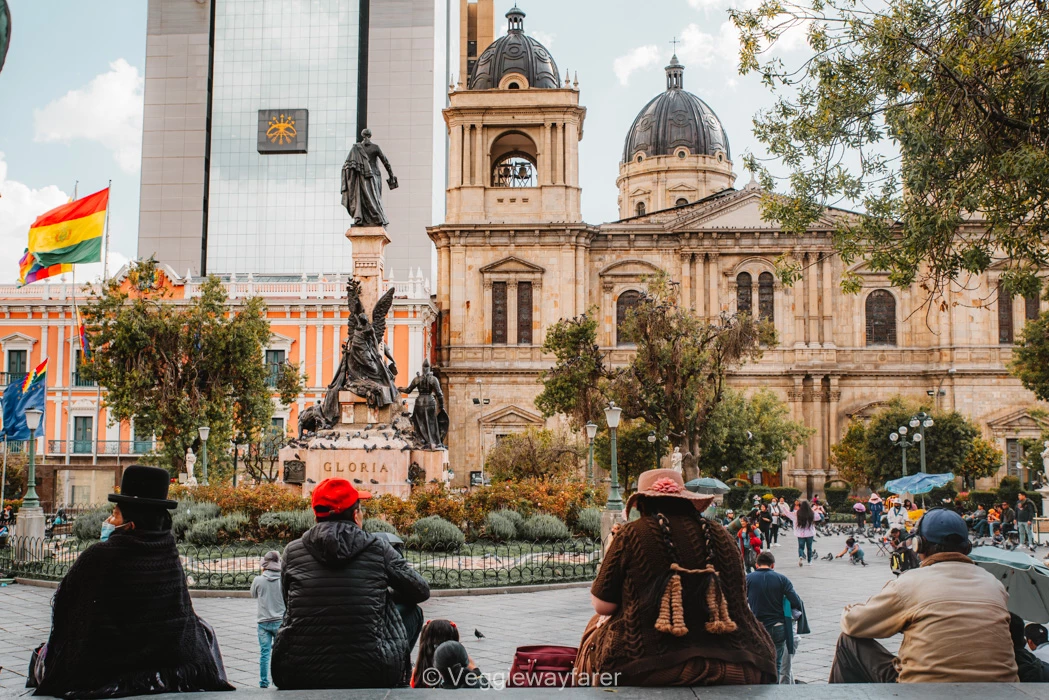
3. Explore downtown La Paz
Downtown La Paz refers to both the historical center (San Francisco Church, Witches Market, Jaén Street, Lanza Market) as well as the political center which houses the seat of the Bolivian government (Palacio Quemado, Plaza Murillo). The narrow streets are overflowing with street vendors, incessant car honking and rickety minibusses. It is quintessential chaotic La Paz.
This part of town also houses some of the top things to do in La Paz and as such attracts both tourists and pickpockets. Be extra vigilant when exploring during the day. The sprawl of streets around the Witch Market and San Francisco Church is best avoided at night for safety reasons.
Plaza Murillo
This historic square is the central plaza of the city and home to the Presidential Palace, the National Congress of Bolivia and the Cathedral of La Paz.
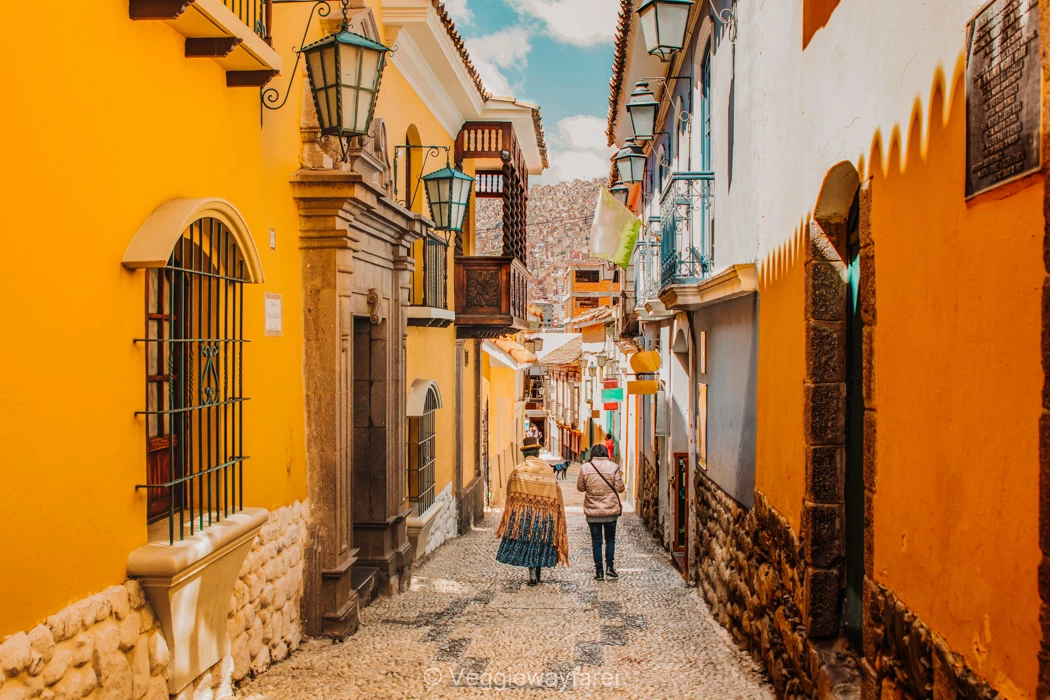
The prettiest street in all of La Paz with hands-down Calle Jaén. Lined with the most beautifully preserved 18th-century colonial homes, ornate balconies and secret alcoves. It reminded me vaguely of the architecture found on the island of Tenerife .
Aside from being a photographer’s dream, Calle Jaén also has a cluster of four interesting museums: Casa de Murillo, Museo del Litoral, Museo de Metales Preciosos and Museo Costumbrista. Purchase tickets at the later for all four museums.
Last but not least, Calle Jaén is the location of many legends and ghost stories, passed down through generations of Bolivians. One of the most famous legends is the story of the “La Dama de Blanco” or the “Lady in White.” According to the legend, a beautiful woman in a white dress haunts the street at night. Some say that the woman is the ghost of a wealthy Spanish woman who was killed by her husband in a fit of jealous rage, while others believe that she is the spirit of a woman who died tragically in a fire that consumed her home.
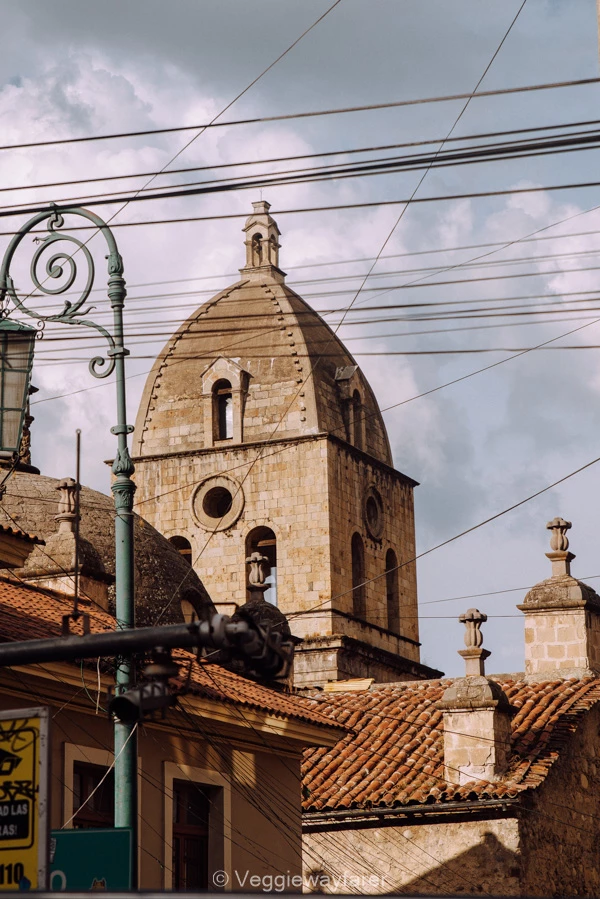
4. Visit the San Francisco Church
Around the corner from Calle Jaén and the Witches Market lies the beautiful 16th-century San Francisco Church. One of the oldest and most important landmarks in La Paz. What drew me to the church was the ornate carvings on the façade, which upon closer inspection displayed a wealth of indigenous symbols: masked figures to snakes, dragons, and tropical birds.
Inside the San Francisco Church, visitors can explore the fascinating museum that houses a collection of religious art and artifacts. A courtyard and cloister are located in the confines of the church grounds and open to the public.
When I visited, the church was sadly closed. Both the opening hours and the entrance fee for the museum are subject to conflicting information online.
OPENING HOURS: Daily 04.00 pm to 06.00 pm TICKETS: Church free, museum and belltower handful of Bs.
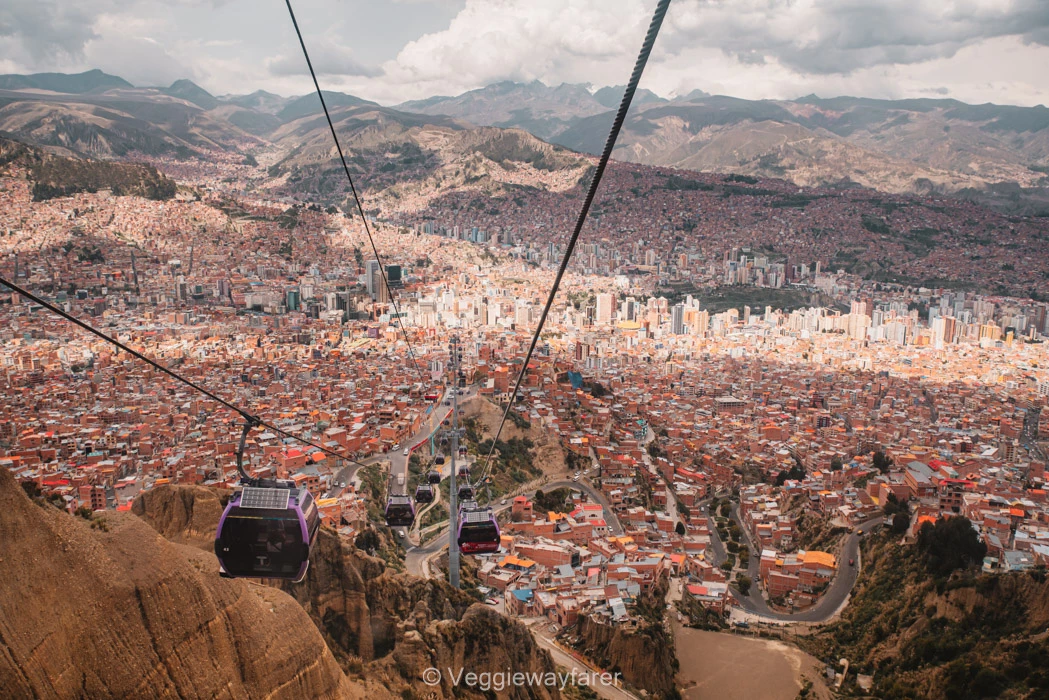
5. Head to the trendy Sopocachi neighborhood
Sopocachi is adjacent to the historical center “downtown La Paz”, San Jorge and Miraflores. This part of town weaves together traditional and modern buildings and covers them in colorful murals in true La Paz style. The artsy neighborhood was once the home of the famous Bolivian painter Walter Solon Romero The laid-back vibes, live music and street performers combined with an abundance of restaurants, bars, cafes, and shops, make it a popular destination for locals to go for a night on the town.
WHERE TO GO FOR A DRINK: Bars on Belisario Salinas Street; Selina Hostel (2080 Avenue 20 de Octubre) or the clandestine bar at 10 Calacoto called Punku Bar UNMISSABLE MUSEUM: Casa Museo Solon
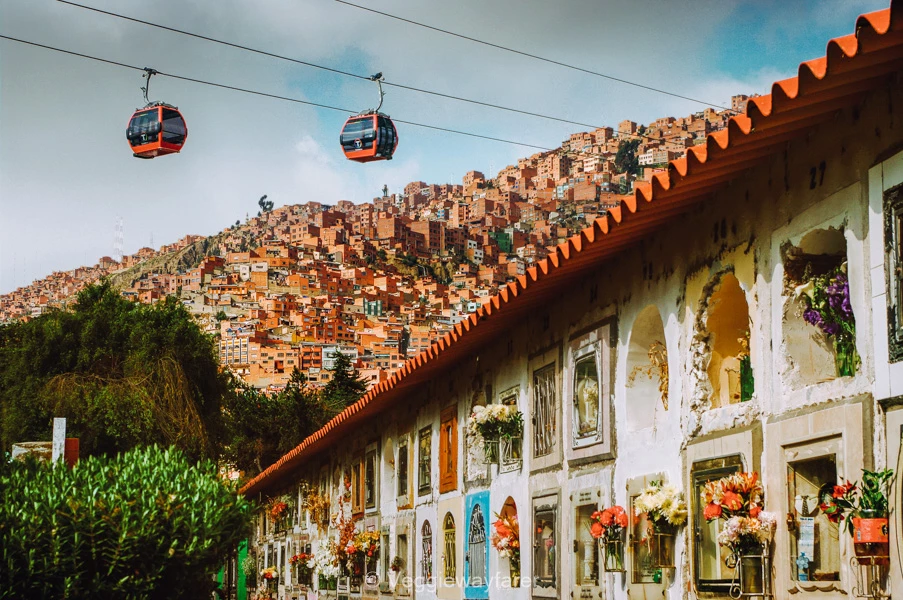
6. Check out the murals at the Central Cemetery (Cementerio General)
Many of the country’s most prominent politicians, intellectuals, artists, and activists are buried in the Cementerio General. What sets this otherwise eery location is apart is the omnipresence of large, vibrant murals. Yep, you read that right. Since 2018, the Perros Sueltos artists collective organized the Ñatintas mural-painting festival all over the city. The name of the festival alludes to the pre-Incan Aymara ritual called Ñatitas, where people walk around carrying the skulls of their departed loved ones (traditionally on The Day of the Dead in November). This explains the omnipresence of skulls in the Ñatintas artwork around the cemetery.
Hunting down skull-inspired murals in a cemetery is probably one of the most unique things to do in La Paz! Entrance to the cemetery is free of charge (as is to be expected) and the murals are easily spotted by walking around. Please keep in mind to be quiet and respectful as this is a cemetery.
WHERE IS THE CEMETERY: Max Paredes district HOW TO GET THERE: Cable car (red line to stop “Cementario”); Minibus with the sign “Cementerio Central”
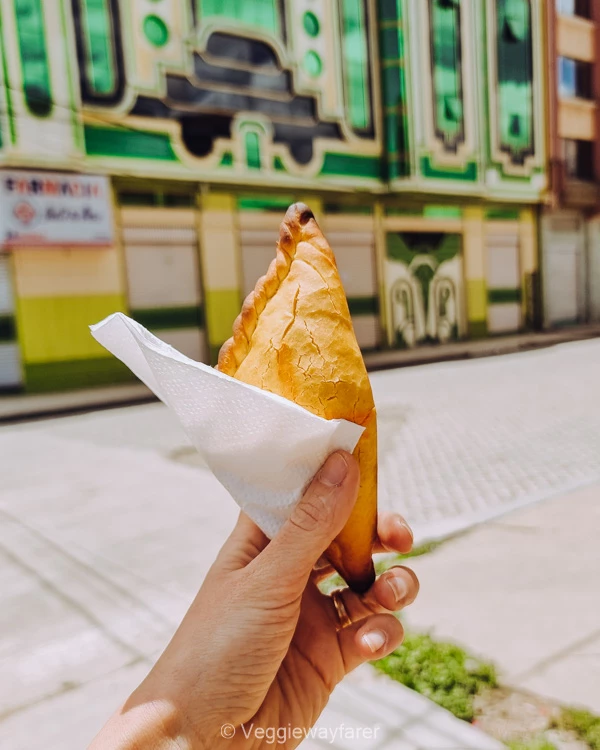
7. Try some of the typical Bolivian streetfood
One cannot visit La Paz and not try at least some of its delicious street food. The streets are lined with street vendors selling everything from corn to grilled skewers at just about every hour of the day.
There is a popular saying that goes: Those who know how to eat a Salteñas without spilling its juicy content all over, are good kissers. Put those kissing skills to the test by waltzing up and purchasing this popular meat-filled pastry for a few Bolivianos from any of the street vendors.
Other classics include empanadas, anticuchos (grilled skewers) are the famous Tucumanes, originally from Tucumán in Argentina and bought over by Argentinian immigrants, these fried empanadas are typically filled with beef, onion, potatoes and spices. Served with a side of “Llajua” or spicy tomato sauce. VEGETARIANS BE CAREFUL: Many of these snacks are heavily reliant on meat, as a vegetarian always make sure to ask “ ¿lleva carne ?” (does this contain meat)
TOURS | Streetfood is great if you know which vendor to buy it from. Why not try a 3-hour street food tour which includes a visit to the market, tasting local beers and 6 typical Bolivian dishes.
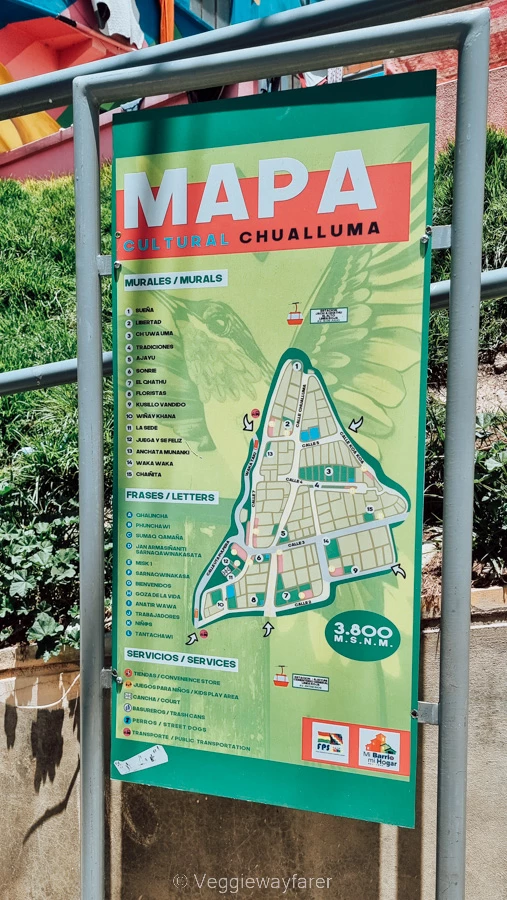
8. Explore Chualluma La Paz
WHEN TO GO | Go during the day || PRACTICAL INFO | Guide to Chualluma
Located on the outskirts of La Paz, a splash of color clinging for dear life to the side of the mountain, right underneath El Alto, lies the Chualluma neighborhood. Under the government-funded program ‘My neighborhood, my home’, Chualluma was transformed from a cluster of drab faded orange boxes into a vibrant veritable open-air museum. Professional urban artists adorned the houses with beautiful murals depicting the community and elements of their Aymaran culture. Various informative panels are spread out across the neighborhood. These “Mapa” (depicted above) include an overview of where the murals can be found as well as what parts of the neighborhood have stray dogs (be very careful of the dogs).
TOURS | Chualluma is one of the most colorful La Paz sights, and I really recommend going there! It is not included in the standard walking tours due to its remoteness. If you do want to take a tour, it will require booking a (surprisingly great value/money) private tour of La Paz.
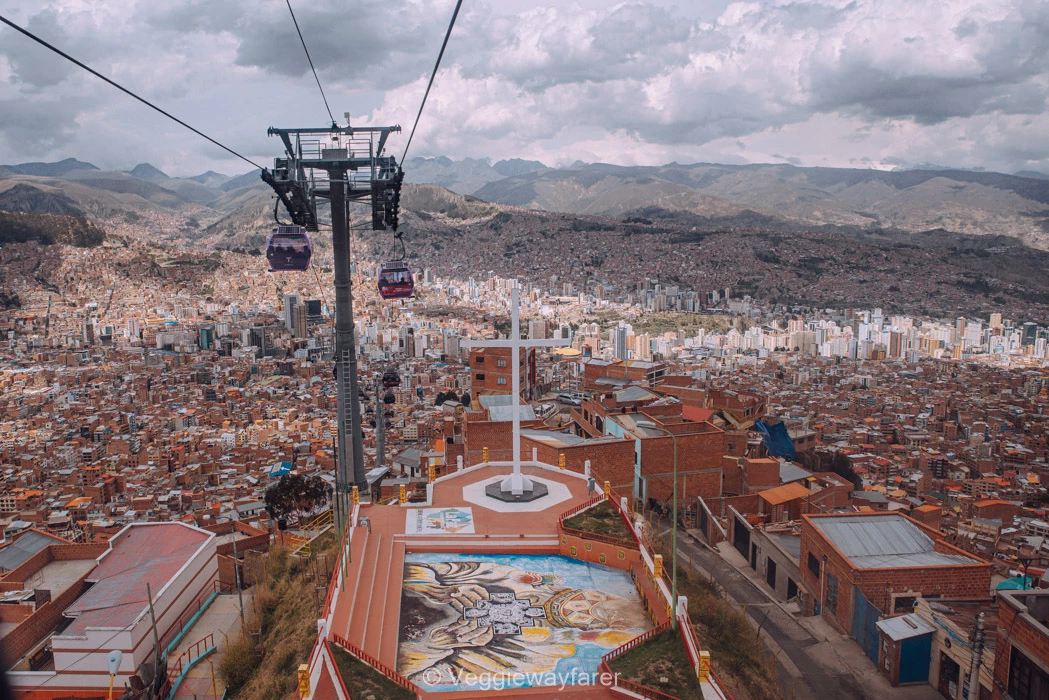
9. Find viewpoints over La Paz
The city of La Paz is sprawled out across a bowler-hat-shaped basin, the ridges of which are – mostly- accessible, providing photographers a unique opportunity to catch some truly spectacular shots of the city.
El Montículo Viewpoint
LOCATION: Spocachi neighborhood HOW TO GET THERE: To reach the Montículo Viewpoint, visitors can take a cable car ride (yellow line to Sopocachi station) or hike up the hill from Plaza Abaroa. The area around the viewpoint is also a popular spot for restaurants and bars. WHAT YOU SEE: Illimani Mountain, La Paz
Killi Killi Viewpoint
LOCATION: Villa Pabón HOW TO GET THERE: To reach the Killi Killi viewpoint, visitors can take a taxi or bus (sign Villa Pabón) to the base of the Killi Killi hill, and then climb the steep stairs to the top. WHAT YOU SEE: Illimani and Huayna Potosí mountains, La Paz urban sprawl
Chualluma Neighborhood
LOCATION: Chualluma HOW TO GET THERE: Red line cable car – stop at station Cementerio Ajayuni . Exit the metro station through Avenida Entre Rios WHAT YOU SEE: Huayna Potosí mountains with the red cable cars passing in front
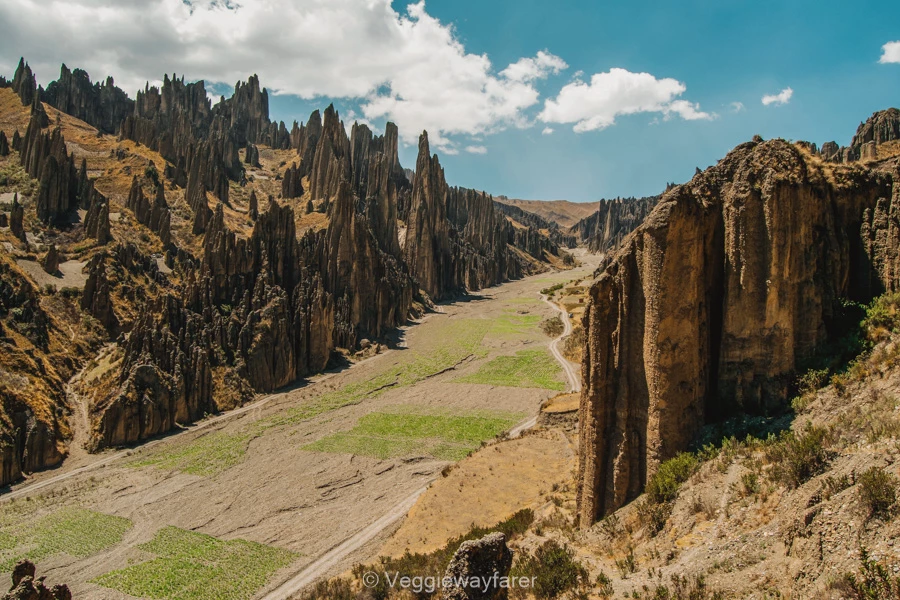
10. Hike in the Valley of the Souls (Valle de las Animas)
The Valle de las Almas, (Valley of the Souls), is located on the outskirts of La Paz, Bolivia. What makes this valley noteworthy is the unusual rock formations soaring over it, a result of thousands of years of wind and water erosion.
The valley is an important cultural and spiritual site for the local Aymara people, who believe that the towering rocks are the resting place of their ancestors’ souls.
The Valle de las Almas is a popular destination for hiking and photography, and there are several hiking trails that lead through the valley and up to the surrounding hills for panoramic views of the area. It is definitely a must-visit location for anyone interested in natural wonders and cultural experiences.
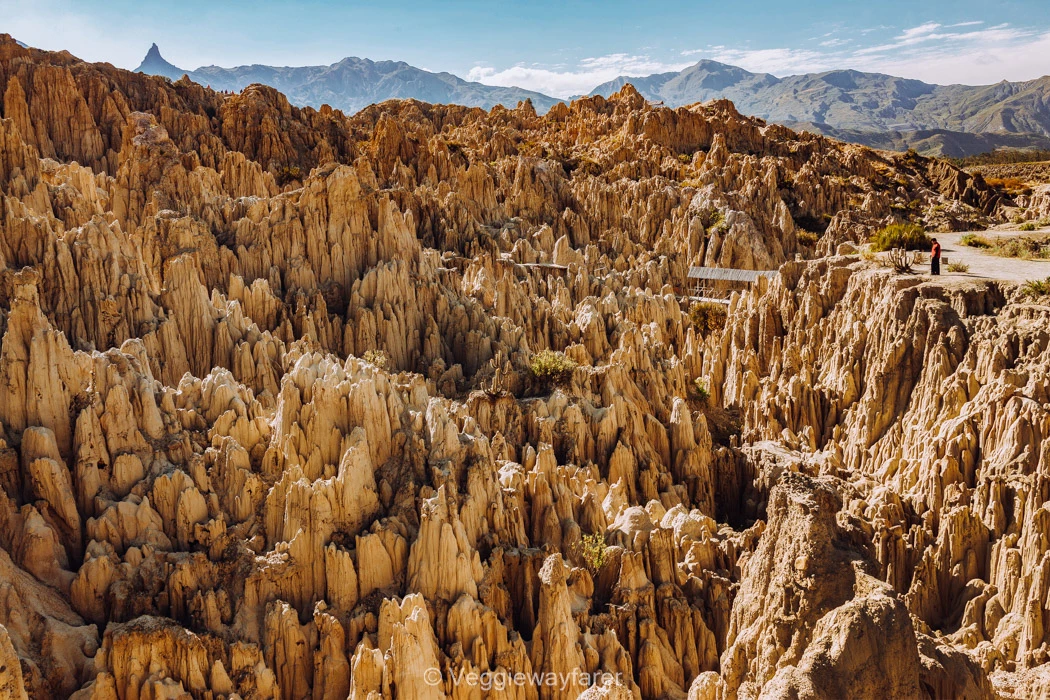
11. Traipse through the Moon Valley (Valle de la Luna)
The Moon Valley, or Valle de la Luna in Spanish, is a stunning geological formation located just outside of La Paz, Bolivia. It is a landscape that appears to be from another world, with bizarre rock formations, deep canyons, and surreal, otherworldly colors. The valley was formed over millions of years by the constant erosion of the surrounding mountains by wind and water.
What makes Moon Valley worth visiting are the panoramic views of the surrounding Andean mountains, not so much the valley itself in my personal opinion. The valley can be explored by way of two easy trails (not suitable for visitors with mobility issues). As you exit the main entrance (Avenida Valle de La Luna) and head across to the rock formations on the opposite side of the street (indicated on Google Maps as Las Banderas de Mallasa). Clamber up the rocks to get a really nice view over La Paz. ENTRANCE FEE | Bs. 15 OPENING HOURS | Daily 09.00 am – 05.00 pm GETTING THERE | Minibuses bound for Mallasa (a village near Moon Valley) will drop you off at the entrance gate of the site.
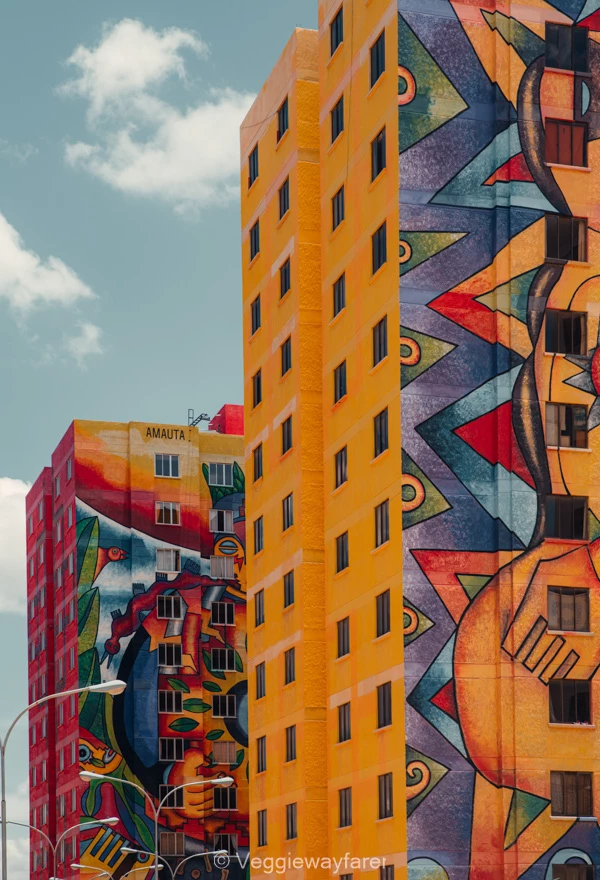
12. Explore nearby El Alto
Lofty El Alto is located at an altitude of 4,061 meters (13,323 feet). The city is oftentimes the first place many visitors set foot in when flying to La Paz as the “La Paz airport” is in fact El Alto International Airport, 15 km from the de facto capital of Bolivia.
What makes El Alto well worth visiting is the exuberant architecture, bustling markets (Feria 16) and the famous Cholita wrestling matches that are held in the city. As the fastest-growing city in Bolivia, El Alto is not the safest place to visit without a local friend or guide.
Visit the Cholets in El Alto
The primarily Aymaran community that resides in El Alto are true entrepreneurs, building successful businesses buying/selling imported goods from China. The Nouveau Riche of El Alto turn to El Alto native Freddy Mamani to design their houses, the so-called Cholets . These colorful buildings are inspired by native Aymara architecture, festival chola clothing and the Transformers cartoons.
Why book a tour: We ended up booking a local tour to see the various Cholets , but mostly to be able to enter a Cholet. As these buildings are privately owned, it is not possible to visit without a guide.
Cholita Wrestling
We did not attend a wrestling match, as originally I thought it was somewhat of a tourist trap. Yet after doing some digging it soon became apparent how sorely mistaken I was. The practice of Cholita Wrestling originated in the 2000s and was put in place as a means to help Aymaran women affected by domestic violence. Wrestling was seen as a way to relieve stress and regain a sense of empowerment in a male-dominated society. Read up on the history before you go . WHEN TO GO: Thursdays 4.30 pm; Sundays 5.30 pm WHERE: Multifuncional Ceja de el Alto HOW TO GET THERE: Ride the red cable car, stop at La Ceja TICKETS: Book a tour or purchase at the door (US$7)
Where to stay in La Paz
The safest neighborhoods to stay in La Paz are Calacoto , San Miguel and Zona Sur . These however are slightly further away from the main La Paz tourist attractions. If therefore you want to be closer to downtown La Paz (the historical center), consider booking in the Sopocachi neighborhood. Search hotels in La Paz .
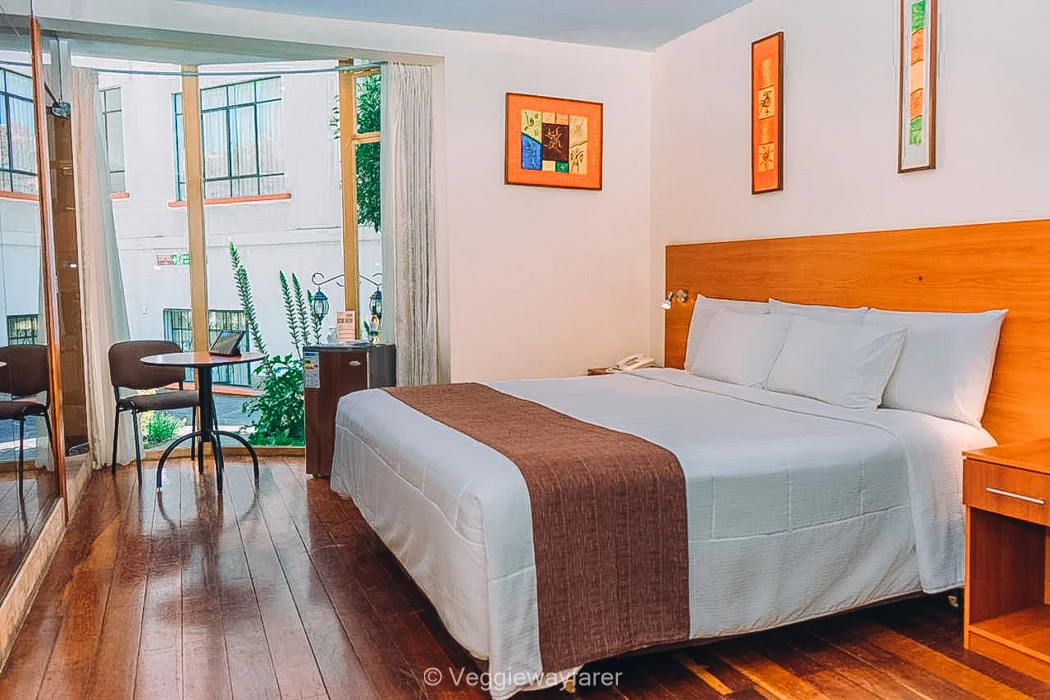
RECOMMENDATION: Hotel Calacoto ($$)
Located in the safe neighborhood of Calacoto, within walking distance from a trendy food court and the cable car line. We had comfortable beds, friendly service and strong wifi. Added bonus is the little outside garden area.
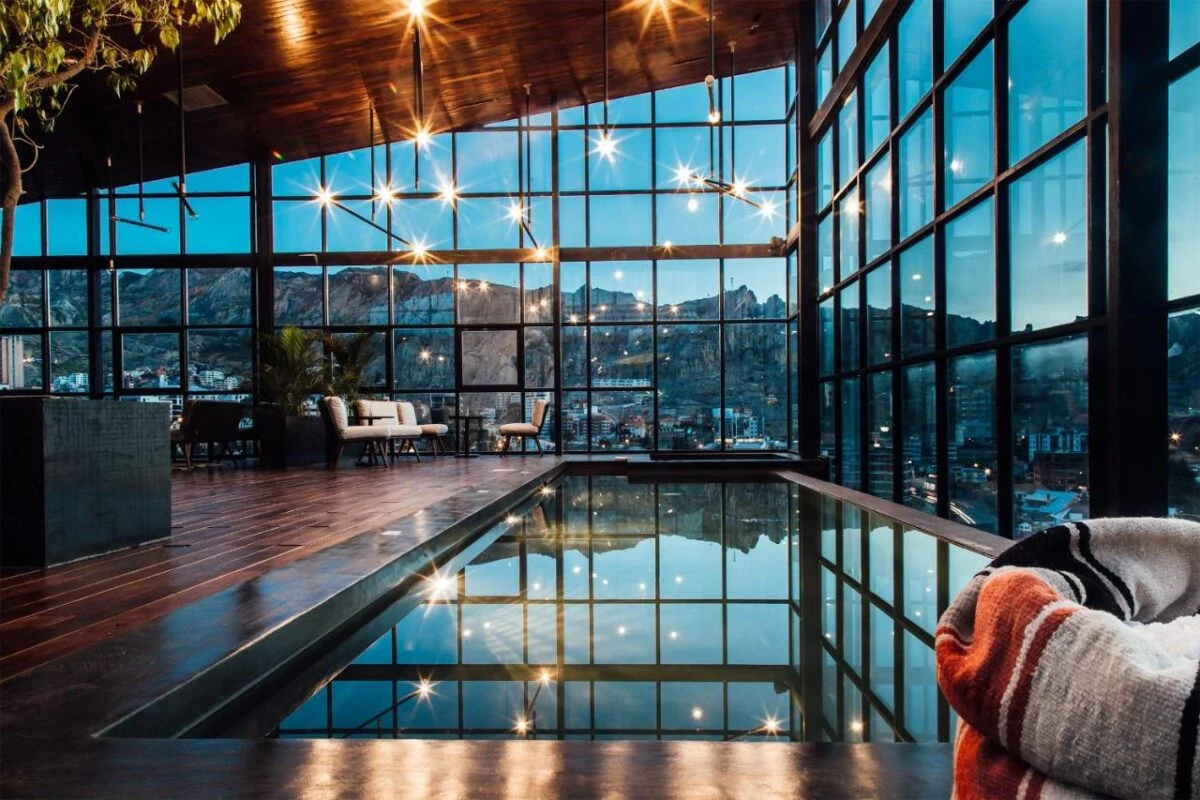
LUXURY: ATIX ($$$)
Located in the upscale Zona Sur neighborhood. Atix is the first 100% Bolivian boutique hotel, using locally sourced materials and showcasing the work of Bolivian artists. Added bonus are the panoramic views and on-site fine dining restaurant serving.
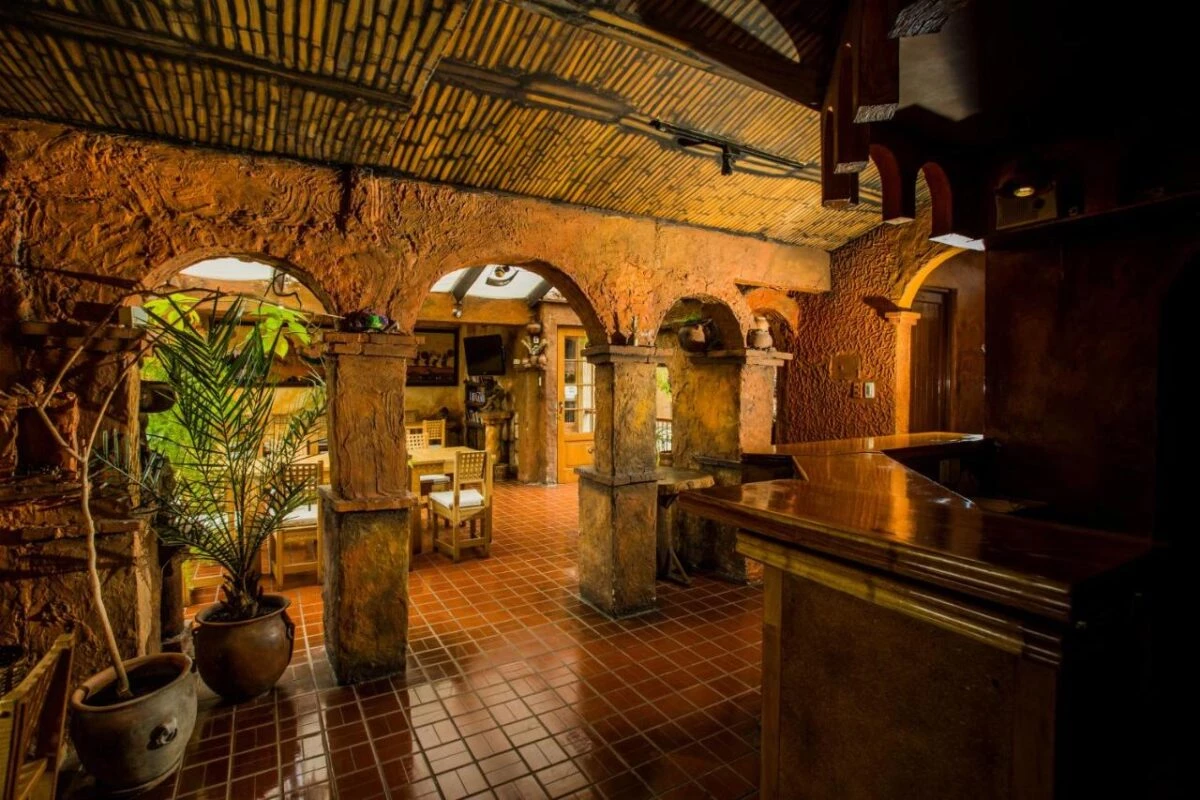
SUSTAINABLE CHOICE: Hotel Rosario ($$)
Located in downtown La Paz and set in a beautiful colonial house. Guests are particularly happy with the friendly staff, the central location and the hotel facilities.
What not to do in La Paz
Do not skip out on La Paz because you heard it was too dangerous or too chaotic. There simply is no place like La Paz, chaos and all.
GET IN AN UNOFFICIAL TAXI: If you are looking to get around town stick to the Radio Taxis, easily recognizable as they have an official sign and telephone number. Do not get into the white cars with a small “taxi” sign.
RELY ON YOUR CREDITCARDS: Many places will only accept cash, make sure to always have a few Bolivianos on hand. If you do want to use credit cards, I found that VISA usually worked while Mastercard for some reason did not.
“WING IT”: Ask your accommodation if the area you are planning on visiting is safe to visit. Most places are perfectly fine during the day, but can get a bit hairy at night. Plan accordingly!
PURCHASE WITHOUT HAGGLING: If you are heading to the market, put on your best bargaining cap because its part and parcel of an authentic experience. Take it from a local.
How to get to La Paz
FLY – Most international flights will make a stopover in Santa Cruz before heading to El Alto Airport (the closest airport to La Paz). All major South American airlines (TAM, LAN, TACA, etc.) and domestic airlines (Boa, TAM Militar, Amaszonas and Aerocon) fly directly into El Alto Airport.
Getting from El Alto Airport to La Paz
TAXI – Fares from the airport to downtown La Paz vary between Bs 60-100. Taxis are located right outside the exit of the airport
MINIBUS – The minibusses run from El Alto airport to Sopocachi and cost Bs 4. To catch a minibus head to the arrivals section of the airport. Mini-buses leave once they are full.
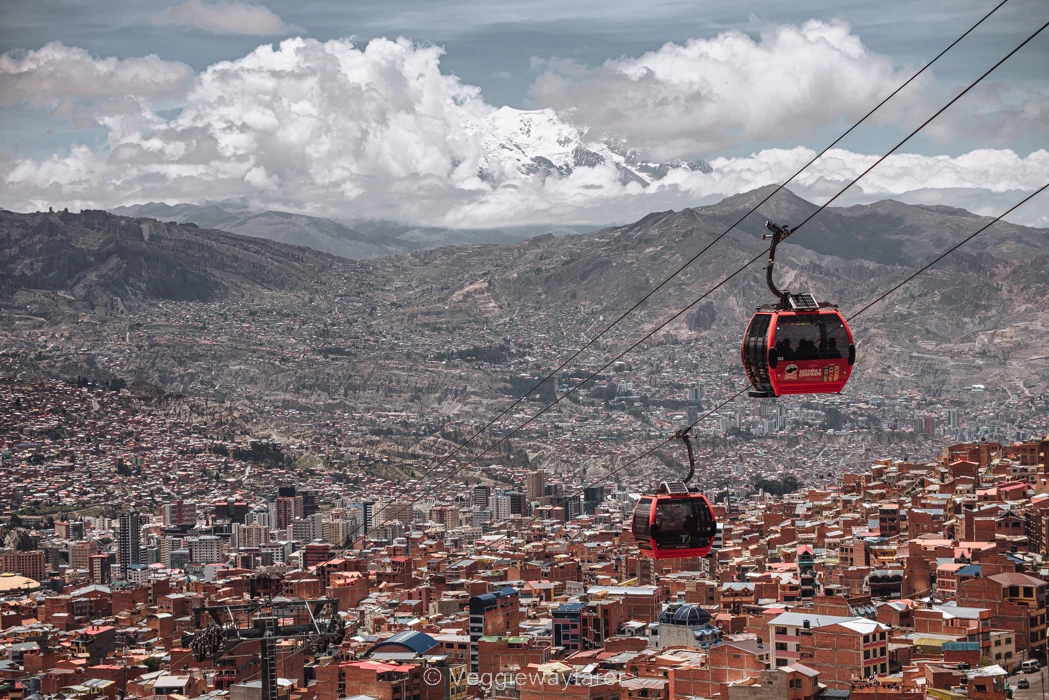
How to get around La Paz, Bolivia
Busses in la paz.
PUMAKATRAI BUS TICKETS | Purchase on the bus, single fair or with a multi fair Smart Card ROUTES | These busses run 7 official routes with 410 official bus stops SCHEDULE | Download the app “La Paz Bus” to consult the schedule FARES | The fare for this bus is Bs 2.50, 2.30
MINIBUSES TICKETS | Purchased on the bus ROUTES | These minivans have fixed routes, they however do not have traditional bus stops where you can hop on and hop off. Therefore if you see one that is going your route, simply flag it down to get on. FARES | BS 1.5 – 3.00
Ride the cable cars in La Paz
TICKETS | Purchase at the Cable Car Station (single fair or multiride card) ROUTES | 10 different routes SCHEDULE | https://www.miteleferico.bo/nuestras-lineas FARES | Bs 1.5 – 3.00
Taxi and ridesharing apps
TAXI: It is safer to take the radio taxis that belong to a company with a sign and telephone number. Avoid taking white cabs that only have a “taxi” sign. G enerally, fares within the center vary from Bs 5 to 20. From downtown to the South Zone between Bs 25 to 35.
TRUFIS: These are shared taxis that operate on fixed routes. They are generally faster and more comfortable than micros or minibusses, but they can also be a bit more expensive. Fares: from Bs 2.00 to 3.50.
YANGO: Yango is a popular ride-hailing service that operates in Bolivia. Like other ride-hailing apps, Yango allows users to request a ride through their mobile app, and drivers pick up passengers and take them to their destination.
Map of places to visit in La Paz
Have a look at the interactive Google Map to get an idea of where the various La Paz attractions are location as well as the recommended accomodations.
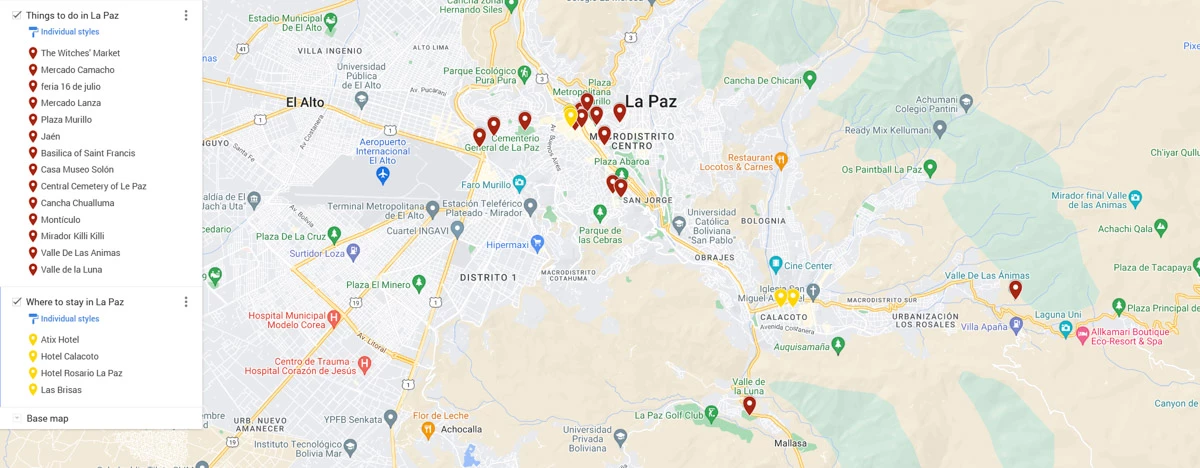
What to eat in La Paz
Salteñas: Empanadas filled with meat but in many places, you can find vegetarian and vegan versions. They are delicious and if you eat them without making a mess, you have passed the litmus test of a good paceño. Best places for vegetarian Salteñas are: Salteñas Paceña, El Hornito and Salteña Mania.
Marraqueta : A round, white bread with a crispy crust and a soft, fluffy interior. The bread is typically eaten for breakfast or as a snack, and is often served with butter, jam, cheese and a hot and delicious coffee.
Api with buñuelos: Api con buñuelos is a traditional Bolivian drink and dessert, especially popular in the city of La Paz. Api is a hot drink made from purple or white corn, cinnamon, cloves, and sweetened with panela or sugar. It is usually served with buñuelos, which are small dough balls fried and sprinkled with sugar. One popular place to try this is Api Mani (21 Street San Miguel)
Tucumanas: A deep-fried empanada that is typically filled with beef, onion, potato, and spices Tucumanas are typically sold by street vendors or in small eateries known as “tucumanerías.” They are usually served with a spicy tomato sauce called “llajua” and are often eaten as a snack or a light meal.
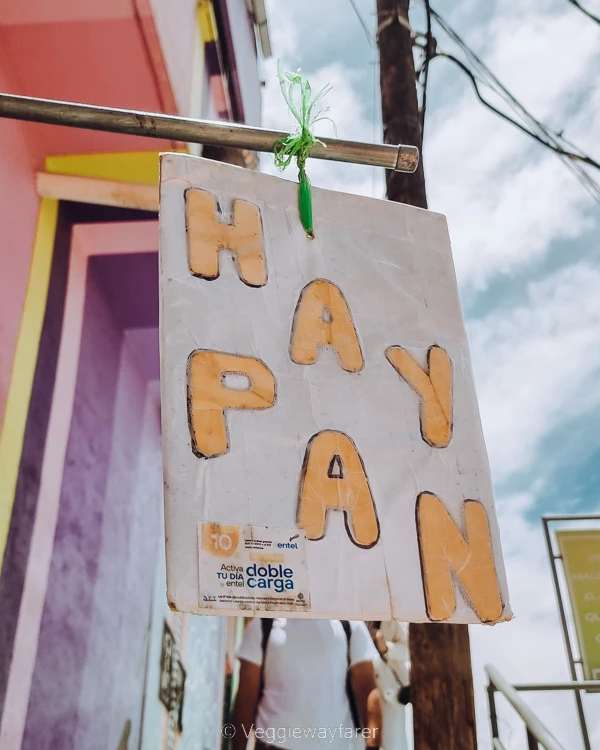
Vegetarian-friendly restaurants in La Paz
- Namas té – (Zoilo Flores 1334 ): Vegan restaurant offering wide variety of plant-based dishes including salads, soups, sandwiches and smoothies. Be sure to try the vegetarian Tucumanas here.
- Go Green – (Montenegro Avenue 1188 2. Sanchez Lima 2326 ): Although the lunches are delicious, this restaurant is characterized by its vegetarian and vegan fast food. They have everything from burgers and fries to nuggets and tacos.
- Aguacate – (Bloque N3, Jaime Mendoza, San Miguel ): A vegan restaurant which specializes in (vegan) Among its specialties are anticuchos (grilled skewers), nuggets, choripanes (Chorizo on a bun with salad) and its famous healthy bowls.
- Lupito – (Cardón 14 Sopocachi ): Affordable vegan food
- HB Bronze Coffee Bar – (Plaza Tomas Frias 1570, La Paz, Bolivia): Excellent national coffee, cozy vibes and a good selection of sweet and salty nibbles.
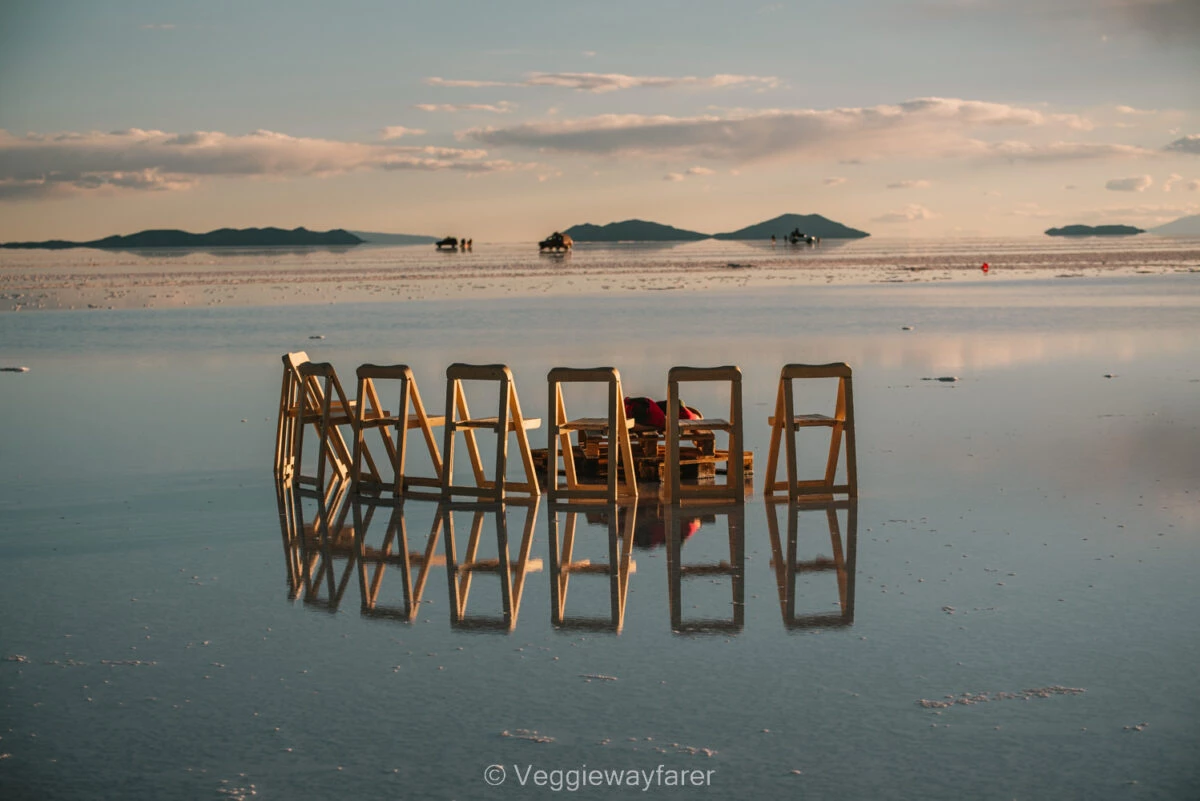
Day trips from La Paz
Salar de uyuni.
READ | Mirror effect on the Salar de Uyuni The Salar de Uyuni is one of the most visited places in all of Bolivia. The vast white expanse of salt stretching out endlessly is quite unique. Day tours include an overnight bus from La Paz to Uyuni, and back. Time permitting I would highly recommend investing in a multi-day tour which not only includes 2 nights on the Salar (stargazing anyone?) but also the beautiful colored lakes surrounding it.
Los Yunges – Bike the Death Road
Thrill seekers will want to look into the highly popular day tour from La Paz to Los Yunges , known for its lush vegetation and the 69 km (43 mi) winding route known as “Death Road”. The bike ride is one of the most scenic, and hair-rising adventures Bolivia has to offer.
Lake Titicaca
One cannot visit Bolivia and skip beautiful Lake Titicaca! Take a day tour that leaves from La Paz , combine sailing on Lake Titicaca with a visit to Copacabana and Yumani as well as hiking on Isla del Sol.
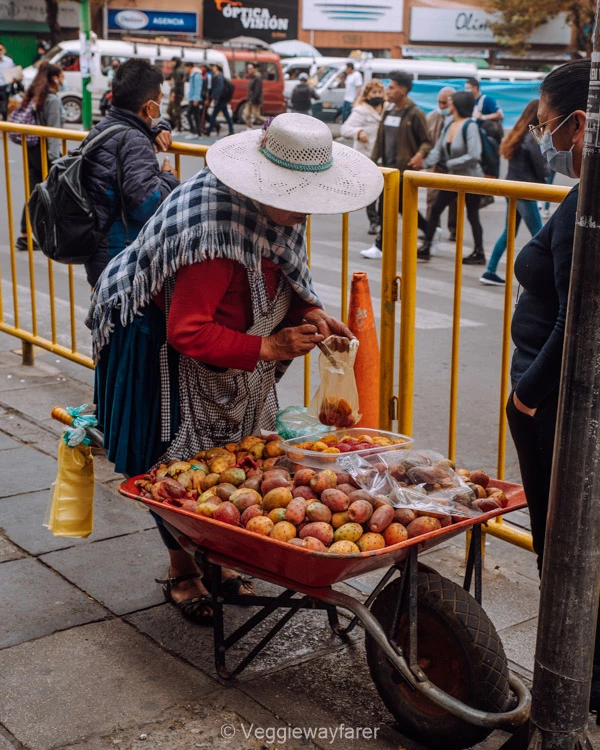
Best time to visit La Paz
La Paz can be visited year-round and does not vary much in terms of temperature, regardless of the seasons. Average temperatures in summer hover between 17°C (62°F) and 7°C (44°F) while winter temperatures are around 19°C (66°F) and -1°C (30°F).
While many La Paz guides say to avoid the rainy season (December to March), personally I would highly recommend visiting around Carnival (traditionally held 40 days before Easter). We went in February as we wanted to see the UNESCO-classified Oruro carnival . During Carnival, La Paz is awash with Carnival celebrations which included brightly colored folkloric costumes, street parties and millions of cans of spray foam, which you will be covered as you walk through the city.
Alternatively, time your visit with the Feria de Las Alasitas (January and February). The fair is a celebration of the indigenous Aymara culture and is centered around the sale of miniatures representing people’s wishes and aspirations for the coming year.
Altitude La Paz Bolivia
La Paz is the highest capital in the world, located at a staggering 3,600 meters (10,650 feet) above sea level. Upon landing I immediately had a headache and experienced shortness of breath. If La Paz is your first stop of an extended Bolivia trip, consider planning in a few days to acclimatize.
Make sure you drink lots of water or coca tea and if need be head to the pharmacy and ask for Sorojchi pills, which will help with altitude sickness.
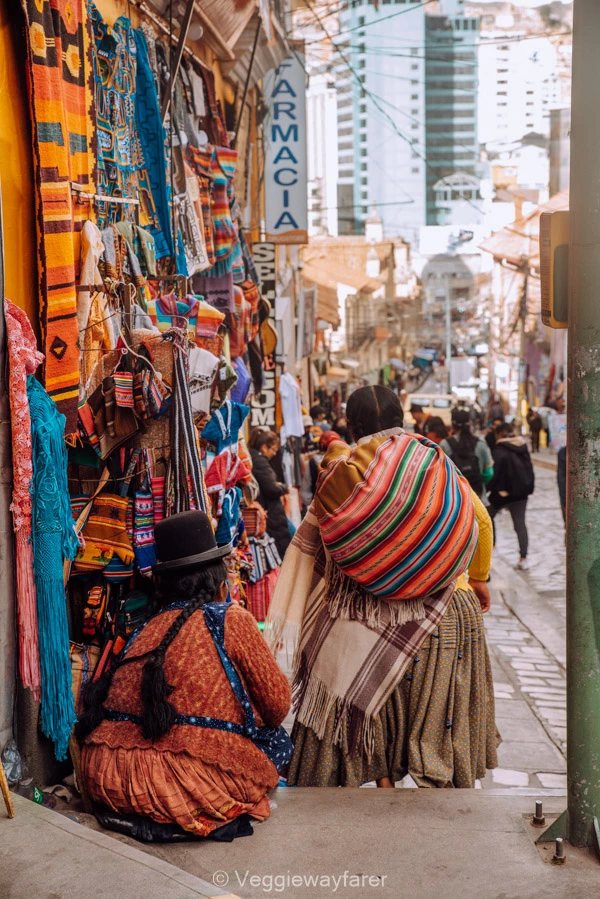
Is visiting La Paz safe
La Paz, like any large city, has its share of safety concerns, but it is generally considered safe for tourists if you take the necessary precautions. The crime rate is lower than in some other Latin American cities, and violent crime against tourists is relatively rare.
However, there are still some areas of La Paz that are best avoided, especially at night. These include El Alto, Villa Fatima, Sagárnaga Perez Velasco and the areas around the bus terminal and the cemetery. It is also recommended to avoid walking alone at night, and to keep a low profile and avoid wearing flashy jewelry or carrying expensive items.
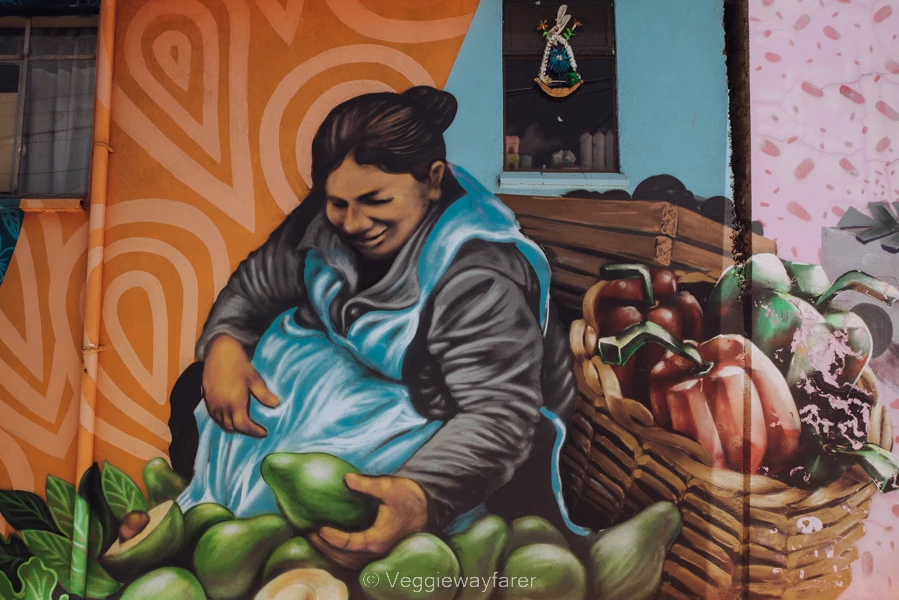
Recap of the best things to do in La Paz
Ever-bustling La Paz is a city that is well worth spending a few days exploring – albeit to acclimatize from the breathtaking altitude. Spend one day navigating the chaotic downtown of La Paz with an (obligatory) visit to the Witches Market, Caille Jaén and the San Francisco Church. Grab a drink or some fragrant streetfood in the hip Sopocachi neighborhood before hopping on and off the colorful cable cars to visit the outskirts of La Paz including the Chualluma neighborhood and Moon Valley. Time permitting book a tour to visit the Cholets and the Feria 16 market in El Alto.
MORE TRAVEL RESOURCES FOR VISITING BOLIVIA
South America: 10 Vibrant Carnivals in Latin America Bolivia: 10 Reasons to visit Bolivia Bolivia: Complete guide to Oruro Carnival Bolivia: Complete guide to Salar de Uyuni in rainy season Bolivia: 15 Unmissable places to see in Bolivia Bolivia: Explore the colorful Chualluma neighborhood in La Paz
Things to do in La Paz – Pin it
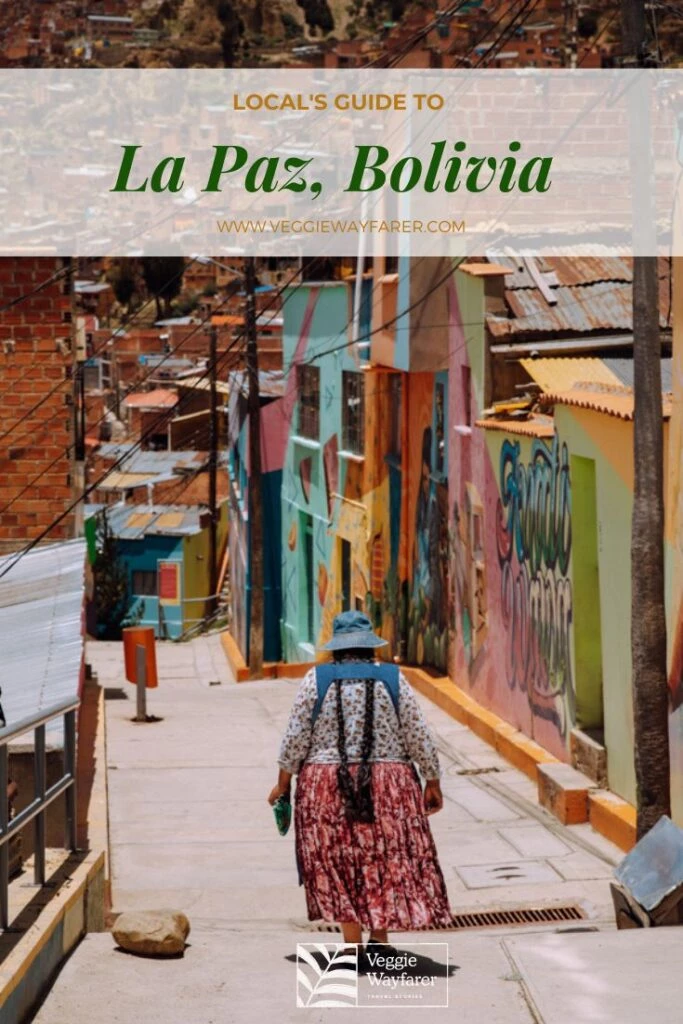
RELATED POSTS
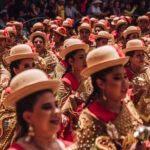
Caroline Muller is an award-winning travel blogger. She writes and photographs full-time while oscillating between Sicily and Brussels as a home base. She has documented over 60 countries across six continents and does not plan to stop any time soon. A staunch vegetarian for over 25 years, she loves exploring local cuisine in search of that perfect (plant-based) mouthful. With this blog, she hopes to help you travel slower, more sustainably and a hella lot more meaningfully. Pack your bags!
Submit a Comment Cancel reply
Your email address will not be published. Required fields are marked *
Save my name, email, and website in this browser for the next time I comment.
Submit Comment

Thanks for dropping in! My name is Caroline , and I am a full-time writer & photographer. With this blog, I hope to harness the power of travel to do good in the world. Think connecting with local cultures, sustainable tourism , and in-depth guides to known and lesser-known adventures. Adventure awaits!

Looking for something?
La Paz, Bolivia Travel Guide + 12 Things To Do In La Paz
Updated February 2024 , La Paz, Bolivia Travel Guide + 12 Things To Do In La Paz was originally published in June 2020
On my first trip to South America , we chatted with countless other backpackers as my best friend and I made our way across Bolivia, Peru , and then later after she left, Ecuador for me. The vast majority of these people had already been to La Paz, lamenting about how much they didn’t like it.
We actually flew straight in and started from La Paz. We landed at about 5 am and were welcomed into the city by a gorgeous sunrise as we took a taxi down from the airport into downtown La Paz.
I much preferred La Paz to say Lima. There was just something about its mixture of indigenous tradition, Andean Baroque architecture, wild mountains surrounding, and it’s rough around the edges persona that lured me in.
Of course, La Paz has its downside and problems too, is polluted with exhaust, arid, and riddled with constant strikes and protests among other things. But if you don’t mind thrusting yourself into chaos, La Paz will be a delight.
See 10 Epic Photos To Make You Want To Visit Bolivia
Need Travel Insurance and Evacuation Services for Bolivia?
Start shopping for travel insurance plans over at IATI Insurance . Readers of the Adventures of Nicole get a 5% discount off your plan.
The Adventures of Nicole partners with Global Rescue to offer the world’s leading medical evacuation and security advisory services. To travel with peace of mind, shop evacuation coverage at Global Rescue .
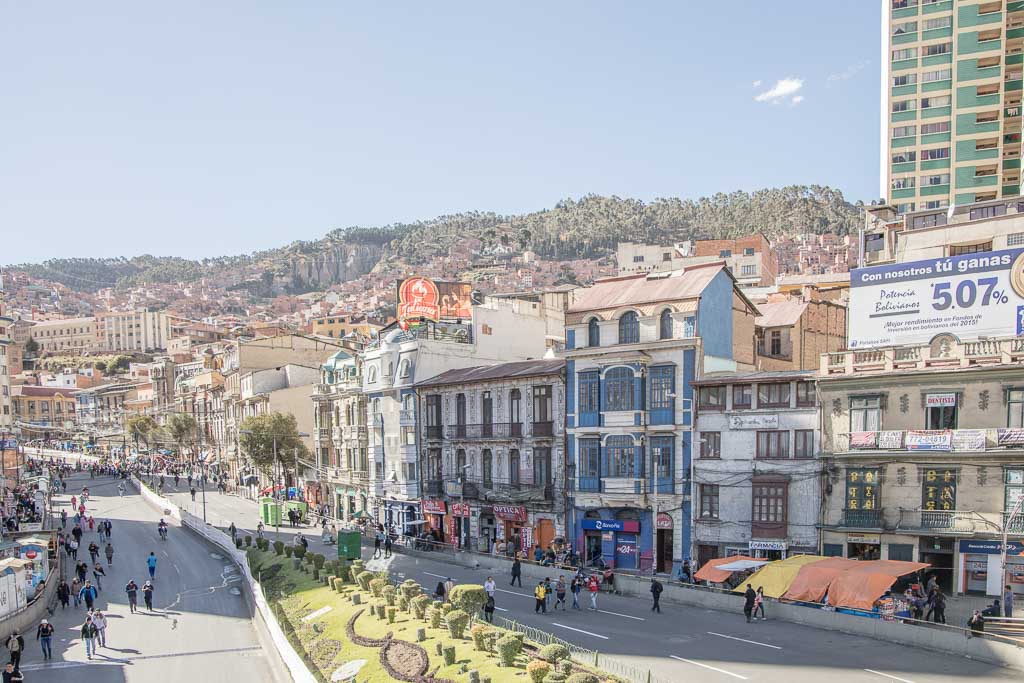
A Quick History Of La Paz
La Paz originally existed as a settlement called Laja, inhabited by the Aymara. In 1548 the Spaniard conquistador Alonzo de Mendoza founded the city in Laja. A short period of time later the city of La Paz was relocated to Río Choqueyapu, 36 kilometers away.
The next two centuries have a tumultuous history under the Spanish. In 1809 an uprising finally lead to the liberation of Bolivia from Spanish control and gained independence.
Things To Do In La Paz
Take a walking tour of la paz.
One of the best ways to learn about a city, understand its history, and to just get to know it a bit better is to take a locally led walking tour. If you’re looking to join a city tour of La Paz, I recommend taking a Free Walking Tour of La Paz with Ronny Celi.
Mercado de las Brujas (Witches’ Market)
I think the Mercado de la Brujas is a great introduction to La Paz and Aymara culture, for those just arriving into the city. The market is comprised of shops run by Aymara Yatiri (a local witch doctor) selling goods mainly used in traditional Aymara rituals, such as the baby llama fetuses you’ll definitely hear about that are traditionally buried under the foundations of homes as an offering to Pachamama. Amulets, dried frogs, medicinal plants, and potions can be found scattered throughout the market.
Chualluma is a neighborhood in La Paz that has recently become well known after being painted vibrant colors between March and July 2019.
I visited before this, so I did not get to see the colorful buildings for myself, but next time in La Paz I definitely plan to stop on by. Since I did not visit myself, I urge you to read more about visiting Chualluma on this post by the Partying Traveler (he’s actually how I first got wind of Chualluma because we follow each other on Instagram).
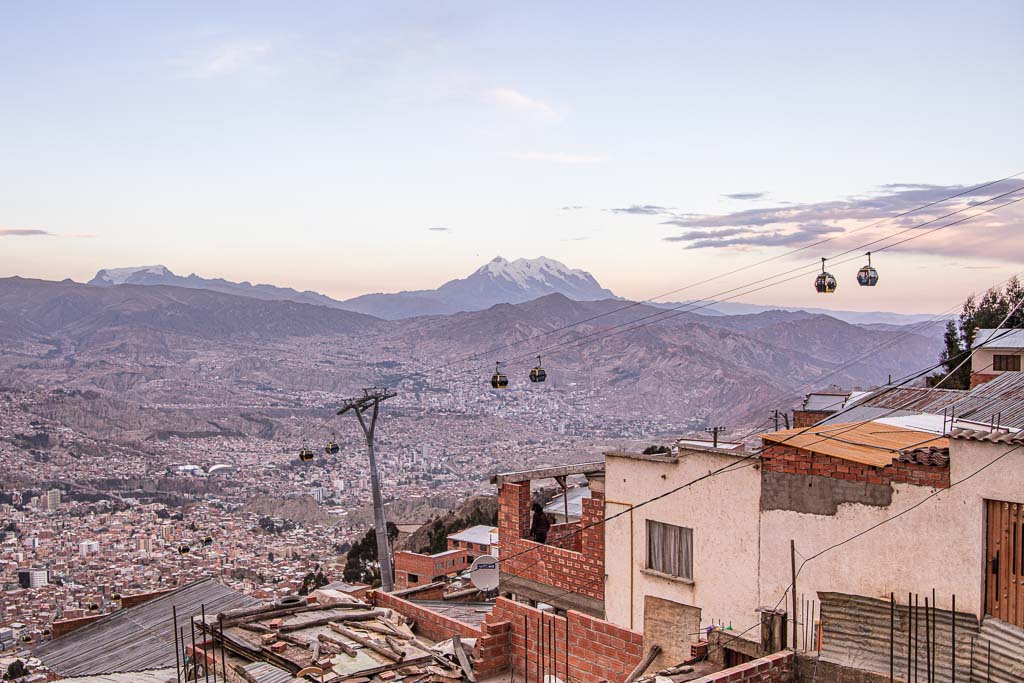
Ride The Mi Teleferico
The Mi Teleferico is La Paz’s cable car system, consisting of over 25 stations and 10 lines, which is likely one of the most beautiful public transit systems in the world. We found this to be a handy way to move about the city, plus get amazing views while you’re transiting.
Mi Tereferco tickets: Initial fare is B$ 3
Casco Viejo (Old Town)
Casco Viejo is La Paz’s old town, centered around lively Plaza Murillo, named after Bolivian hero Pedro Murillo, who played a key role in Bolivia’s independence.
Several important buildings are located in the plaza, such as the Presidential Palace, National Congress of Bolivia, and the Cathedral of La Paz.
Cholita Wrestling
Cholita, until recently was a racial slur directed toward indigenous Bolivian women. After an indigenous rights revolution lead by president Evo Morales, bringing pride to the traditional garb of the local women.
In the mid-2000s women’s interest in wrestling skyrocketed, many of which were domestic violence survivors. Eventually, this led to theatrical wrestling shows (similar to WWE) being put on.
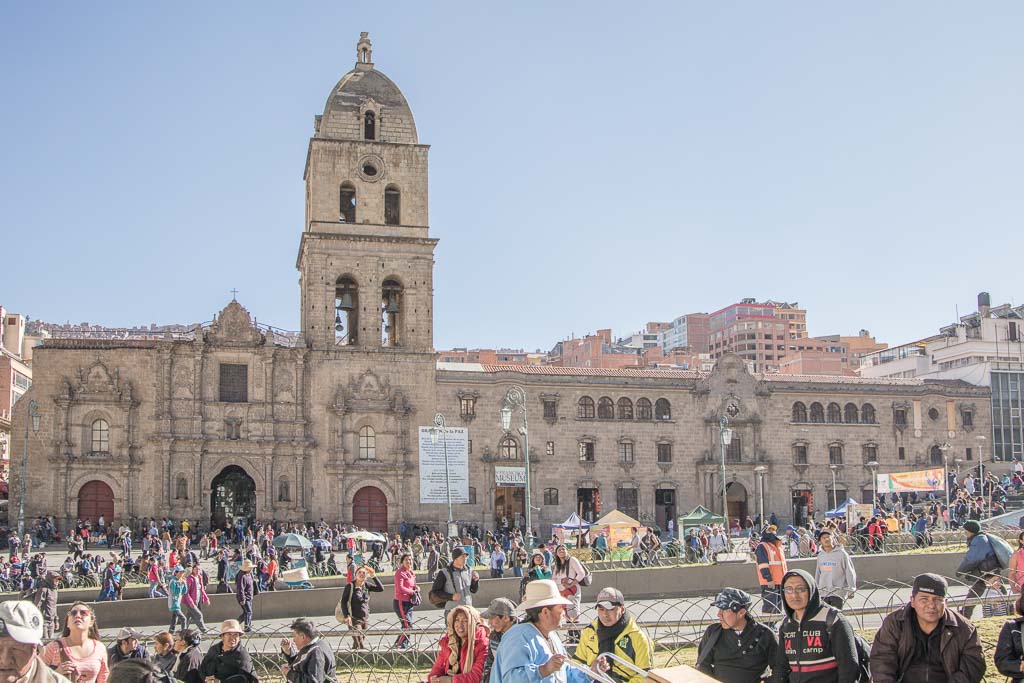
San Francisco Basilica
Founded in 1548 and renovated from 1743-1772 following a collapse after a heavy snowfall, the San Francisco Basilica is a La Paz landmark. Don’t miss the adjacent Museo San Francisco.
The plaza out front is a common site of rallies and protests in La Paz (we found this out when on our first evening trying to get a taxi from our accommodation to the bus station and received a resounding NO!).
San Francisco Basilica Museum entrance: B$ 20
Cementario General
Establishment in 1826, the Cementerio General, located between the city center and El Alto is a unique necropolis. It’s almost a city within a city, with human remains stored in apartment-like compartments for 10 years, giving families time to sort out a burial site or have the body cremated.
In the 1930s due to the evergrowing population of La Paz, citizens were running out of places to bury loved ones and the Cementario General was the answer.
Calle Jaen, located just off of Plaza Morillo is a street of La Paz, lined with colorful 18th century colonial homes and several different museums. The museums include, Museo Casa de Murillo, Museo del Oro, Museo de Metales Preciosos, Museo del Litoral, Museo Costumbrista Juan de Vargas, and Museo of Instrumentos Musicales.

Souvenir Shopping At Calle Sagarnaga
Calle Sagarnaga is one of the most touristy streets, but still a must-do on a visit to La Paz. The street has catered to travelers since the 18th century. You’ll find hostels, souvenir shopping, tour agencies, and more on Calle Sagarnaga.
Parque Mirador Laikakota
This park offers some of the best panoramic views of La Paz. Parque Mirador Laikakota can easily be reached by the Mi Teleferico from downtown La Paz.
El Alto is actually the highest metropolis in the world, and it home to La Paz’s International Airport. You can easily take the Mi Teleferico up to El Alto and explore this city in its own right. From the top, you’ll also have grand aerial views of La Paz and the surrounding mountains.
Heading off to Salar de Uyuni? Read my best tips and tricks before visiting the Salt Flats
Outside La Paz
Valley de la luna (moon valley).
Named after is lunar-like appearance, Valle de la Luna is one of La Paz’s most popular day trips outside the city. It was on our shortlist of places we wanted to visit in La Paz, but we never made it. As I didn’t visit on my own right, go check out more info over on An Adventurous World and learn how to get there on your own.
Another popular La Paz day trip is to the Pre-Columbian archaeological site of Tiahuanaco. If you’re an avid history buff you’ll definitely enjoy learning more about this lost civilization.
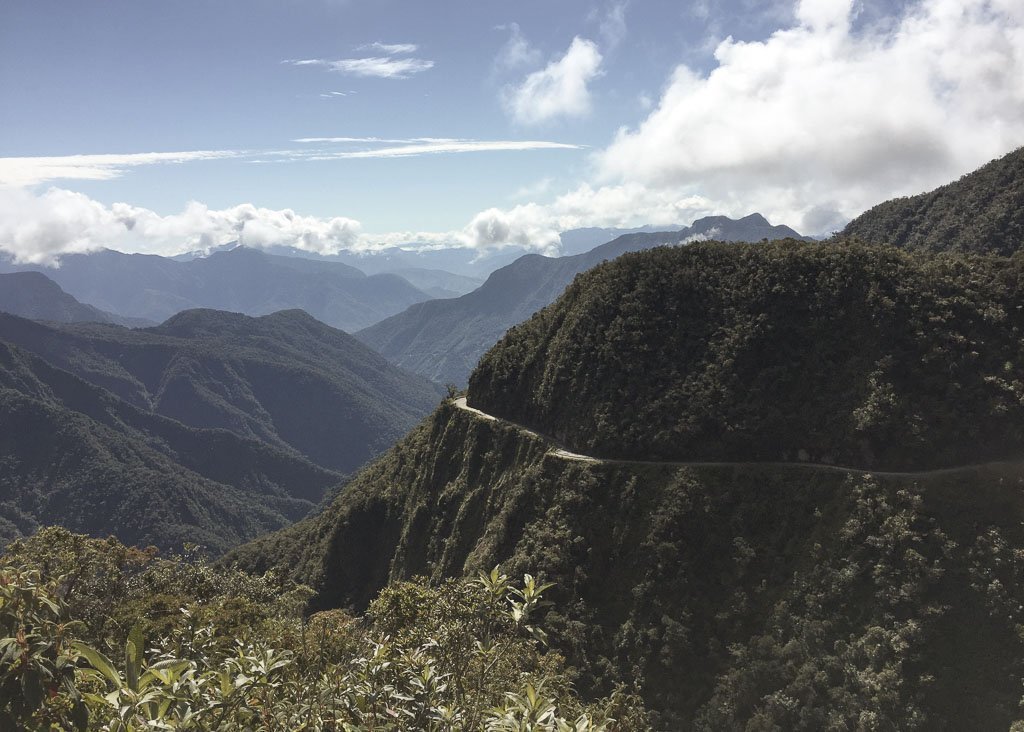
Cycle The Death Road
Being adventure junkies that started out meeting in gymnastics and graduating on to snowboarding and backcountry escapades, cycling the North Yungus Road, more commonly known as the Death Road , was a must-do on our visit to Bolivia.
The Death Road connects the high-altitude capital of La Paz to Bolivia’s lower-lying Yungus Amazonian Rainforest. If you take a cycling day trip as we did, you’ll start from La Cumbre Pass, towering at 4,650 meters. From there it’s all downhill, eventually taking you to the down of Coroico, at only 1,200 meters to end the trip.
You’ll need to pack layers for this trip as it was snowing at the top of the pass and we had to dodge patches of ice on the road, but by the time we reached the bottom, we were in t-shirts and shorts.
The Death Road is no small feat though, several tourists have died over the years cycling down it. I recommend only going with a reputable company.
Read all about it: Cycling Bolivia’s Death Road
Book your Death Road cycling trip here !
Summit Huayna Potosí
No small feat by any means, Huayna Potosi is considered to be among the easier 6,000+ meter peaks in the world. Huayna Potosi is the most popular summit in all of Bolivia thanks to its proximity to the city.
There are several routes to the summit, the most popular and easiest being a two-stage climb that is usually completed in 8-12 hours.
It’s recommended to have spent 3-6 days in La Paz or at high-altitude prior to departing on this climb. Even taking the easy route up is no small feat, and if you’re not an experienced mountaineer you should definitely hire a guide.
Our Airbnb host in La Paz on our second visit back to the city had climbed it (as well as a number of other high altitude peaks) and told us about it. If you want to read up about an experience climbing Huayna Potosi, check out this post on Czick on the Road.
Book a guided expedition up Huayna Potosi here
Valle de las Animas
This eroded valley is full of needle-like rock formations that reminded early visitors of petrified souls, hence the name meaning ‘Valley of the Spirits’.
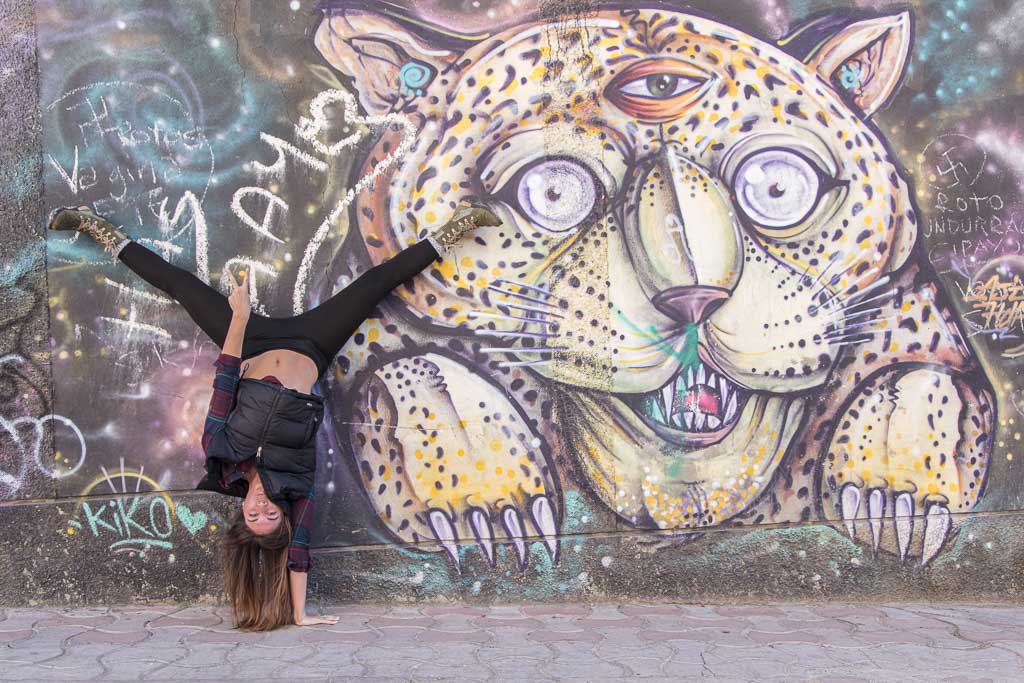
Where To Sleep In La Paz
St. Peter’s LLama Hostel | Booking.com |
Madero Hotel & Suites | Booking.com |
Hotel Mitru Sur | Booking.com | Hotels.com |

Have Any Questions About Visiting La Paz, Bolivia?
Ask in the comments section below. Grab a copy of Bradt’s Bolivia to help you start planning for La Paz and beyond.
More Posts from Bolivia:
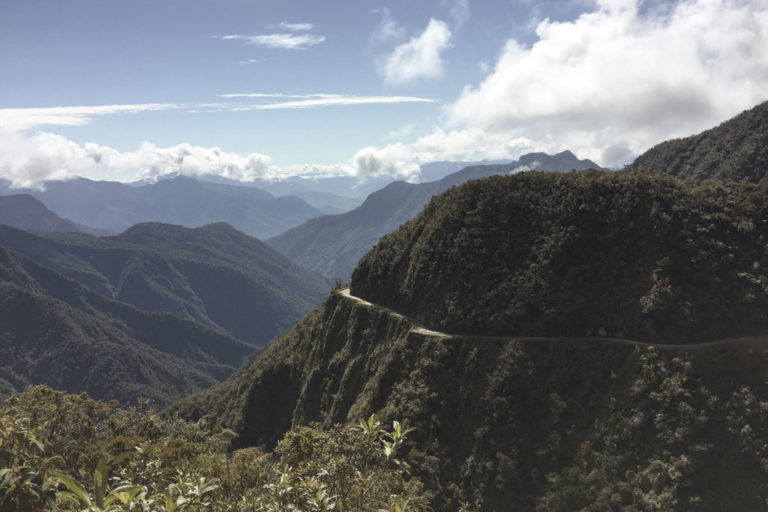
Living On The Edge: Cycling The Death Road In Bolivia
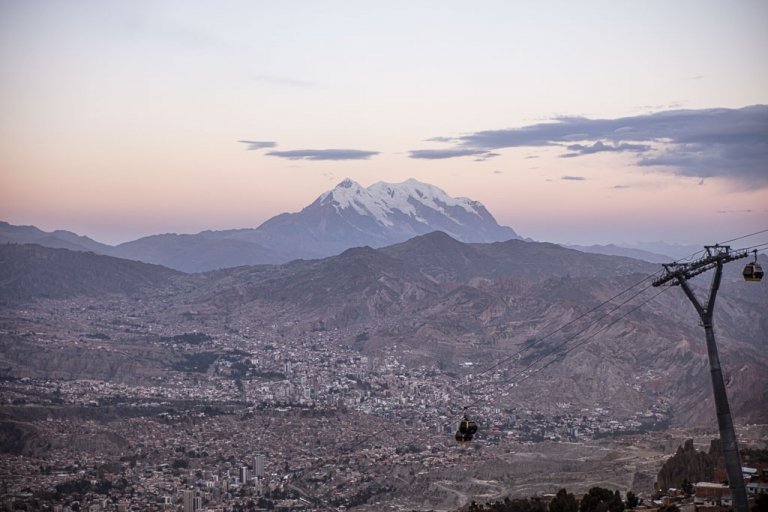
10 Photos That Will Make You Book A Ticket To Bolivia

The Best Road Trips In The World

14 Salar De Uyuni Tips: Visiting the World’s Largest Salt Flat
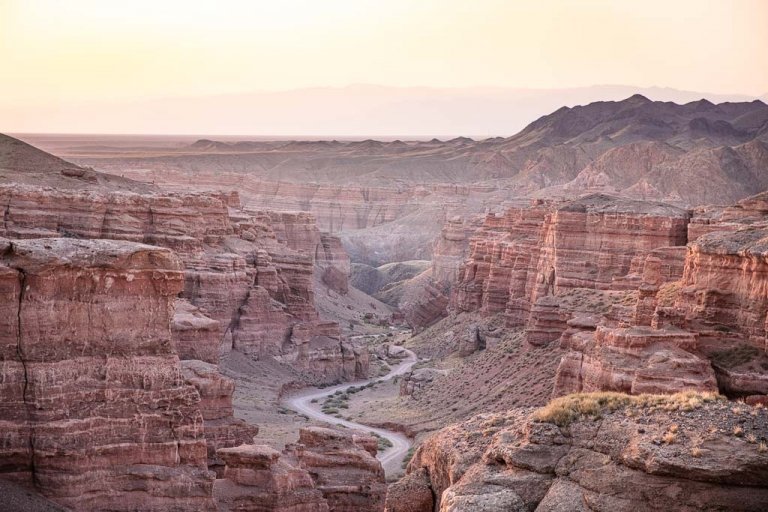

10 Off The Beaten Path Destinations For 2021
Leave a comment cancel reply.
Your email address will not be published. Required fields are marked *
Notify me of followup comments via e-mail. You can also subscribe without commenting.
This site uses Akismet to reduce spam. Learn how your comment data is processed .

Your Travel Guide To La Paz
Juxtaposed with the colorful lifestyle and traditions of the Aymara people, is a cosmopolitan city full of modern cafes, museums, clubs, bars and restaurants. One of the highest cities in the world, La Paz is best explored at a slow pace, taking the time to soak up the city’s rich culture and fascinating history.
Getting To & From La Paz
Located in El Alto, La Paz's international airport is the highest airport in the world at 4,058 m (13,313 ft). The distance between El Alto Airport and the centre of La Paz is around 20 kilometres with an estimated travel time of around 30 minutes. Be aware that during peak hours busses fill up fast, so factor in plenty of time in order to secure a seat.The price of a taxi to and from El Alto airport is Bs 70 ($10 US). Minibuses leave every 5 minutes from Plaza Isabel de Católica and pass by Plaza San Francisco. The cost is around Bs 4 ($0.60 US per person) and busses run daily from 6.15am to 9pm.
Traveling by bus tends to be the most common way all types of travelers get into La Paz, as they either start further up north or south in South America until they make their way into La Paz. Buses are the cheaper and usually, a more comfortable option, while also getting the chance to enjoy the different sceneries throughout the trip.
For those in Peru coming from Lima or Cusco to La Paz, we strongly recommend Bolivia Hop . They are hop-on, hop-off bus service offering a flexible bus pass (50+ options from long distance to short day trips), in which you can stay however long you want in any of the destinations, letting you enjoy travel at your own pace. Apart from this, there’s onboard bilingual assistance on all their busses, as well as discounts on accommodation. But the biggest advantage of traveling with Bolivia Hop with have to be the border-crossing assistance provided by the onboard guides, who will give you the necessary paperwork and instructions, all while making sure you don't get scammed or lost throughout the process. If you want to learn more about them, click here
For those coming from any of the other bordering countries, there are many options to choose from. But as with most things in life, you get what you pay for. We recommend to fully research the companies, read reviews, blog posts and/or contact the company if necessary!
The following links provide information on how to travel between La Paz and other popular destinations in Bolivia:
- Traveling between Copacabana and La Paz
- Traveling between Uyuni and La Paz
- Traveling between Santa Cruz and La Paz
- Traveling between Sucre and La Paz (via Potosi)
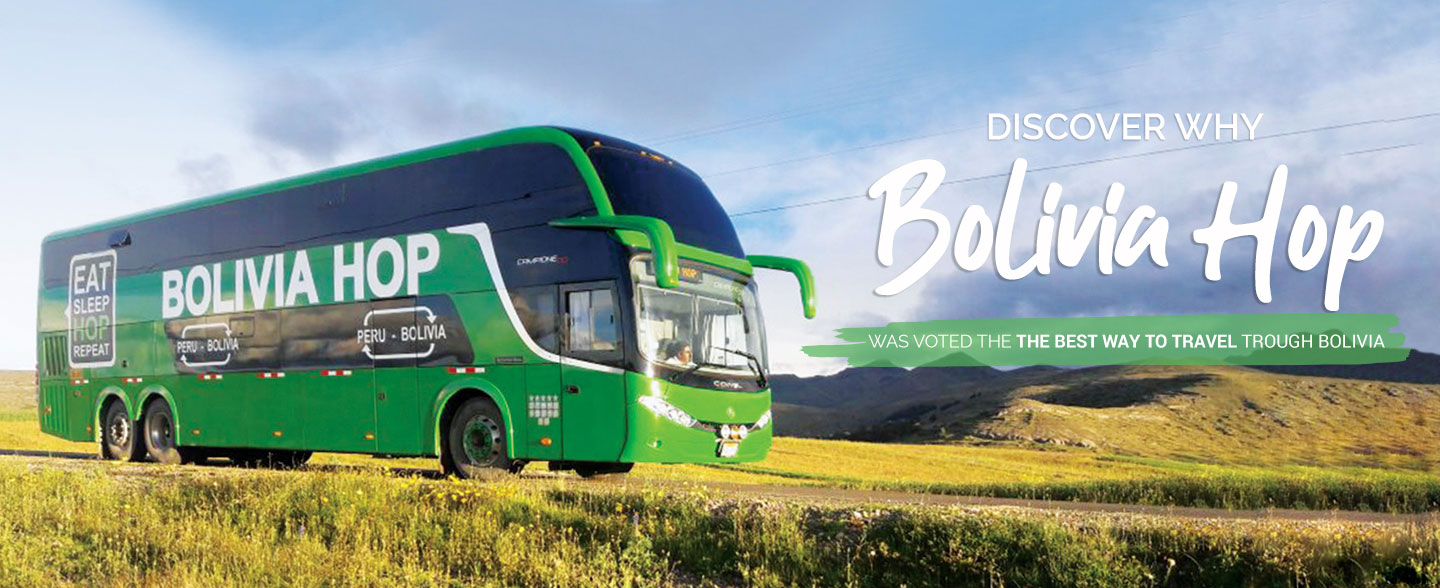
GETTING AROUND LA PAZ
Transport within La Paz is safe and reliable. Traveling anywhere by taxi within the city center will cost around $0.60 per person and local buses are even cheaper again. There is also the option to take the Cable Car which is a fun way to see the city. As in any city, make sure to only take marked taxis and avoid walking by yourself at night.
Bolivian Life Quick Tip:
Top things to see and do in la paz, where to eat & drink in la paz.
RESTAURANTS
Chez Moustache
Kalakitas Food n’ Drinks
Luciernagas Restaurant
Antigua Miami
Cafe del Mundo
Magic K Cafe
Roaster Boutique
Cafe Banais
Tierra Sana
Paceña La Salteña BARS & CLUBS
Wild Rover Hostel
Peña Marka Tambo
Hallwright’s
Where to Stay in La Paz
Arthy’s Guesthouse
Colibri Camping and Eco Lodge
Loki Backpackers
Cruz de los Andes
Hostal Sol Andino
Hostal Naira
Rondezvous Hotel
Hostal Provenzal HIGH-END
Stannum Boutique Hotel
Casa Grande Hotel
Camino Real Suites
La Casona Hotel Boutique
Shopping in La Paz
La Paz plays host to several bustling, colorful markets including the one-of-a-kind ‘ Witches Market ‘ as well as the Mercado Lanza and the Mercado Rodriguez where you can sample all kinds of fresh fruit, vegetables and juices.
For those looking to purchase a Bolivian musical instrument, silver jewelry, fluffy alpaca sweater or even a salteña or two, Calle Sagarnaga is a unique place to shop ’til you drop. This bustling strip, located just south of Plaza San Francisco, is lined with businesses catering primarily to tourists, featuring hostels, tour agencies, cafes, souvenir stores and clothing stalls. Due to its popularity, Calle Sagarnaga sees new shops opening on a weekly basis, offering more and more goodies for travelers to buy.
Events & Festivals in La Paz
Finding wifi in la paz.
La Paz is wifi friendly and growing more so every day. Many cafes and hostels have WiFi, and while not boasting the fastest speeds in the word, it does the job for those looking to get some work done or even Skype home.
Further Reading
Because La Paz is largely an offline city, much of the essential information you need for planning your trip is buried in obscure blog posts and Spanish news articles. La Paz Life , is our attempt to bring to light the best the city has to offer and its many hidden gems. Through a combination of thorough research and personal experience we hope to make La Paz as accessible as possible to travelers.
YOU MAY LIKE
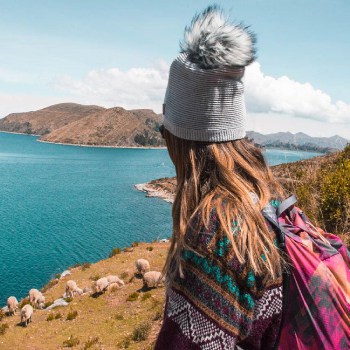
Get ready to discover
BOLIVIA in 2021
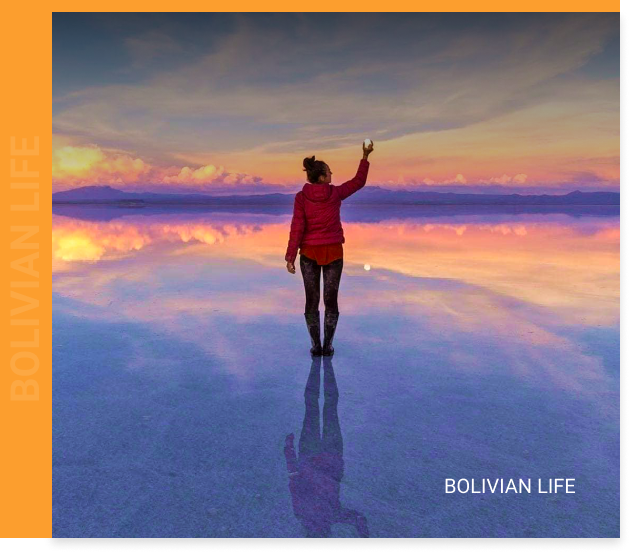
Sign up to stay up to date with all tips and recommendations for 2021 travel

Touropia Travel
Discover the World
10 Top Things to do in La Paz, Bolivia
By Carl Austin · Last updated on November 23, 2023
La Paz is a city that isn’t on every traveler’s radar, but it should be. It’s an amazing city, set among the Andes Mountains and is the highest capital in the world. As Bolivia’s largest city there is a wealth of things to do in La Paz: great museums, stunning views of the mountains and the opportunity to get around by cable car rather than a boring public bus.
Warm clothes are a must, almost any time of year, and do take time to get used to the high altitude before doing serious touring. Plan your trip with our list of the best things to do in La Paz.
10. Chacaltaya Ski Resort [SEE MAP]
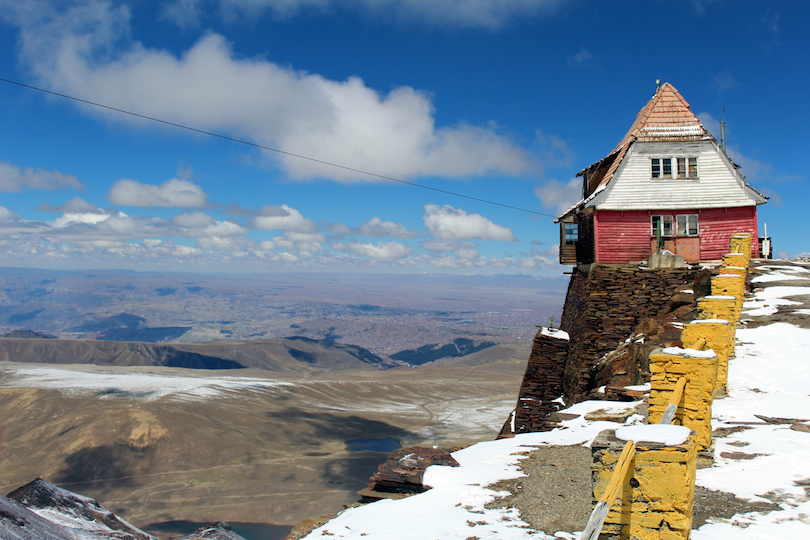
Chacaltaya Ski Resort was Bolivia’s only ski resort. Unfortunately, the 18,000-year-old glacier it sat on no longer exists. Little remains today of what was once the world’s highest ski resort because the glacier melted, a victim of global warming. There’s been no skiing here since 2005. But the resort had a glorious past, once that included the first funicular in South America to carry skiers to the top. Chacaltaya however does offer spectacular views of La Paz, Illimani and Huayna Potosí and a ’50s-style stone ski lodge still remains on the mountain. It’s a high-altitude, relatively easy 100-meter (330-foot) or so climb from the lodge to the summit of Chacaltaya.
9. Plaza Murillo [SEE MAP]
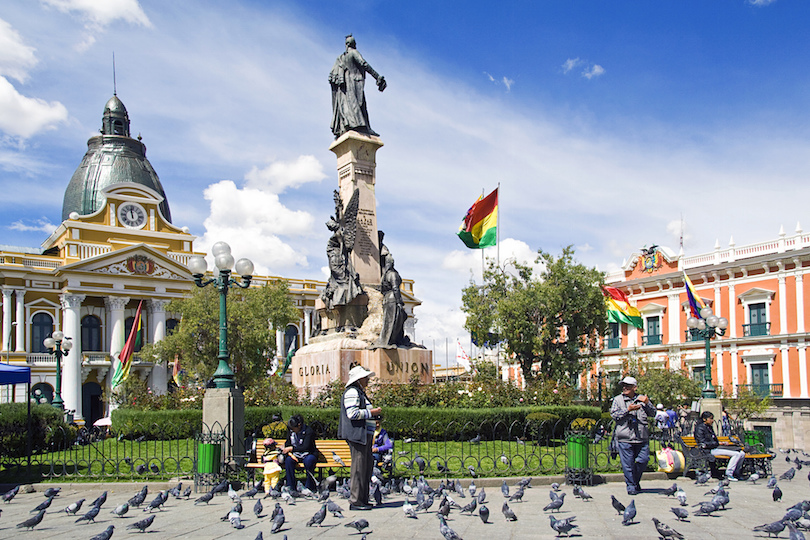
Surrounded by government buildings, including the Presidential Palace, and a cathedral, Plaza Murillo is the central square in La Paz. From the 16th century on, the square, located in what is now the old town, was called the Plaza Mayor, but its name was changed in 1902 to honor Pedro Murillo, a Bolivian leader who was hung by the Spanish in the 1810 independence revolt. The square is filled with pigeons, people feeding them and people resting on benches when the city’s high altitude overcomes them. The plaza is also a place where many city celebrations take place.
8. Witches' Market [SEE MAP]
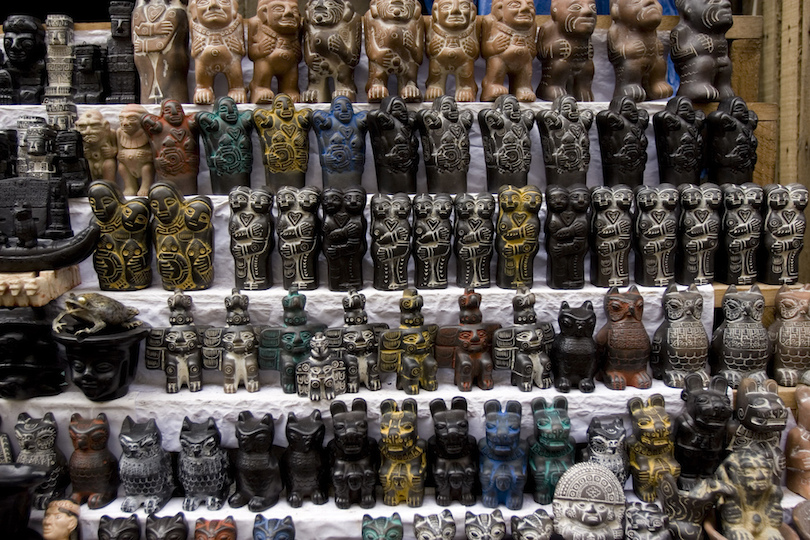
Visitors may want to take an amulet to ward off evil spirits when they go to the Witches Market or Mercado de las Brujas. This isn’t the normal market, unless, of course, one wants to buy dried frogs or llama fetuses, which are the market’s specialty. Llama fetuses are buried in new building and businesses as an offering to the goddess Pachamama.. Herb and folk remedies also are available as are products used to manipulate spirits that exist in the native world.
7. Huayna Potosi [SEE MAP]
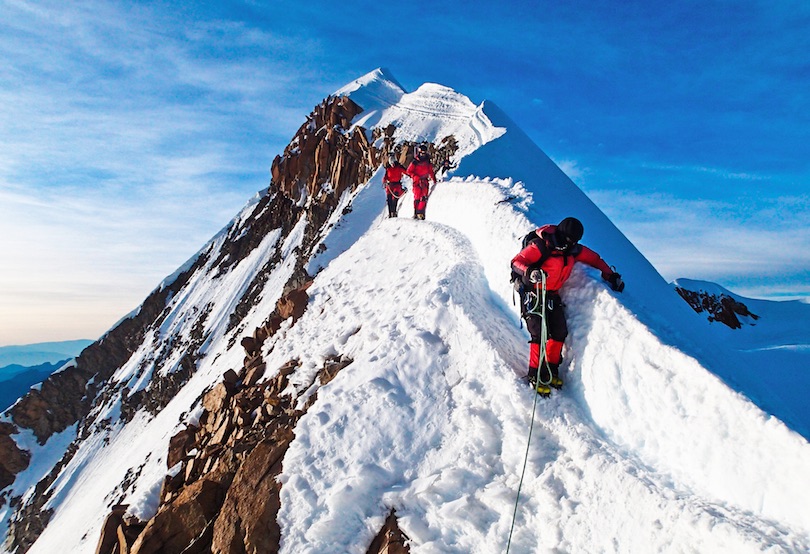
Experienced hikers and mountain climbers may want to give Huayna Potosi a try, but only if they’re fully acclimatized to high altitudes. Located about 24 km (15 miles) from La Paz, this is the most popular spot for hiking in the area. The trek over glaciers is not recommended for beginners, though some have done it. The hike takes two to three days, the first of which is spent practicing for the climb ahead. Mt. Potosi is 6,000 meters (nearly 20,000 feet) high; hikers leave about 3 a.m. to start the climb to the summit on the final day.
6. Basilica of San Francisco [SEE MAP]
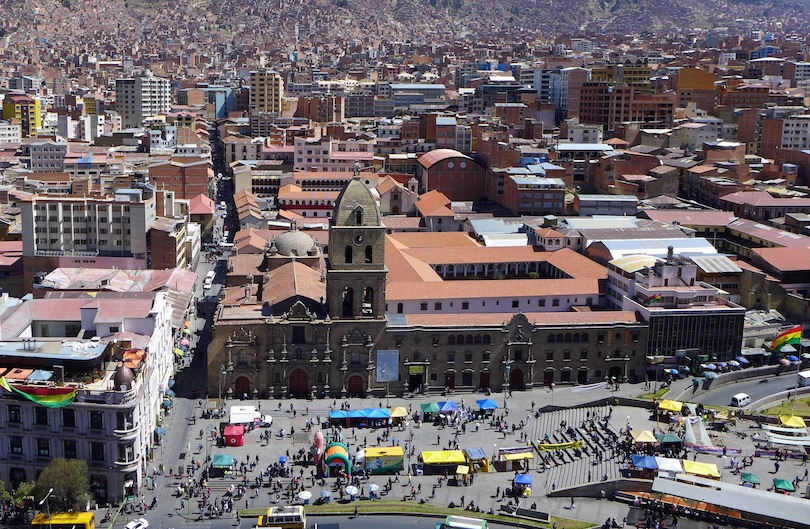
The Basilica of San Francisco predates the founding of La Paz by a year. Construction on the church, dedicated to St. Francisco of Assisi, started in 1548. In 1610, heavy snows caused it to collapse; more than 170 years would pass before it was rebuilt. The church is a blend of cultures: Bolivian native and Catholic art. Its Baroque exterior is decorated with native symbols, including birds, snakes and dragons. The interior has gold-leaf decorated small cedar chapels. Great views of La Paz can be seen from the rooftop.
5. Calle Jaen [SEE MAP]
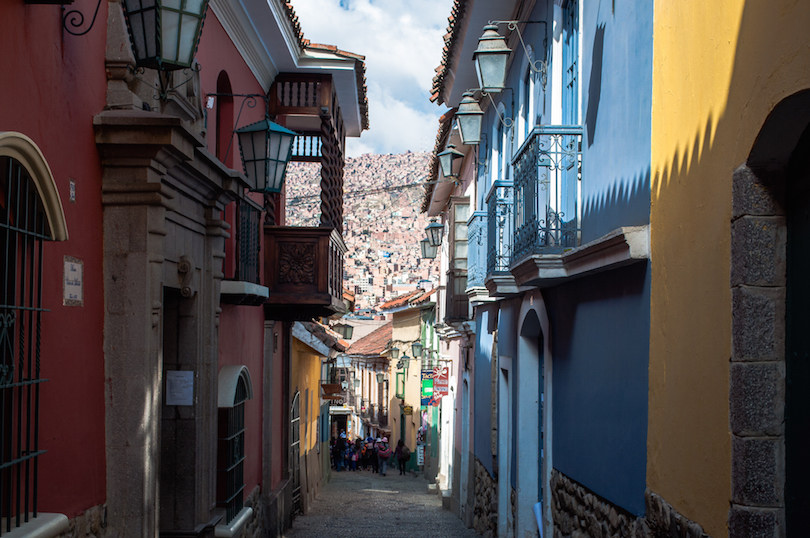
Calle Jaen, near the Plaza Murillo, is a cobblestone street that is considered the finest colonial street in La Paz. The narrow street is lined with brightly colored houses built in the 16th century. Boutiques, cafes and entertainment spots also make up the street’s complexion. Named after the Bolivian revolutionist Apolinar Jaen, Calle Jaen also is home to some of the most important museums in La Paz. They include the Museum do Pre Metales Precioso; the Museo del Libral Boliviano, which commemorates a battle Bolivia lost against Chile, and Museo Costumbrista Juan de Vargas, which contains colorful artifacts from La Paz’s history.
4. Valle de la Luna [SEE MAP]
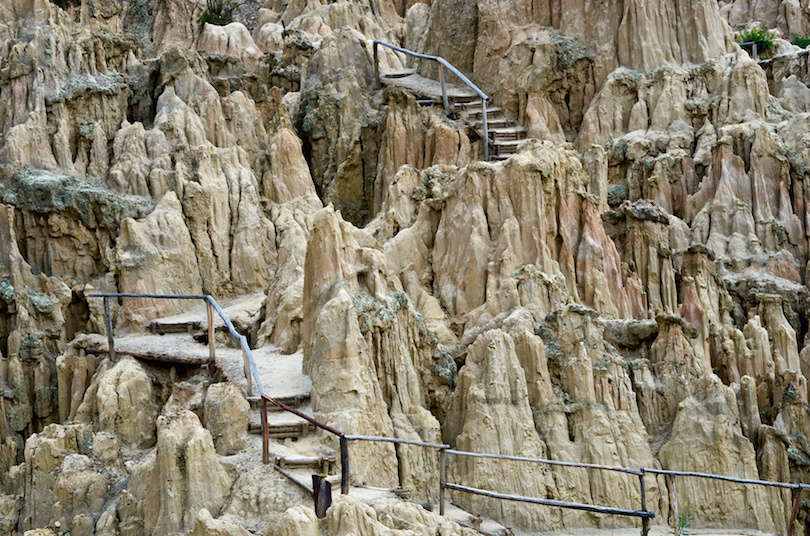
Only a handful of people will ever travel to the moon, but those who want to see what it’s like can visit Valle de la Luna (Moon Valley) just a few miles outside of La Paz. Not really a valley, but an amazing collection of canyons and spires that are reminiscent of the moon’s landscape. The clay and sandstone terrain was formed by erosion over the millennia. Because of mineral content, the rock formations present a colorful scene, ranging from beige to dark purple. This moon valley does have something the real moon doesn’t have: cactus.
3. Cycle the Yungas Road [SEE MAP]
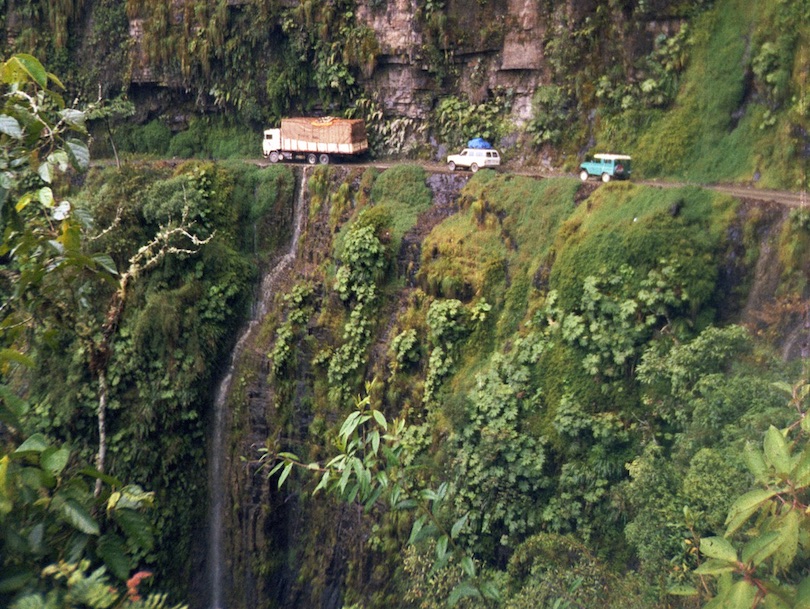
Dubbed the “World’s Most Dangerous Road” Yungas Road runs from La Paz to Bolivia’s Amazon rainforest region in the north of the country. From La Paz, the road climbs around 4,500 meters (15,000 feet) before descending around 1,200 meters (4,000 feet) to the town of Coroico. The road has proved dangerous for those traveling in vehicles, but Yungas has become a favorite thing to do in La Paz for mountain bikers who rave about the 65-km (40-mile) long stretch of downhill riding from La Cumbre back to the city.
2. Day trip to Tiwanaku [SEE MAP]
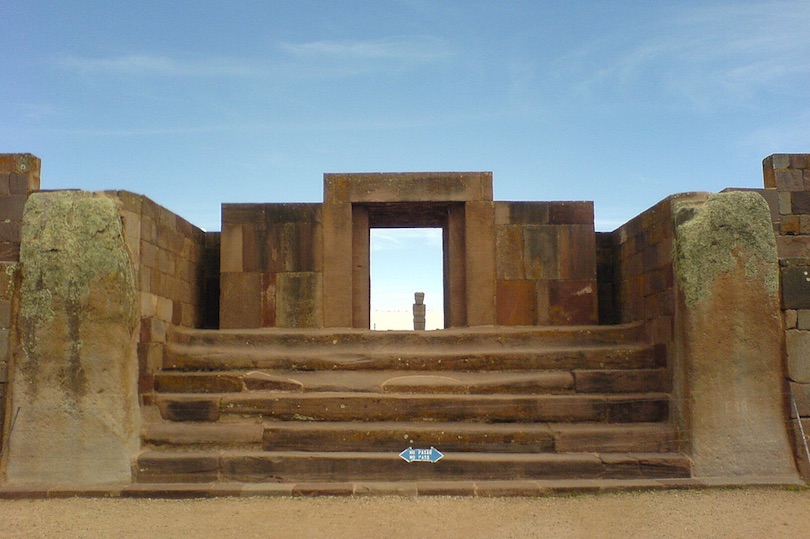
Located 72 km (44 miles) west of La Paz, near the south-eastern shore of Lake Titicaca, Tiwanaku is one of the most important precursors to the Inca Empire. The community grew to urban proportions between the 7th and 9th centuries, becoming an important regional power in the southern Andes. At its peak the city had between 15,000–30,000 inhabitants. While only a small part has been excavated, Tiwanaku represents the greatest megalithic architectural achievement of pre-Inca South America.
1. Mi Teleferico [SEE MAP]
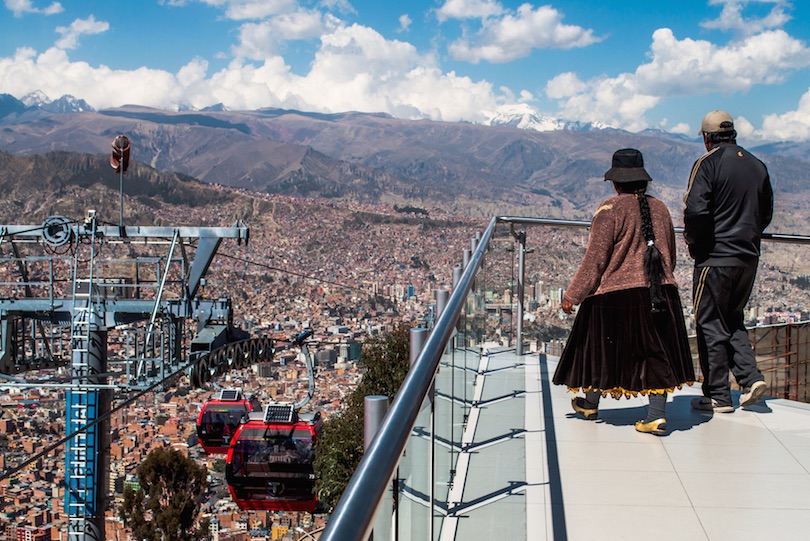
Travelers looking for a different way to get around La Paz may want to consider Mi Teleferico or My Cable Car. It’s a great way to get bird’s eye views of the city while moving around. The state-of-the-art cable car system opened in 2014 with three lines serving 10 stations; additional lines are planned. When it opened, it was the longest aerial cable car system in the world at 10 km (6.2 miles). The Red and Yellow lines connect La Paz with nearby El Alto, a city that is time-consuming to reach by car because of ground traffic.
Best Time to Visit La Paz
As it is located high up on the Altiplano overlooked by stunning snow-capped peaks, La Paz is quite cool year-round with temperatures averaging just 12 to 15°C (53 to 59°F). Despite being the rainy season, many people visit between November and April when the weather is slightly warmer.
Due to the holidays, December (summertime in Bolivia) is by far the most popular month to visit with prices also at their highest. Just after Christmas and New Year’s, the Achocalla Festival and Alasitas Fair in January draw big crowds despite it raining 20 days on average.
February and March remain very rainy which makes sightseeing and being outside a bit less pleasant. Plenty still visit though for its carnival and Semana Santa celebrations. After April, the crowds drop off a bit as winter sets in and its nights get quite chilly. The colourful Fiesta del Gran Poder’s street parades are amazing to see though in May.
July and August are another high season as Europeans have holidays and the dry weather is ideal for exploring all the country’s incredible landscapes. Other than climbing a volcano and visiting Lake Titicaca, there is also Bolivia’s Independence Day to celebrate in August. Prices again rise before decreasing in September once most of the crowds have headed home.
Share this post:
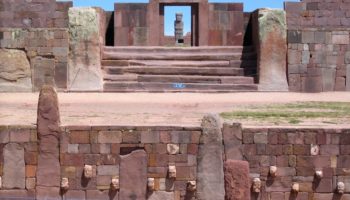
Unravel the Secrets of Tiwanaku in Bolivia

16 Top Tourist Attractions in Bolivia
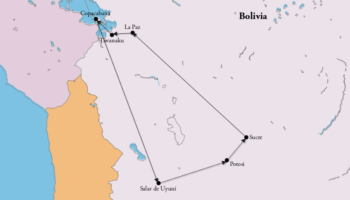
How to Spend 2 Weeks in Bolivia: DIY Itinerary
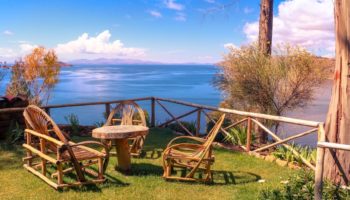
7 Most Amazing Places to Stay in Bolivia
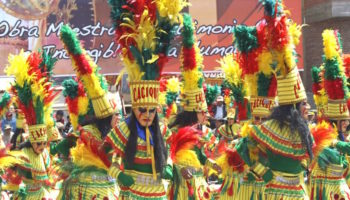
10 Best Places to Visit in Bolivia
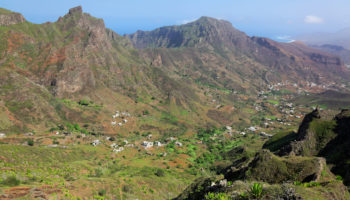
10 Best Cape Verde Islands
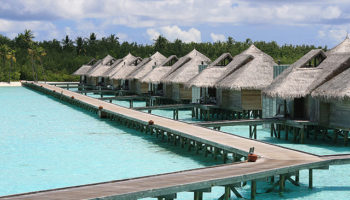
10 Best Luxury Resorts in the Maldives
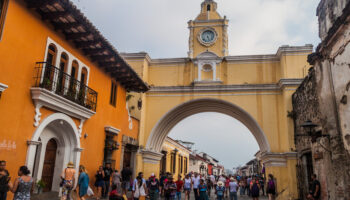
10 Best Places to Visit in Central America

12 Top Attractions & Places to Visit in Madagascar

15 Best Countries to Visit in Asia
Reader interactions, leave a reply cancel reply.
Your email address will not be published. Required fields are marked *
This site uses Akismet to reduce spam. Learn how your comment data is processed .
- Work With Me

- Sierra Leone
- South Africa
- United States
- New Zealand
- Falkland Islands
- Netherlands
- Accommodation
- Electrical Gear
- Essential Gear
- Working Abroad
- Blogging Resources
Americas , BOLIVIA , South America
21 best things to do in la paz, bolivia.
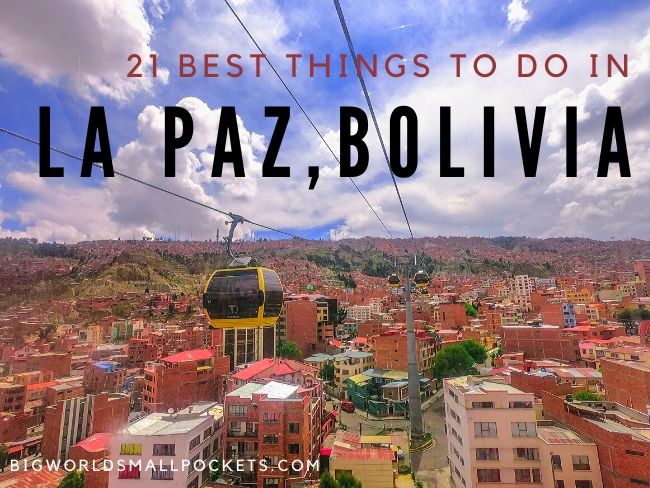
The largest city in Bolivia, La Paz is a lofty affair.
Situated at over 3,650m this really is a city in the clouds, indeed it is the highest capital in the world!
And while this elevation can leave you a little out of breath, so too can the amount of things to do in La Paz… because there’s a lot of them!
Most people don’t spend long in this city, meaning they have to run around like crazy trying to see everything in La Paz in one day.
And for those of you this applies to, I have included a ‘La Paz in 1 day’ section at the bottom of this article to help you out.
However, if you want my advice, take 2-4 days to enjoy this city and everything it has to enjoy both within its centre and its surrounds.
To give you some ideas, here’s my list of the 21 best things to do in La Paz, Bolivia…
Related Posts
- 21 Best Things To Do in Bolivia
- 55 Best Things To Do in South America
- How to Travel from La Paz to Uyuni in Bolivia
This page contains affiliate links meaning Big World Small Pockets may receive a small commission on any purchases at no extra cost to you.
#1 Start in Plaza Murillo
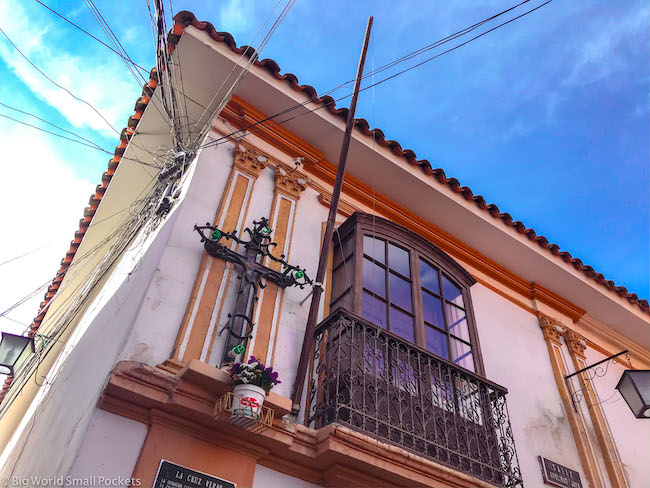
To kick off this list, we’re going to start in the heart of La Paz, the central square of Plaza Murillo.
This is always a centre of action in La Paz and is very connected to the political life of Bolivia.
Indeed, the square is named after the Bolivian hero Pedro Murillo, who was a strong figure in the movement for independence.
Situated in the city’s historic old town, the square is surrounded by many colonial grand buildings, including the National Congress and Presidential Palace.
To get a sense of La Paz as the capital of Bolivia (or at least one of them), Plaza Murillo is a great place to start and always buzzing with both locals and tourists.
#2 Visit San Francisco Basilica
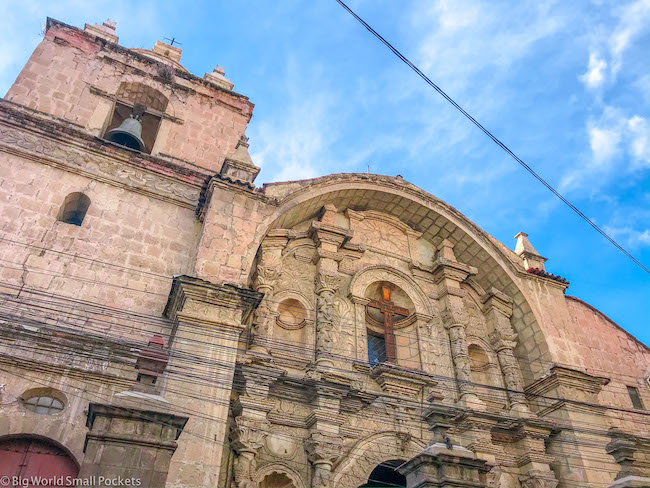
Next up, after Plaza Murillo, it’s time to visit another flagship and important place in the historic centre of the city and that is the San Francisco Basilica.
Located alongside San Francisco Square, this religious structure was built around 1750 (actually this was the second version as the first had already been destroyed) and is famous for its mix of colonial and indigenous iconography.
As far back as the 18 th Century many different groups of people worshipped here and left their mark.
The church is free to enter, although to access the roof and the bell tower you’ll need to pay the small fee for a guide.
It’s well worth it for the views though!
#3 Shop at the Witches Market
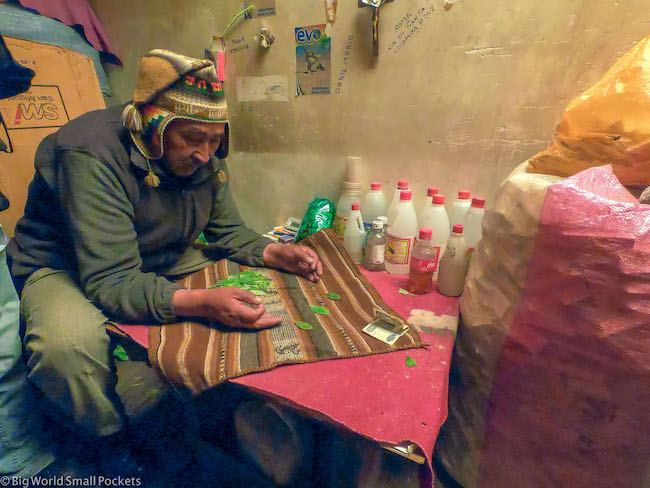
And moving on, just slightly away from San Francisco Square, we come to La Paz’s famous Witches Market.
Essentially a collection of narrow streets that move steeply up and down the hilly geography of this city, the centre of the action is around Melchor Jimenez street.
Translated in Spanish as El Mercado de las Brujas (literally market of the witches) you may have to search this name on Google maps if you’re trying to find it.
But try to find it you should because this busy, bustling place is alive with hocus pocus cures, spells and potions that will delight and amaze you.
Once a place of traditional healing remedies, this has now become something of a tourist trap however and so while I do still recommend visiting here, it’s worth checking out #12 on this list for info about where a more local and authentic Mercado de las Brujas can be found in La Paz!
#4 Take a Walking Tour
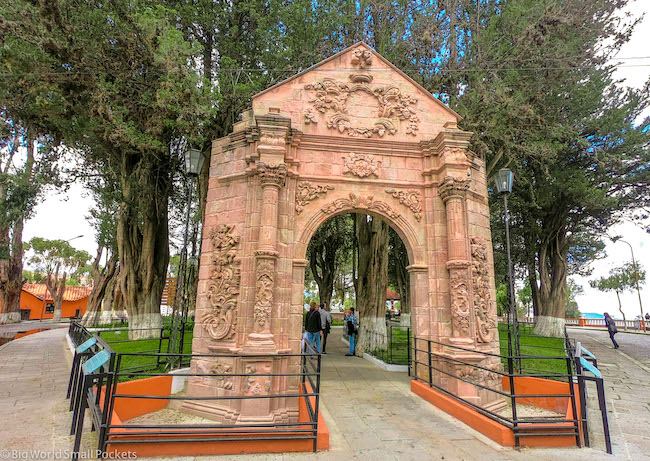
And if you want to see all 3 of these first entries on my list together, in one morning, then a great option for you is to take a free walking tour of La Paz, which covers the historical centre.
There’s a few options to choose from, and as always, these walking tours can be made (or unmade) by the guide.
As such, my best advice is to always consult with other tourists about the one they enjoyed the most and follow their lead.
Most start around 11am in one of the historic centre plazas.
Alternatively, the great Hostel 3600 , where I stayed in La Paz, offers free walking tours on ad-hoc basis.
If you can get a small group together in the hostel, like we did, this is a great option which takes you to some very local and alternative spots.
This hostel is a super place anyway, so I highly recommend staying here if you’re travelling in La Paz on a budget.
For more top tips about visiting this country on a budget, check out my list of the 19 things you need to know before you backpack Bolivia .
#5 Stroll Calle Jaen
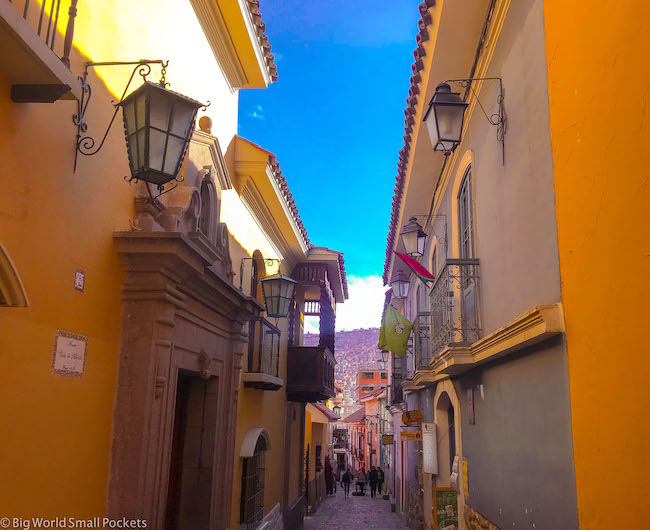
Sticking the city centre theme here in La Paz, but just moving slightly away from the Old Town, we come to another one of the best things to do in La Paz, and that is stroll Calle Jaen.
This will often form part of a walking tour in the city too, because it’s just too pretty and quaint to miss quite frankly!
Home to an array of museums, cafes, shops, bars and restaurants, this is certainly a touristy part of town, but there’s no denying it’s lovely too.
The bright colours of the preserved houses, which date from the 18 th century, provide a real mix of heritage and modernity with a distinct Bohemian air thrown in for good measure… my kinda place!
Definitely don’t miss taking your camera along to this street to snap the gorgeous scene, but as always, just be careful of pickpockets.
#6 Check Out a Museum or 2
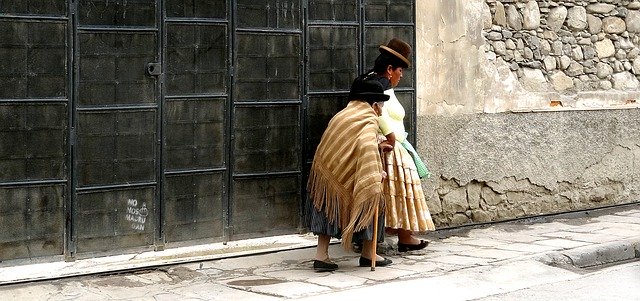
And while we’re on the subject of Calle Jaen, one of the things you should definitely do while you’re here, aside from souvenir shop, eat and drink, is check out a museum or 2.
And that’s because, on this street alone, there are 5 of them!
- Museum of Precious Metals
- Museum of Musical Instruments
- The House of Murillo Museum
- Museum of the Coast (about the Bolivia – Chile war)
- The Juan de Vargas Customs Museum (traditional custom and culture)
These museums are all quite small, meaning you can easily cover them in a few hours and then get back on your sightseeing way.
Otherwise, some of La Paz’s bigger museums that are well worth paying a visit to are:
- National Art Museum
- Ethnography Museum
- Coca Museum
- Tambo Quriquincho Museum
- Central Cultural Museum
#7 Laugh at The Cholita Wrestling
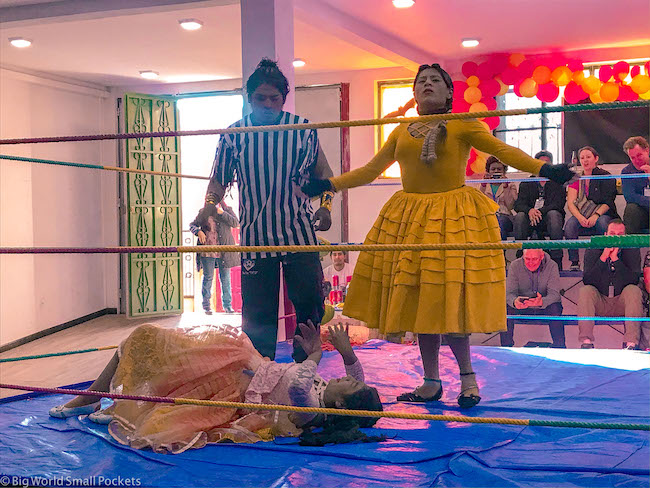
And once you’ve finished in Calle Jaen, it’s time to head to one of La Paz’s most bizarre, but most loved spectacles, and that is the Cholita Wrestling.
Featuring women in traditional dress, this entertainment is based on WWF and employs an amazing mix of stunts and great costumes in front of beer-fuelled crowds!
Matches are usually held on a Sunday at El Alto’s Multifunctional Centre (see #12 for more info on this area) and while you can take a tour here, it’s just as easy to enter the show, buy a ticket and join the madness yourself.
Expect lots of audience participation in this 3 hour spectacle, which initially developed as an act of protest against domestic violence and has now become one of South America’s most well-loved tourist attractions.
#8 Caffeinate
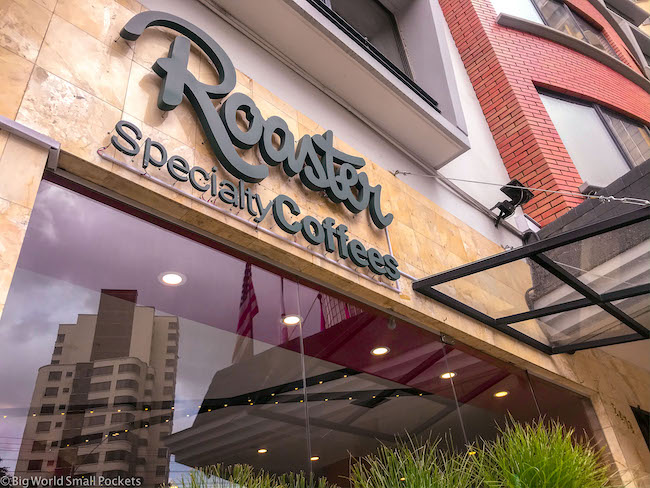
So with a lot of the city centre sightseeing and shows out of the way, it’s time to get down to the real business of eating and drinking in La Paz.
In a country that grows coffee, there’s no question sampling some of the best beans was on my list of things to do in La Paz and I quickly learnt that the top place to head was the city’s district of Sopocachi.
A wealthier suburb, this is where many of the city’s best coffee shops are located and Roasters on Avenida Arce certainly gets a special mention from me!
#9 Sip on a Craft Beer
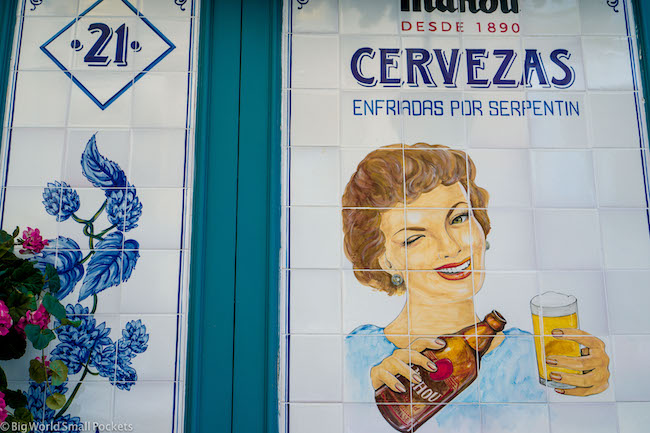
But what about for later on in the day I hear you cry.
Yes, well don’t worry folks, I’ve got you covered on that front too.
Because when it comes to enjoying a bit of Bolivia’s best beer, there’s no finer spot to head than Adventure Brew Microbrewery .
Doubling as a hostel, as well as a place to tour the hops and learn about this very Bolivian production venture, there’s now 2 Adventure Brew hostels !
Perfect for those that love a drink before bed!
Close by, Sol Y Luna is another hotspot that deserves a shout out for its range of craft beers too.
Oh and did I mention it has great vegetarian food too!
#10 Eat at the Food Markets
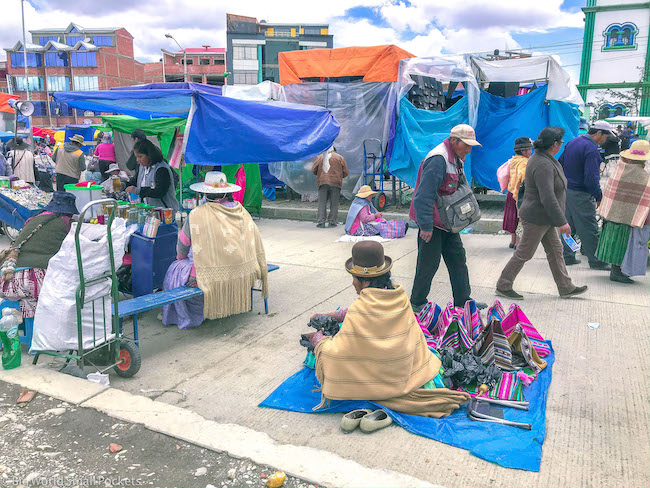
Which leads me nicely onto #10 on this list of the best things to do in La Paz, which is eat!
Sol Y Luna is a great spot to head for if you’re vegetarian, otherwise, vegans should make a beeline for Wellness Food in Sopocachi.
For everyone else, it has to be the food markets, for while Bolivia might not be an epicentre of culinary excellence, they do know how to stage a freaking good market!
This is definitely going to give you a full local hit in La Paz so get yourself ready!
Mercado Lanza is my top pick!
#11 Ride the Cable Cars
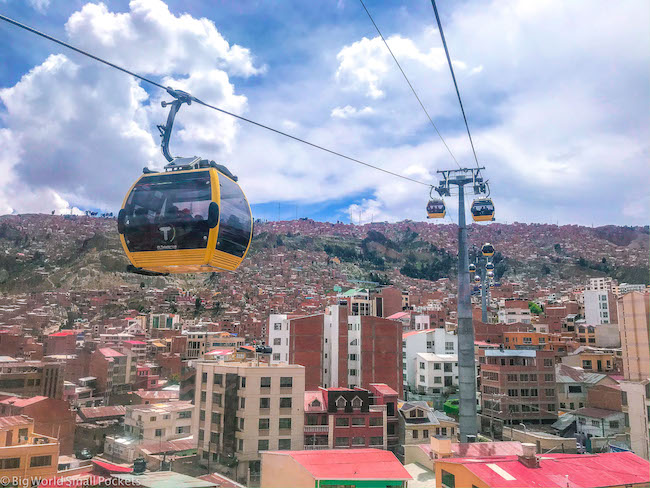
Ok, I’ve been saving this one, because I didn’t want to give you everything on a plate too early on, but let me tell you that riding the city’s cable cars is absolutely on the best things to do in La Paz.
Essentially the capital’s metro system, this aerial transport method is just perfect for a city that is not only very high, but also has a great many hills!
Known as Mi Teleferico , this super system began with just 3 lines, but has another 7 in the pipeline.
When I visited, there were 6 in operation and depending on when you make it there, there might be even more.
A super easy system to use, with each line coloured like a Metro network, you can hop on and off these cable cars, switch between the lines at various interchange stations and generally get a great aerial view of the city for next to nothing!
Running for 17 hours a day, from 7 am to 11 pm, you pay for rides using a simple card system, which you can buy and top up at just about any station!
#12 Hit Up El Alto
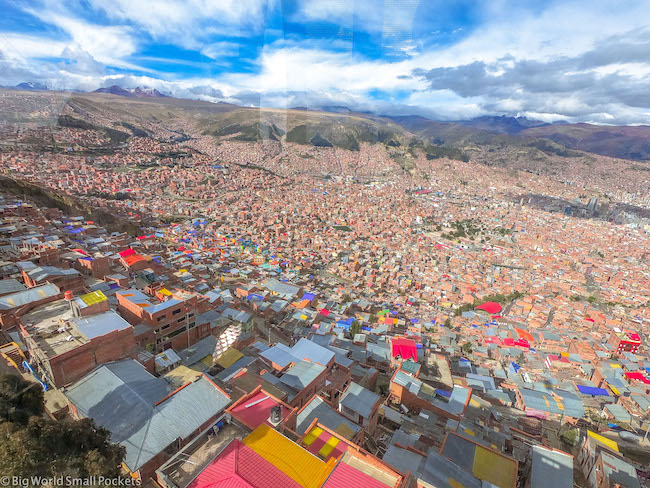
And one of the best places to visit in La Paz, that you absolutely can’t miss taking a Cable Car to is El Alto .
Literally translated as the heights, this area on the edge of la Paz sits on a great cliff above the city and boasts amazing views down onto the metropolis and the bizarre, dry altitude desert landscape around.
Situated near to the borders with both Peru and Bolivia, El Alto has long been a key trading port and nowadays it’s home to one of the biggest markets in South America – if not the biggest.
Seriously, getting the cable car up here, you’ll ride over street after street of crammed in stalls and once you get down on the ground, you could literally walk for hours and still find yourself in another new market street!
Known as Mercado de Plaza 16 de Julio, my favourite bit here was the far more authentic Mercado De Las Brujas , which you certainly shouldn’t miss.
El Alto is also the place locals come to party and is home to the Cholita Wrestling, so you can tell it’s a good kinda place!
#13 Pause in a Park
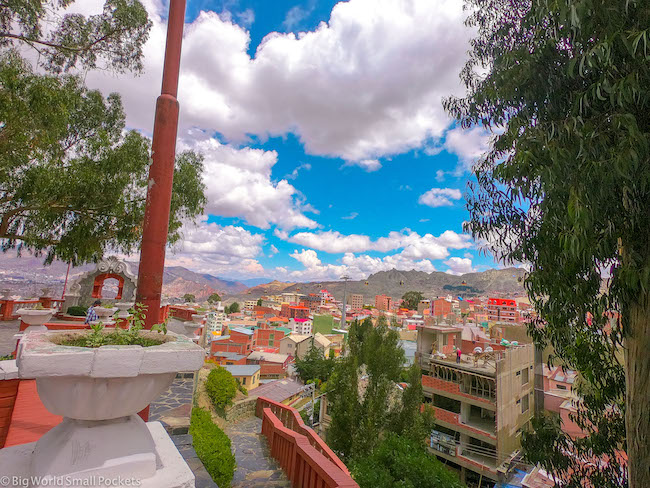
And with all this hilltop action, you’ll notice that walking anywhere in la Paz will quickly have you out of breath.
So do the sensible thing and ensure you take enough rest if you need to.
There’s plenty of green spaces, parks and squares you can enjoy a short pitstop.
Seriously, if there’s one thing you need to know about in advance of your visit to La Paz, it’s altitude!
Being in the Andes and situated at 3,6500m above sea level, La Paz is high and altitude sickness is a real and serious thing here.
As such, you must, ABSOLUTELY MUST, take altitude issues seriously when you come to La Paz and spend at least 1 day here (better 2) acclimatising if this is your arrival point into the Andes.
This is especially true if you’ve come from the coast i.e. Lima in Peru or Buenos Aires in Argentina, as you must allow your body to get used to the lower levels of oxygen in the air.
I’ve had altitude sickness myself in Ecuador and can definitely attest to the fact it is not nice!
Actually, it can be very serious and sometimes lead to hospitalisation and even death.
Do not take this issue lightly when travelling to Bolivia therefore, and if you start to suffer any symptoms then take the necessary precautions.
You can learn more about altitude sickness, what causes it, what the symptoms are and how to avoid or treat it in this useful article .
Always make sure you have appropriate travel insurance too in case anything happens.
I wouldn’t dream of travelling to Bolivia without proper coverage and always recommend travel insurance from World Nomads who I’ve ever used during my time in the country and across South America.
World Nomads are actually one of the few companies that will insure you for activities at altitudes above 3000m – essential for a country like Bolivia where many destinations, including La Paz, are situated above this height.
#14 Be Amazed at the Houses on Hill

And while we’re on the subject of altitude, we can’t go further and not mention that the amazing buildings of this city, which seem to cling to the sides of the valleys and hills in a way which defies gravity.
Being amazed by, and snapping, the hilltop-clinging houses in La Paz is definitely one of the best things to do here and probably the best area to head to see some super colourful ones is Chualluma – part of new social art project.
Learn more about safety issues and how to get to Chualluma here .
#15 Take in the View
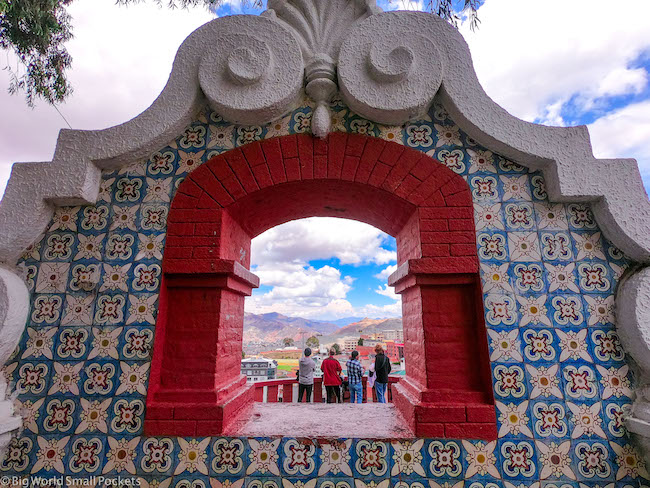
And combining both the idea of resting in a park thanks to the altitude and marvelling at the city’s lofty architecture, it’s time to mention some of La Paz’s best lookout where you can chill and enjoy the views.
The most famous is the Killi Killi Mirador, but personally I preferred the lovely Monticollo Mirador , which features its own romantic square and scores of young lovers!
#16 See Bolivia’s Biggest Cemetery
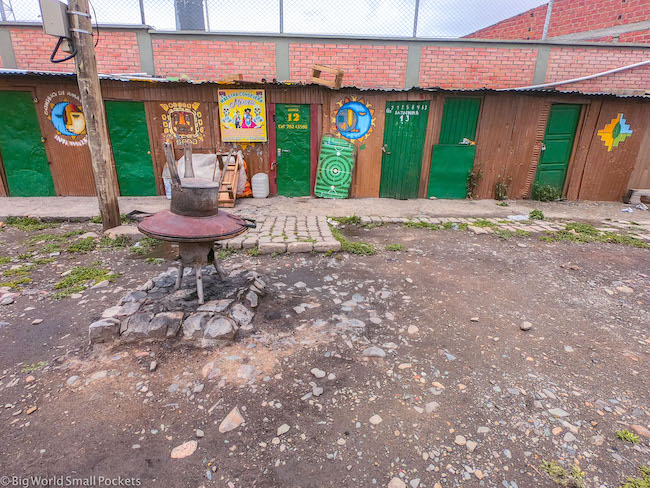
It might not sound like a very fun thing to do, and you might be thinking, that’s a bit morbid Steph, but seriously seeing Bolivia’s biggest cemetery, the Cementerio General La Paz is a great thing to do in La Paz.
Unlike the Recoleta Cemetery in Buenos Aires, which is generally reserved for the city’s movers and shakers, this cemetery in La Paz is for everyone and is much more a place of bustle and chatter as people come to remember, share and celebrate their deceased loved ones.
Offerings are regularly left, along with flowers, and many of the graves have been painted bright colours, but the time this place really comes to life is during the annual Day of the Dead festivities.
If you want to take a tour to the cemetery, check out this top-rated option , which also includes time in El Alto.
#17 Party at Wild Rover At Night
And if we’re getting into the slightly more sinister vibes here, it seems the perfect time to introduce Wild Rover .
A famous backpacker chain in South America, Wild Rover La Paz is perhaps the best known for its wild parties in this pretty raucous hostel chain.
Personally not my cup of tea – because let’s face it, I’m old! – but if you do want to let your hair down with other travellers (as I certainly did in my day!) this is the best place in La Paz to do it.
#18 Cycle the Death Road
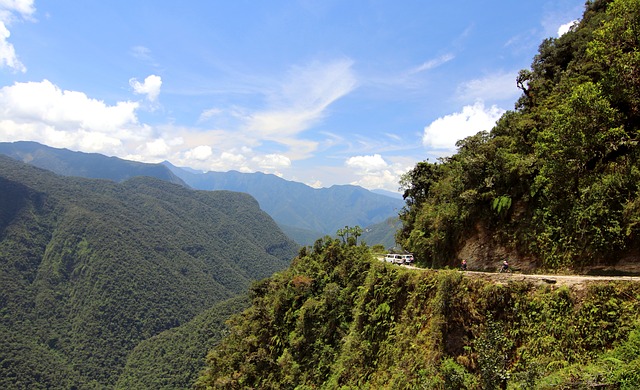
And now we move onto the best day trips that can be enjoyed from La Paz.
And top of the list is the famous Death Road – a mad cycling day adventure that sees you peddling one of the world’s most dangerous roads as part of a wild bicycle tour.
It’s certainly worth choosing a reputable operator for this dangerous undertaking, as well as reading reviews carefully.
Check out this option for some ideas.
#19 Hike in Valle De La Luna
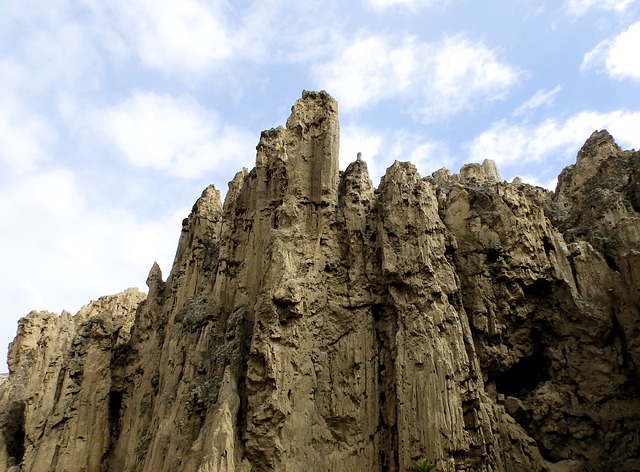
While less popular than cycling death road, heading to Valle De La Luna for a spot of hiking and snapping was definitely higher on my list on La Paz day trips.
This amazingly surreal landscape, with its startling sandstone spires, has been created by erosion, but it a lovely place to wander and has 2 well-marked trails that lead you to good lookout points.
Situated about 10km from downtown La Paz, taking a day tour to this beautiful part of Bolivia is a winner and usually very affordable!
#20 Get Your Archaeological Fix at Tiwanaku
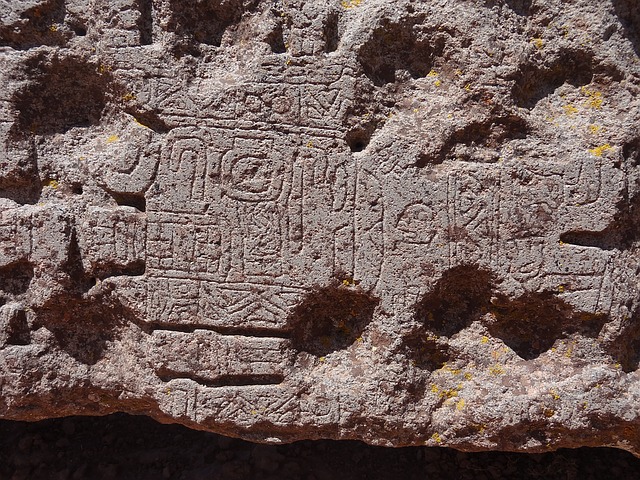
One of the largest pre-Colombian archaeological sites on South America, Tiwanaku is now a UNESCO World Heritage Site.
Located 75km from La Paz, on the way to or from Lake Titicaca, this site was once the centre of a major agricultural empire.
Older than Machu Picchu, it’s estimated that 50,000 people lived in this settlement during its height and the level of preservation you can find in the stone sculptures and buildings is absolutely astounding.
Having been abandoned since around 1000 AD, the site was rediscovered in 1549 and is home to an amazing array of stone monoliths as well as palaces, temples and towers.
You can visit this place either via a tour from La Paz or using public transport.
#21 Be Mesmerised by Lake Titicaca
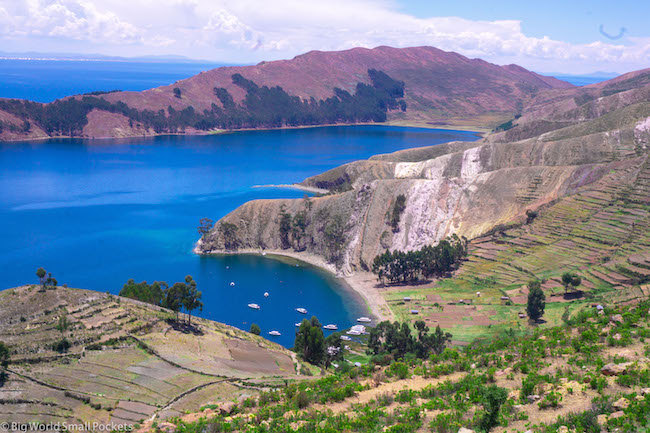
And finally, we get to number 21 on this list of the best things to do in La Paz and it’s another trip out of the city – albeit one that you should probably spend longer than 1 night at!
Lake Titicaca, which forms part of the border between Peru and Bolivia is absolutely incredible and taking a trip from La Paz to spend a few nights here is a must.
The highest navigatable lake in the world, you can either spend your time in the Bolivian town of Copacabana on the lakes edge and day trip onto the water and the islands from there, or pack your bag and head to Isla Del Sol for a few nights of isolation and tranquillity.
While you can visit Lake Titicaca from Peru, I enjoyed the Bolivian side and its islands of Isla Del Sol and Isla De La Luna way more!
Learn more in the post I wrote about the experience in the Bolivia part of Lake Titicaca here .
Just enter your details below and I'll email it you - simple!
Information will be sent to the email provided above
How to Spend One Day in La Paz
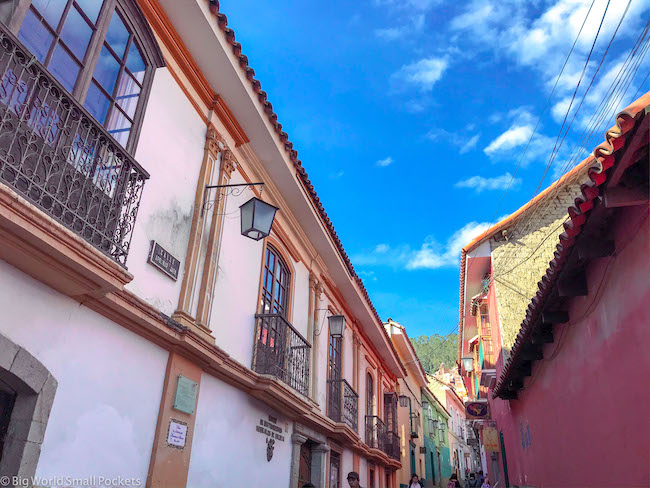
With just one day in La Paz, I’d advise spending the morning in the city centre, enjoying a walking tour to fill in the details for you.
Enjoy lunch along Calle Jaen and then head out to Sopocachi for the food markets, coffee and green chilled vibes.
After that, hop on the cable cars up to El Alto.
Enjoy the market here and finish up with a seat at the La Cholita Wrestling if your visit falls on a Sunday.
With a second day in the city, head out on one of the great day trips I list above.
Mini Travel Guide to La Paz
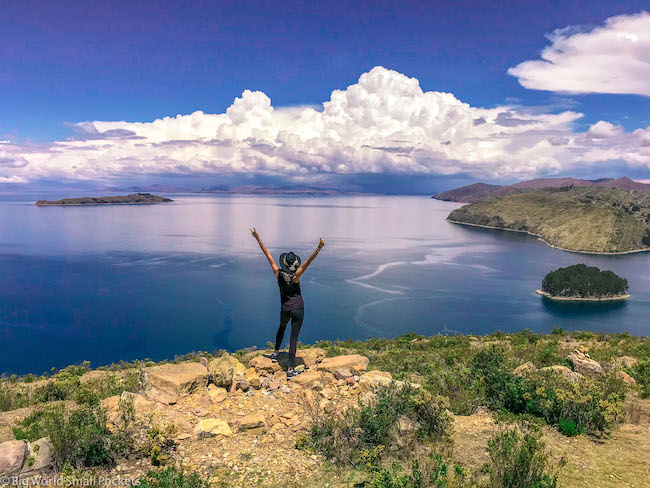
Where to Stay in La Paz?
When it comes to places to stay in La Paz on a budget, I highly recommend the Hostel 3600 .
Set in a heritage building in a safe part of the town, there’s a guest kitchen here, a lovely light and airy communal space and super helpful staff.
The free breakfast and super wifi add to the sweet deal.
Best Time to Visit La Paz?
The best time to visit La Paz in my opinion is during the dry, season in the Andes, aka winter in Bolivia, which runs largely from the months of June through to October.
It is colder at this time of year, but you can’t beat those blue skies if you want to enjoy the high altitude views to the max!
At this time of year it’s also drier and slightly less humid in the Amazon, which is great to know if you’re heading to the jungle during your trip in Bolivia too.
Discover how to get around Bolivia best using Bookaway , a super helpful travel website that compares buses, trains and flights across the country, so you don’t have to!
5 Essential Packing Items for La Paz
These Hiking Boots
This one from Decent Day Pack is my pick
Travel Insurance for Bolivia
Alternatively, if you’re a long-term traveller, digital nomad or frequent remote worker seeking travel health cover, check out Safetywing’s Nomad Insurance policies.
Recommended Bolivia Tours
And if you don’t feel confident about visiting Bolivia independently, or would rather join a group and make some travel friends, check out this list of top Bolivian tours that will have you experiencing all this country’s highlights in 5-15 days.
Travel Money in Bolivia
The easy way to spend abroad with real exchange rates, no markups and no sneaky transaction fees, you can use your Wise card just like a debit card here… and it links easily with Google and Apple pay – sold! Grab yours here .
Want to Volunteer in Bolivia?
If you want to combine your time travelling in this South American country with giving something back, then why not consider volunteering in Bolivia?
It could even help you save money and travel for longer!
You can access loads of great volunteer opportunities in this country when you sign up to Worldpackers. Learn more here .
SAVE THIS TO PINTEREST!
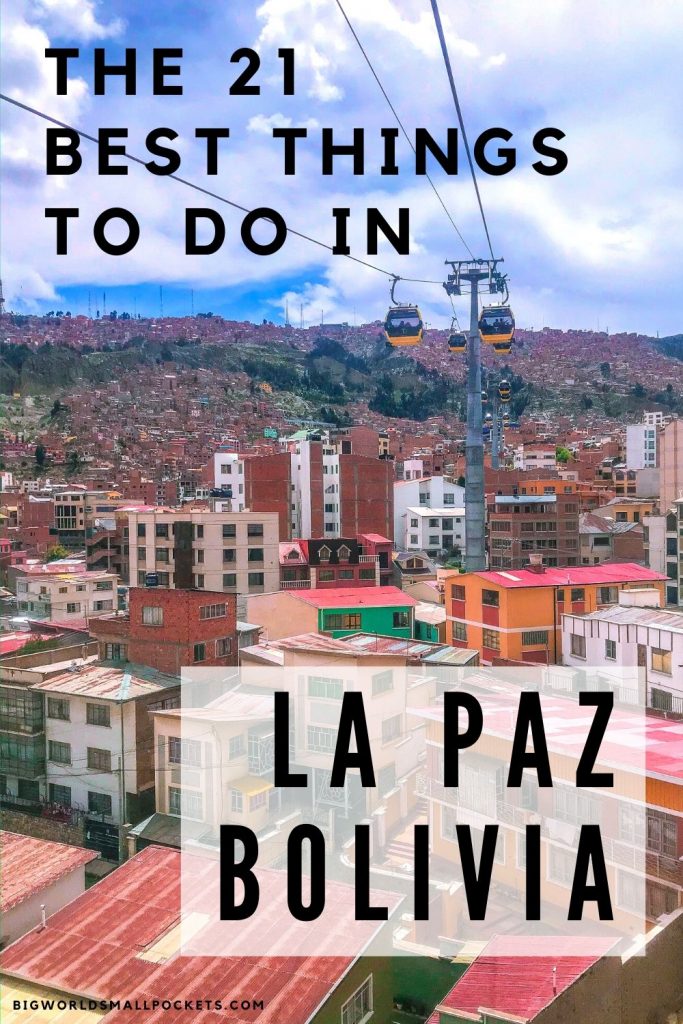
So there you have it, my list of the best 21 things to do in La Paz, Bolivia.
Have you been to this lofty city?
What was your favourite thing to do there?
Creator of Big World Small Pockets, Stephanie Parker is a travel addict! Originally from Jersey in the Channel Islands, Stephanie adventures the world collecting tips, advice and stories, to share with a smile
2 thoughts on “ 21 Best Things To Do in La Paz, Bolivia ”
This is super helpful in planning my trip here, so thank you!
Brilliant Lydia, always love to help a fellow traveller out, so happy to hear this! Enjoy your time travel planning for Bolivia 🙂
Leave a Reply Cancel reply
Your email address will not be published. Required fields are marked *
This site uses Akismet to reduce spam. Learn how your comment data is processed .
La Paz Travel Guide
Book your individual trip , stress-free with local travel experts
- roughguides.com
- South America
- Travel guide
- Itineraries
- Local Experts
- Travel Advice
Accommodation
Plan your tailor-made trip with a local expert
Book securely with money-back guarantee
Travel stress-free with local assistance and 24/7 support
Few cities in the world have as spectacular a setting as La Paz. Glimpsed for the first time as your bus or taxi crawls over the lip of the narrow canyon in which the city sits hunched, it’s a sight that will leave your lungs gasping for oxygen they can’t have. At over 3500m above sea level, amid a hollow gouged into the Altiplano, it’s a scene of stunning contrasts: a central cluster of church spires and office blocks dwarfed by the magnificent icebound peak of Mount Illimani rising imperiously to the southeast. On either side, the steep valley slopes are covered by the ramshackle homes of the city’s poorer inhabitants, clinging precariously to even the harshest gradients.
Altitude sickness
Avenida 16 de julio and around, drinking and nightlife, entertainment, plaza san francisco and the market district, street crime, thank god it’s (bachelor) friday, the colonial city centre.
With a population of around 835,000, La Paz is the political and commercial hub of Bolivia and the capital in all but name (technically, that honour belongs to Sucre). Though protected to some extent from the tides of globalization by its isolation and singular cultural make-up, La Paz feels very much part of the twenty-first century, its manic bustle and offbeat, cosmopolitan feel luring travellers back time and again. Founded as a centre of Spanish power in the Andes, La Paz has always had a dual identity, with two very distinct societies – the indigenous and the European – coexisting in the same geographical space. Hi-tech international banks and government offices rub shoulders with vibrant street markets selling all manner of ritual paraphernalia for appeasing the spirits and mountain gods that still play a central role in the lives of the indigenous Aymara.
The Aymara, in fact, make up not only the majority of the city’s population, but also that of El Alto , La Paz’s militant, red-brick alter ego, which continues to outstrip it in terms of rural migrant-boosted population, and often media coverage. For them, working life in La Paz is conducted largely on the streets, and at times the whole place can feel like one massive, sprawling market. Though you’d imagine the exigencies of life at high altitude would make the pace of life quite slow, in reality it’s often more frantic than Buenos Aires or Rio, not least during the winter Fiesta del Gran Poder , when young and old alike dance in riotous celebration of the sacred and the profane.
Horrendous congestion and belching-black pollution notwithstanding, most visitors find La Paz’s compelling street life and tremendous cultural energy warrant spending at least a few days here, even if conventional tourist attractions are limited to a scattering of colonial palaces, plazas and churches in the centre of town. The city’s museums, while perhaps not fully doing justice to Bolivia’s fascinating history and culture, are nevertheless much improved from only a decade ago, and likewise warrant at least a day or two’s browsing. The absence of green areas, meanwhile, is more than redeemed by the sight of Illimani, tantalisingly glimpsed through breaks in the urban sprawl.
Brief history
La Ciudad de Nuestra Señora de la Paz – “ The City of Our Lady of Peace ” – was founded on October 20, 1548 on the orders of Pedro de la Gasca, the supreme representative of the Spanish Emperor in Peru, to commemorate the end of almost ten years of bitter civil war between rival Spanish factions fighting over the combined territories of Alto and Bajo Peru. Sited in the Choqueyapu valley, the city developed an economy based on commerce rather than mining.
The seventeenth and eighteenth centuries
The merchants of La Paz grew rich through the trade in coca from the Yungas to the mines of Potosí, and the city also prospered as a waystation on the route between the mines and the coast, and between Lima and Buenos Aires. By 1665 some five hundred Spaniards were living in La Paz, with a much larger indigenous population housed on the other side of the fledgling city across the Río Choqueyapu . In 1781 an indigenous army led by Tupac Katari twice laid siege to La Paz, though the city survived and held out until it was relieved by the army sent from Buenos Aires that finally crushed the rebellion.
Independence
By the time Bolivia’s independence from Spain was finally secured in 1825 (see Argentina attacks), La Paz was the biggest city in the country, with a population of forty thousand. Though Sucre remained the capital, La Paz was increasingly the focus of the new republic’s turbulent political life. In 1899 the growing rivalry between the two cities was resolved in a short but bloody civil war that left La Paz as the seat of government, home to the president and the congress, and the capital in all but name.
The twentieth century
The first half of the twentieth century saw La Paz’s population grow to over three hundred thousand. In 1952 La Paz was the scene of the fierce street fighting that ushered in the revolution led by the MNR, or Movimiento Nacionalista Revolucionario. The sweeping changes that followed further fuelled the city’s growth as the Aymara population of the Altiplano, released from servitude by the Agrarian reform, migrated en masse to the metropolis. This migration from the countryside profoundly changed the character of La Paz, quadrupling its population to over a million and transforming it into a predominantly Aymara city, albeit still ruled by a wealthy European-descended minority.
The twenty-first century
While this ethnic and geographical gulf is hardly without precedent in Latin America, age-old tensions reached a boiling point over the first half of the decade, with violent civil disturbances toppling a series of neo-liberal presidents. Plans to export natural gas via a Chilean pipeline prompted the first “ gas war ” in 2003 (see Bolivia’s first indigenous president). Further unrest over the unresolved gas issue erupted in May and June 2005 with hundreds of thousands of indigenous protestors massing in La Paz, effectively cutting off the city and effecting the resignation of then-president Carlos Mesa .
The reign of Evo Morales
With the 2005 election of Bolivia’s first (and it’s looking increasingly likely, most enduring) indigenous president, Evo Morales , the Aymara finally achieved real political power and the traditional campesinos vs the state ferment was superseded, to some extent, by a wider geo-political cultural spat between the radical Altiplano and the right-wing lowland departments of Beni, Pando, Santa Cruz and Tarija. Yet while much of the violence and unrest has taken place far from the capital, demonstrations by discontented miners, pensioners, fuel protestors, hunger strikers in the main Post Office and indeed anyone at all who feels hard done by, underlines the fact that La Paz, in its strategic relation to El Alto and the Highland Aymara communities, remains a vital crucible for popular protest.
Tailor-made travel itineraries for Bolivia, created by local experts

4 days / from 1320 USD
Highlights of Bolivia
Bolivia for those on a tight timeline. In just 4 days, you will visit the de facto capital La Paz, a day tour to Lake Titicaca with the beautiful Copacabana town. A short flight to Uyuni will allow you to explore the wonders of salt processing before heading back to La Paz.

16 days / from 5050 USD
Andean Triangle - Chile, Bolivia and Argentina
Start your South American adventure in Santiago de Chile before exploring the wonders of the Atacama desert. A short hop across the border and you'll find yourself in the middle of the Bolivian salt flat. Afterwards, you'll continue to Argentina with Salta and Buenos Aires.

14 days / from 2271 USD
Multi-country adventures from salt flats to the Andes
South America is full of wonders and this trip packs Argentina, Chile and Bolivia into 2 weeks. Bustling Buenos Aires, beautiful valleys around Salta, the surreal looking surroundings of San Pedro de Atacama, the salt flat of Uyuni as well as Lake Titicaca are all part of this itinerary.
There’s been an explosion in the La Paz accommodation scene in recent years, even if prices have likewise risen steeply and there now seems to be a real dearth of rooms at lower mid-range. Budget accommodation – from around Bs50 – tends to be pretty spartan and chilly; ask for a room that gets some sunlight, as this makes a big difference in temperature. Heating is only available in the top-range hotels , though most places have 24hr hot water; it’s worth checking to make sure it’s not merely lukewarm - if it is you’ll freeze.
The main problem you’re likely to face when you arrive in La Paz is the altitude : the city stands at over 3500m above sea level, and the airport in El Alto is even higher, at over 4000m. If you’re flying in or arriving by bus from lower elevations you may suffer from altitude sickness , also known as soroche , a debilitating and potentially dangerous condition caused by the reduced oxygen levels found at high elevations. Mild symptoms can include breathlessness and lethargy, sleeplessness, headaches and nausea, though for most people these fade within a few days as the body adjusts to the rarefied air. On arrival at high altitude you should take things very slowly and get straight to a hotel where you can leave your luggage and rest. It’s also best to avoid smoking and alcohol, and to drink plenty of liquids, particularly maté de coca , an infusion of coca leaves that any local will tell you is the ideal remedy. Alternatively, all chemists stock soroche pills; they’re high in caffeine, however, so don’t take them at night unless you fancy even less sleep than the altitude already dictates.
In its more serious forms, altitude sickness can be dangerous or even life-threatening . If you think you may have the symptoms of high-altitude pulmonary or cerebral oedema (see Malaria and other insect-borne diseases) you should seek immediate medical advice. The best place for this is the High Altitude Pathology Institute, Clinica IPPA, Av Saavedra 2302 ( t 02 2245394, w altitudeclinic.com ).
In its southern reaches, a kilometre or so south of Plaza San Francisco, the busy, tree-lined Prado becomes Avenida 16 de Julio and passes between the suburb of San Pedro to the east and the more modern neighbourhood of Miraflores further to the west, before coming to an abrupt end at Plaza del Estudiante. Directly south of here lies the middle-class suburb of Sopocachi , the city’s most pleasant residential area and home to many of its higher end restaurants and nightlife spots – the centre is around the parallel avenues 6 de Agosto and 20 de Octubre.
San Pedro Prison
On the southeast side of Plaza Sucre rises the formidable bulk of San Pedro Prison (Cárcel de San Pedro), for years one of Bolivia’s most infamous tourist “attractions”. Critically overcrowded, structurally precarious, rife with tuberculosis and increasingly a scene of desperate protest, it nevertheless exerts a morbid fascination for the stream of foreigners who continue to find their way in despite it being officially illegal to do so, despite the obvious personal danger (no one will help you if trouble arises) and despite the negative effects it can have on the prisoners and their families when authorities periodically decide to clamp down.
Those whose curiosity gets the better of them will find what seems to so endlessly fascinate Europeans: a self-governed microcosm of Bolivian society, with shops , restaurants and billiard halls ; prisoners with money can live quite well here. Comfortable cells in the nicer areas change hands for thousands of dollars, and many inmates have cell phones and satellite televisions. Like the city on the other side of the walls, the prison is divided into rich and poor neighbourhoods, with the most luxurious area reserved for big-time drug traffickers, white-collar criminals and corrupt politicians: the most high-profile resident in recent years has been the ex-Prefect of Pando, Leopoldo Fernàndez .
Those without any income, however, sleep in the corridors and struggle to survive on the meagre official rations. Family visitors come and go regularly, and some children live inside with their fathers; when the riots erupt, it’s the families who are often caught in the midst of it. If you’re intent on a tour against all advice, it’s worth thinking long and hard about the consequences it may have for both yourself and these families, even as you may feel your entry fee is financially assisting them. With the presence of guards minimal and cocaine widely available, moreover, some gringos are foolhardy enough to try taking some out with them; you can be assured that this is the best way to make your stay considerably longer than you intended.
With more and more gringo-friendly nightlife springing up around Calles Linares, Tarija and Murillo, as well as the in-house hostel bars, it seems there aren’t nearly so many travellers frequenting the designer haunts of Sopocachi as there once were. La Paz’s club scene isn’t the most cutting edge, moreover, with numbingly generic Latin pop, rock, salsa, cumbia and Eighties music commonplace. You’ll find genuine Latin jazz/salsa, Brazilian, world, reggae, house, hip hop, techno, drum’n’bass and rock music if you look hard enough, however, and a forthcoming city-centre club from the loose grouping of restaurateurs and bar owners known as 4corners ( w 4cornerslapaz.com ) looks promising. For the lowdown on visiting international DJs, Spanish-readers should seek out the free magazine beats , while the free, English-language Bolivian Express ( w bolivianexpress.org ) usually has at least some coverage of La Paz nightlife in general.
La Paz has an excellent range of restaurants , cafés and street stalls to suit pretty much all tastes and budgets. Few places open for breakfast much before 8am, and Paceños treat lunch as the main meal of the day, eating lightly in the evening. Most restaurants serve set lunch menus known as almuerzos (typically noon–2pm), which are generally extremely filling and great value. The city also has an increasingly cosmopolitan range of European-style restaurants, both in Sopocachi , and also on trendy Calle Tarija , just off the end of Linares. In stark contrast to neighbouring Argentina, restaurants begin serving dinner at around 7pm. As a general rule, the more gringo-friendly places will open later and fill up later, although it’s difficult to find a formal sit-down meal anywhere after 11pm.
La Paz street food
For those whose stomachs have adjusted to basic local food, the cheapest places to eat are the city’s markets , where you can get entire meals for less than Bs7, as well as hearty soups, snacks and large quantities of roast meat (though it’s probably best to body-swerve the pork entirely). Try Mercado Lanza , just up from Plaza San Francisco, or Mercado Camacho , at the end of Avenida Camacho. Street food is another good low-cost option: the ubiquitous salteñas and tucumanes – delicious pastries filled with meat or chicken with vegetables – make excellent mid-morning snacks, especially if washed down by the freshly squeezed orange and grapefruit juice which is sold from wheeled stalls all over the city.
At the opposite extreme in every sense from the Zona Sur is El Alto , the huge urban sprawl that has grown up over the last few decades around the airport, on the rim of the Altiplano overlooking La Paz. At over 4000m above sea level and some 5km from the city centre, El Alto enjoys beautiful views along the length of the snow-capped Cordillera Real, and the views of La Paz from the rim of the Altiplano are spectacular, even if they contrast sharply with the physical ugliness of the city itself. Populated largely by Aymara migrants from the surrounding Altiplano, when it was officially recognized as a separate municipality from La Paz in 1986, El Alto instantly became the fourth biggest, poorest and fastest growing city in Bolivia. With a bigger population than La Paz, and rapidly approaching one million (sixty percent of whom are under 25 years old), the place resembles a vast, impoverished yet dynamic suburb, its endless stretches of tin-roofed adobe shacks and often half-finished red-brick buildings broken only by the strangely minaret-like spires of churches and an increasing number of shops and businesses, industrial warehouses and endless lines of scruffy garages. Much of the population has no access to running water or electricity, employment is scarce and freezing night-time temperatures make it a desperately harsh place to live. Alteños nevertheless take pride in their urban-rural identity, their collective struggle against adversity and the challenges of urban life in what they refer to as the biggest indigenous city in the Americas, and denigrate La Paz, where many of them work, as la hoyada – “the hole”.
Appreciation of the performing arts in La Paz is limited to a small minority, but there are a few places where you can catch theatre, classical music concerts, ballet and even opera. Film is more popular, and though the emphasis tends to be on Hollywood action blockbusters (almost always in English with Spanish subtitles), La Paz, surprisingly perhaps, has two excellent art house cinemas . You can pick up Jiwaki , a free, pocket-sized monthly guide to public museums, galleries, cinema and theatre, at the artier cafés and bars, or check out the listings on municipal website, w lapaz.bo. The English-language Bolivian Express ( w bolivianexpress.org) also has culture listings.
At the north end of the Prado, Plaza San Francisco is the gateway to the main Aymara neighbourhoods of La Paz, which climb up the slopes of the valley to the west. Founded in the colonial era as the parroquias de Indios – the Indian parishes – these neighbourhoods were where the Aymara population from the surrounding countryside was encouraged to settle, living around churches built as part of the effort to convert them to Christianity; less idealistically, this separate indigenous quarter was also designed as a pool of cheap labour, neatly separated from the Spanish city by the Río Choqueyapu. Today the area retains a very strong Aymara identity and its narrow, winding and at times almost vertical streets are filled with the bustling markets that make it one of the most vibrant and distinctive parts of the city: nowhere more so than in the Mercado de Hechicería – without doubt one of the most extraordinary sights in La Paz.
Calle Sagárnaga
To the south of Plaza San Francisco lies Calle Sagárnaga , La Paz’s main tourist street (along with Linares, which bisects it), which is more crowded than it’s ever been with hotels, tour agencies, restaurants, handicraft shops and stalls, with more seemingly opening every week. Often referred to as “Gringo Alley”, the street has in fact always catered to travellers: in the colonial era, this was where wayfarers en route between Potosí and the Peruvian coast would be put up, and several of the buildings now occupied by hotels were actually built for that purpose in the eighteenth century.
Feria de Alasitas: the Festival of Abundance
One of Bolivia’s most unusual fiestas is the Feria de Alasitas , held in La Paz in the last week of January, when large areas of the city are taken over by market stalls selling all manner of miniature items. At the centre of the festivities is a diminutive figure of a mustachioed man with rosy cheeks and a broad smile, dressed in a tiny suit and hat and laden with foodstuffs and material possessions. This is the Ekeko , the household god of abundance. A common sight in Paceño homes, the Ekeko is a demanding god who must be kept happy with regular supplies of alcohol, cigarettes and miniature gifts . In return, he watches over the household, ensuring happiness and prosperity and returning in kind any gift he receives. At the fair each year, people buy objects they desire in miniature to give to the Ekeko, thereby ensuring that the real thing will be theirs before the year is out. Originally, gifts to the Ekeko would have been farm animals and foodstuffs, but in the modern urban context of La Paz, miniature cars, houses, electrical goods, wads of dollar bills and even airline tickets and university degrees are preferred to more traditional items.
Mercado de Hechicería
, or Witches’ Market, provides a fascinating window on the usually secretive world of
Aymara mysticism
herbal medicine
. The stalls here are heavily laden with a colourful cornucopia of ritual and medicinal items, ranging from herbal cures for minor ailments like rheumatism or stomach pain, to incense, coloured sweets, protective talismans and dried llama foetuses. These items are combined in packages known as
and burned or buried as offerings to placate the various tutelary spirits and magical beings that are believed to hold sway over all aspects of daily life. There’s no clear border between the medicinal and magical here: the
indigenous traditional healers
– who are the market’s main customers adopt a holistic approach in which a herbal cure for a specific symptom is usually combined with magical efforts to address the imbalances in the supernatural world that may be responsible for the ailment.
To get some insight into the uses and meaning of it all, it’s worth chatting with the stallholders and perhaps making a purchase or two. Spending a few bolivianos on, say, a magic charm to protect you during your travels will certainly make the stallholders more talkative and amenable to having their photos taken, and could even prove to be a wise investment.
Plaza San Francisco
Though the frenetic traffic running alongside detracts from its charm, the Plaza San Francisco (being completely redeveloped at the time of writing) is the focal point for the city’s Aymara population and one of the liveliest plazas in La Paz, busy with people enjoying snacks and juices or crowding around the many comedians, storytellers, magicians and sellers of miracle cures who come here to ply their trade. It’s also the usual focus of the city’s frequent political protests , and if you’re in La Paz for more than a few days you’re likely to witness a march by striking teachers, unemployed miners, indebted small traders or whichever social or political group has taken to the streets that week. Such protests are usually colourful pieces of political theatre, but they can sometimes provoke heavy-handed responses from the authorities, and clashes between police and demonstrators involving the fairly unrestrained use of tear gas are not uncommon.
Given that the city can at times feel like one massive marketplace, it should come as no surprise that La Paz is a good place to go shopping . You’ll find a wider range of artesanía (handicrafts) here than anywhere else in Bolivia, with goods from all over the country, which means you don’t have to lug souvenirs back with you from Sucre or Potosí. Most of what’s on sale is good quality, too, and prices aren’t much higher than at the point of manufacture.
Travellers arriving at the main bus terminal are occasionally targeted by thieves posing as plain-clothes police officers, complete with fake documents. One popular scam involves them asking to inspect your money for counterfeit notes, or your bags for drugs, then robbing you (they often work in tandem with someone pretending to be a tourist, who will befriend you before they approach and vouch for the legitimacy of their request). If approached by people claiming to be undercover police don’t get in a car with them or show them your documents or valuables, and insist on the presence of an olive-green uniformed officer – you can call one yourself on t 110. Scams of all kinds increasingly involve taxi drivers , so on arrival it’s better not to share a taxi with strangers. Worse still, travellers and even ordinary Paceños have been assaulted, kidnapped (while the perpetrators empty their bank account at the nearest ATM), and occasionally even killed by rogue taxi and micro drivers. While the situation has improved in recent years, the police advise taking down the licence plate number and colour of any vehicle you travel in, and go so far as to warn against accepting any food or drink from your fellow travellers in case it contains sedatives. For more information, see Tours from La Paz for further info on taxi security.
La Paz is generally fairly quiet on weekday evenings, but explodes into life on Friday nights – known as viernes de solteros (bachelor Fridays) – when much of the city’s male population goes out drinking. In the city centre – and above all in the market district along Max Paredes and Avenida Buenos Aires – there are countless rough-and-ready whiskerías and karaoke bars where hard-drinking, almost exclusively male crowds gather to drown their sorrows in beer and chufflay , a lethal mix of singani and lemonade, while playing cacho , a popular dice game, or singing along to the latest Latin pop songs. Going out to these popular bars is certainly a very authentic Bolivian experience and can be great fun, but as a foreigner you should expect to attract a good deal of attention and be prepared to drink until you drop – refusing an invitation from a fellow drinker is considered rather rude. For women, such places are best avoided altogether.
The well-ordered streets of the colonial city centre still preserve the neat grid pattern laid out by the city founders in accordance with Spanish laws governing the foundation of settlements in the Indies. At its centre stands the Plaza Murillo , home to both the Palacio Presidential and the parliament building, the Palacio Legislativo. A fair number of colonial buildings still survive, though most are in a poor state of repair, their crumbling facades and dilapidated balconies obscured by tangled phone lines and electricity cables. The exceptions to this are concentrated on and around the Plaza Murillo and nearby calle Jaén , both of which are also home to several museums .
La Chola Paceña
One of the most striking images in La Paz is that of the ubiquitous cholas paceñas , the Aymara and mestiza women dressed in voluminous skirts and bowler hats, who dominate much of the day-to-day business in the city’s endless markets. The word chola ( cholo for men) was originally a derogatory term used to refer to indigenous women who moved to the city and adopted the lifestyle of urban mestizos, but now refers more to women who were born in La Paz ( paceñas ) and are proud of their urban indigenous identity.
The distinctive dress of the chola is derived from seventeenth-century Spanish costumes, which indigenous women were obliged to copy under colonial rule. The crucial element of the outfit is the pollera , a layered skirt made from lengths of material up to 5m long, which are wrapped around the waist and reinforced with numerous petticoats to emphasize the width of the wearer’s hips. These skirts can make women appear almost as wide as they are tall, and represent a glorious celebration of a very distinct ideal of female beauty. The pollera is worn in combination with knee-high boots, an elaborate lacy blouse, a shawl wrapped around the shoulders and a felt bowler or derby hat. The bowler hats became common attire in the 1930s, though the origins of this fashion are somewhat mysterious. Some say the style was adopted from the hats worn by gringo mining and railway engineers, others that the trend was started by a businessman who erroneously imported a job lot of bowler hats from Europe and struck on the idea of marketing them as women’s headgear.
The chola costume was originally confined to the wealthier mestiza women of La Paz, but has since become widespread amongst Aymara migrants in the city and across the Altiplano. The acceptability of the chola as one of the central icons of La Paz and an expression of pride in indigenous culture was confirmed in 1989, when Remedios Loza became the first woman to take a seat in the Bolivian Congress dressed in full chola regalia. In the decades since, not least since Evo Morales came to power in 2005, the colourfully attired chola has become almost as familiar a political fixture as the traditional drab-suited gent.
La Fiesta del Gran Poder
The defining cultural and social event of the year in La Paz is undoubtedly La Fiesta del Gran Poder , a dramatic religious fiesta held during late May or early June in homage to a miraculous image of Christ known as Nuestro Señor del Gran Poder (Our Lord of Great Power). The origins of the Gran Poder are surprisingly recent. It started little over half a century ago as a local celebration amongst Aymara migrants living and working in the market district around Avenida Buenos Aires, but since the beginning of the 1980s it has grown into an enormous festival that has taken over the centre of the city and is enjoyed by Paceños of all different classes. In part, this expansion has followed the growing wealth and influence of the Aymara merchants, but it also reflects a growing acceptance of Aymara culture and folklore amongst the city’s white and mestizo residents.
Tens of thousands of costumed dancers belonging to over a hundred different folkloric fraternities take part in the entrada – the procession that marks the start of the fiesta – parading through the centre of La Paz to the cacophonous accompaniment of massed brass bands. The various dances performed during the entrada represent different themes from Aymara folklore and Catholic traditions from all over the department of La Paz and further afield. The sight of grown adults dressed in outrageous costumes drinking and dancing their way through the city may seem an odd form of religious devotion, but the participants and spectators see no contradiction in combining the sincere expression of religious belief with a riotous party – indeed the act of dancing nonstop for several hours at high altitude in a heavy costume can be seen as an exhausting form of devotional sacrifice, while the Señor del Gran Poder would doubtless be disappointed if the celebration of his fiesta were not accompanied by sufficient revelry.
From Plaza del Estudiante at the southern end of the Prado, Avenida Villazon heads southeast through Sopochachi, turning into Avenida Arce and then winding down into the Zona Sur , a fifteen-minute taxi ride away, where the suburbs of Calacoto , San Miguel and Cota Cota are home to a growing number of La Paz’s wealthier residents, including politicians, senior military officers and most of the foreign business and diplomatic community. Almost 500m lower in altitude, the Zona Sur has a noticeably warmer climate, with luxury boutiques and villas ringed by harsh badlands. If you’re passing through on the way to the Muela del Diablo or the Valle de la Luna, it’s worth stopping for a drink in one of the many cafés just to get an impression of how the city’s elite live.
Discover more places in Bolivia
- Around La Paz
The Rough Guides to Bolivia and related travel guides
In-depth, easy-to-use travel guides filled with expert advice.

Find even more inspiration here

Planning your own trip? Prepare for your trip
Use Rough Guides' trusted partners for great rates
written by Rough Guides Editors
updated 26.04.2021
Ready to travel and discover Bolivia?
Get support from our local experts for stress-free planning & worry-free travels.
- Where to stay
- Travel advice
The 9 best places to visit in Bolivia

Nov 9, 2023 • 8 min read

The Salar de Uyuni salt flats create a perfect mirror during the rainy season © Pakawat Thongcharoen / Getty Images
From Amazon jungle to the world's largest salt flats by way of soaring Andean peaks, Bolivia rewards travelers with a giddying variety of landscapes.
Better still, this quiet corner of South America doesn't see half as many visitors as neighboring Argentina, Brazil, and Chile, so you can admire the views without a crush.
This general lack of crowds means you'll have no problems lining up essential Bolivian experiences . Try the hair-raising bike ride down the so-called Death Road between La Paz and Los Yungas or take a drink from the fabled Fountain of Youth at Lake Titicaca .
Authentic, adventurous, and largely unscarred by mass tourism, Bolivia is one of South America's best-kept secrets. Start planning your trip there right now with our nine favorite places to visit in Bolivia.
1. The Salar de Uyuni salt flats
Best for a once-in-a-lifetime experience
Undoubtedly the pick of Bolivia's tourist sights, the endless, dazzling-white Salar de Uyuni (salt flats of Uyuni) were formed by the disappearance of an inland ocean that once covered most of the Altiplano.
As the waters evaporated, they left behind the world’s largest salt flats – usually visited on three-day 4WD tours from the town of Uyuni , with side stops at the deserts, geysers, hot springs, and colorful lakes in the surrounding area.
It's an otherworldly landscape at any time of year, but visit during the rainy season (December to February) and a thin layer of water floats above the salt flats, creating a mirror that perfectly reflects the sky.
Planning tip: Make sure you acclimatize to the altitude before crossing the flats to avoid getting sick – spend a few days adjusting in La Paz before leaving for Uyuni.
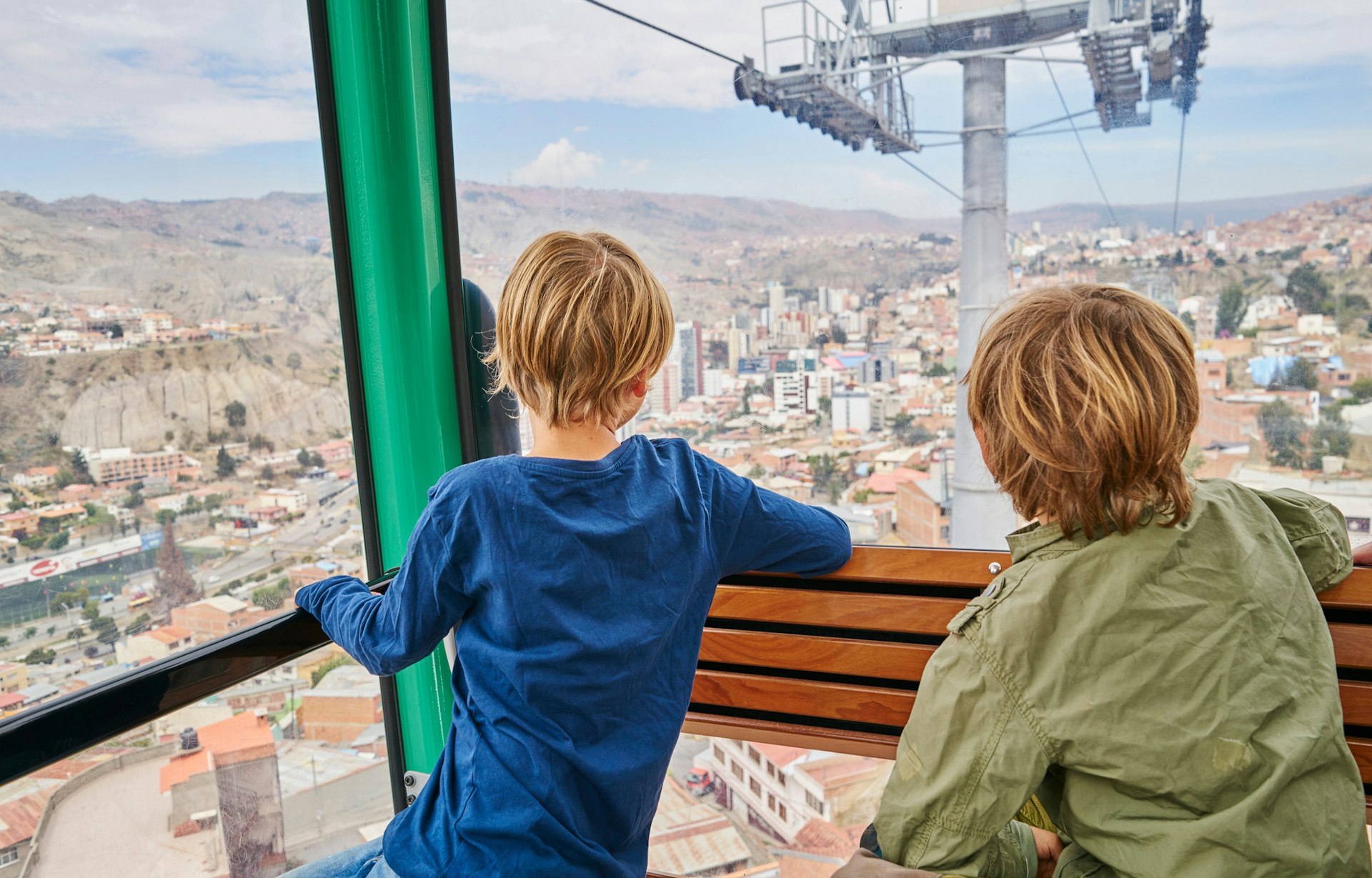
Best place for cultural encounters
Built into a natural hollow framed by the Cordillera Real mountains, La Paz stands at a dizzying 3600m (11,811ft) above sea level, so don't overdo things in the first couple of days.
At first look, this majestic city can – quite literally – take your breath away. La Paz is a bustling and dynamic metropolis where indigenous traditions coexist with the modernity of a big city, making for an unmissable stop.
The lively center combines colonial architecture with colorful modern buildings from Bolivia's post-independence period. In amongst it all are art museums, a growing gastronomic scene and plenty of vibrant nightlife.
A new cable car system offers wonderful bird’s eye views of the city, and you can dip into the Mercado de las Brujas (Witches Market) to learn about the mysticism of Aymara culture.
Within easy striking distance of La Paz are a number of rewarding natural attractions, including the cactus-filled Valle de Luna – perfect if you want to take a quick break from the busy streets.
3 Madidi National Park
Best place for wildlife sightseeing
One of the world's most biologically diverse ecosystems, Madidi National Park forms part of the Bolivian Amazon, one of South America's best-preserved areas of virgin rainforest.
This protected section of the Amazon is only accessible via a three-day boat ride from Rurrenabaque, so getting here is part of the fun.
As well as getting a feel for the sounds and sensations of the rainforest inside this almost 19,000-sq-km (7336-sq-mile) reserve, you can meet pink dolphins, try your hand at piranha fishing and visit Indigenous communities on innovative and community-focused eco-tourism projects.
Planning tip: Tours to Madidi are all-inclusive and mostly at the budget end of the spectrum – they're a moving introduction to the Amazon world.
Best place for historic architecture
Taking its name from revolutionary leader, Antonio José de Sucre – who later became the second president of independent Bolivia – the nation's capital is a stunner.
It's a city of well-preserved colonial architecture and Republican-style buildings that well fits the translation of its Spanish name, thanks to an impeccable collection of sugar-white houses, basilicas and civic buildings that sparkle in the South American sunshine.
As the city where the Bolivian republic was founded, Sucre has plenty for history buffs to enjoy. Highlights include the Casa de la Libertad (House of Freedom), where the declaration of independence was signed in 1825.
Also swing by the Cementerio Municipal , with its ornate mausoleums and magnificent gardens, and the Recoleta neighborhood, for fine views across the roofs and bell towers of the capital. With its comfortable weather, tasty food and rich historical heritage, Sucre is an essential stop on any Bolivia itinerary.

Best place for history
In colonial times, the silver mines of Potosí turned this dizzyingly high outpost into one of the largest and most influential cities in the Americas, with its riches flowing back to the Spanish Empire.
Mining still goes on inside Cerro Rico mountain – known locally as "Rich Hill" – and visitors can join tours to explore the dark and narrow tunnels and meet the miners who earn a living in this harsh environment. Needless to say, it's not a trip for claustrophobics.
In the city itself, the main attraction is Casa Nacional de la Moneda , a monumental 18th-century construction where locally mined silver was once transformed into coins – known as potosís – during Potosí's heyday.
Due to falling returns from the mines, the city has fallen on hard times, but its well-preserved architecture still stands as testimony to its affluent past.
6. The Jesuit Mission Circuit
Best for surprising religious architecture
The historic La Chiquitania region is composed of several small, centuries-old Jesuit Mission towns that sit amongst beautiful landscapes and abundant natural attractions.
On a multiday tour, you’ll get the chance to visit ancient churches that were built between 1691 and 1760 and remain largely unchanged to this day, in towns such as Concepción, famed for the remarkable, low-eaved Catedral de Concepción .
Expeditions begin in San Javier, four hours from Santa Cruz , and continue to San Ignacio, which is used as a base to explore the wider area. With plenty of viewpoints overlooking the dry forests of La Chiquitania and numerous short trails to hike, as well as thermal rivers and impressive rock formations to explore, La Chiquitania shows a very different side to Bolivia.
Planning tip: This area also hosts the respected International Baroque Music Festival across April and May every second year.

7. Biking along the Death Road
Best for an adrenaline-charged adventure
Once regarded as one of the most dangerous roads in the world, the so-called Death Road connecting La Paz with the valley of Los Yungas is now closed to motor traffic. However, it's still accessible by bicycle, on one of South America's most fun-filled off-road rides.
With descents of more than 3000m (9842ft), the gravel route is a thrilling mountainside adventure that begins on the snow-covered high plains of La Cumbre (the summit of the Cordillera Real) and ends in a tropical valley where you can finally pause and catch your breath.
Passing some magnificent subtropical scenery, including plunging waterfalls, sheer cliffs and narrow, nerve-wracking corners, this cycle trip is only for the most audacious of riders.
Planning tip: For about 350 bolivianos (approximately US$50), tour operators will provide mountain bikes and transfers, as well as the necessary backup equipment for the one-day ride.
8. Isla del Sol, Lake Titicaca
Best place to disconnect from the outside world
According to legend, the Isla del Sol on Lake Titicaca was the birthplace of Inca culture. Located on the highest navigable lake in the world, this historic and sacred site showcases Boliva’s remarkable indigenous heritage like nowhere else.
On the island itself are Inca ruins , a museum containing sacred relics, and the Fuente del Inca (Fountain of Youth), a natural stream that locals believe has the power to grant health and eternal youth. You can also hike along a four-hour trail for impressive views over the expansive waters of Lake Titicaca.
Planning tip: Boats run between Isla del Sol and Copacabana pier on the lakeshore just twice a day; if you need to stop over, island accommodations are mostly very basic. There are no ATMs and it’s hard to get Wi-Fi, so be ready for a rustic experience.
9. Samaipata
Best place to chill out
A charming village located three hours away from Santa Cruz, Samaipata has a perfect year-round climate and a relaxing atmosphere where time seems to slow down and the noise of the crowds fades to a whisper. It's ideal for taking a soul-restoring break in the hills.
Nearby are numerous natural attractions including the scenic Las Cuevas waterfalls that are usually empty on weekdays for a refreshing alfresco swim. If you enjoy hiking trails, point your compass at the giant fern forest in nearby Amboró National Park.
The other big attraction in Samaipata is El Fuerte . A sacred rock carved with seats, conduits, and niches for idols, it's located on top of a hill surrounded by the ruins of an ancient ceremonial center for the Chané and Inca people.
Samaipata also has a burgeoning wine industry – a surprising discovery in this off-the-beaten-track location. Several local cellars are open to visitors, and you can taste their wares with a wonderful view of the vineyards that produced the wine in your glass.
This article was first published Mar 29, 2022 and updated Nov 9, 2023.
Explore related stories
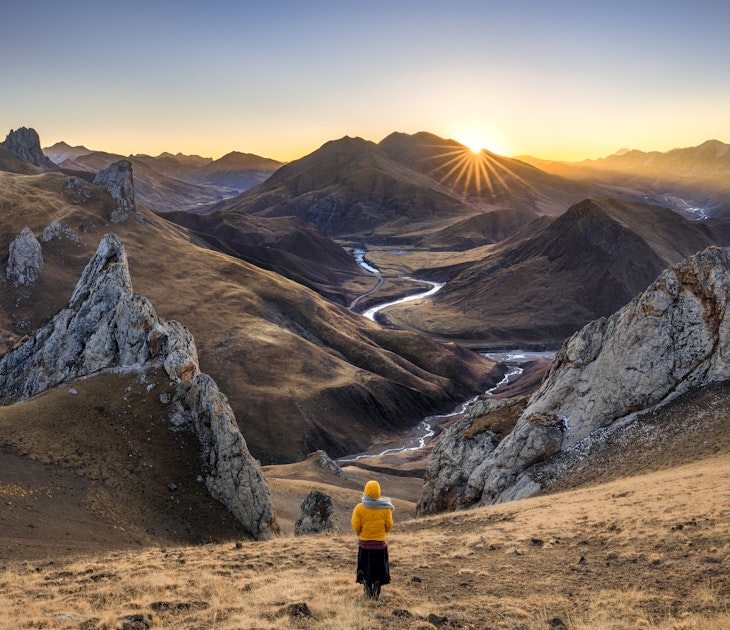
Jan 5, 2024 • 20 min read
As the new year begins, here are 24 of the world’s most life-affirming journeys to consider for nurturing your path to self-discovery.

Dec 20, 2023 • 4 min read

Dec 15, 2023 • 7 min read

Nov 18, 2023 • 7 min read

Nov 6, 2023 • 8 min read

Nov 3, 2023 • 8 min read

Oct 28, 2023 • 4 min read

Sep 29, 2022 • 7 min read

Jan 8, 2022 • 6 min read

Dec 10, 2021 • 10 min read
- South America
- 10 Things To Know Before...
10 Things to Know Before Visiting La Paz, Bolivia

Situated in a sweeping valley amid towering Andean peaks, the lofty heights of La Paz will literally take your breath away. Exotic, chaotic, and brimming with colorful customs, Bolivia’s high altitude capital can admittedly feel overwhelming at times. But fear not, for Culture Trip has put together a list of 10 useful things to know to help you navigate this perplexing city with ease.
How to speak spanish.
Or a few basic phrases, at least. While those in the tourism industry do tend to speak passable English, everyone else will respond with little more than a shrug and a confused “¿ Que? ”

The altitude is extreme

There’s a fantastic cable car system
New lines on the city’s famed Mi Teleferico cable car system have been opening at breakneck speed, with a total of six currently operating to date. Rather than exploring the city in tired old taxis or cramped minibuses, jump on the teleferico to marvel at La Paz from the sky.

It’s a great hub to explore Bolivia
Strategically located between the Amazon and the Andes, many find themselves passing through again and again. Travelers can use La Paz’ convenient location as a base to discover further afield.

Indigenous culture is alive and well
The native Aymara form the majority in La Paz, whose colorful traditional outfits can be seen proudly on display. For a different kind of indigenous experience, watch a team of fiery cholitas do battle in a WWE-style wrestling free-for-all.

Everything is really cheap
Prices have risen sharply over the years, yet La Paz remains one of the best value capitals on the continent. Accommodation , food, and alcohol can all be purchased for a fraction of what they cost elsewhere.

The nightlife is intense
Lonely Planet rated La Paz as having among the best nightlife in the world, partly thanks to a series of boisterous backpacker orientated party hostels where all night booze-fueled celebrations are the norm.

The restaurants are amazing too
For a relatively impoverished city, La Paz’ foodie scene is surprisingly robust. Once you’ve worked up an appetite, check out the city’s plethora of excellent eateries for an exquisite high altitude dining experience.

Natural splendor is just a short bus ride away
The city may indeed be chaotic at times, which is all the more reason to explore the pristine surroundings that lie just a stone’s throw away. Multiday treks such as Takesi or El Choro are an excellent option, while Palca Canyon , Valle de las Animas, and Tuni Condoriri are all wonderful one-day escapades.

The Death Road is not to be taken lightly
One of La Paz’ most popular attractions is hurtling a mountain bike down the World’s Most Dangerous Road. Keep in mind, however, that true to its name people do in fact die . At the very least, be sure to get a good night’s sleep and take it easy on the descent.

Since you are here, we would like to share our vision for the future of travel - and the direction Culture Trip is moving in.
Culture Trip launched in 2011 with a simple yet passionate mission: to inspire people to go beyond their boundaries and experience what makes a place, its people and its culture special and meaningful — and this is still in our DNA today. We are proud that, for more than a decade, millions like you have trusted our award-winning recommendations by people who deeply understand what makes certain places and communities so special.
Increasingly we believe the world needs more meaningful, real-life connections between curious travellers keen to explore the world in a more responsible way. That is why we have intensively curated a collection of premium small-group trips as an invitation to meet and connect with new, like-minded people for once-in-a-lifetime experiences in three categories: Culture Trips, Rail Trips and Private Trips. Our Trips are suitable for both solo travelers, couples and friends who want to explore the world together.
Culture Trips are deeply immersive 5 to 16 days itineraries, that combine authentic local experiences, exciting activities and 4-5* accommodation to look forward to at the end of each day. Our Rail Trips are our most planet-friendly itineraries that invite you to take the scenic route, relax whilst getting under the skin of a destination. Our Private Trips are fully tailored itineraries, curated by our Travel Experts specifically for you, your friends or your family.
We know that many of you worry about the environmental impact of travel and are looking for ways of expanding horizons in ways that do minimal harm - and may even bring benefits. We are committed to go as far as possible in curating our trips with care for the planet. That is why all of our trips are flightless in destination, fully carbon offset - and we have ambitious plans to be net zero in the very near future.

See & Do
Climbing around la paz, bolivia: the best mountains to summit.

Guides & Tips
Everything you need to know about visiting isla del sol, bolivia.

This Art Project Empowers Victims of Domestic Violence

Takesi and El Choro: The Best Multi-Day Treks Near La Paz, Bolivia

7 Ways to Have a Truly Immersive Experience in Bolivia

These Are Bolivia's Most Beautiful Hikes

Places to Stay
The best hotels to book in bolivia for every traveler.

How These Bolivian Ranches Are Helping to Conserve Endangered Jaguars

Stay Curious: Experience Bolivia From Your Living Room

Food & Drink
Snacks you must try in bolivia.

8 Traditional Bolivian Breakfasts You Must Try

How Bolivians Celebrate Christmas
Culture trip spring sale, save up to $1,100 on our unique small-group trips limited spots..

- Post ID: 2187933
- Sponsored? No
- View Payload

StarsInsider
Places with the same name that are actually totally different
Posted: 22 March 2024 | Last updated: 22 March 2024
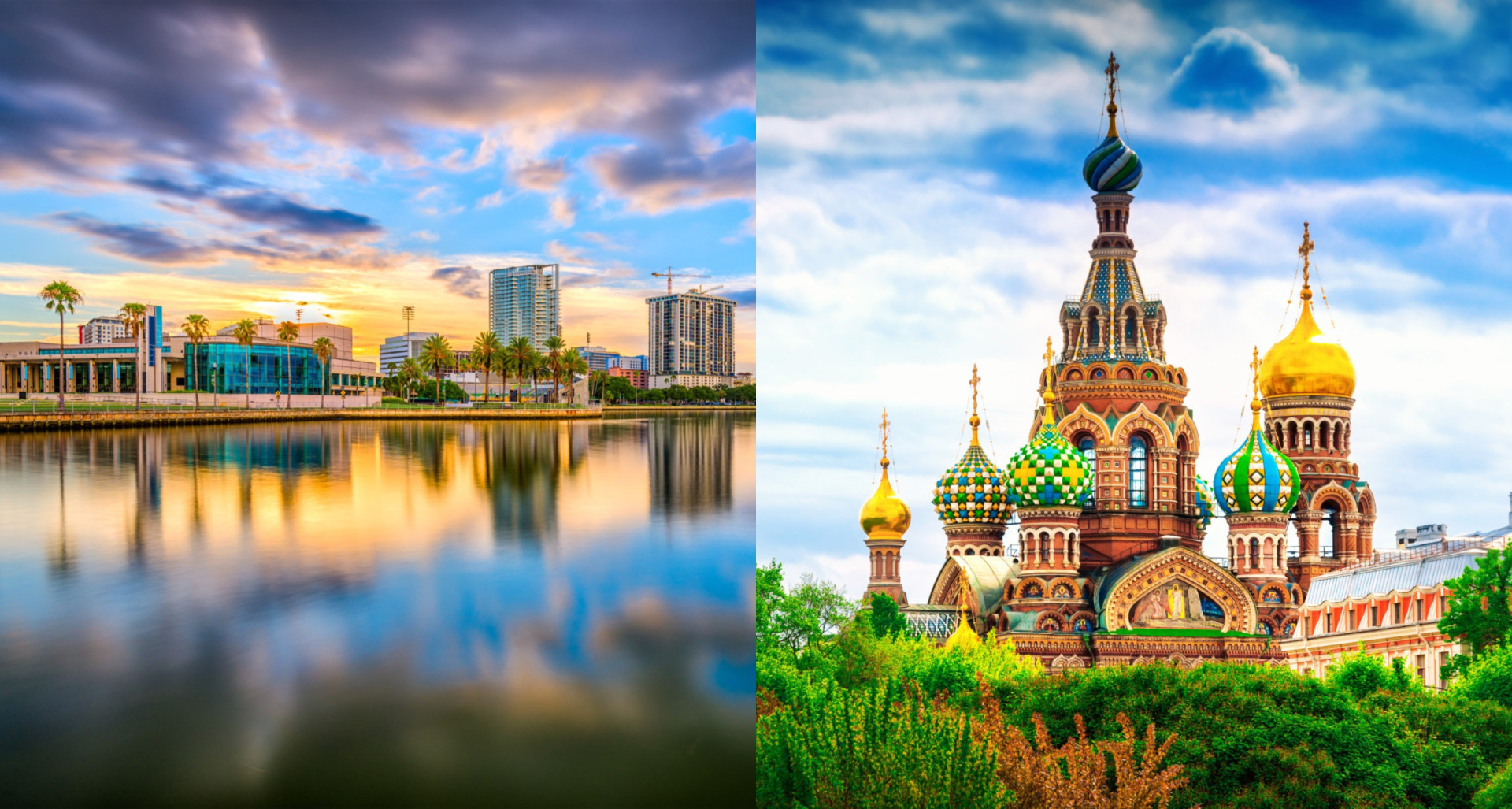
There's nothing more exciting than looking for the next place to visit. All you can think about is relaxing, meeting new people and enjoying different cultures. But beware not to spoil your vacation by buying a plane ticket to the wrong place... In this gallery you'll find a list of places that have the same name, but are actually totally different. Check them out!
You may also like:
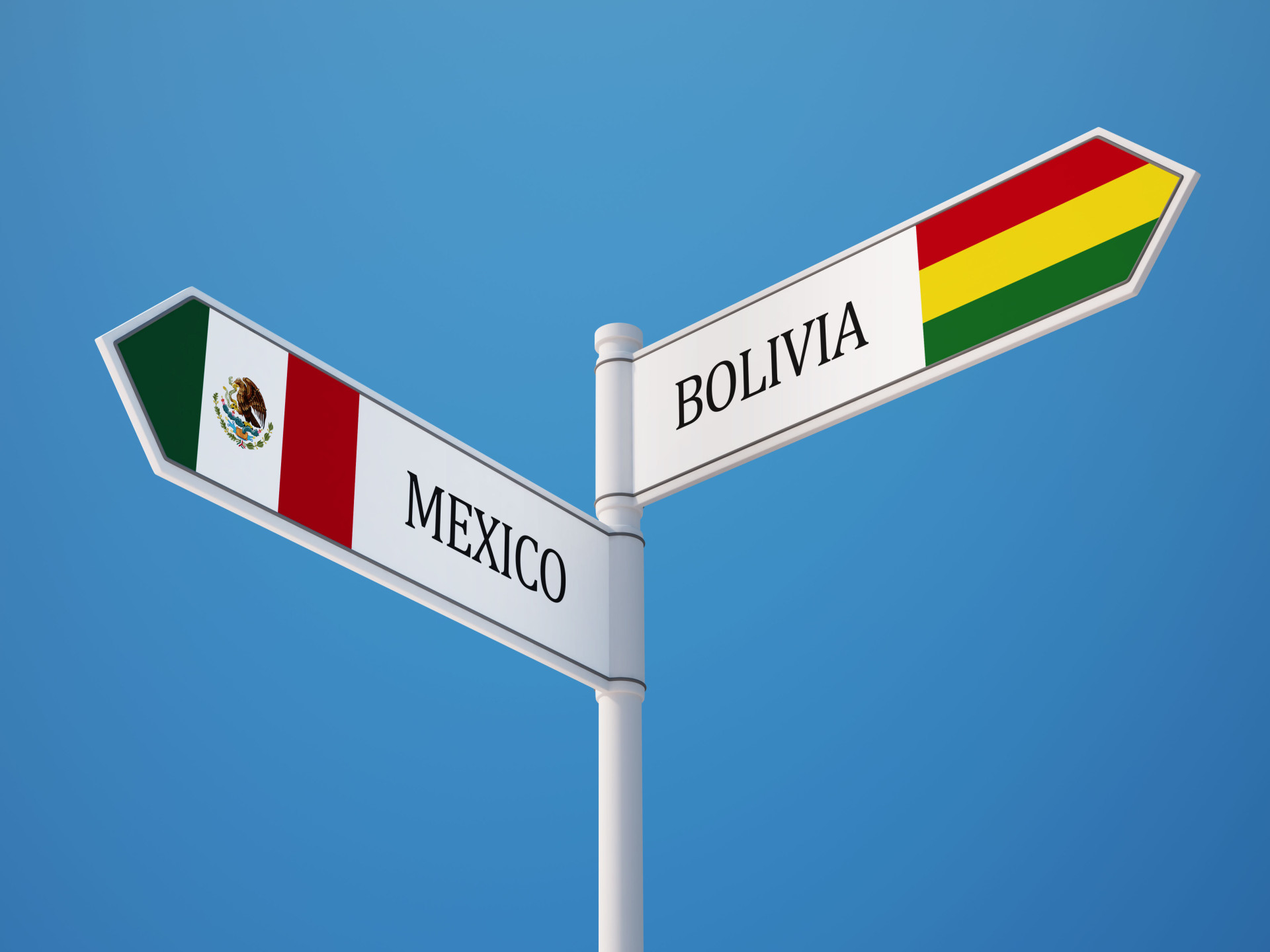
La Paz (Bolivia) x La Paz (Mexico)
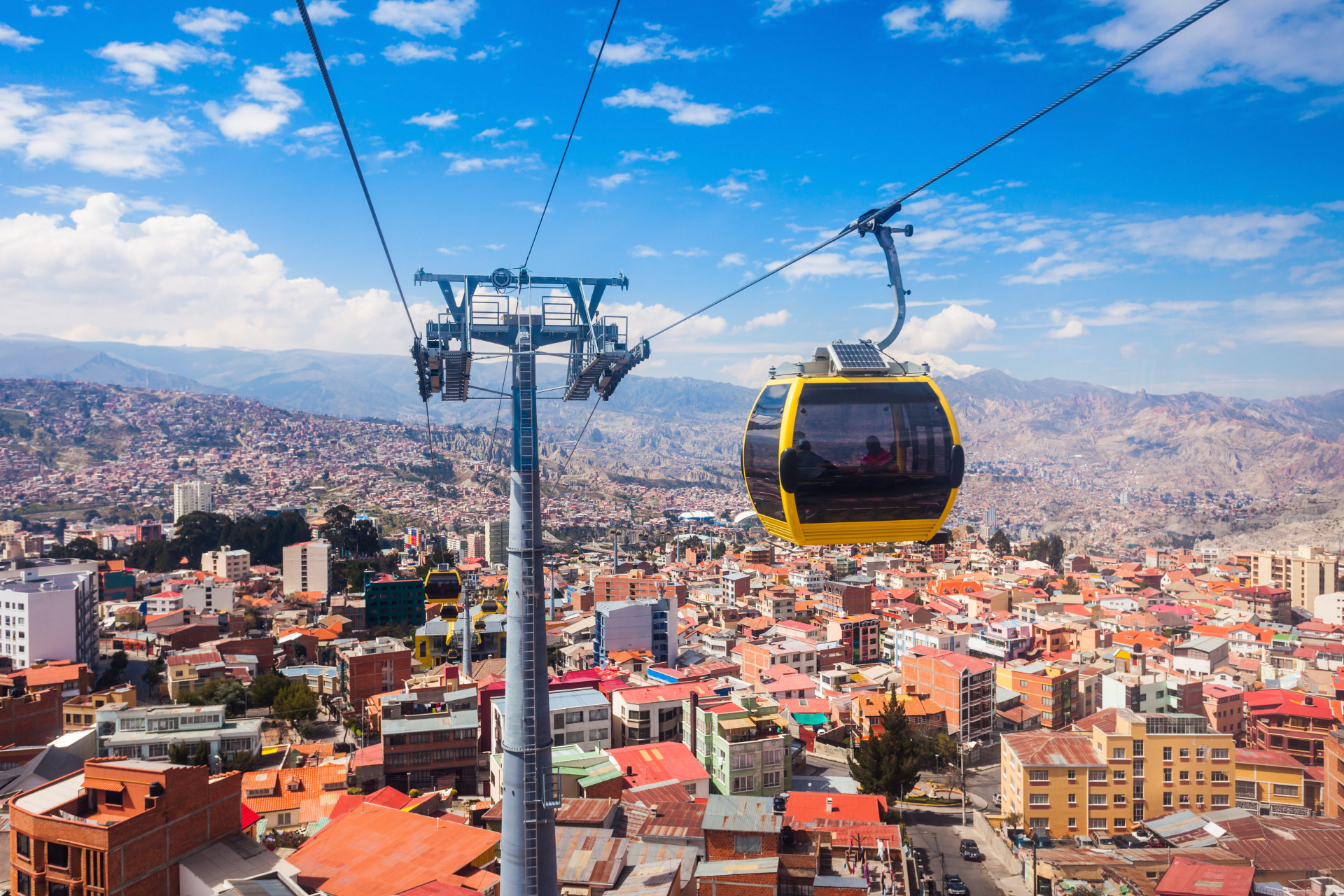
La Paz (Bolivia)
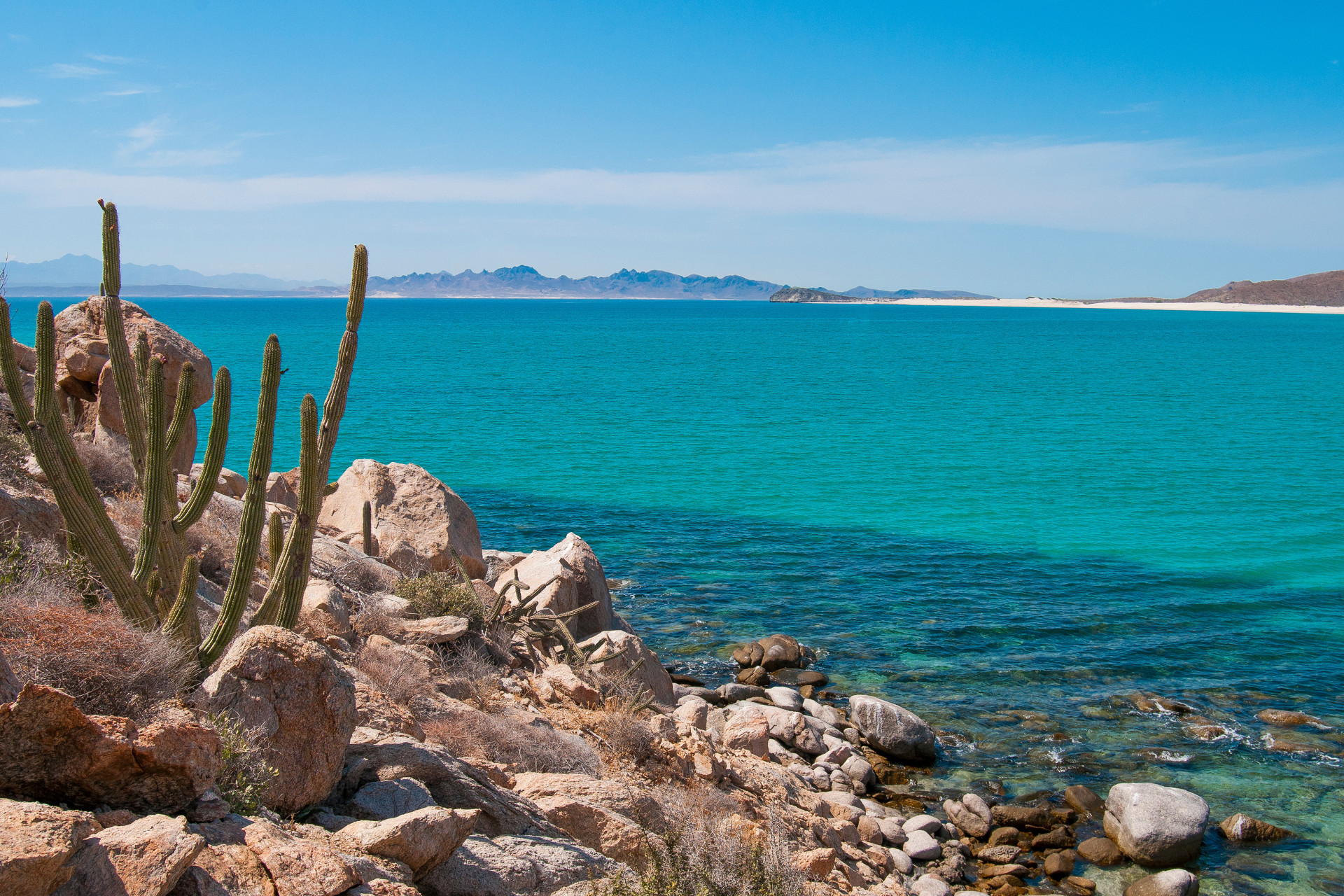
La Paz (Mexico)

Memphis (Egypt) x Memphis (United States)
You may also like: Surprising foods you thought were vegetarian but really aren't
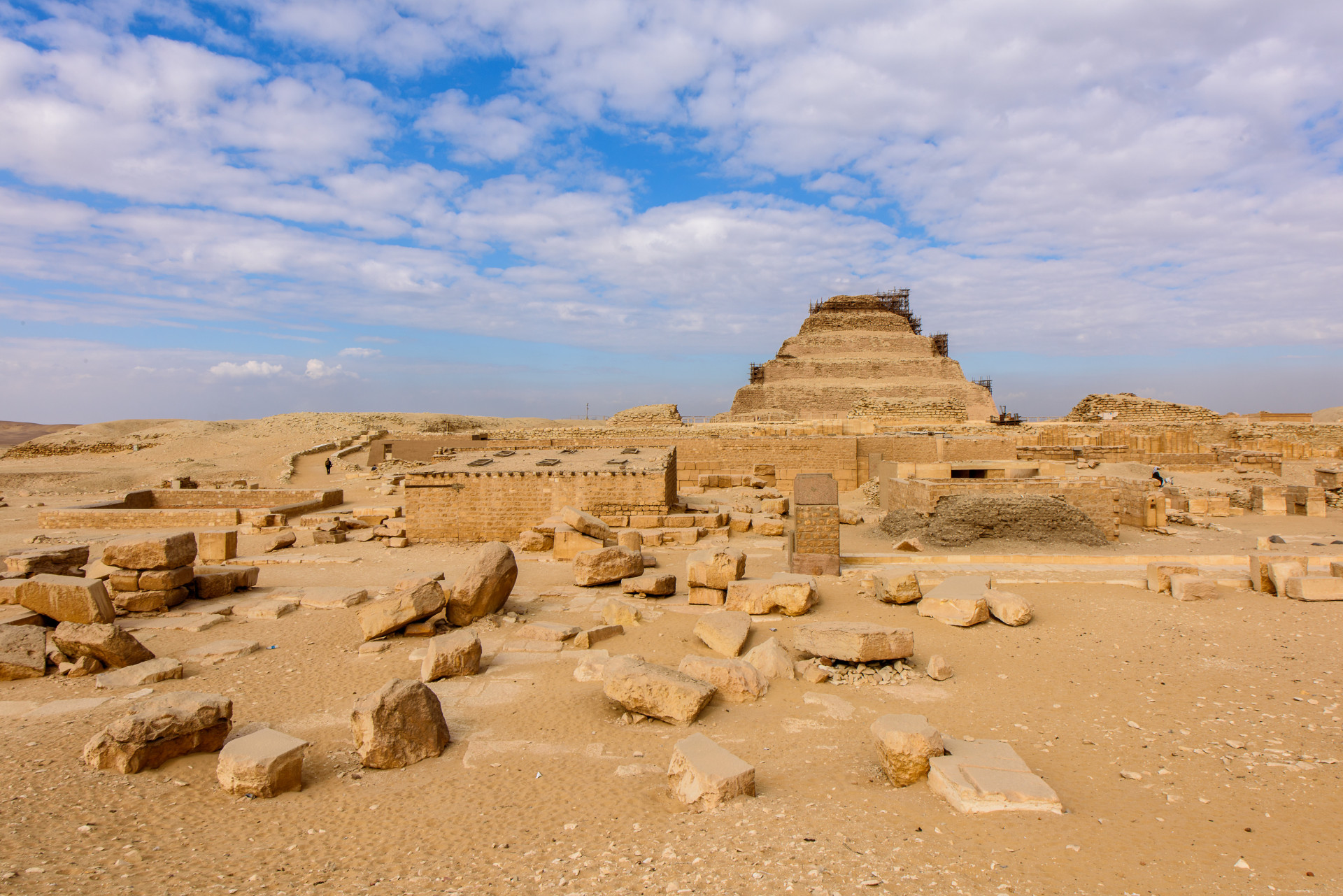
Memphis (Egypt)
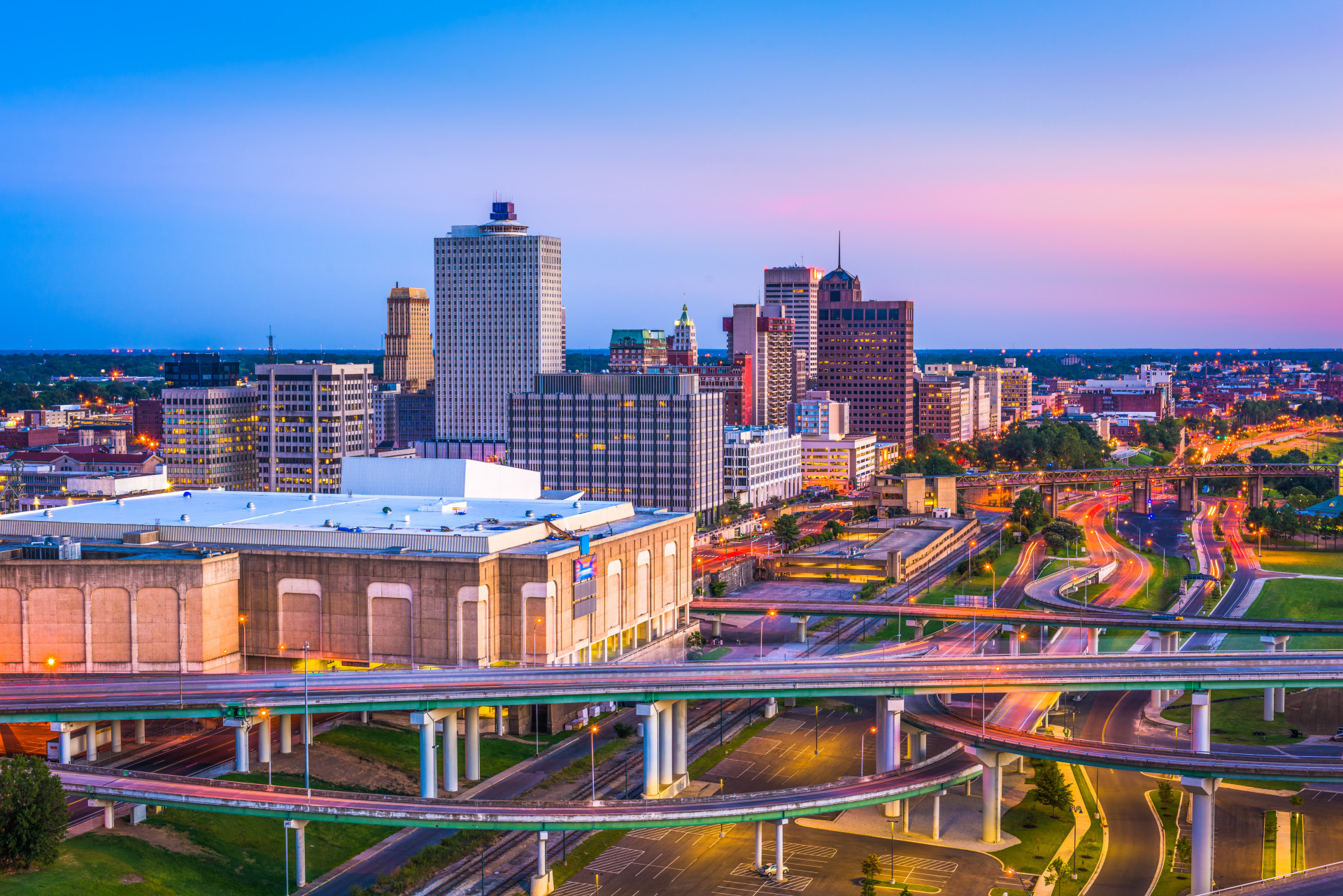
Memphis (United States)
You may also like: Career lows: the worst films these actors ever made
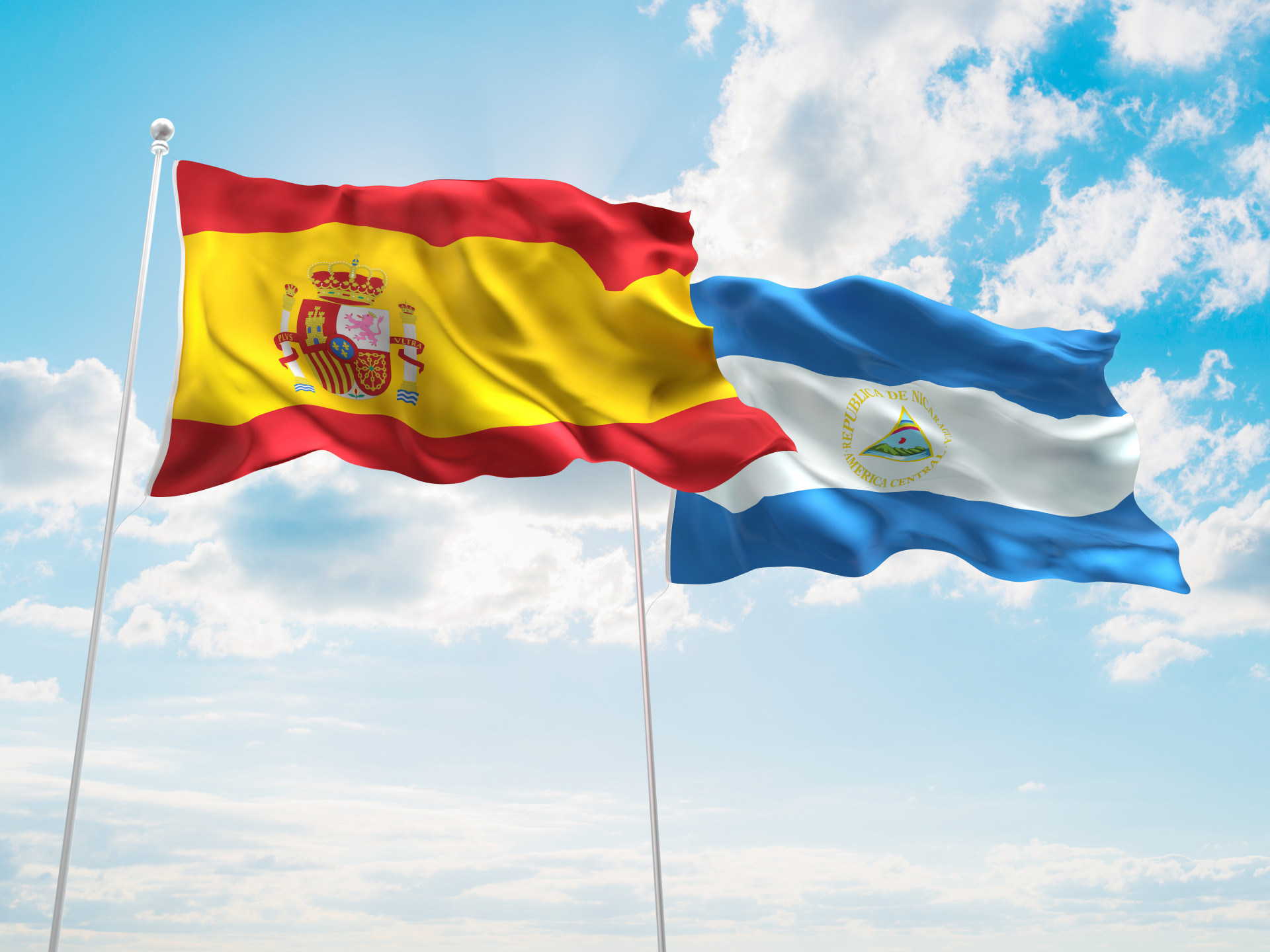
Granada (Nicaragua) x Granada (Spain)
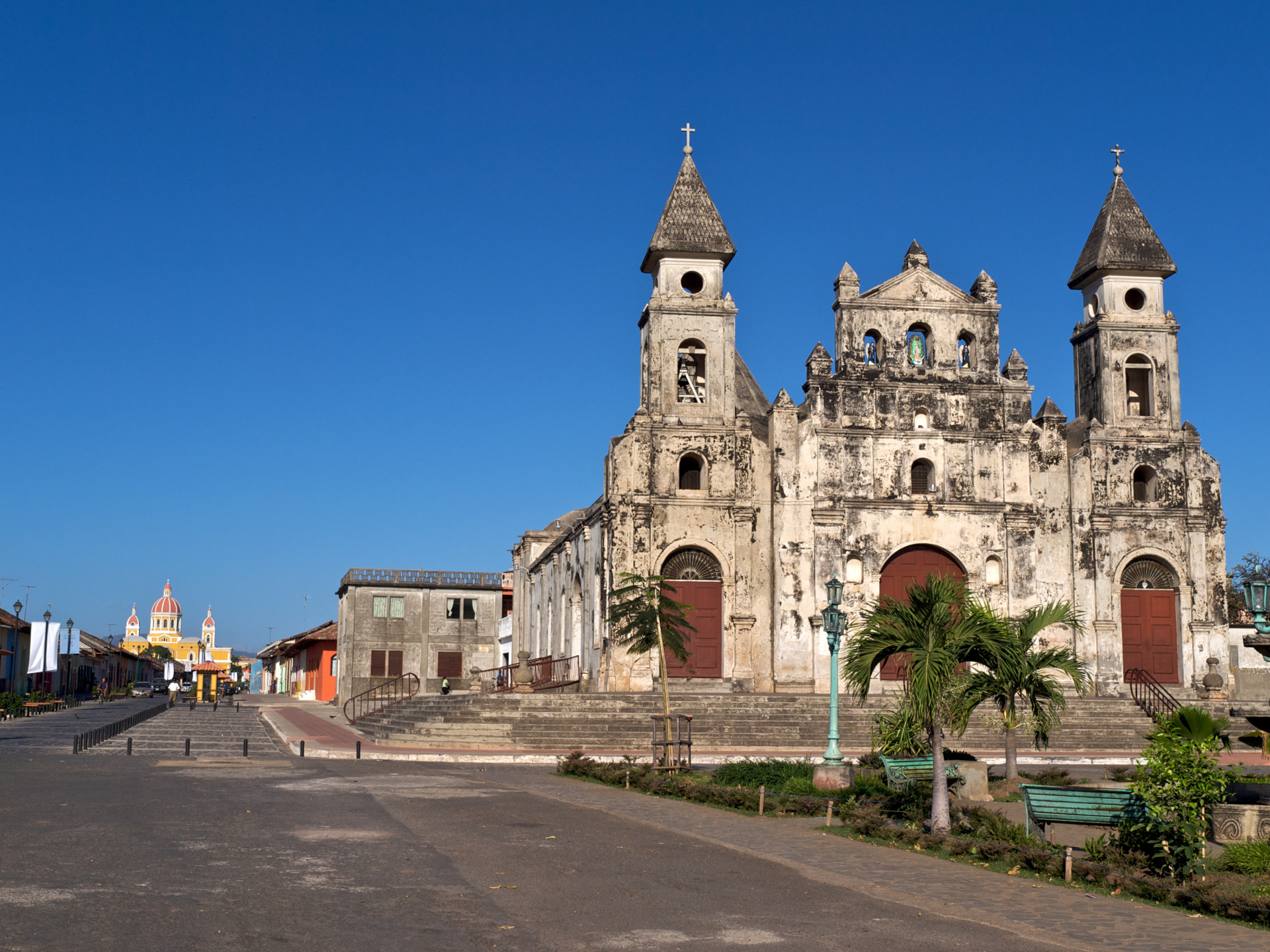
Granada (Nicaragua)
You may also like: Remembering Christopher Plummer, Hollywood's distinguished gentleman
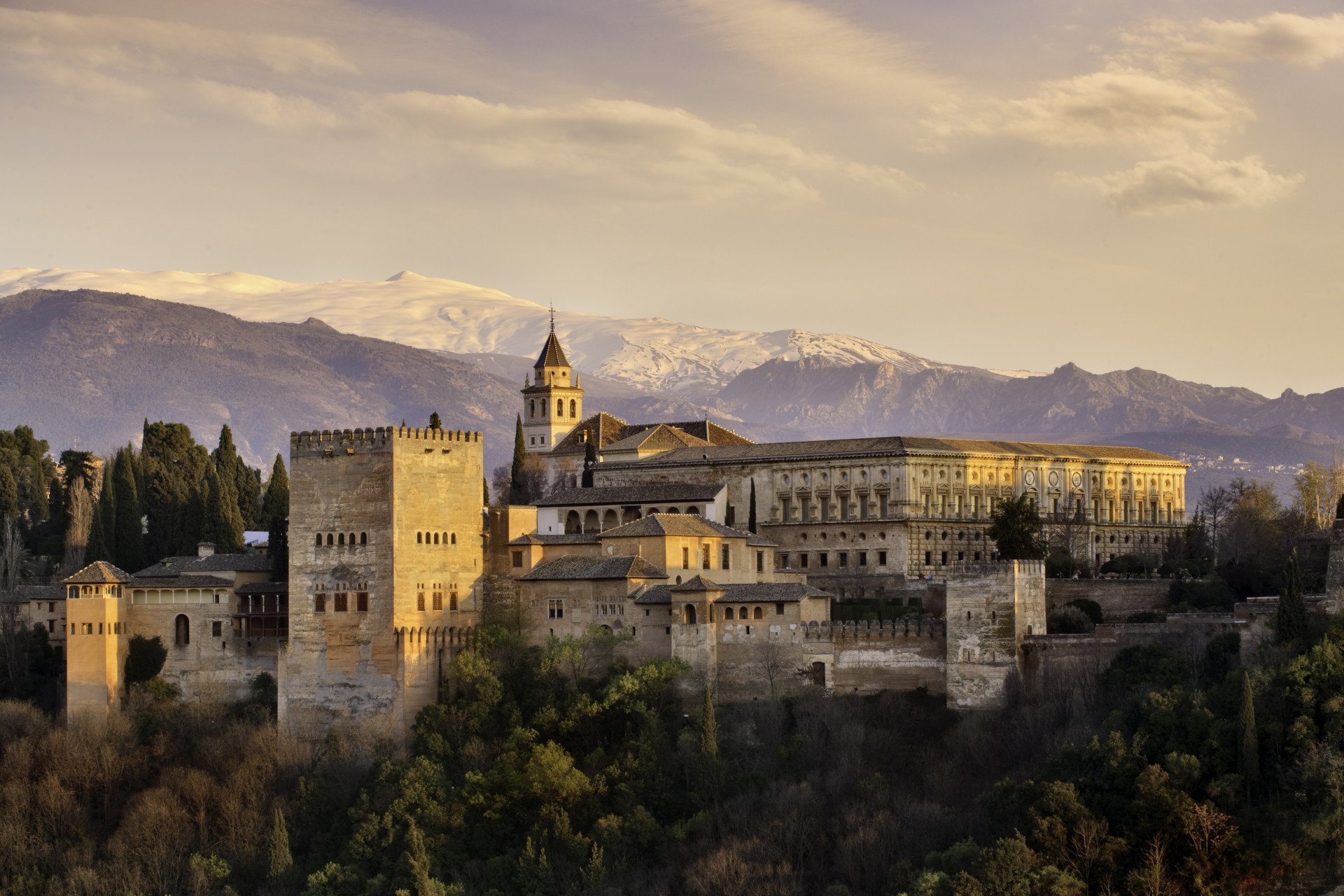
Granada (Spain)
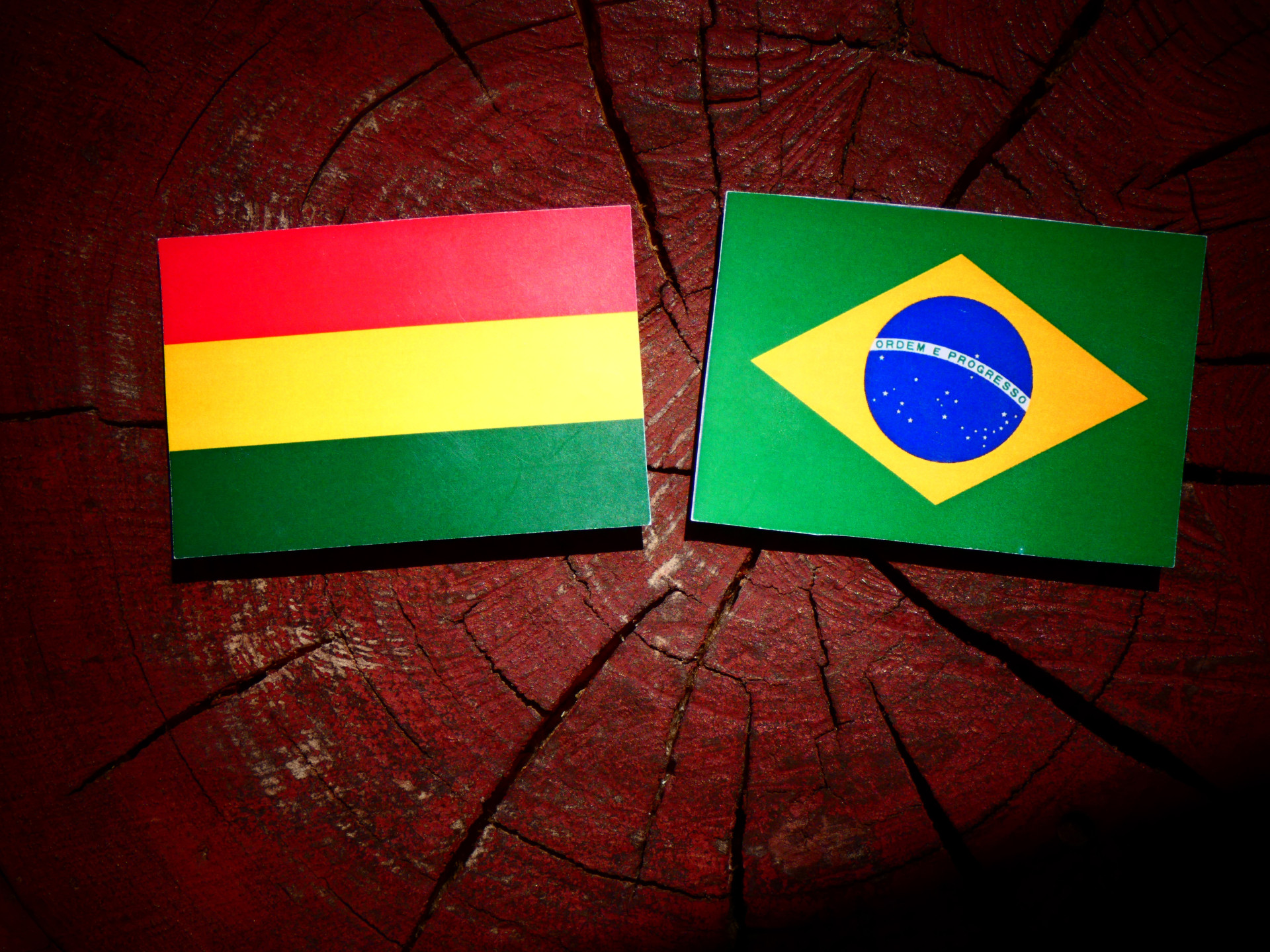
Copacabana (Brazil) x Copacabana (Bolivia)
You may also like: Who is the best Batman of them all?
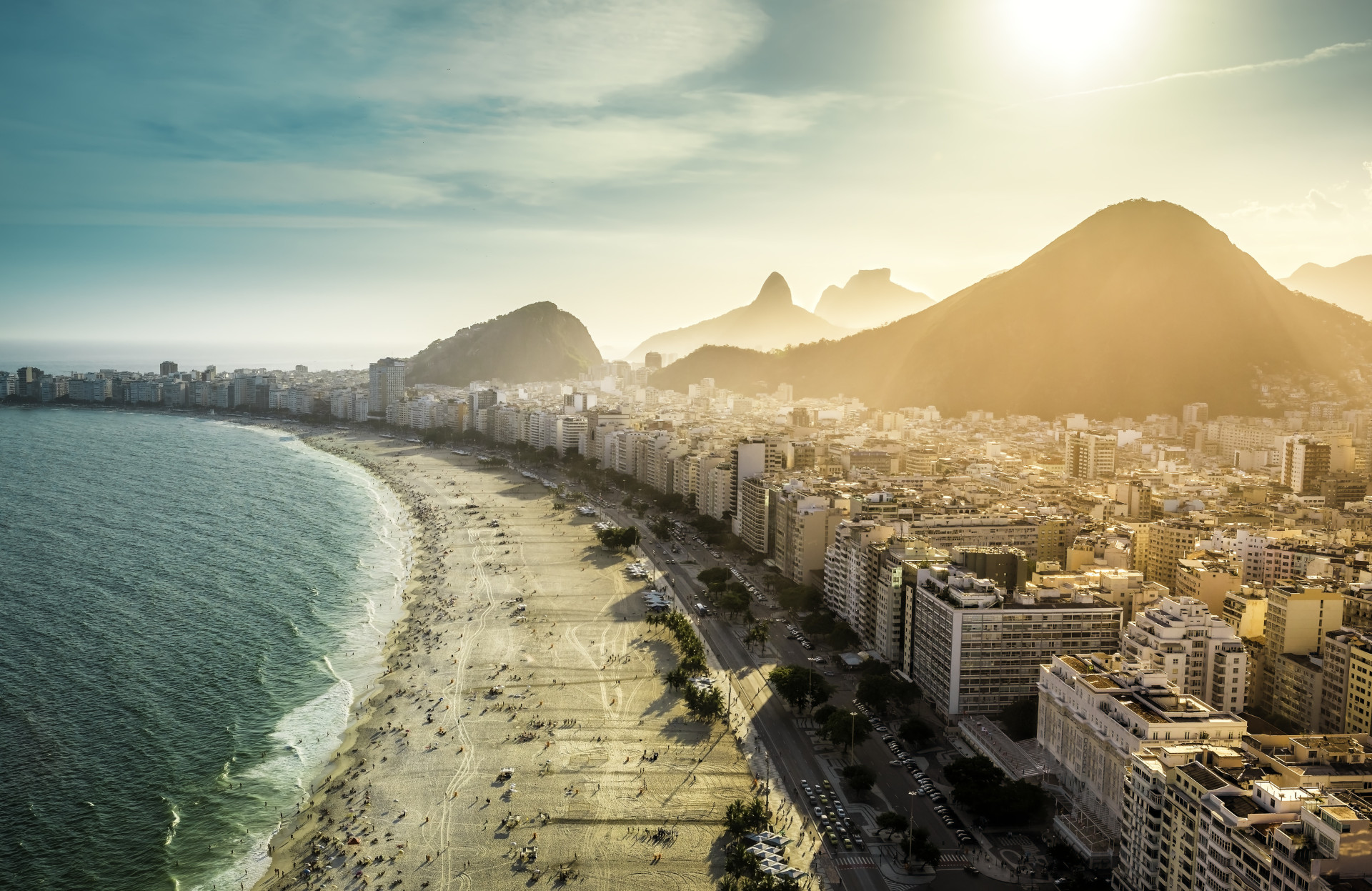
Copacabana (Brazil)
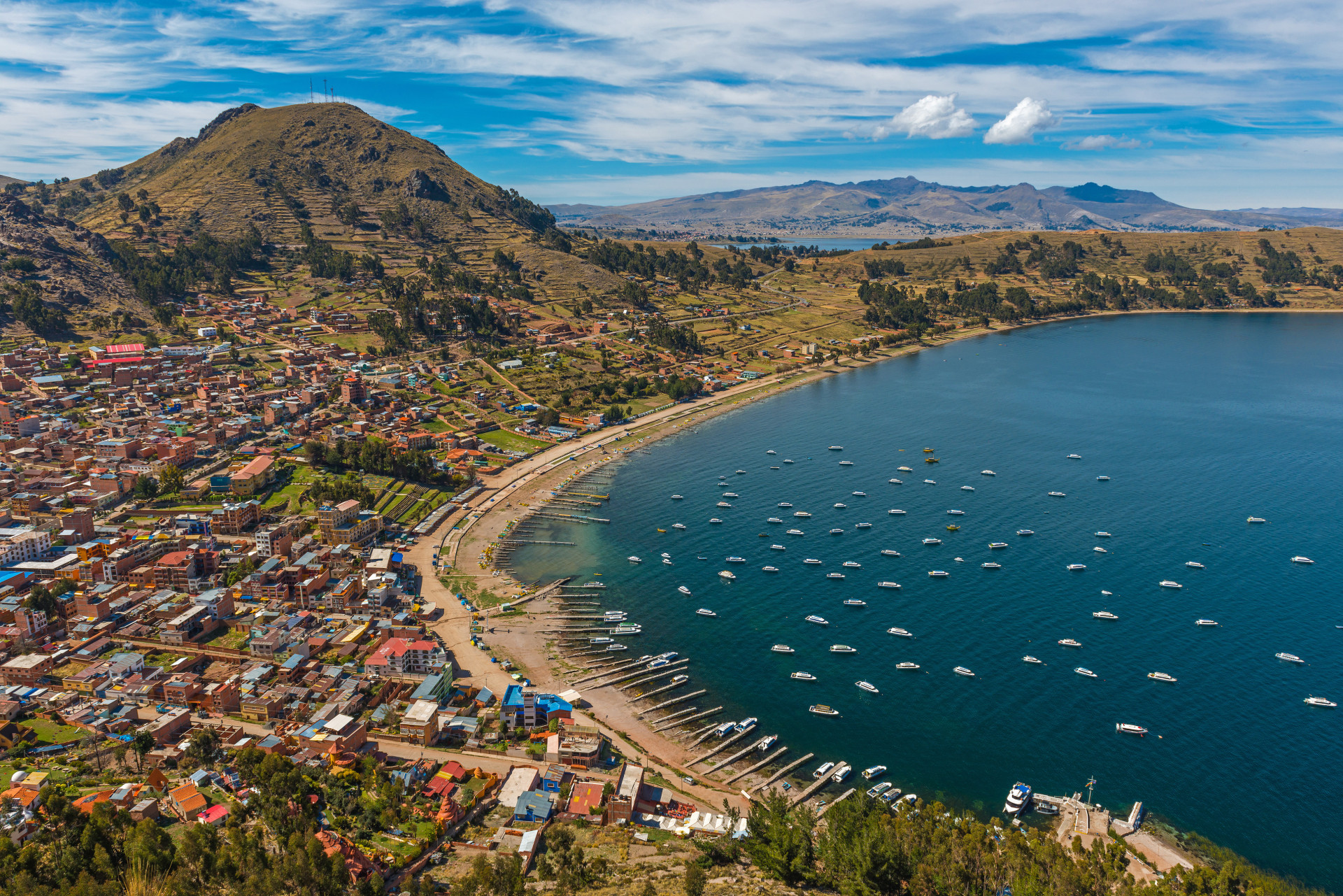
Copacabana (Bolivia)

Sydney (Australia) x Sydney (Canada)

Sydney (Australia)
You may also like: Strangest pre-game rituals in professional sports
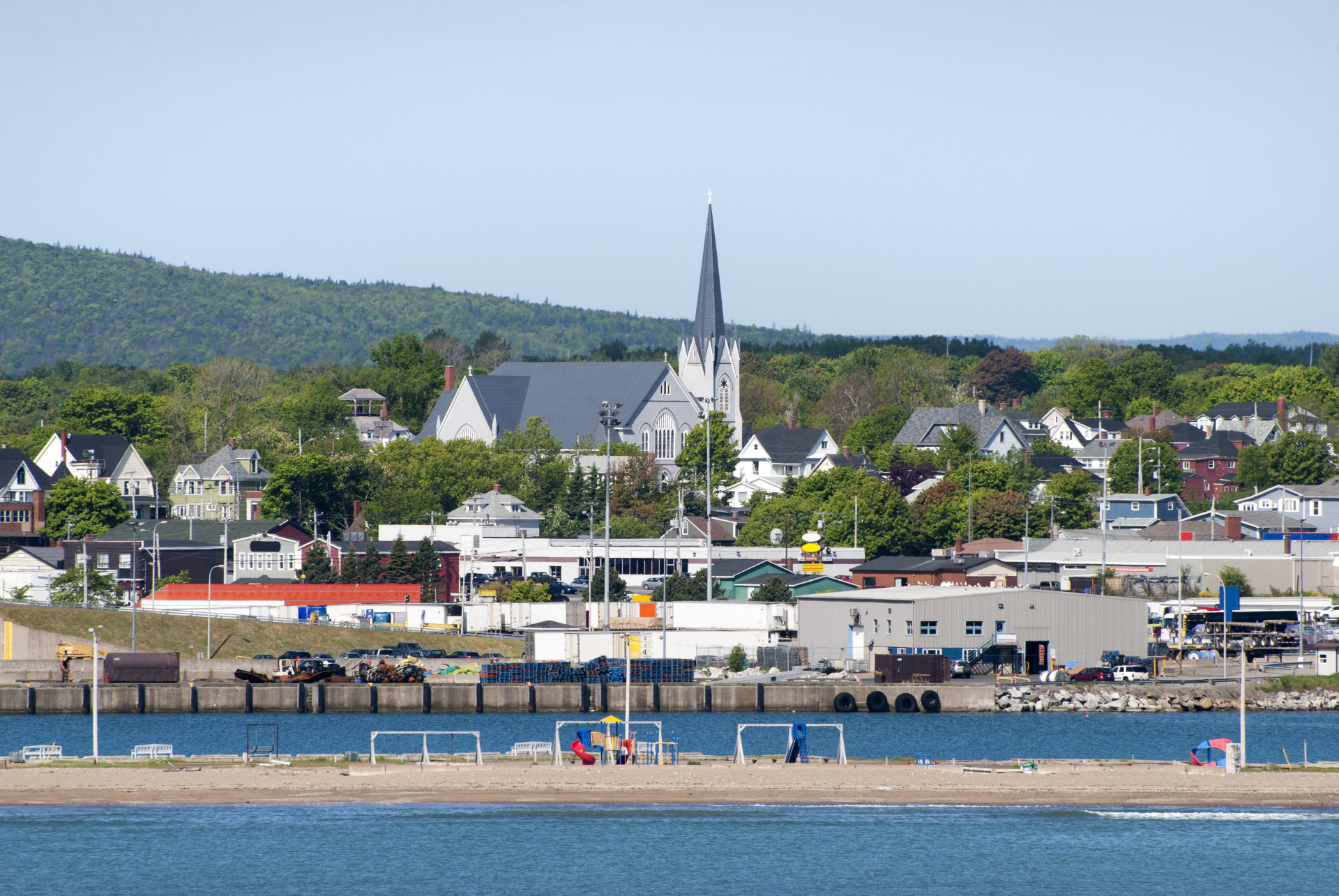
Sydney (Canada)

Paris (France) x Paris (United States)
You may also like: Disney stars: Then and now
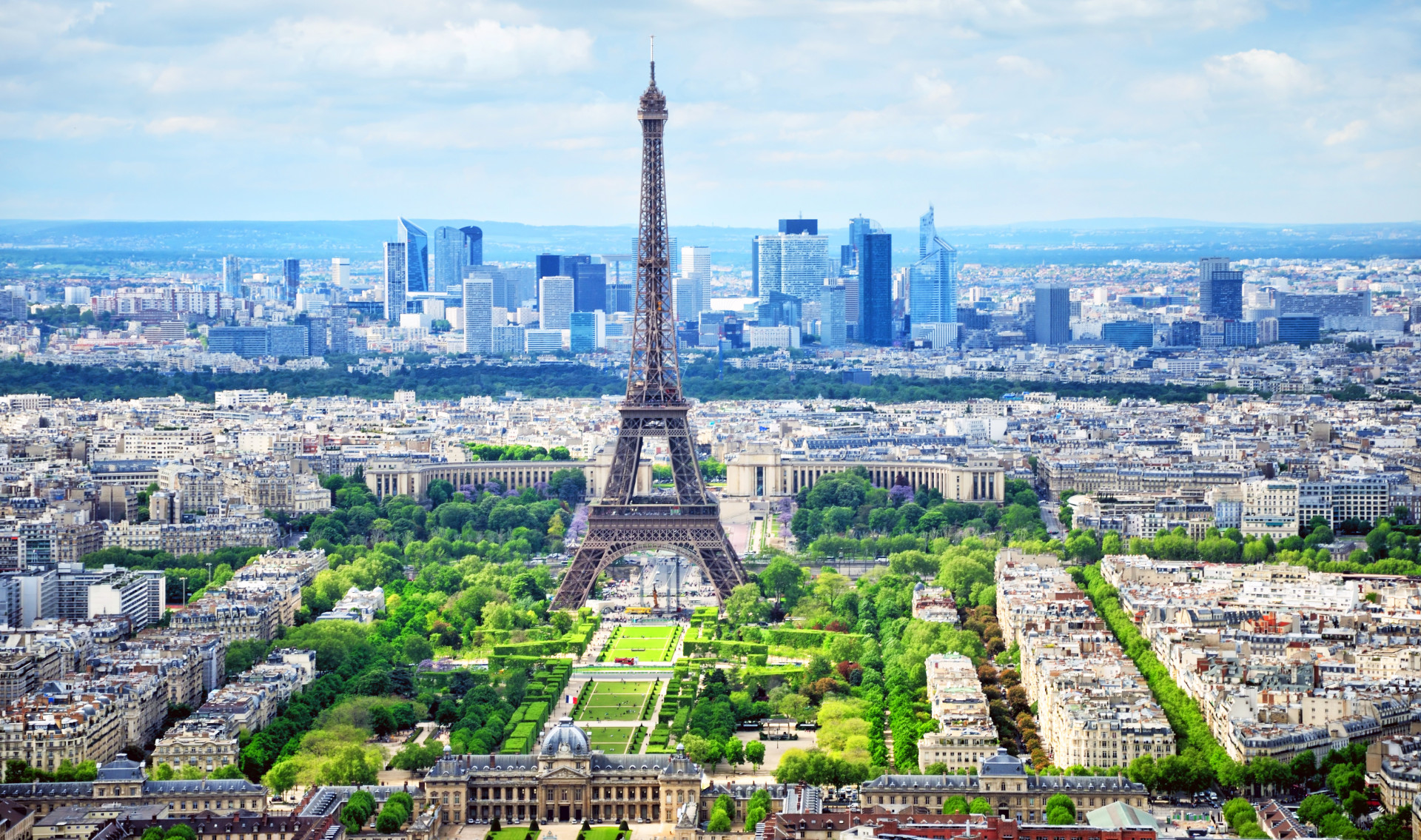
Paris (France)
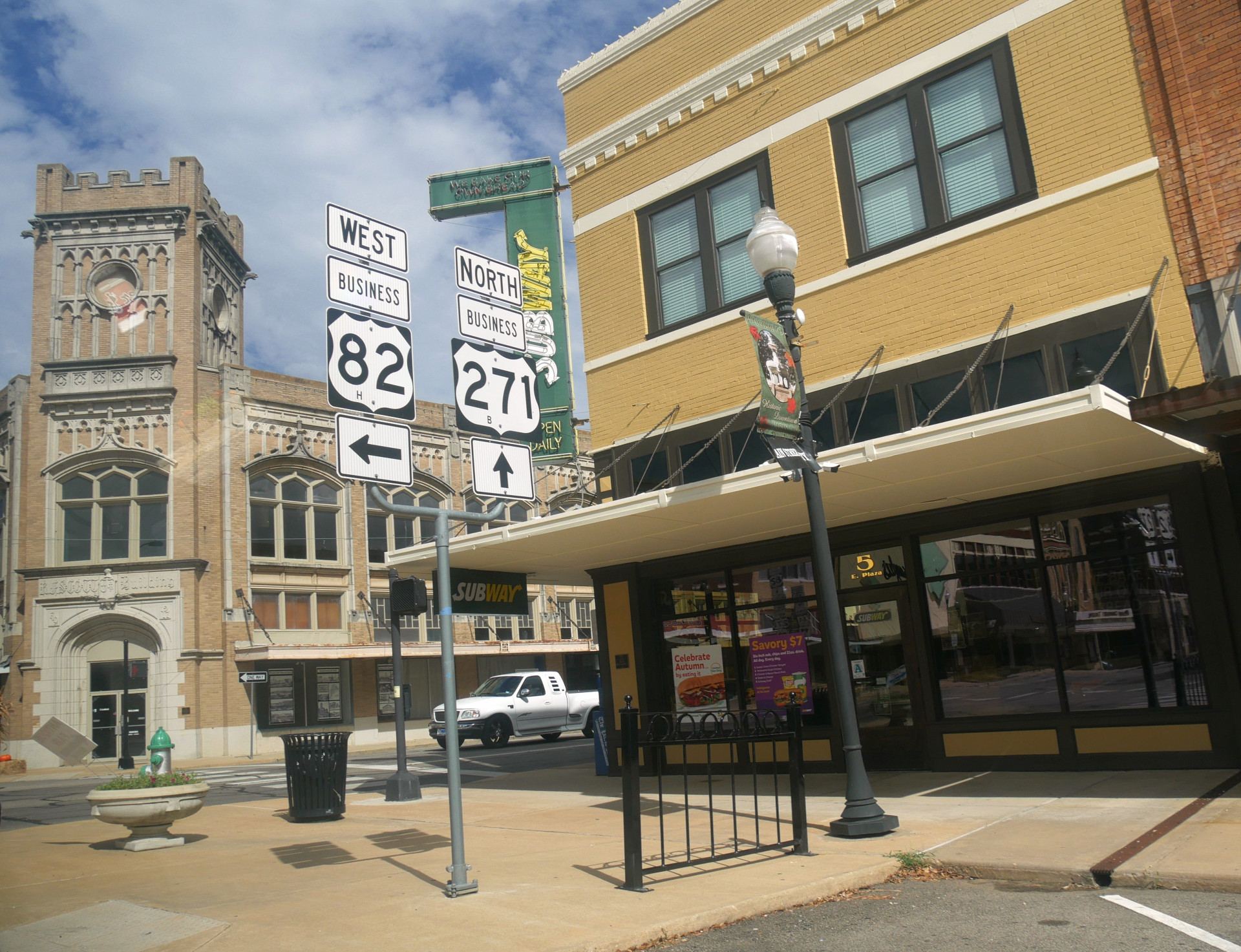
Paris (United States)
You may also like: Actors who got into directing

Antigua and Barbuda (Caribbean) x Antigua (Guatemala)
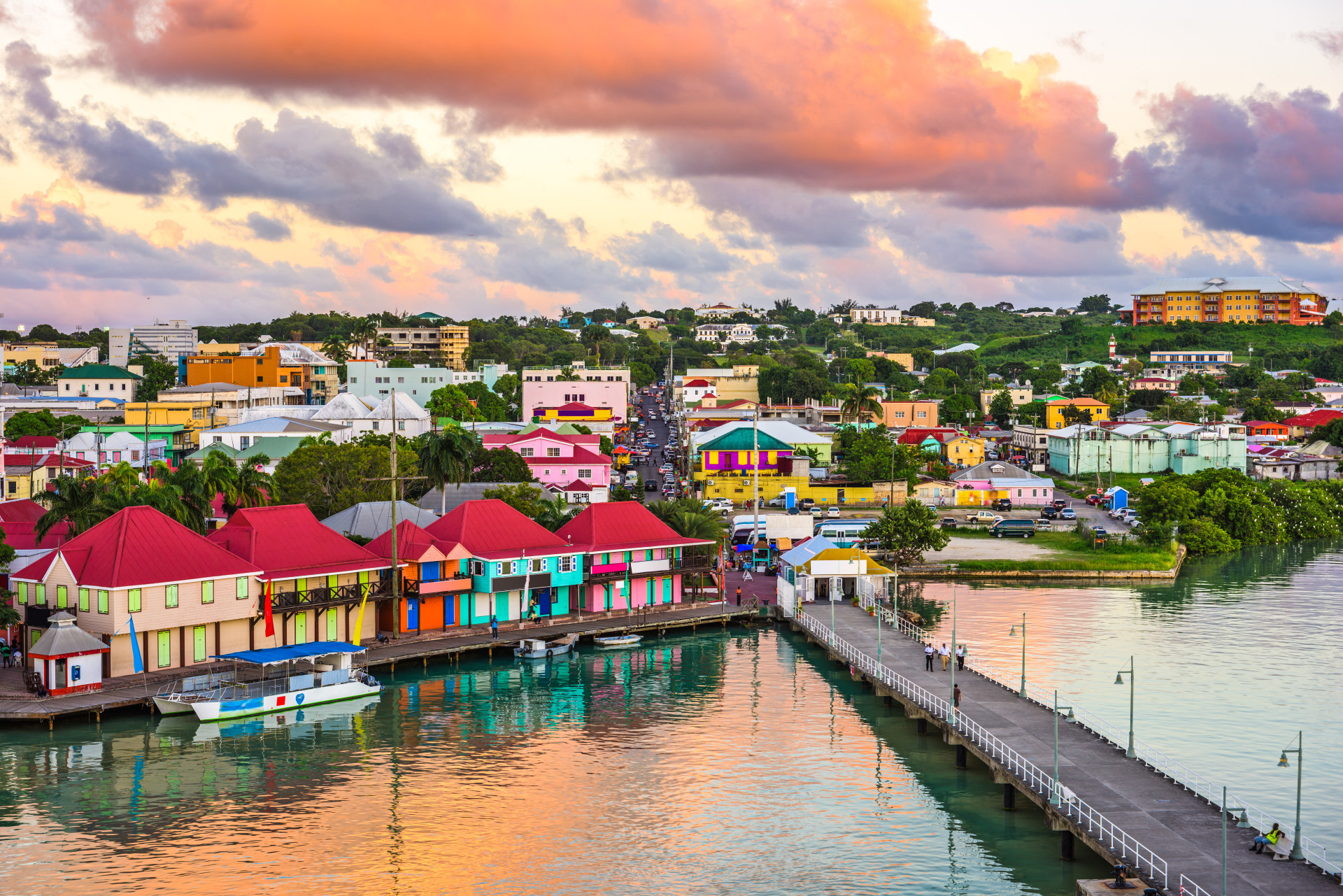
Antigua and Barbuda (Caribbean)
You may also like: 30 things only divorced people know
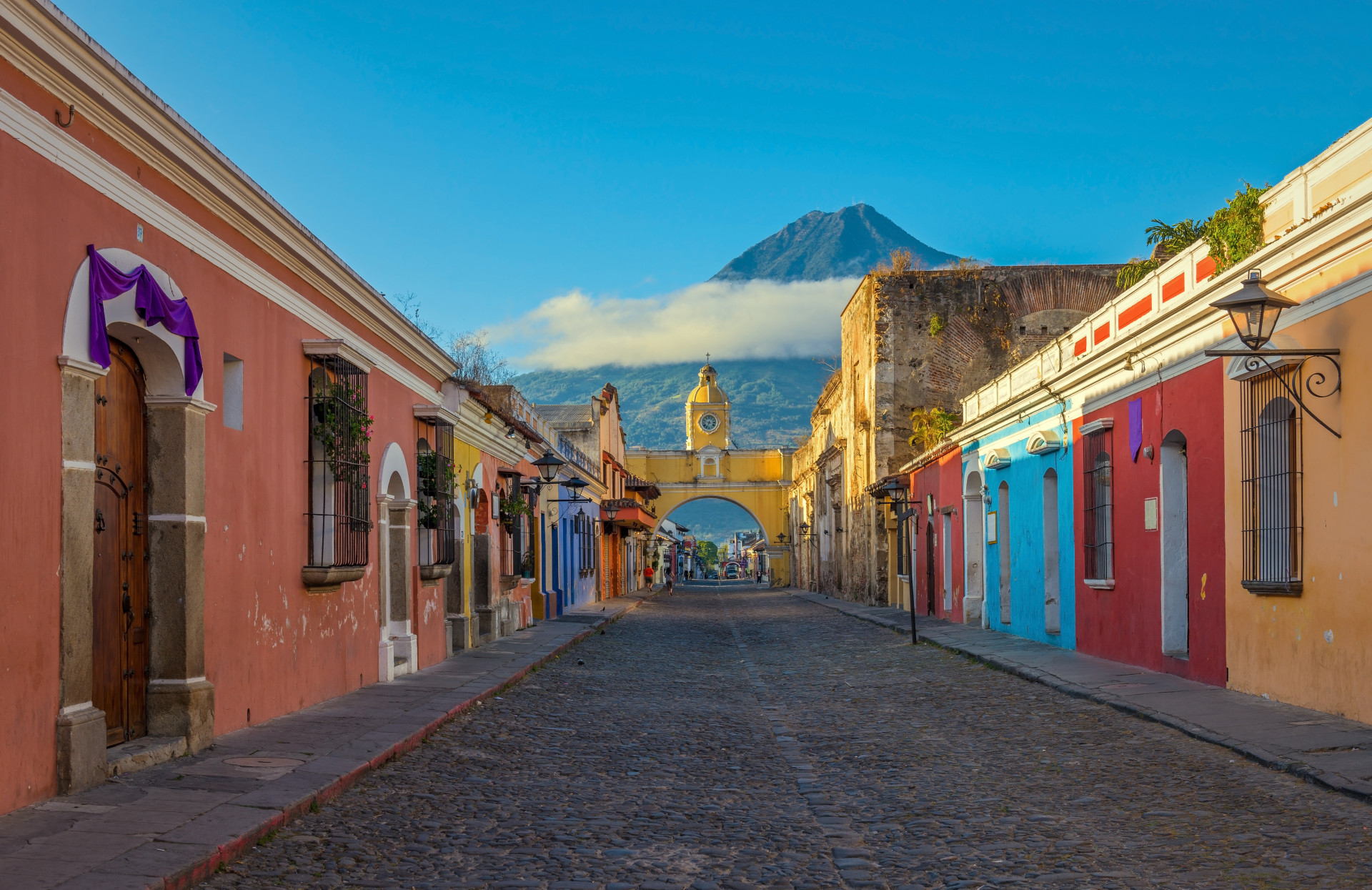
Antigua (Guatemala)
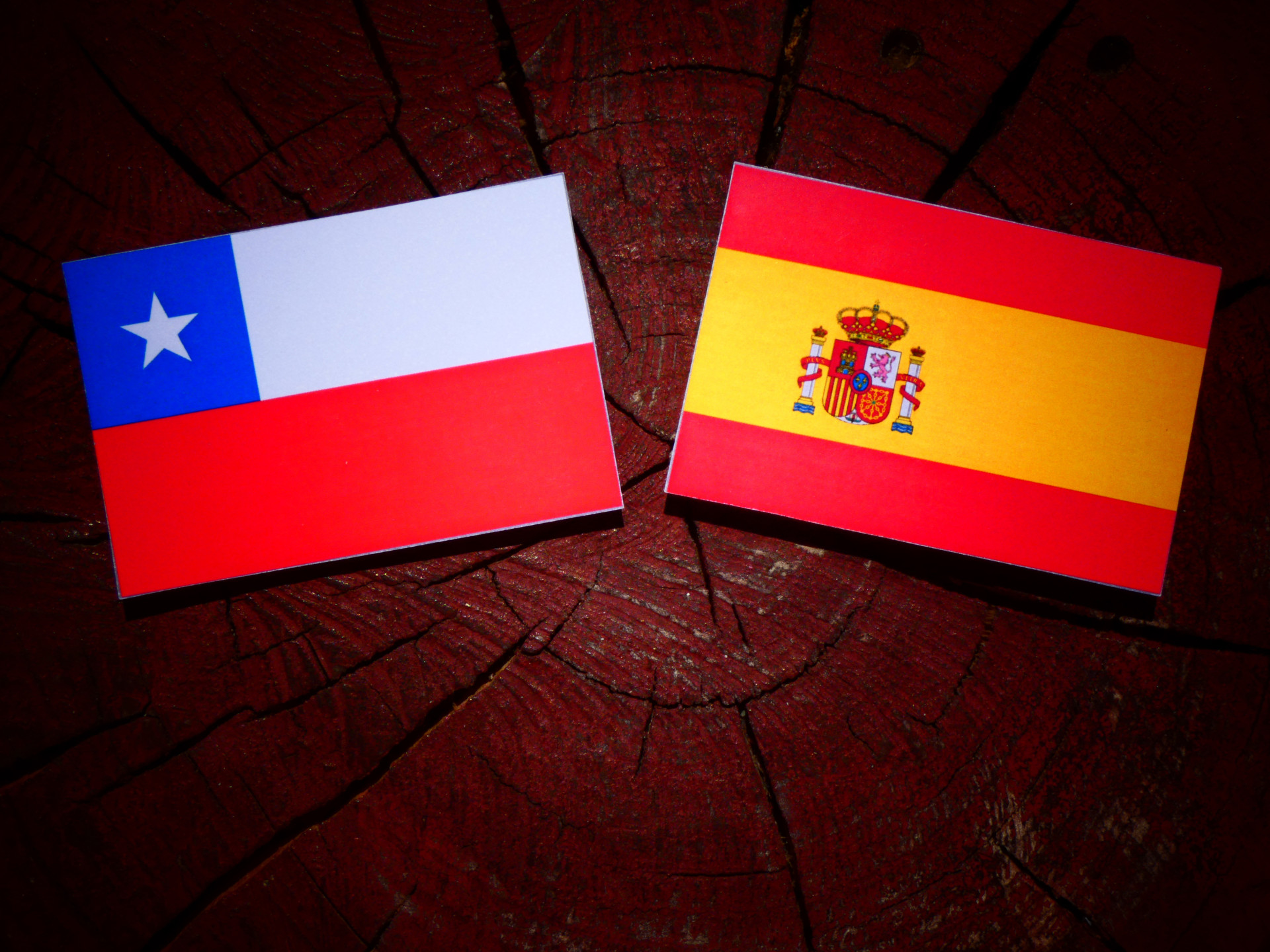
Santiago (Chile) x Santiago de Compostela (Spain)
You may also like: Bizarre celebrity rumors we believed in the '90s
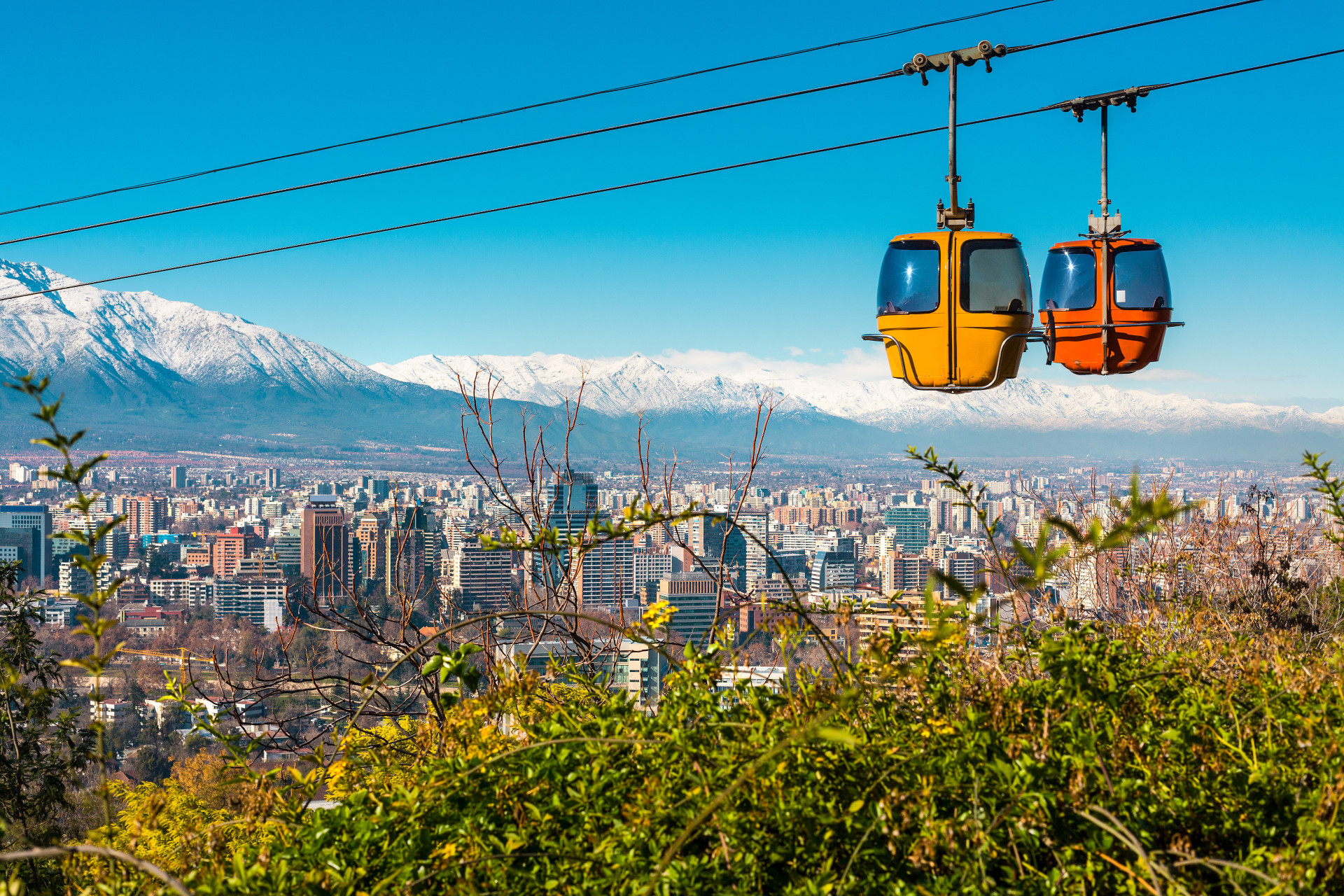
Santiago (Chile)
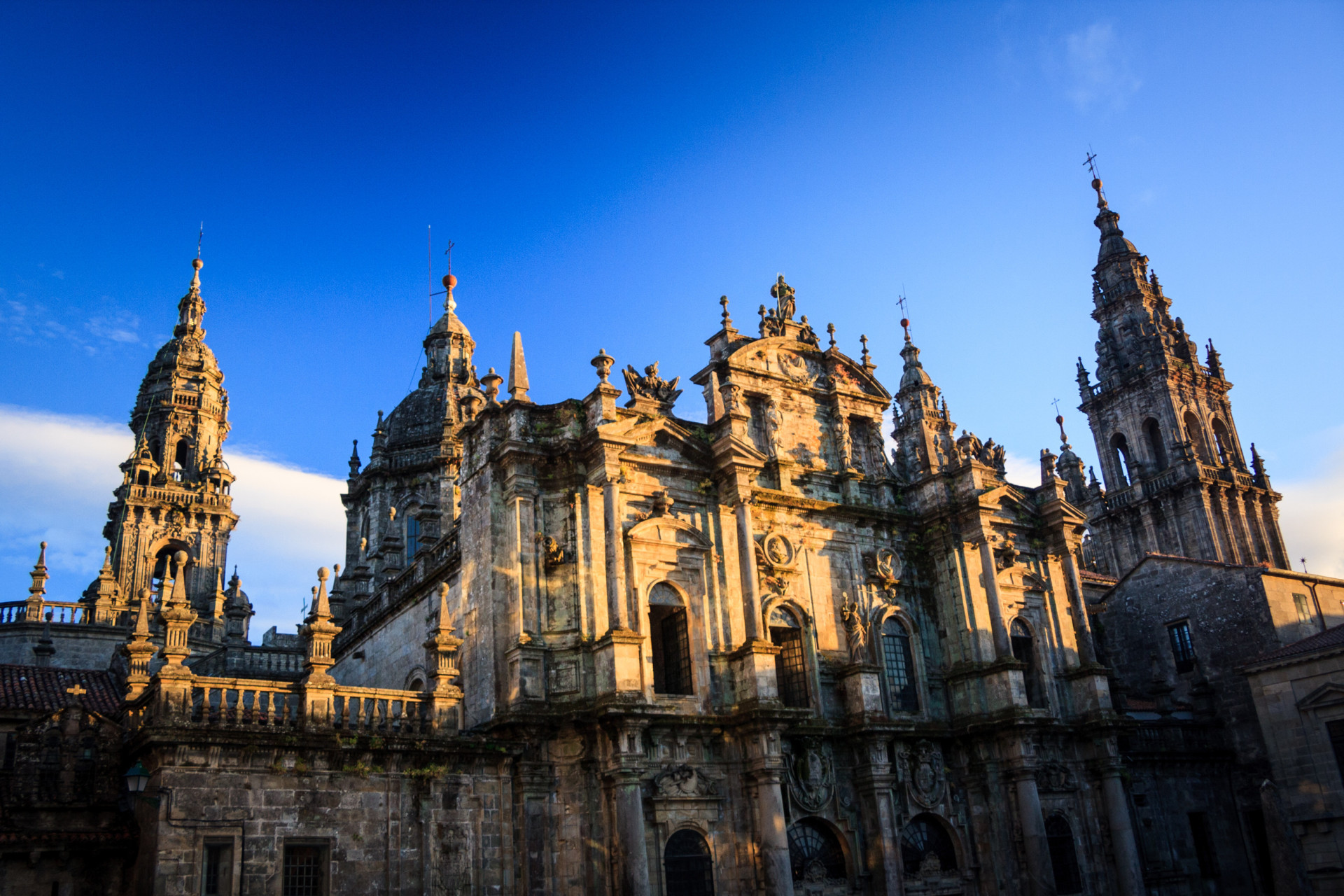
Santiago de Compostela (Spain)
You may also like: Alcoholism: Do you know the signs?

St. Petersburg (Russia) x St. Petersburg (United States)
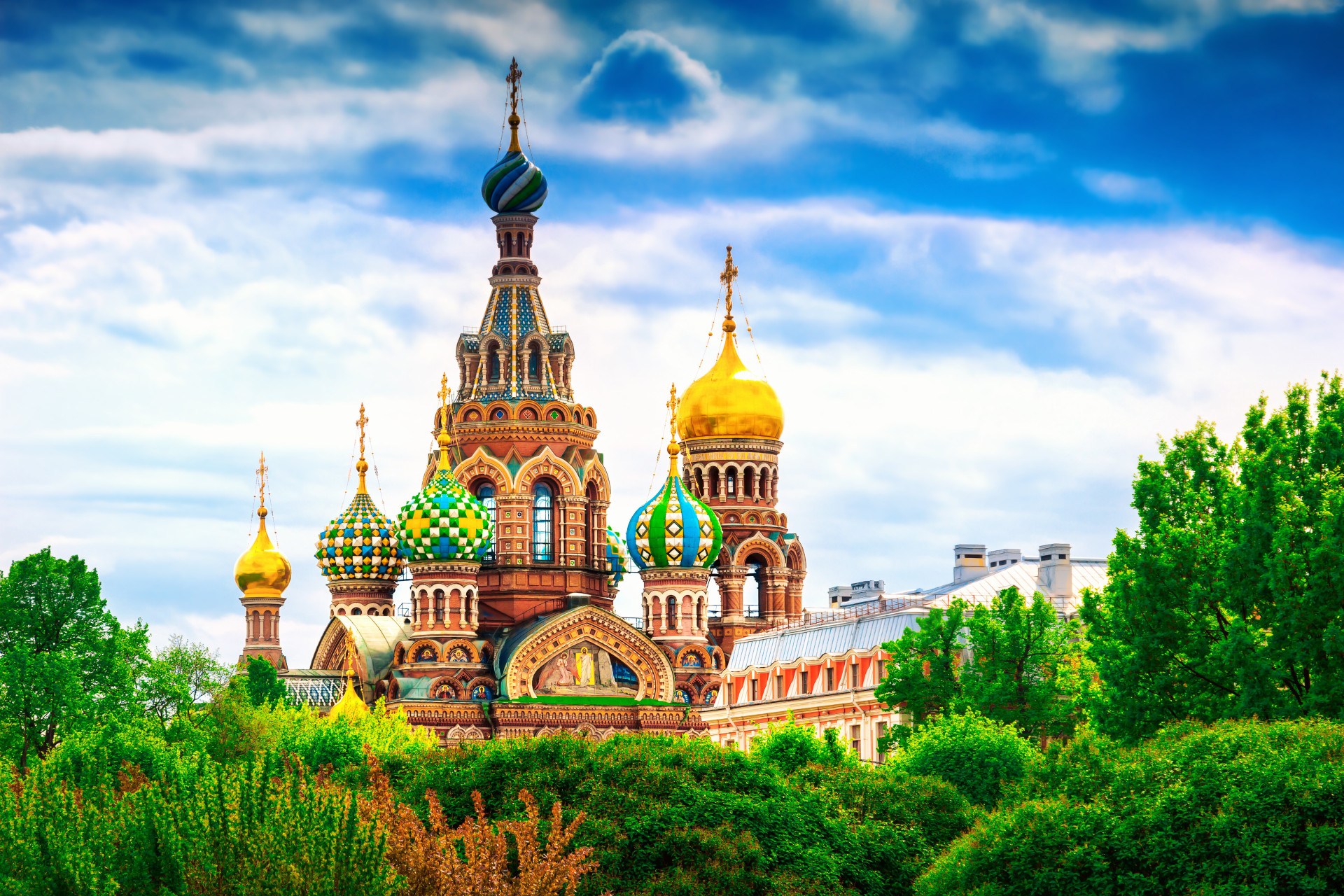
St. Petersburg (Russia)
You may also like: The most beautiful women of the ‘70s

St. Petersburg (United States)
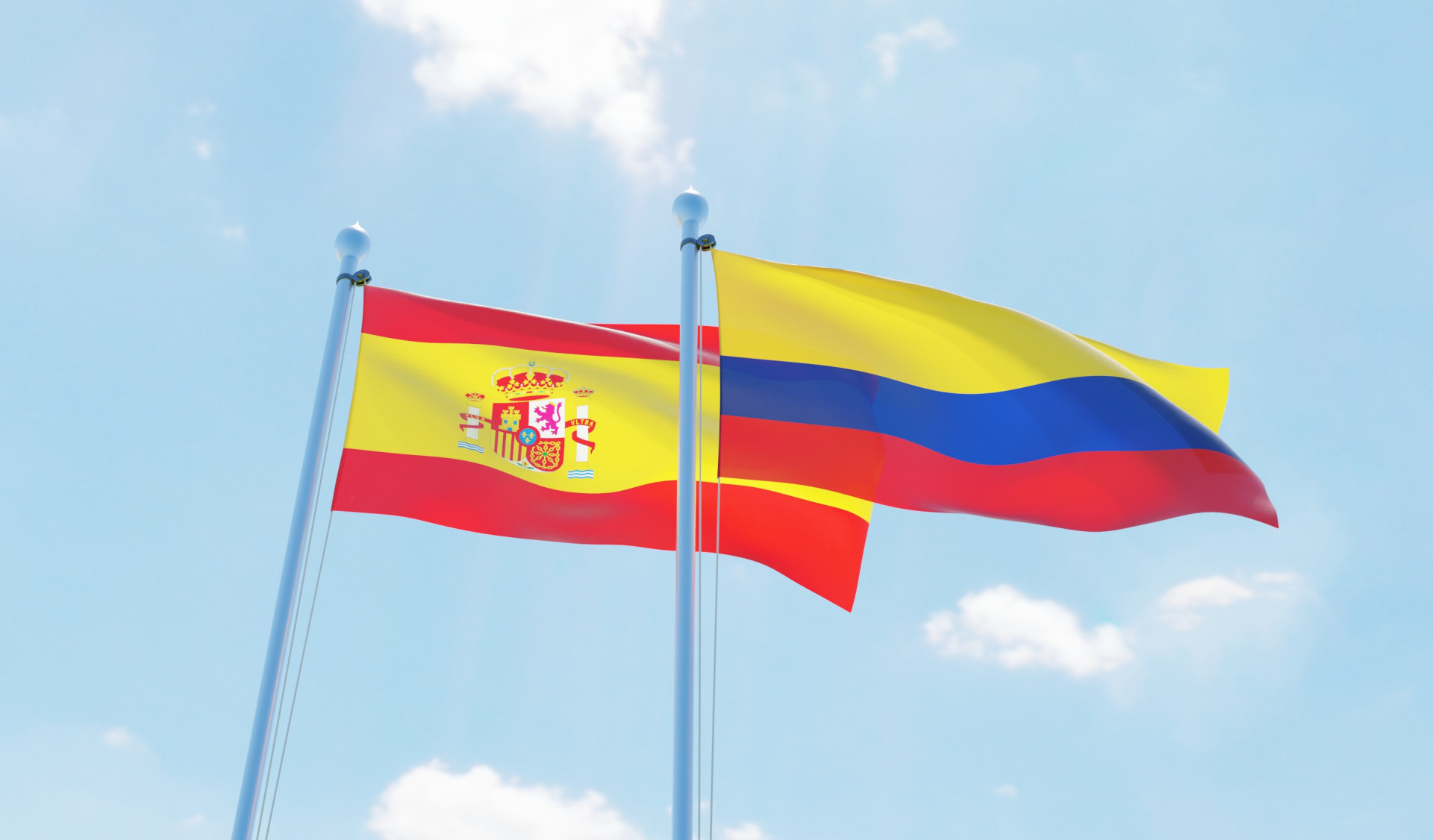
Cartagena (Colombia) x Cartagena (Spain)
You may also like: The dark history of sin-eaters
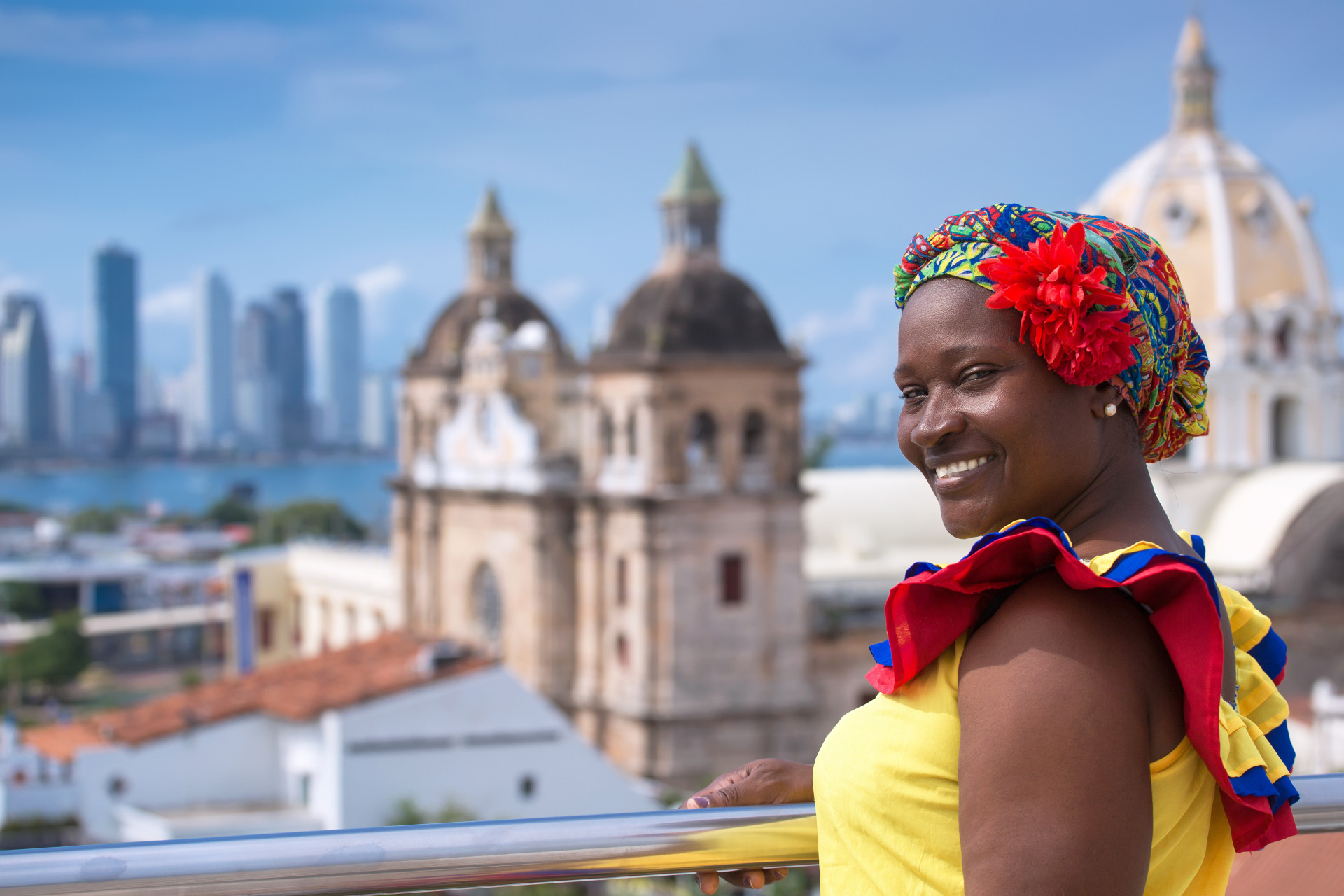
Cartagena (Colombia)
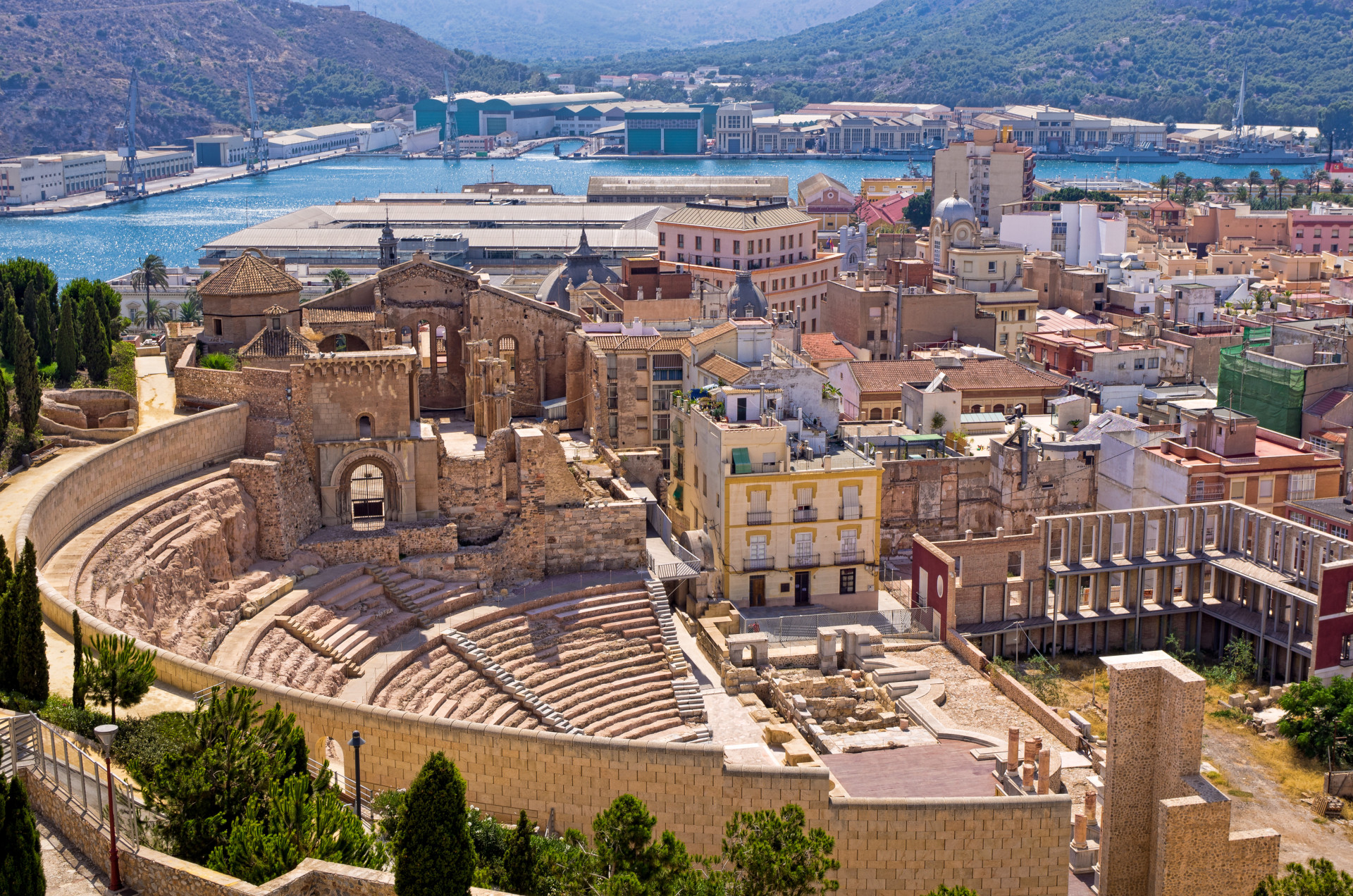
Cartagena (Spain)
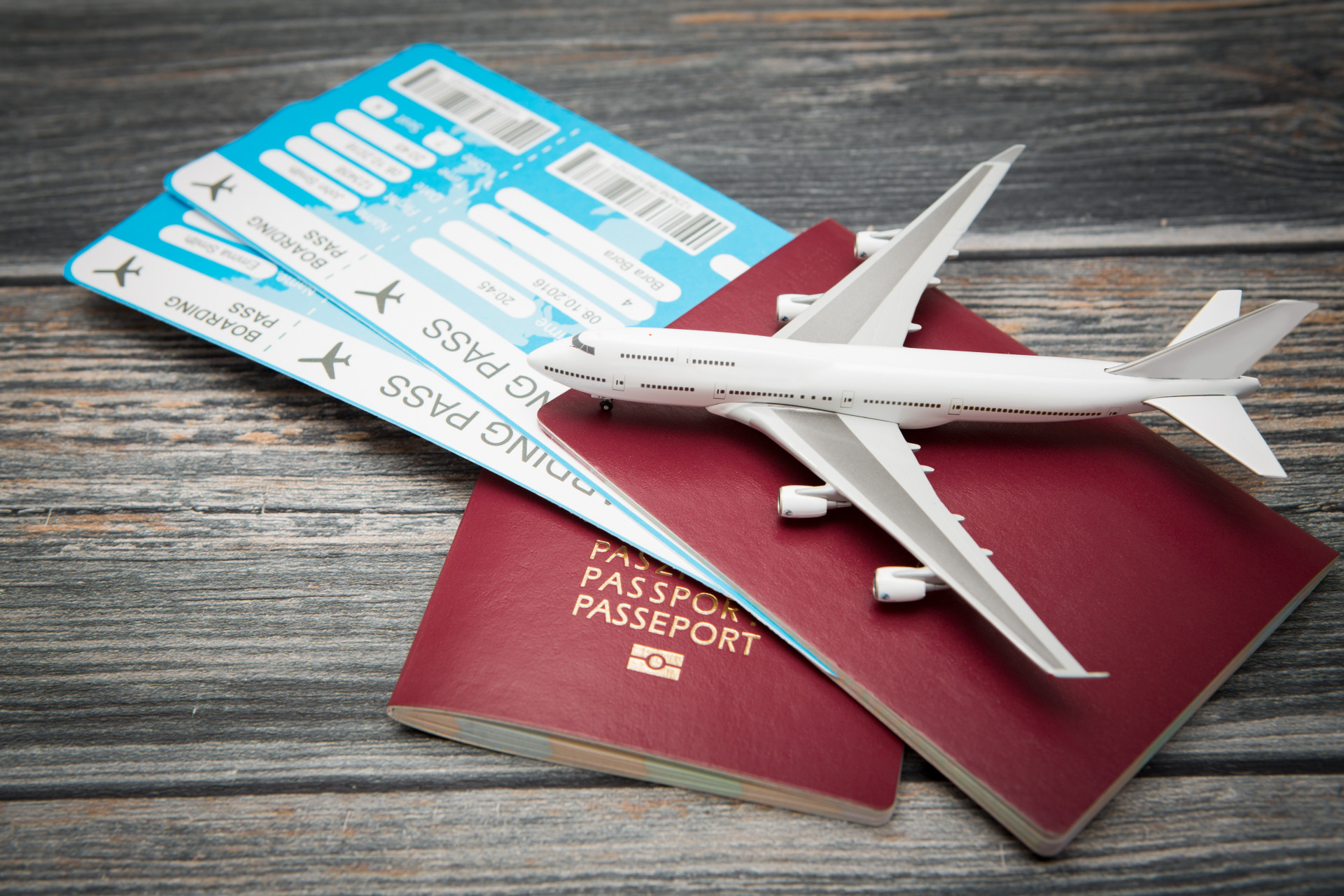
Which one if your favorite?
More for you.
May 2024 releases on Netflix, Prime, Disney+ and HBO
Countries that still have the death penalty
The top 10 'best states' in the US revealed
Incredible lesser-known facts about World War II
Fahadh Faasil hails Ranbir Kapoor as India's 'best actor'
Ukrainian Olympic hero killed in action fighting Putin’s invasion force
See how much the homes of your favorite TV shows would cost in real life
Non hip-hop diss tracks, from The Beatles to Foo Fighters and Taylor Swift
Baffling images of NEOM project The Line look like optical illusions
Two-Meter missile found buried in Kuwait (Photo)
The most unpopular presidents in modern history
Qatar and UAE Rank Among World's Top 10 Richest Countries!
Non-binary models killing it on the catwalk
30 of the best ways to improve your mental health
In Pictures: Brazil suffers from catastrophic floods
These self-sufficient bio-homes cost nothing to run
Cybertruck has to be towed after stuck in sand on Nantucket Island
Video: Saudi Arabia unveils Middle East's largest water park
Who were the most iconic actors of the 70s?
King Charles' life in pictures

IMAGES
VIDEO
COMMENTS
La Paz's cable car system, Mi Teleferico, offers stunning views of the city's dramatic setting. See ways to experience (20) 2. WMDR Yungas Road. 2,000. Scenic Drives. The most exiting ride on the WMDR with the best bikes, best equipment and best safety standards and records for a fun and wonderful adventure.
Top Things to Do in La Paz, Bolivia. Places to Visit in La Paz. Explore popular experiences. See what other travellers like to do, based on ratings and number of bookings. See All. Half-day Tours (37) Day Trips (71) Parks (9) Nature and Wildlife Tours (68) Trolley Tours (33)
Table of Contents. Awesome Things to Do in La Paz, Bolivia. 1) Window Shop at El Mercado de las Brujas (Witches Market) 2) Hike Through the Valley of the Moon. 3) Take a Walk Down Calle Jaen. 4) Enjoy Spectacular Views from the Mi Teleferico (Cable Cars) 5) Visit the Mysterious Ruins at Tiwanaku.
La Paz is fast becoming a must-visit destination on the South American gringo trail, partly due to its convenient location between many of Bolivia and Peru's greatest sites. But this bustling metropolis at a breathtaking 11,600 feet (3,600 meters) above sea level has plenty of worthwhile attractions of its own.
The festivities here are amazing to see in person. 25. Dine and people-watch in Sopocachi. Sopocachi in La Paz, Bolivia. Sopocachi is probably the trendiest neighborhood in La Paz, known for its student population, art scene, large buildings, trendy cafes, and of course, incredible eateries.
La Paz Bolivia. Perched high in the Andes Mountains, La Paz is perhaps best known as the world's highest capital city at 11,975 ft (3,650 m). Thoroughly off the beaten path and under the radar, La Paz isn't widely known for much else, though this isn't for lack of unique things to do in La Paz and destinations to visit around the city.
This is the best free way to see La Paz from the top without paying tourist prices; all it costs is a local bus ticket (in this case, a cable car ticket)! Day Trips From La Paz, Bolivia. La Paz is a beautiful and bustling city in the Andes Mountains of Bolivia. The Andes Mountains is a place in the world where adventure and relaxation collide.
4. Go rock climbing. If you enjoy rock climbing, La Paz has hundreds of outdoor sport and traditional climbing routes right in the city. Near the Amor de Dios and Aranjuez neighborhoods in the Zona Sur, on either side of the Avenida Hernan Siles Zuazo, there are tons of walking trails and climbing routes.
Iglesia San Miguel Arcángel. La Paz. The small plaza in front of this modern mountain-shaped church is a main meeting point for residents of the Zona Sur. Discover the best attractions in La Paz including Mercado de las Brujas, Museo Nacional del Arte, and Museo de Textiles Andinos Bolivianos.
12 Things to do in La Paz Bolivia. 1. Whizz around on the La Paz cable cars. One of the first things I noticed when walking around La Paz was the colorful cable cars flying over my head. Mi Teleférico consists of 10 cable car lines stopping at 31 stations and covering over 30 kilometers (18.6) miles.
Updated February 2024, La Paz, Bolivia Travel Guide + 12 Things To Do In La Paz was originally published in June 2020. On my first trip to South America, we chatted with countless other backpackers as my best friend and I made our way across Bolivia, Peru, and then later after she left, Ecuador for me. The vast majority of these people had ...
The distance between El Alto Airport and the centre of La Paz is around 20 kilometres with an estimated travel time of around 30 minutes. Be aware that during peak hours busses fill up fast, so factor in plenty of time in order to secure a seat.The price of a taxi to and from El Alto airport is Bs 70 ($10 US).
Table of Contents. The best things to do in La Paz Bolivia. 1. Explore the Witches' Market for local crafts. 2. Visit the colonial Jaén Street. 3. Tour the San Francisco Church. 4.
La Paz. A mad carnival of jostling pedestrians, honking, diesel-spewing minivans, street marches, and cavalcades of vendors, La Paz surrounds you: you'll love it, you'll hate it, but you can't ignore it. The city seems to reinvent itself at every turn - a jaw-dropping subway in the sky brings you from the heights of El Alto to the depths of ...
Death Road is more than a cycling route. It's a journey through La Paz's varied terrains, a must for those seeking to experience the city's adventurous side and natural splendor. Conquer the World's Most Dangerous Road: Embark on an adrenaline-pumping journey along Bolivia's Death Road. 3. Mercado de las Brujas.
things to do in la paz. / Take Mi Teleferico Up High. / Explore El Alto. / Get Lost in the Food Market. / Watch the Cholitas Wrestle. / Join a Walking Tour. / Release Your Inner Street Photographer. / Use It As a Base to Explore Bolivia. / Discover the Witches Market.
As Bolivia's largest city there is a wealth of things to do in La Paz: great museums, stunning views of the mountains and the opportun. Touropia Travel. ... Dubbed the "World's Most Dangerous Road" Yungas Road runs from La Paz to Bolivia's Amazon rainforest region in the north of the country. From La Paz, the road climbs around 4,500 ...
3. Visit the Catedral Basílica Nuestra Señora de La Paz. The star of La Paz, this elegant cathedral sits proudly on the main plaza offering a glimpse into the religion of many Bolivians. Started in 1835, the building is Neoclassical in style with a nod to the Baroque, and took a whopping 90 years to complete.
Mini Travel Guide to La Paz. Where to Stay in La Paz? When it comes to places to stay in La Paz on a budget, I highly recommend the Hostel 3600. Set in a heritage building in a safe part of the town, there's a guest kitchen here, a lovely light and airy communal space and super helpful staff. The free breakfast and super wifi add to the sweet ...
In just 4 days, you will visit the de facto capital La Paz, a day tour to Lake Titicaca with the beautiful Copacabana town. A short flight to Uyuni will allow you to explore the wonders of salt processing before heading back to La Paz. view trip ⤍. 16 days / from5050 USD. Andean Triangle - Chile, Bolivia and Argentina.
2. La Paz. Best place for cultural encounters. Built into a natural hollow framed by the Cordillera Real mountains, La Paz stands at a dizzying 3600m (11,811ft) above sea level, so don't overdo things in the first couple of days. At first look, this majestic city can - quite literally - take your breath away.
Get the inside scoop on what to know before visiting Bolivia's lofty capital of La Paz. Culture Trip Spring Sale: Save up to $1,100 on our unique small-group trips! Limited spots. Book now. ... See & Do Climbing Around La Paz, Bolivia: the Best Mountains To Summit. Culture Trip Spring Sale Save up to $1,100 on our unique small-group trips! ...
La Paz (Bolivia) x La Paz (Mexico) The Spanish language is not the only thing these two countries have in common: both have a city with the same name: La Paz. Istock